randomized controlled trial
description: experimental method designed to reduce bias, typically accomplished by randomly allocating subjects to two or more groups, with one being a control group
249 results
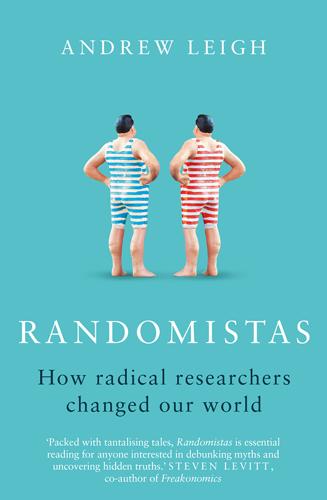
Randomistas: How Radical Researchers Changed Our World
by
Andrew Leigh
Published 14 Sep 2018
Comparing conventional and computer-assisted total knee arthroplasty’, The Journal of Arthroplasty, vol. 24, no. 4, 2009, pp. 560–9; Nathaniel F.R. Huang, Michelle M. Dowsey, Eric Ee, et al., ‘Coronal alignment correlates with outcome after total knee arthroplasty: Five-year follow-up of a randomized controlled trial’, The Journal of Arthroplasty, vol. 27, no. 9, 2012, pp. 1737–41. 2Sina Babazadeh, Michelle M. Dowsey, James D. Stoney & Peter F.M. Choong, ‘Gap balancing sacrifices joint-line maintenance to improve gap symmetry: A randomized controlled trial comparing gap balancing and measured resection’, The Journal of Arthroplasty, vol. 29, no. 5, 2014, pp. 950–4; Michael J. Barrington, David J. Olive, Craig A. McCutcheon, et al., ‘Stimulating catheters for continuous femoral nerve blockade after total knee arthroplasty: A randomized, controlled, double-blinded trial’, Anesthesia and Analgesia, vol. 106, no. 4, 2008, pp. 1316–21. 3J.
…
Bair-Merritt, Jacky M. Jennings, Rusan Chen, et al., ‘Reducing maternal intimate partner violence after the birth of a child: A randomized controlled trial of the Hawaii Healthy Start Home Visitation Program’, Archives of Pediatrics & Adolescent Medicine, vol. 164, no. 1, 2010, pp. 16–23; Jamila Mejdoubi, Silvia CCM van den Heijkant, Frank J.M. van Leerdam, et al., ‘Effect of nurse home visits vs. usual care on reducing intimate partner violence in young high-risk pregnant women: a randomized controlled trial,’ PloS one, vol. 8, no. 10, 2013, e78185. I am grateful to Cathryn Stephens for bringing this research to my attention. 20See the comparison of randomised and quasi-experimental results on page 1441 of Monica A.
…
Braga, ‘Hot spots policing and crime prevention: A systematic review of randomized controlled trials’, Journal of Experimental Criminology, vol. 1, no. 3, 2005, pp. 317–42. 30David L. Weisburd & Lorraine Green, ‘Policing drug hot spots: The Jersey City drug market analysis experiment’, Justice Quarterly, vol. 12, 1995. pp. 711–35. 31The study reports a reduction of fifty-three violent crimes over a three-month period, which translates to over 200 crimes per year. Jerry H. Ratcliffe, Travis Taniguchi, Elizabeth R. Groff & Jennifer D. Wood, ‘The Philadelphia foot patrol experiment: A randomized controlled trial of police patrol effectiveness in violent crime hotspots’, Criminology, vol. 49, no. 3, 2011, pp. 795–831.
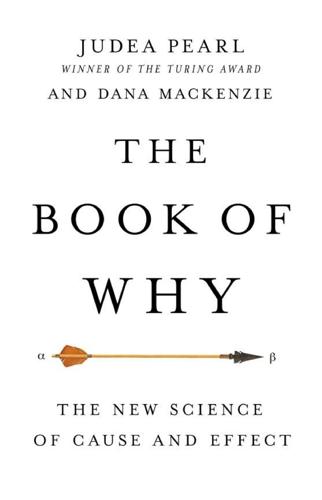
The Book of Why: The New Science of Cause and Effect
by
Judea Pearl
and
Dana Mackenzie
Published 1 Mar 2018
This too stands contrary to the message of this chapter: if you have identified a sufficient set of deconfounders in your diagram, gathered data on them, and properly adjusted for them, then you have every right to say that you have computed the causal effect X Y (provided, of course, that you can defend your causal diagram on scientific grounds). The textbook approach of statisticians to confounding is quite different and rests on an idea most effectively advocated by R. A. Fisher: the randomized controlled trial (RCT). Fisher was exactly right, but not for exactly the right reasons. The randomized controlled trial is indeed a wonderful invention—but until recently the generations of statisticians who followed Fisher could not prove that what they got from the RCT was indeed what they sought to obtain. They did not have a language to write down what they were looking for—namely, the causal effect of X on Y.
…
Of course, statisticians already knew of one excellent way to establish causation in a more general sense: the randomized controlled trial (RCT). But such a study would be neither feasible nor ethical in the case of smoking. How could you assign people chosen at random to smoke for decades, possibly ruining their health, just to see if they would get lung cancer after thirty years? It’s impossible to imagine anyone outside North Korea “volunteering” for such a study. Without a randomized controlled trial, there was no way to convince skeptics like Yerushalmy and R. A. Fisher, who were committed to the idea that the observed association between smoking and lung cancer was spurious.
…
In 1948, Doll and Austin Bradford Hill teamed up to see if they could learn anything about the causes of the cancer epidemic. Hill had been the chief statistician on a highly successful randomized controlled trial, published earlier that year, which had proved that streptomycin—one of the first antibiotics—was effective against tuberculosis. The study, a landmark in medical history, not only introduced doctors to “wonder drugs” but also cemented the reputation of randomized controlled trials, which soon became the standard for clinical research in epidemiology. Of course Hill knew that an RCT was impossible in this case, but he had learned the advantages of comparing a treatment group to a control group.
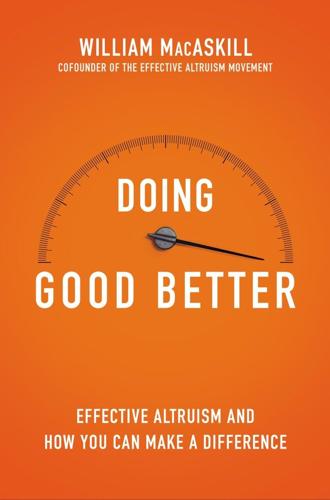
Doing Good Better: How Effective Altruism Can Help You Make a Difference
by
William MacAskill
Published 27 Jul 2015
ICS had received new funding, and Paul Lipeyah was about to roll out the program to seven new schools. Kremer urged Lipeyah to test his program using what’s called a randomized controlled trial: he would monitor and collect data for fourteen local schools, implementing the program in seven of them, while letting the other seven go about business as usual. By collecting data from all fourteen schools to see which fared better, he could find out if his program actually worked. In hindsight, Kremer’s idea seems obvious. Randomized controlled trials are the gold-standard method of testing ideas in other sciences, and for decades pharmaceutical companies have used them to test new drugs.
…
Randomized controlled trials are the gold-standard method of testing ideas in other sciences, and for decades pharmaceutical companies have used them to test new drugs. In fact, because it’s so important not to sell people ineffective or harmful drugs, it’s illegal to market a drug that hasn’t gone through extensive randomized controlled trials. But before Kremer suggested it, the idea had never been applied to the development world. With the help of collaborators, Kremer tested the different ICS programs one by one. First, he looked at the efficacy of providing schools with additional textbooks. Classrooms would often have only one textbook for a class of thirty, so it seemed obvious that providing more textbooks would help students learn.
…
Robustness of evidence is very important for the simple reason that many programs don’t work, and it’s hard to distinguish the programs that don’t work from the programs that do. If we’d assessed Scared Straight by looking just at before-and-after delinquency rates for individuals who went through the program, we would have concluded it was a great program. Only after looking at randomized controlled trials could we tell that correlation did not indicate causation in this case and that Scared Straight programs were actually doing more harm than good. One of the most damning examples of low-quality evidence concerns microcredit (that is, lending small amounts of money to the very poor, a form of microfinance most famously associated with Muhammad Yunus and the Grameen Bank).
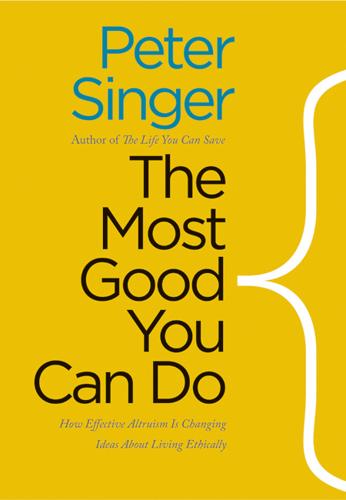
The Most Good You Can Do: How Effective Altruism Is Changing Ideas About Living Ethically
by
Peter Singer
Published 1 Jan 2015
Around the time I was reading about Kravinsky I became aware of the work of Abhijit Banerjee and Esther Duflo, professors of economics at MIT, who founded the Poverty Action Lab to carry out “social experiments”—by which they meant empirical research to discover which interventions against poverty work and which do not. Without such evidence, Duflo points out, we are fighting poverty the way medieval doctors fought illness by applying leeches.3 Banerjee and Duflo pioneered the application of randomized controlled trials, the golden standard of the pharmaceutical industry, to specific aid projects. By 2010 researchers associated with the Poverty Action Lab—now known as the Abdul Latif Jameel Poverty Action Lab, or J-PAL—had carried out 240 experiments in 40 countries. Dean Karlan, once a student of Banerjee and Duflo and now himself a professor of economics at Yale, started Innovations for Poverty Action, a nonprofit organization to bridge the gap between academic research and the practical side of development.
…
Faye, Niehaus, Shapiro, and Wanchoo have tried to run it like the nonprofit they had wanted to give to in their graduate school days. GiveDirectly is clear and specific about what it does with money and conducts rigorous, transparent research to document the impacts of its transfers. The founders worked with independent researchers to conduct a randomized controlled trial and preannounced the study in order to tie their hands and make sure they couldn’t hide any failures. Their vision for the future is to establish cash transfers as the benchmark that donors use to evaluate whether other, more traditional approaches are worth what they cost.8 I first met Henry Spira in 1974, when he attended an adult education course on animal liberation that I taught at New York University.
…
In 2013 GiveWell recommended only three charities, two of which specialize in treating parasitic worm infections that cause children to develop anemia and slow their progress in school, while the third is GiveDirectly, which, as we saw in chapter 5, was founded to give cash grants directly to very poor people. These interventions have been evaluated by randomized controlled trials, the same means that pharmaceutical companies use to test new drugs. Before the intervention, a pool of potential recipients is identified and baseline measurements of their health or well-being are taken. Usually the recipients will be individuals, but in some cases they will be entire villages.
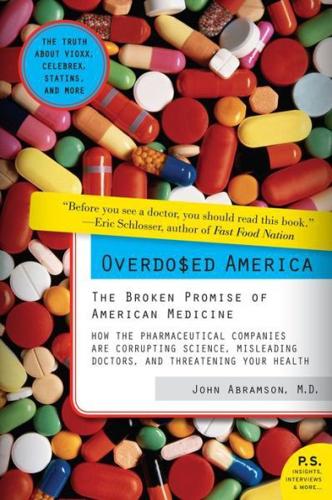
Overdosed America: The Broken Promise of American Medicine
by
John Abramson
Published 20 Sep 2004
In 1990, Wyeth-Ayerst had requested that the FDA approve Premarin for the prevention of heart disease in postmenopausal women, notwithstanding the lack of evidence from randomized controlled trials documenting such a benefit. Cynthia Pearson, of the nonprofit, independent National Women’s Health Network, pointed out in an FDA hearing that the evidence supporting this claim was weak: “You couldn’t approve a drug for healthy men without a randomized clinical trial. Even aspirin [to prevent heart disease] had to have a randomized controlled trial with healthy men.” Ms. Pearson’s argument—that the standard for the gander ought to apply to the goose—prevailed. The FDA ruled that a randomized controlled trial was necessary to justify the claim that HRT decreased a woman’s risk of heart disease.
…
Perhaps the strongest evidence supporting routine HRT was presented in a 1997 article published in NEJM showing that “mortality among women who use postmenopausal hormones is lower than among nonusers,” again overriding continuing concerns about the link to breast cancer. HOW DID SO MANY PEOPLE GET IT SO WRONG? It helps to take a step back and look at the methods used in medical research. The two most common types of medical studies are randomized controlled trials (RCTs) and observational studies. A simple example demonstrates how these types of studies differ and illustrates the inherent strengths and weaknesses of each. Imagine that researchers want to study the impact that running a 10-kilometer road race has on women’s health over a one-year period.
…
But perhaps when the researchers designed the questionnaire, they weren’t smart enough to include a question that identified this belief, which could be the real reason why the runners were healthier one year after the race. Without being aware of this difference between the groups, the researchers might incorrectly attribute the runners’ better health to their having participated in the race. The other way to do this study is a randomized controlled trial, the gold standard of medical research. This study design provides a much more precise way to identify the factors that contribute to a particular outcome. Continuing with the example of the 10K race, researchers would find 200 women who agreed to participate in a study about the health effects of running such a race.
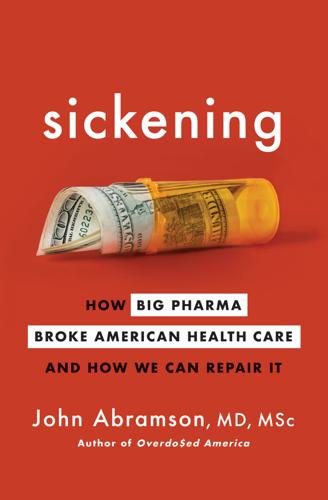
Sickening: How Big Pharma Broke American Health Care and How We Can Repair It
by
John Abramson
Published 15 Dec 2022
Pfizer’s Pande study (named after the lead researcher) tested the effectiveness of the drug for severe bipolar disease in a double-blind randomized controlled trial (RCT). The study enrolled 117 manic patients already receiving but not responding adequately to drug therapy. Dr. David Kessler, FDA commissioner from 1990 through 1997 and former cochair of President Biden’s coronavirus task force, testified before I did. He explained to the jury that in a randomized controlled trial patients were randomly assigned to one of two study groups, one of which would receive the active treatment, in this case Neurontin, and the other a placebo.
…
evidence of the superiority: “21154 Nexium Medical Review Part I,” New Drug Application 21-153/21-154, submitted to the Federal Drug Administration February 28, 2000, 5–6, https://www.accessdata.fda.gov/drugsatfda_docs/nda/2001/21154_Nexium_medr_P1.pdf. published in 2000 and 2001: P. J. Kahrilas et al., “Esomeprazole Improves Healing and Symptom Resolution as Compared with Omeprazole in Reflux Oesophagitis Patients: A Randomized Controlled Trial,” Alimentary Pharmacology and Therapeutics 14, no. 10 (2000): 1249–58; J. E. Richter et al., “Efficacy and Safety of Esomeprazole Compared with Omeprazole in GERD Patients with Erosive Esophagitis: A Randomized Controlled Trial,” American Journal of Gastroenterology 96, no. 3 (2001): 656–65. until 2004 and 2006: D. Armstrong et al., “The Role of Acid Suppression in Patients with Endoscopy-Negative Reflux Disease: The Effect of Treatment with Esomeprazole or Omeprazole,” Alimentary Pharmacology and Therapeutics 20, no. 4 (2004): 413–21; Colleen Schmitt et al., “A Multicenter, Randomized, Double-Blind, 8-Week Comparative Trial of Standard Doses of Esomeprazole (40 mg) and Omeprazole (20 mg) for the Treatment of Erosive Esophagitis,” Digestive Diseases and Sciences 51, no. 5 (2006): 844–50; Charles J.
…
Gorson faxed to Pfizer in 1997 presented a far less enthusiastic conclusion: “[Neurontin] is probably no more effective than placebo in the treatment of painful diabetic neuropathy.” My task was to explain how this discouraging but scientifically accurate statement from the lead researcher had morphed into the Pfizer-friendly “Neurontin may be effective.” Again, it wasn’t complicated. This time, I needed to carefully explain the meaning of controlled in the term randomized controlled trial. The purpose of an RCT is not to see whether people treated with the study drug (Neurontin, in this case) are better at the end of the study than at the beginning; that would be an uncontrolled study (like the Young study described above). The purpose of an RCT is to see if those treated with the study drug experience significantly more improvement than those in the group treated with placebo.
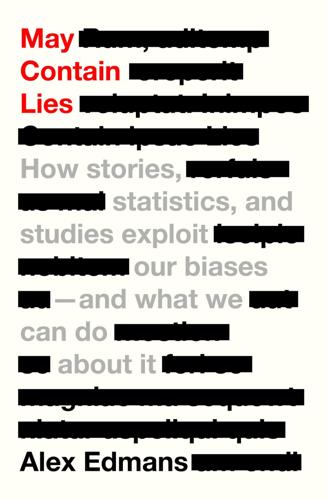
May Contain Lies: How Stories, Statistics, and Studies Exploit Our Biases—And What We Can Do About It
by
Alex Edmans
Published 13 May 2024
The pair who were randomly assigned the citrus fruits recovered so quickly that one returned to active duty and the second was able to look after the other patients. Lind’s finding was the first evidence that citrus fruits cured scurvy, a discovery that ended up saving millions of lives. More broadly, it’s the first documented example of a randomized control trial (RCT). The studies we’ve encountered in Part II so far have been observational studies, where you observe what people or companies do, based on existing data, and try to make inferences – but you’re always plagued by common causes. The solution is an intervention study. Rather than seeing what people do, you tell them what to do, randomizing who gets what.
…
The researchers found that the applicants with Caucasian names needed to send 10 résumés to get one callback but those with African American names required 15 – a statistically significant gap of 50%. To put this into context, changing from an African American to a Caucasian name yields as many additional callbacks as eight extra years of work experience. Because Marianne and Sendhil used a randomized control trial, their study was powerful evidence of discrimination. The fewer callbacks to African Americans couldn’t be explained by differences in ability, because the researchers held ability constant and changed only the name. This randomization allowed them to demonstrate not an innocent correlation, but a harrowing causation.
…
The difference in New Jersey’s employment was +1; in Pennsylvania it was –2. The difference-in-differences (the rate at which jobs in New Jersey rose faster than in Pennsylvania) is 1 – (–2) = 3. David and Alan’s methods might ring a bell. New Jersey fast-food stores are like the test group in a randomized control trial (that experienced a wage increase); their Pennsylvania peers are the control group (that did not). Indeed, the researchers did a second analysis that even more closely reflects RCTs. They focused just on New Jersey stores and selected those paying $4.25/hour before April 1992 – the ones affected by the wage hike – as their test group.
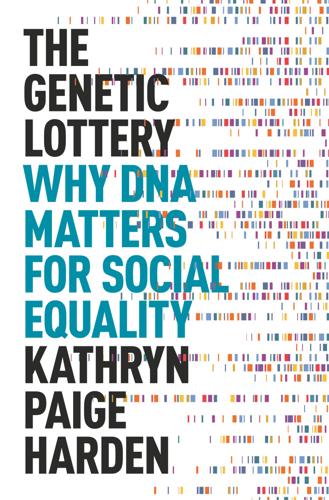
The Genetic Lottery: Why DNA Matters for Social Equality
by
Kathryn Paige Harden
Published 20 Sep 2021
However, the ATE is not the only quantity that researchers might be interested in estimating. For example, they might be specifically interested in heterogeneity in treatment response. For further discussion, see Angus Deaton and Nancy Cartwright, “Understanding and Misunderstanding Randomized Controlled Trials,” Social Science & Medicine 210, special issue: Randomized Controlled Trials and Evidence-based Policy: A Multidisciplinary Dialogue (August 2018): 2–21, https://doi.org/10.1016/j.socscimed.2017.12.005. 14. Kevin Hartnett, “To Build Truly Intelligent Machines, Teach Them Cause and Effect,” Quanta Magazine, May 15, 2018, https://www.quantamagazine.org/to-build-truly-intelligent-machines-teach-them-cause-and-effect-20180515/. 15.
…
John March et al., “Fluoxetine, Cognitive-Behavioral Therapy, and Their Combination for Adolescents with Depression: Treatment for Adolescents With Depression Study (TADS) Randomized Controlled Trial,” JAMA 292, no. 7 (August 1, 2004): 807–20, https://doi.org/10.1001/jama.292.7.807. 17. Robert Ross et al., “Reduction in Obesity and Related Comorbid Conditions after Diet-Induced Weight Loss or Exercise-Induced Weight Loss in Men: A Randomized Controlled Trial,” Annals of Internal Medicine 133, no. 2 (July 18, 2000): 92–103, https://doi.org/10.7326/0003-4819-133-2-200007180-00008. 18. MRC Vitamin Research Study Group1, “Prevention of Neural Tube Defects: Results of the Medical Research Council Vitamin Study,” The Lancet 338, no. 8760 (July 20, 1991): 131–37, https://doi.org/10.1016/0140-6736(91)90133-A. 19.
…
So, too, is it insufficient merely to test the average treatment effect of a set of genetic variants on an outcome using nature’s randomization. There is empirical, theoretical, and conceptual work to be done to make the results of that causal inference scientifically and practically useful. Deaton and Cartwright, “Understanding and Misunderstanding Randomized Controlled Trials,” Social Science & Medicine 210, special issue: Randomized Controlled Trials and Evidence-based Policy: A Multidisciplinary Dialogue (August 2018): 2–21, https://doi.org/10.1016/j.socscimed.2017.12.005. 10. James J. Lee et al., “Gene Discovery and Polygenic Prediction from a Genome-Wide Association Study of Educational Attainment in 1.1 Million Individuals,” Nature Genetics 50, no. 8 (August 2018): 1112–21, https://doi.org/10.1038/s41588-018-0147-3. 11.
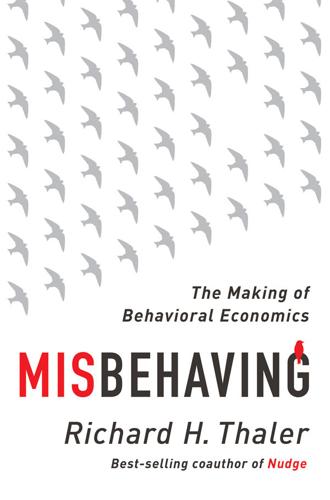
Misbehaving: The Making of Behavioral Economics
by
Richard H. Thaler
Published 10 May 2015
Moreover, much of what economists do is to collect and analyze data about how markets work, work that is largely done with great care and statistical expertise, and importantly, most of this research does not depend on the assumption that people optimize. Two research tools that have emerged over the past twenty-five years have greatly expanded economists’ repertoire for learning about the world. The first is the use of randomized control trial experiments, long used in other scientific fields such as medicine. The typical study investigates what happens when some people receive some “treatment” of interest. The second approach is to use either naturally occurring experiments (such as when some people are enrolled in a program and others are not) or clever econometrics techniques that manage to detect the impact of treatments even though no one deliberately designed the situation for that purpose.
…
We can’t do evidence-based policy without evidence. Although much of the publicity about the BIT has rightly stressed its use of behavioral insights to design changes in how government operates, an equally important innovation was the insistence that all interventions be tested using, wherever possible, the gold-standard methodology of randomized control trials (RCTs)—the method often used in medical research. In an RCT, people are assigned at random to receive different treatments (such as the wording of the letters in the tax study), including a control group that receives no treatment (in this case, the original wording). Although this approach is ideal, it is not always feasible.¶ Sometimes researchers have to make compromises in order to be able to run any sort of trial.
…
In this case, the removal is quite literal. Whether or not this specific implementation will ever be adopted on a large scale, remembering this example may provide someone with an inspiration for a powerful nudge in another situation. Second, the example illustrates potential pitfalls of randomized controlled trials in field settings. Such experiments are expensive, and lots of stuff can go wrong. When a lab experiment gets fouled up, which happens all too often in labs run by Humans, a relatively small amount of money paid to subjects has been lost, but the experimenter can usually try again. Furthermore, smart experimenters run a cheap pilot first to detect any bugs in the setup.
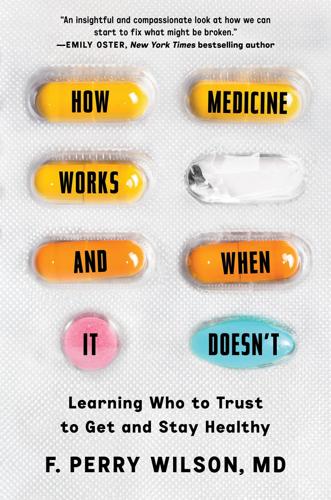
How Medicine Works and When It Doesn't: Learning Who to Trust to Get and Stay Healthy
by
F. Perry Wilson
Published 24 Jan 2023
Pittas et al., “Vitamin D Supplementation and Prevention of Type 2 Diabetes,” New England Journal of Medicine 381, no. 6 (August 8, 2019): 520–30. 10 So a trial of 2,256 older women: K. M. Sanders, A. L. Stuart, E. J. Williamson et al., “Annual High Dose Oral Vitamin D and Falls and Fractures in Older Women: A Randomized Controlled Trial,” JAMA 303, no. 18 (2010): 1815–22, doi:10.1001/jama.2010.594. 11 A Women’s Health Initiative study randomized: Andrea Z. LaCroix et al., “Calcium Plus Vitamin D Supplementation and Mortality in Postmenopausal Women: The Women’s Health Initiative Calcium–Vitamin D Randomized Controlled Trial,” Journals of Gerontology: Series A 64A, no. 5 (May 1, 2009): 559–67, https://doi.org/10.1093/gerona/glp006. 12 From a genetic perspective, humans: Lynn B.
…
Millar, 1757). 3 For example, in 2019, JAMA Pediatrics: Rivka Green et al., “Association Between Maternal Fluoride Exposure During Pregnancy and IQ Scores in Offspring in Canada,” JAMA Pediatrics 173, no. 10 (October 1, 2019): 940–48, https://doi.org/10.1001/jamapediatrics.2019.1729. 4 For example, in 2014, the results of a randomized trial: Abhinav Goyal et al., “Melatonin Supplementation to Treat the Metabolic Syndrome: A Randomized Controlled Trial,” Diabetology & Metabolic Syndrome 6, no. 1 (November 18, 2014): 124, https://doi.org/10.1186/1758-5996-6-124. 5 The starkest example I’ve seen of this was: Frances Campbell et al., “Early Childhood Investments Substantially Boost Adult Health,” Science 343, no. 6178 (March 28, 2014): 1478–85, https://doi.org/10.1126/science.1248429. 6 With rare exceptions: Klaus Linde et al., “How Large Are the Nonspecific Effects of Acupuncture? A Meta-Analysis of Randomized Controlled Trials,” BMC Medicine 8, no. 1 (November 23, 2010): 75, https://doi.org/10.1186/1741-7015-8-75.
…
Or consider the causal link between growing up in poverty and future cancer risk: It is not as easy to change someone’s economic status as it is to tell them to take a new pill. When possible, the best strategy to determine causality is to change the exposure and observe whether the outcome changes; this is fundamentally what happens when researchers conduct randomized controlled trials. But when that isn’t feasible, we need some other tools. In 1965, British epidemiologist Sir Austin Bradford Hill listed nine criteria he considered as evidence supporting causality. Temporality was just one of them. The “Bradford Hill criteria” have come under fire over the years but still remain one of the standards by which researchers explore causal hypotheses.
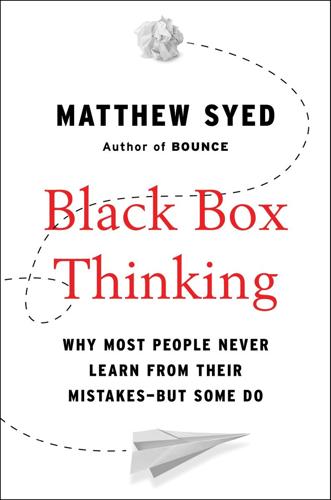
Black Box Thinking: Why Most People Never Learn From Their Mistakes--But Some Do
by
Matthew Syed
Published 3 Nov 2015
See also cycling; Formula One; soccer Staker, Holly, 63, 64, 70, 82–83, 119, 120, 121 Stalin, Joseph, 109 Stanton, Andrew, 210, 212 steam engine, 132 Stern, Sam, 179 Stewart, William Glen, 240, 241–42, 243, 244, 245, 246, 247–49 stigmatization, 40, 97, 105 stock market, 101, 264 Stone, Jeff, 91 stroller, collapsible, 195, 199 structure of systems that learn from failure, 125–49 cumulative selection/adaptation and, 128–29, 130, 292 free markets systems and, 129–31, 284 guided missile approach of success and, 146 lean start-ups and, 141–45 narrative fallacy and, 135–38, 147–49 perfectionism, dangers of, 140–41 software design and, 138–40 technological change and, 131–35 testing and, 128–31 Unilever nozzle and, 125–26, 128, 129, 137, 147, 286 success, 7, 15, 19, 266–67 blind spot created by, 48 failure and, 39–40 Sullenberger, Chesley, 38, 39, 40–41 Sun, 236 Supreme Court, U.S., 84–85 surgery, 3–6, 15–16, 18 Swinmurn, Nick, 143 Syria, 92 systematic review, 164–65 system safety, 17, 18, 45 Taleb, Nassim Nicholas, 44–45, 133, 135 Tavris, Carol, 75, 93 Taylor, John, 95, 96 TD-Gammon, 134–35 Team Sky, 171–73, 179 technology/technological change, 19, 39, 131–35 bottom-up testing and learning and, 132–34 linear model of, 131–33 theory and, 133–34 Tellis, Gerard J., 205 temporal difference learning, 134–35 testing, 128–49 AIDS/HIV, strategies to combat, 147–49 lean start-ups and, 141–45 narrative fallacy as obstacle to, 135–38, 147–49 perfectionism, dangers of, 140–41 randomized control trials (RCTs) (See randomized control trials (RCTs)) of Scared Straight program efficacy, 160–65 software design and, 138–40 technological change and, 131–35 Tetlock, Philip, 99 theory, 133–34, 212 theory of relativity, 42, 133, 192, 195, 202 thermodynamics, laws of, 132 Think Like a Freak (Kobayashi), 187–88 Thomas, Dorothy, 201 Thompson, W.
…
How can it be failing when virtually every expert is lining up to endorse it? To answer that question we will examine one of the most important scientific innovations of the last two hundred years, and one that takes us to the heart of the closed-loop phenomenon—and how to overcome it. The randomized control trial. II Closed loops are often perpetuated by people covering up mistakes. They are also kept in place when people spin their mistakes, rather than confronting them head on. But there is a third way that closed loops are sustained over time: through skewed interpretation. That was the problem that bedeviled bloodletting, practiced by medieval doctors.
…
But we don’t really know. This may seem like a trivial point, but the implications are profound. Now look at another diagram, below. Here the patients have been randomly divided into two groups. Some of them get access to bloodletting while the others (called the control group) do not. This is known as a randomized control trial (RTC); in medicine it is called a clinical trial. We see from the diagram that many of the patients who receive bloodletting recover. It looks successful. The feedback is impressive. But now look at the group who did not get the treatment. Many more have recovered than in the treated group.
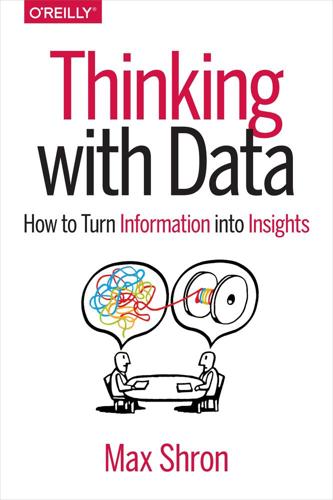
Thinking with Data
by
Max Shron
Published 15 Aug 2014
A rebuttal is the yes-but-what-if question that naturally arises in any but the most self-evident arguments. Consider an attempt to show that a medication is effective at treating warts. If our claim is that the medication cures warts; that our evidence is a randomized controlled trial; and our justification is that randomized controlled trials are evidence of causal relationships, then common rebuttals would be that the randomization may have been done improperly, that the sample size may have been too small, or that there may be other confounding factors attached to the treatment. It pays to be highly aware of what the rebuttals to our arguments are, because those are the things we will need to answer when we need to make a water-tight argument.
…
A design is a method for grouping units of analysis according to certain criteria to try to reduce uncertainty in understanding cause and effect. This is where causal influence actually begins. Techniques like within-subject designs and randomized controlled trials fall here. These methods make an effort to create defensible causal knowledge of a greater or lesser degree, depending on the number of issues stymieing causal analysis that we can eliminate. Randomized controlled trials are at the far end of this part of the causal spectrum. On the very far end of the causal spectrum are arguments for which a causal relationship is obvious, such as with closed systems (like components in a factory) or well-established physical laws.
…
That is, we are interested in how well a causal explanation generalizes to new situations. Intervention Designs A number of different design strategies exist for controlling for confounders. In a typical randomized controlled trial, we randomly assign the treatment to the subjects. The justification for the claim that we can infer generalizability is that, because the treatment was chosen randomly for each unit, it should be independent of potential confounders. There are numerous rebuttals for randomized controlled trials, the details of which would take up many books. The randomization may have been done improperly. The proposed treatment might not be the only difference between groups (hence double-bind experiments).
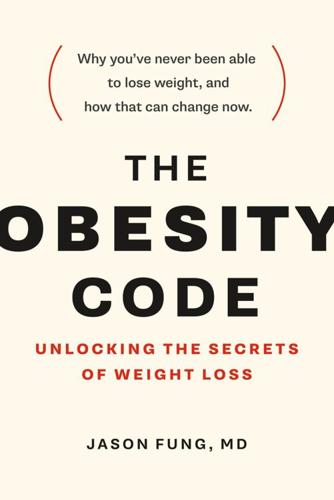
The Obesity Code: Unlocking the Secrets of Weight Loss
by
Jason Fung
Published 3 Mar 2016
Breakfast eaters therefore tend to eat more and eat more often—a deadly combination.11 Furthermore, many people confess that they are not hungry first thing in the morning and force themselves to eat only because they feel that doing so is the healthy choice. As ridiculous as it sounds, many people force themselves to eat more in an effort to lose weight. In 2014, a sixteen-week randomized controlled trial of breakfast eating found that “contrary to widely espoused views this had no discernable effect on weight loss.”12 We are often told that skipping breakfast will shut down our metabolism. The Bath Breakfast Project,13 a randomized controlled trial, found that “contrary to popular belief, there was no metabolic adaptation to breakfast.” Total energy expenditure was the same whether one ate breakfast or not. Breakfast eaters averaged 539 extra calories per day compared to those that skipped breakfast—a finding consistent with other trials.
…
Experimental manipulation of breakfast in normal and overweight/obese participants is associated with changes to nutrient and energy intake consumption patterns. Physiol Behav. 2014 Jun 22; 133:130–5. doi: 10.1016/j.physbeh.2014.05.015. Accessed 2015 Apr 8. 12. Dhurandhar E et al. The effectiveness of breakfast recommendations on weight loss: a randomized controlled trial. Am J Clin Nutr. 2014 Jun 4. doi: 10.3945/ajcn.114.089573. Accessed 2015 Apr 8. 13. Betts JA et al. The causal role of breakfast in energy balance and health: a randomized controlled trial in lean adults. Am J Clin Nutr. 2014 Aug; 100(2): 539–47. 14. Diet, nutrition and the prevention of chronic disease: report of a joint WHO/FAO expert consultation. Geneva: World Health Organization; 2003. p. 68.
…
Even as we were choking down our dry skinless chicken breast and rice cakes, we were getting fatter and sicker. Looking for answers, the National Institutes of Health recruited almost 50,000 post-menopausal women for the most massive, expensive, ambitious and awesome dietary study ever done. Published in 2006, this randomized controlled trial was called the Women’s Health Initiative Dietary Modification Trial.12 This trial is arguably the most important dietary study ever done. Approximately one-third of these women received a series of eighteen education sessions, group activities, targeted message campaigns and personalized feedback over one year.

The Barbell Prescription: Strength Training for Life After 40
by
Jonathon Sullivan
and
Andy Baker
Published 2 Dec 2016
Carter JG, Potter AW, Brooks KA. Overtraining syndrome: causes, consequences and methods for prevention. J Sport Human Perf 2014;2(1). Castaneda C, Layne JE, Munoz-Orians L, et al. A randomized-controlled trial of resistance exercise training to improve glycemic control in older adults with type 2 diabetes. Diabetes Care 2002;25:2335-2341. Castaneda C, Layne JE, Munoz-Orians L, et al. A randomized controlled trial of resistance exercise training to improve glycemic control in older adults with type 2 diabetes. Diabetes Care 2002;25(12):2335-41. Chang EY, Moses DA, Babb JS, Schweitzer ME. Shoulder impingement: objective 3D shape analysis of acromial morphologic features.
…
Cochrane Database Syst Rev 2013; doi: 10.1002/14651858.CD004366.pub6 Cornelissen VA, Fagard RH, Coeckelberghs E, Vanhees L. Impact of resistance training on blood pressure and other cardiovascular risk factors: a meta-analysis of randomized controlled trials. Hypertension 2011;58:950-958. Cornellisen VA, Fagard RH. Effect of resistance training on resting blood pressure: a meta-analysis of randomized controlled trials. J Hypertension 2005;23(2):251-259. Cotman CW, Berchtold NC, Christie LA. Exercise builds brain health: key roles of growth factor cascades and inflammation. Trends Neurosci 2007;30(9):464-472. Cotman CW, Berchtold NC.
…
This abnormal form of hemoglobin can still carry oxygen, but its accumulation in the blood is a marker for the metabolic syndrome, the onset of Type 2 diabetes, and cardiovascular disease. I suspect HbA1c may also exert direct pathological effects, although this is not known for certain. An important systematic analysis of the data on progressive resistance exercise (that is, actual training) by Irvine and Taylor,22 encompassing 9 randomized controlled trials and 372 experimental subjects, found that strength training led to reductions in HbA1c in patients with Type 2 diabetes. Data on the beneficial effect of resistance training on insulin sensitivity and metabolic syndrome goes back decades,23 although its implications have been slow to percolate up into the consciousness of the public, or even the modern medical mind.
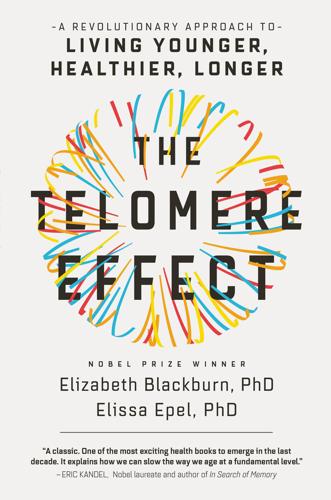
The Telomere Effect: A Revolutionary Approach to Living Younger, Healthier, Longer
by
Dr. Elizabeth Blackburn
and
Dr. Elissa Epel
Published 3 Jan 2017
Qigong is part of the wellness program of ancient Chinese medicine, a practice that has been developed and refined for more than five thousand years. Much like Kriya Yoga, Qigong induces a state of concentration and relaxation by integrating the body and mind. It is supported by thousands of years of practice but also the best kind of scientific evidence—randomized, controlled trials. For example, Qigong reduces depression12 and may improve diabetes.13 In a trial of Qigong on cell aging, researchers examined people with chronic fatigue syndrome. They found that people who practiced Qigong for four months had significantly greater increases in telomerase, and reductions in fatigue, than people who were assigned to a wait list.14 A teacher showed the volunteers how to do Qigong for the first month, and then they practiced on their own at home, thirty minutes a day.
…
He wanted to see how this program might affect cell aging, so he studied this in men with low-risk prostate cancer. The men ate a diet high in plants and low in fat; they walked for half an hour, six days a week; they attended weekly support group sessions. They also practiced stress management on their own, with gentle yoga stretches, breathing, and meditation. In a prior randomized, controlled trial, this program was shown to slow or stop the progression of early-stage prostate cancer. At the end of the three months, the men’s telomerase had also increased. Further, those who had greater reductions in their distressing thoughts about prostate cancer had the larger increases in telomerase, suggesting that stress reduction contributed to the improvements seen.15 He followed a subgroup of these men for five years, and the ones who adhered to the program had significantly lengthened telomeres by 10 percent.
…
Neff, H. Alberts, and M. Peters, “Meeting Suffering with Kindness: Effects of a Brief Self-Compassion Intervention for Female College Students,” Journal of Clinical Psychology 70, no. 9 (September 2014): 794–807, doi:10.1002/jclp.22076; and Neff, K. D., and C. K. Germer, “A Pilot Study and Randomized Controlled Trial of the Mindful Self-Compassion Program,” Journal Of Clinical Psychology 69, no. 1 (January 2013): 28–44, doi:10.1002/jclp.21923. 40. This exercise is adapted from Dr. Neff’s website: http://self-compassion.org/exercise-2-self-compassion-break/. For more information on developing self-compassion, see K.

Markets, State, and People: Economics for Public Policy
by
Diane Coyle
Published 14 Jan 2020
Coyle and C. Woolard (2010), “Public Value in Practice: Restoring the Ethos of Public Service,” BBC Trust, http://downloads.bbc.co.uk/bbctrust/assets/files/pdf/regulatory_framework/pvt/public_value_practice.pdf. Randomized Control Trials and Policy Experiments One possible reason for growing interest in evidence on the effectiveness of economic policies is the use of randomized control trials (RCTs). Long used in medicine and many natural sciences, this is a relatively new technique in economics and other social sciences, dating from the early 2000s. Their use originated in the study of low-income economies, and there have now been hundreds of projects in many countries designed to assess specific policy interventions aimed at challenges such as reducing the incidence of malaria, increasing school attendance, and encouraging parents to get their children immunized.
…
The switch means that rather than having to make an active effort to start or increase your savings, doing nothing means you are enrolled in the plan with automatic deductions from pay. In 2006 the US government legislated to encourage employers to switch to this default, New Zealand followed suit in 2007, and the United Kingdom in 2012. The effects on participation have been dramatic (figure 5.4). Box 5.1. Nudges in development The application of randomized control trials of different nudges has become widespread in developing countries, often encouraged by aid donors. For example, health care products in developing countries often require payment of a small fee. Experiments have shown that cutting the price from a few pennies to zero can have a dramatic effect on take-up, making the loss of revenue worthwhile given the impact on health outcomes.
…
Many are in health, energy and environment, and employment, or related to the payment of taxes or fines or cost savings in government services. By now, the adoption of behavioral policies has become widespread. Usually, they involve testing exactly what kind of framing of information, or default options, or social comparisons, are most effective in bringing about the desired outcome, sometimes through the use of randomized control trials (just like testing new medical interventions or drugs), field experiments, or pilot schemes. Behavioral policies will always be subject to some trial and error, but there is a huge amount of experimentation under way. The interest in behavioral economics has done a lot to introduce these new methodologies into economics, and the applied literature is now vast and growing daily.
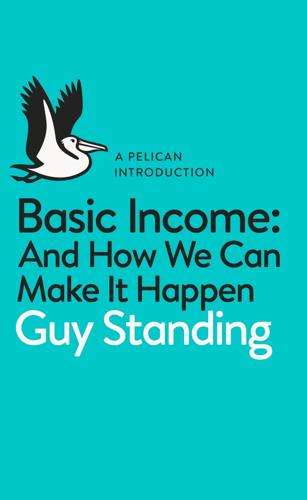
A Pelican Introduction: Basic Income
by
Guy Standing
Published 3 May 2017
Cash transfer schemes that at present are overwhelmingly targeted at ‘the poor’ have the potential to prepare the way for basic income.2 But four factors have so far impeded the transition – a belief in ‘targeting’ (only the poor should receive the cash), ‘selectivity’ (some groups should have priority), ‘conditionality’ (recipients should be required to undertake certain actions or behave in certain ways), and ‘randomization’ (policy should only be introduced when it has been tested, or evaluated, by randomized control trials, and thus be ‘evidence-based’). This chapter briefly surveys findings from cash transfer schemes of most relevance for basic income and then considers the outcomes of genuine basic income pilots. But the fourth factor needs to be dealt with first, since a fetish with a particular method of evaluation risks distracting attention from what is most important and delaying progress in policy implementation. In randomized control trials (RCTs) of cash transfers, some people are given cash, others are not, and the results for the two groups are compared over time.
…
Everyone in the village, including children but excluding over-sixties already receiving a social pension, was given a very small basic income of N$100 a month (worth US$12 at the time or about a third of the poverty line), and the outcomes compared with the previous situation. The results included better nutrition, particularly among children, improved health and greater use of the local primary healthcare centre, higher school attendance, increased economic activity and enhanced women’s status.41 The methodology would not have satisfied those favouring randomized control trials that were coming into vogue at the time. No control village was chosen to allow for the effects of external factors, in the country or economy, because those directing the pilot felt it was immoral to impose demands, in the form of lengthy surveys, on people who were being denied the benefit of the basic income grants.
…
This encouraged villagers to plant more vegetables, buy more fertilizer and rear more livestock. These dynamic community-wide economic effects are usually overlooked in conventional evaluations, and would not be spotted if cash was given only to a random selection of individuals or households and evaluated as a randomized control trial. Another outcome, unplanned and unanticipated, was that villagers voluntarily set up a Basic Income Advisory Committee, led by the local primary school teacher and the village nurse, to advise people on how to spend or save their basic income money. The universal basic income thus induced collective action, and there was no doubt that this community activism increased the effectiveness of the basic incomes.

Geek Heresy: Rescuing Social Change From the Cult of Technology
by
Kentaro Toyama
Published 25 May 2015
Similarly, to better understand our technology fixation, it’s important to recognize its larger social and historical context. As I began to doubt the hype around packaged interventions, I wanted to see if I could bypass their problems. Maybe there were other approaches to social change. So I engaged with three ideas that have growing support – randomized controlled trials, social enterprises, and happiness as a goal. These are largely unrelated efforts, but they all have great merit and are well-regarded within their specializations. Promisingly, each had a potential claim to exorcising the curse of packaged interventions. The Randomista Revolution In July 2011 I visited a school in Kotra, a little village in southern Rajasthan.
…
The research team was led by Esther Duflo, a brilliant MIT economist who counts among her honors a MacArthur “genius grant” as well as the John Bates Clark Medal, a good predictor of future Nobel laureates. As a pioneering member of the Abdul Lateef Jameel Poverty Action Lab (JPAL), Duflo has been a tireless advocate for the use of randomized controlled trials (RCTs) to verify the value of antipoverty programs. This is the methodology used in clinical medicine, whereby a control group establishes a baseline against which the effectiveness of a treatment can be compared. In applying the rigor of hard science to social questions, Duflo and her colleagues are revolutionaries.
…
If “the landlord says your rent is late,”53 the right response isn’t not to worry. It’s to move in with a relative, live on a tighter budget, get another job, upgrade your skills, apply for public assistance, or do anything else that would sow, antlike, a future in which there would be less cause to worry.54 Measure for Immeasure At first glance, randomized controlled trials, social enterprise, and happiness as an objective have little in common. The first is a research methodology, the second a type of organization, and the last a policy goal. Yet these three concepts share traits that recall the problems of technologies and packaged interventions. For one thing, they all make a fetish of measurement.
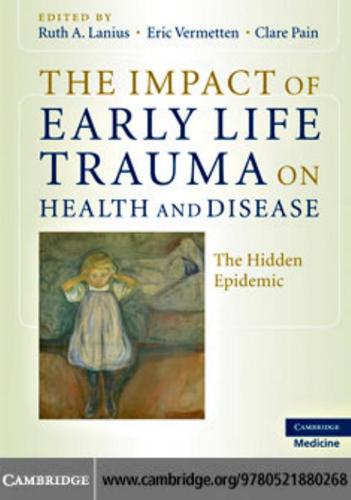
The Impact of Early Life Trauma on Health and Disease
by
Lanius, Ruth A.; Vermetten, Eric; Pain, Clare
Published 11 Jan 2011
Effectiveness of partial hospitalization in the treatment of borderline personality disorder:€A randomized controlled trial. American Journal of Psychiatry, 156, 1563–1569. 61. Bateman, A. W. and Fonagy, P. (2001). Treatment of borderline personality disorder with psychoanalytically oriented partial hospitalization:€An 18-month followup. American Journal of Psychiatry, 158, 36–42. 62. Bateman, A. and Fonagy, P. (2008). 8-year follow-up of patients treated for borderline personality disorder: Mentalization-based treatment versus treatment as usual. American Journal of Psychiatry, 165, 631–638. 63. Bateman, A. and Fonagy, P. (2009). Randomized controlled trial of out-patient mentalization-based treatment versus structured clinical management for borderline personality disorder.
…
C. et al. (2007). Cognitive behavioral therapy for posttraumatic stress disorder in women; a randomized controlled trial. Journal of the American Medical Association, 297, 820–830. Schnurr, P. P. Friedman, M. J., Foy, D. W. et al. (2003). Randomized trial of trauma-focused group therapy for posttraumatic stress disorder:€results from a Department of Veterans Affairs cooperative study. Archives of General Psychiatry, 60, 481–489. Mueser, K. T., Rosenberg, S. D, Haiyi Xie, M. et al. (2008). A randomized controlled trial of cognitivebehavioral treatment for posttraumatic stress disorder in severe mental illness.
…
Psychological interventions for posttraumatic reactions in children and young people:€A review of randomized controlled trials. Clinical Psychology Review, 26, 895–911. 46. Cohen, J. A., Mannarino, A. P., Berliner, L. and Deblinger, E. (2000). Trauma-focused cognitive behavioral therapy for children and adolescents:€An empirical update. Journal of Interpersonal Violence, 15, 1202–1223. 47. Cohen, J. A., Deblinger, E. E., Mannarino, A. P. and Steer, R. A. (2004). A multisite, randomized controlled trial for children with sexual abuse-related PTSD symptoms. Journal of the American Academy of Child and Adolescent Psychiatry, 43, 393–402. 48.
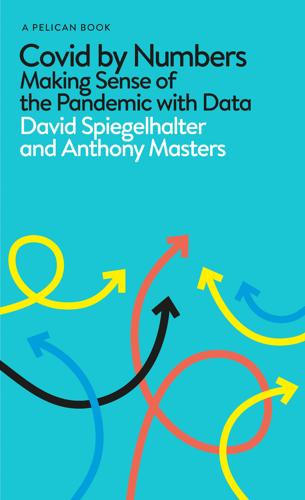
Covid by Numbers
by
David Spiegelhalter
and
Anthony Masters
Published 28 Oct 2021
Stephen Kahn, the head of the US Food and Drug Administration, asserted a 35% reduction in mortality.fn110 All these claims were based on just comparing what happened to people who did or did not have the treatment, but this is insufficient to prove that a new treatment caused any differences. It may, for example, have been given to healthier patients. We could use statistical methods to adjust for known imbalances, but the main reliable way to prove causation is to allocate volunteers at random to receive the new treatment or a control. Such randomized controlled trials (RCTs) were first developed for use in agriculture, but now Web designers and analysts use randomized trials through ‘A/B testing’: every time you visit a website you may be taking part in multiple trials. Randomized trials reduce statistical biases by ensuring that groups are balanced, up to the play of chance, and even in ways we are unaware could influence the outcome.
…
The crucial step for regulating new interventions are ‘Phase III’ clinical studies.3 Volunteers are randomly allocated to receive either the vaccine or a control injection (a saline placebo or a different vaccine). Researchers follow the volunteers and check how many develop the disease and other important outcomes. We saw in Chapter 10 how such randomized controlled trials are the gold standard for assessing treatments, but vaccine trials have some special characteristics since, even in large trials, severe events like hospitalization are too rare to precisely estimate protection.4 This means that trials measure, for example, the ability of the vaccine to reduce symptomatic disease at least seven days after the second dose, whereas this is not really the main outcome of practical interest.
…
That is the central estimate of vaccine efficacy, with a credible interval of 90% to 98%, the width of which is determined by the (rather small) number of cases rather than the number of participants. Pfizer-BioNTech Placebo injection Efficacy (95% uncertainty interval) Number in each group 18,198 18,325 Number of cases of Covid-19 at least 7 days after 2nd dose 8 162 Proportion getting the disease 0.043% 0.884% 95% (90% to 98%) Table 22–1 Main results from randomized controlled trial of Pfizer-BioNTech vaccine; vaccine efficacy is estimated by 1 – 0.043/0.884 = 0.95. High efficacy becomes plain in the ‘cumulative incidence’ graph of new cases shown in Figure 22–1. The two groups have a similar rise in cases in the opening days, and then after around 10 days there are only a few further cases among vaccinated volunteers, while non-vaccinated cases continue to climb.
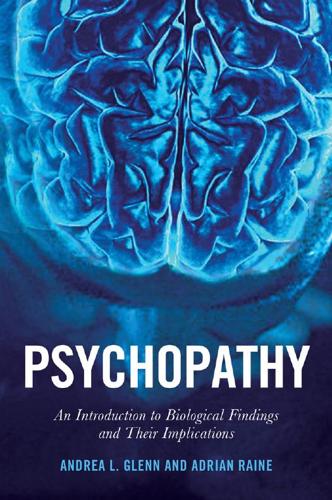
Psychopathy: An Introduction to Biological Findings and Their Implications
by
Andrea L. Glenn
and
Adrian Raine
Published 7 Mar 2014
This ensures that the results will not be affected by the participants’ or clinicians’ knowledge of the treatment group. When evaluating treatment research it is important to carefully consider the design of the study. As mentioned in Chapter 8, randomized controlled trials are beneficial for two reasons: (1) we make progress in understanding what forms of interventions are effective and (2) we are able to test cause-and-effect relationships (Tremblay 2008). Randomized controlled trials are one of the most rigorous ways of determining whether a particular factor plays a causal role in the development of an outcome. For example, consider an intervention in which pregnant women are randomly assigned to a group that participates in a smoking cessation program (that is effective in reducing maternal smoking) or a control group that does not participate.
…
Since we cannot experimentally introduce stressors to the environment, the alternative is to manipulate the environment by providing an intervention. He states, “[E]xperimental preventive interventions can kill two birds with one stone: identify basic mechanisms leading to [aggression] and identify effective preventive interventions” (p. 2618). Randomized controlled trials, which monitor effects of the intervention on gene expression, brain functioning, and behavior, will be extremely useful in improving our understanding of how environmental factors contribute to the development of psychopathy. Conclusions A common misunderstanding is that biological factors are determined by genetics alone.
…
In addition, research has begun to demonstrate the biological changes that can result from psychosocial interventions, suggesting that biological factors can be targeted through traditional forms of therapy. Thus, ultimate solutions to the problem of psychopathy could be both natural and, in some cases, surprisingly simple. The gold standard for prevention and treatment studies is the randomized controlled trial, in which participants are randomly allocated to treatment or control groups and the groups are treated identically except for the experimental treatment. Less controlled study designs may be able to detect associations between an intervention and an outcome, but they cannot rule out the possibility that the association may have been caused by a third factor.
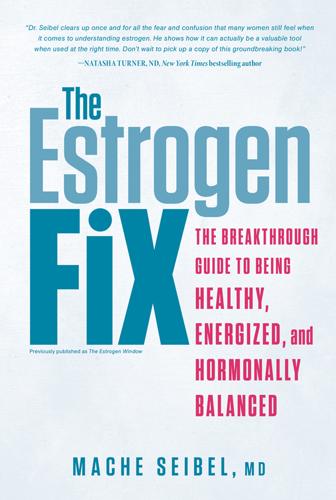
The Estrogen Fix: The Breakthrough Guide to Being Healthy, Energized, and Hormonally Balanced
by
Mache Seibel
Published 18 Sep 2017
Sarrel et al., “The Mortality Toll of Estrogen Avoidance: An Analysis of Excess Deaths among Hysterectomized Women Aged 50 59 Years,” American Journal of Public Health 103, no. 9 (September 2013): 1583–88. 10G. L. Anderson et al., “Effects of Conjugated Equine Estrogen in Postmenopausal Women with Hysterectomy: The Women’s Health Initiative Randomized Controlled Trial,” JAMA 291, no. 14 (April 14, 2004): 1701–12. 11A. Z. LaCroix et al., “Health Outcomes after Stopping Conjugated Equine Estrogens among Postmenopausal Women with Prior Hysterectomy: A Randomized Controlled Trial,” JAMA 305, no. 13 (April 6, 2011): 1305–14. 12T. S. Mikkola, P. Tuomikoski, H. Lyytinen et al., “Estradiol-Based Postmenopausal Hormone Therapy and Risk of Cardiovascular and All-Cause Mortality,” Menopause 22, no. 9 (September 2015): 976–83. 13T.
…
Mori et al., “Effects of Short-Term Estrogen Treatment on the Neointimal Response to Balloon Injury of Rat Carotid Artery,” American Journal of Cardiology 85, no. 10 (May 15, 2000): 1276–79. 51G. L. Anderson et al., “Effects of Conjugated Equine Estrogen in Postmenopausal Women with Hysterectomy: The Women’s Health Initiative Randomized Controlled Trial,” JAMA 291, no. 14 (April 14, 2004): 1701–12. 52A. Z. LaCroix et al., “Health Outcomes after Stopping Conjugated Equine Estrogens among Postmenopausal Women with Prior Hysterectomy: A Randomized Controlled Trial,” JAMA 305, no. 13 (April 6, 2011): 1305–14. 53D. O. Stram et al., “Age-Specific Effects of Hormone Therapy Use on Overall Mortality and Ischemic Heart Disease Mortality among Women in the California Teachers Study,” Menopause 18, no. 3 (March 2011): 253–61. 54M.
…
Palacios et al., “A 7-Year Randomized, Placebo-Controlled Trial Assessing the Long-Term Efficacy and Safety of Bazedoxifene in Postmenopausal Women with Osteoporosis: Effects on Bone Density and Fracture,” Menopause 22 (2015): 806–13. 46P .V. Pinkerton, J. A. Harvey, K. Pan et al., “Breast Effect of Bazedoxifene-Conjugated Estrogen: A Randomized Controlled Trial,” Obstetrics & Gynecology 121, no. 5 (2013): 959–68. 47R. Kegan, B. S. Komm, K. A. Ryan, et al., “Timing and Persistence of Effect of Conjugated Estrogen/Gazedoxifene in Postmenopausal Women,” Menopause 23, no. 11 (November 2016): 1204—13. 48de Villiers et al., “Global Consensus Statement,” 203–4. 49W.
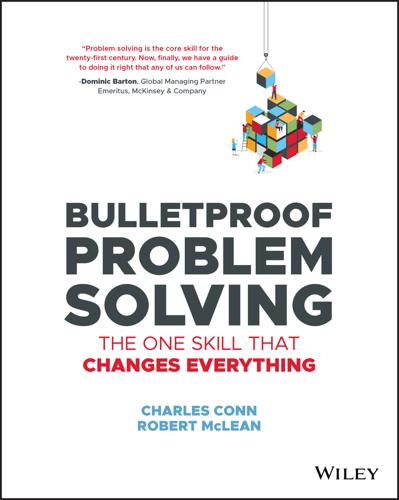
Bulletproof Problem Solving
by
Charles Conn
and
Robert McLean
Published 6 Mar 2019
Sometimes these are terrific, but everyone has them, including your competitors, and there are often methodological issues in their collection. It is worth considering whether there are options for crowd sourcing alternative data, whether prediction markets cover your topic or could be induced to, or whether your interest area is amenable to some form of A|B testing or randomized controlled trials. Custom data collection costs have come down substantially and new data sets can yield insights very different from the obvious mainstream analyses. Tools such as Survey Monkey are simple to use and can bring customer, competitor, and supplier perspectives that may be especially insightful.
…
As in most problem solving you need to gather some facts. In Rob's case, he read a Finnish study in The New England Journal of Medicine that indicated that when there is low discomfort and age‐degenerative meniscal tear, there is no significant improvement from APM compared to physical therapy. The research method involved a particular kind of randomized control trial termed a sham control, where participants weren't aware of whether they had the procedure or not. The conclusions of the 12‐month follow‐up were that the outcomes for the APM surgery were no better than for the sham APM surgery, notwithstanding that “both groups had significant improvement in primary outcomes.”15 Rob also wanted to assess whether he should wait for a new technology solution to develop, such as stem‐cell treatment or a printable hydrogel meniscus.
…
Experiments can be useful for evaluating different types of interventions. For example, a randomized‐controlled experiment can help you test whether a specific new program offering individuals incentives to walk five miles per day reduces obesity better than an existing program, controlling for all other factors. Randomized controlled trials (RCTs) require you to recruit a pool of participants, and randomly allocate participants into two or more treatment groups and a control group. In this case, the treatment is the new exercise incentive program. They work particularly well when you want evidence that a specific intervention is the likely cause of a change in outcome.
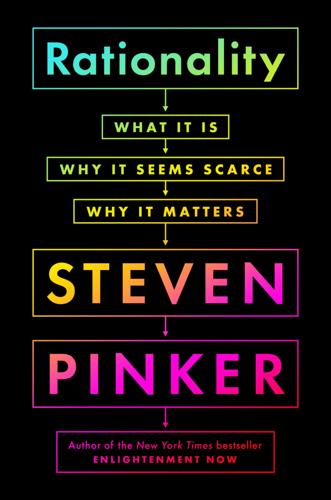
Rationality: What It Is, Why It Seems Scarce, Why It Matters
by
Steven Pinker
Published 14 Oct 2021
Does going to college equip you with skills that allow you to earn a good living? Or do only smart, disciplined, or privileged people, who can translate their natural assets into financial ones, make it through university? There is an impeccable way to cut these knots: the randomized experiment, often called a randomized controlled trial or RCT. Take a large sample from the population of interest, randomly divide them into two groups, apply the putative cause to one group and withhold it from the other, and see if the first group changes while the second does not. A randomized experiment is the closest we can come to creating the counterfactual world that is the acid test for causation.
…
If you have it, you don’t need anything else; if you don’t have it, it doesn’t matter what else you have.”25 It isn’t quite true of charm, and it isn’t quite true of random assignment either, but it is still with me decades later, and I like it better than the cliché that randomized trials are the “gold standard” for showing causation. The wisdom of randomized controlled trials is seeping into policy, economics, and education. Increasingly, “randomistas” are urging policymakers to test their nostrums in one set of randomly selected villages, classes, or neighborhoods, and compare the results against a control group which is put on a waitlist or given some meaningless make-work program.26 The knowledge gained is likely to outperform traditional ways of evaluating policies, like dogma, folklore, charisma, conventional wisdom, and HiPPO (highest-paid person’s opinion).
…
As we saw in chapter 3, inconsistency is fatal to reasoning: a set of beliefs that includes a contradiction can be deployed to deduce anything and is perfectly useless. Wary as I must be of inferring causation from correlation, and of singling out just one cause in a crisscrossing historical mesh, I cannot claim that good arguments are the cause of moral progress. We cannot do a randomized controlled trial on history, with half of a sample of societies exposed to a compelling moral treatise and the other half given a placebo filled with high-minded mumbo jumbo. Nor do we have a large enough dataset of moral triumphs to extract a causal conclusion from the network of correlations. (The closest I can think of are cross-national studies showing that education and access to information in one era, which are indicators of a readiness to exchange ideas, predict democracy and liberal values in a later one, holding socioeconomic confounds constant.)18 For now I can only give examples of precocious arguments that historians tell us were influential in their day and that remain unimpeachable in ours
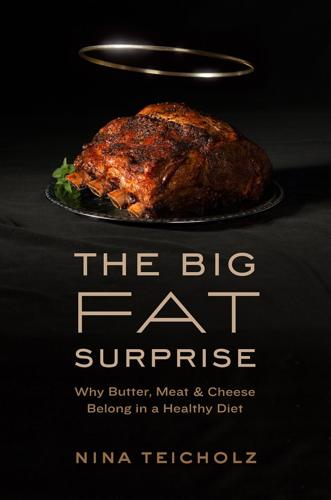
The Big Fat Surprise: Why Butter, Meat and Cheese Belong in a Healthy Diet
by
Nina Teicholz
Published 12 May 2014
He visited Atkins’s office in New York City in the late 1990s and was impressed by his success in helping patients to lose weight and improve health. But he decided that the files weren’t good enough. “I need science,” he told Atkins. Westman knew that the only way to make sense of various anecdotal accounts was to do randomized controlled trials, the gold standard of medical evidence. So he, along with a few colleagues around the country, started conducting those trials. This new group of researchers entering the field were young and relatively ignorant about the professional sandpit into which they’d be sinking. Gary Foster, for instance, a professor of psychology at Temple University who took part in a landmark trial comparing different diets in 2003, says he had no idea that including the Atkins regime in his study would be so contentious.
…
Prentice et al., “Low-Fat Dietary Pattern and Risk of Invasive Breast Cancer: The Women’s Health Initiative Randomized Controlled Dietary Modification Trial,” Journal of the American Medical Association 295, no. 6 (2006): 629–642; Ross L. Prentice et al., “Low-Fat Dietary Pattern and Cancer Incidence in the Women’s Health Initiative Dietary Modification Randomized Controlled Trial,” Journal of the National Cancer Institute 99, no. 20 (2007): 1534–1543. In writing this book: The author has no conflicts of interest; she has never received any financial or in-kind support, either directly or indirectly, from any party with an interest related to any of the topics covered in this book. 1.
…
Freedman et al., “Tracking of Serum Lipids and Lipoproteins in Children over an 8-Year Period: The Bogalusa Heart Study,” Preventive Medicine 14, no. 2 (1985): 203–216. Cochrane concluded: Vanessa J. Poustie and Patricia Rutherford, “Dietary Treatment for Familial Hypercholesterolaemia,” Cochrane Database of Systematic Reviews 2 (2001): CD001918–CD001918. rigorous study on this hypothesis: Benjamin Caballero et al., “Pathways: A School-Based, Randomized Controlled Trial for the Prevention of Obesity in American Indian Schoolchildren,” American Journal of Clinical Nutrition 78, no. 5 (2003): 1030–1038. “major contributor of growth failure”: Andrew M. Prentice and Alison A. Paul, “Fat and Energy Needs of Children in Developing Countries,” American Journal of Clinical Nutrition 72, suppl. (2000): 1253S.
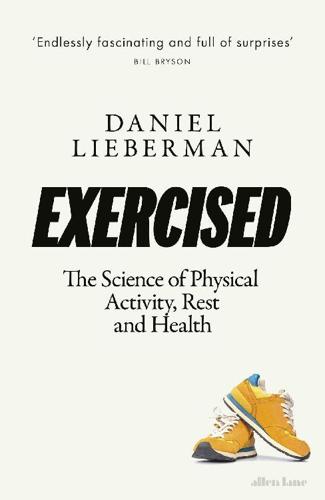
Exercised: The Science of Physical Activity, Rest and Health
by
Daniel Lieberman
Published 2 Sep 2020
J., et al. (2017), Knee osteoarthritis has doubled in prevalence since the mid-20th century, Proceedings of the National Academy of Sciences USA 114:9332–36. 46 Truth be told, the only study to test this rule did not find it reduced injury rates. More research is needed. See Buist, I., et al. (2008), No effect of a graded training program on the number of running-related injuries in novice runners: A randomized controlled trial, American Journal of Sports Medicine 36:33–39. 47 Ferber, R., et al. (2015), Strengthening of the hip and core versus knee muscles for the treatment of patellofemoral pain: A multicenter randomized controlled trial, Journal of Athletic Training 50:366–77. 48 Dierks, T. A., et al. (2008), Proximal and distal influences on hip and knee kinematics in runners with patellofemoral pain during a prolonged run, Journal of Orthopedic and Sports Physical Therapy 38:448–56. 49 Nigg, B.
…
Elderly hunter-gatherers and others who remain active throughout their life span testify to the welcome news that using muscles retards muscle loss as we age. Indeed, aging does not put an end to muscles’ capacity to respond to resistance exercise; instead, modest levels of resistance exercise slow and sometimes reverse sarcopenia regardless of age thanks to the mechanisms we have already reviewed. Dozens of randomized control trials have found that prescribing moderate, non-strenuous levels of weight training helps older individuals increase their muscle mass and strength and thus improve their ability to function normally and stay active without requiring assistance.54 One study even demonstrated marked improvements in strength among eighty-seven- to ninety-six-year-old men and women following eight weeks of resistance training.55 Critically, by halting and reversing sarcopenia, these interventions decrease injury risk and enhance quality of life for the elderly.
…
L., et al. (2007), Whole grain intake and its cross-sectional association with obesity, insulin resistance, inflammation, diabetes, and subclinical CVD: The MESA Study, British Journal of Nutrition 98:397–405; Lefevre, M., and Jonnalagadda, S. (2012), Effect of whole grains on markers of subclinical inflammation, Nutrition Review 70:387–96; Vitaglione, P., et al. (2015), Whole-grain wheat consumption reduces inflammation in a randomized controlled trial on overweight and obese subjects with unhealthy dietary and lifestyle behaviors: Role of polyphenols bound to cereal dietary fiber, American Journal of Clinical Nutrition 101:251–61; Ampatzoglou, A., et al. (2015), Increased whole grain consumption does not affect blood biochemistry, body composition, or gut microbiology in healthy, low-habitual whole grain consumers, Journal of Nutrition 145:215–21. 33 For an excellent, readable review of how fat cells function and cause inflammation, see Tara, S. (2016), The Secret Life of Fat: The Science Behind the Body’s Least Understood Organ and What It Means for You (New York: W.

Good to Go: What the Athlete in All of Us Can Learn From the Strange Science of Recovery
by
Christie Aschwanden
Published 5 Feb 2019
“There’s a lot of company-run tests where they say, oh yeah, there’s a little bit of evidence with this,” she says, but she wanted to see some stronger proof and studies that applied to runners. “Some of the studies will have people do a one-rep max on some weight exercise, but I’m like, what does that mean for running?” Randomized, controlled trials are the gold standard in medicine, and Badowski Wu and some colleagues, including Martin Hoffman, the Sacramento VA Medical Center researcher who wrote hydration guidelines, figured they could apply that approach to recovery modalities too. So they designed and conducted a randomized, controlled trial of massage and pneumatic compression on participants in the 2015 Western States Endurance Run.10 (The race has a unique program to fund and encourage scientific research on the event and its participants.)
…
Researchers running drug studies in the United States are now required to register their plans and protocols in advance at ClinicalTrials.gov and to report and share all their results, not just the positive findings.8 These requirements were implemented to ensure that regulators and the public get the full picture, and not just results cherry-picked to make a product look good. The system doesn’t work perfectly and it can’t cull every false positive finding, but a 2015 analysis showed that after the launch of ClinicalTrials.gov in 2000, the proportion of trials that found a positive benefit plummeted.9 Prior to 2000, for example, 57 percent of large randomized, controlled trials sponsored by the National Heart, Lung, and Blood Institute showed that the treatment worked. After 2000, that number dropped to 8 percent. But no such rules or conventions apply to nutritional studies, which means that supplement companies and the researchers they fund can fish around for positive results until they find something that paints the product in a positive light.
…
Fowler, “Choice and Placebo Expectation Effects in the Context of Pain Analgesia,” Journal of Behavioral Medicine 35, no. 4 (August 2012): 462-70, doi: 10.1007/s10865-011-9374-0. 9. Alex Stone, “Why Waiting Is Torture,” New York Times, August 19, 2012, accessed March 11, 2018, http://www.nytimes.com/2012/08/19/opinion/sunday/why-waiting-in-line-is-torture.html. 10. Martin D. Hoffman, Natalie Badowski, Joseph Chin, and Kristin J. Stuempfle, “A Randomized Controlled Trial of Massage and Pneumatic Compression for Ultramarathon Recovery,” Journal of Orthopaedic and Sports Physical Therapy 46, no. 5 (2016): 1–26, https://doi.10.2519/jospt.2016.6455. 11. Jonas Bloch Thorlund, “Deconstructing a Popular Myth: Why Knee Arthroscopy Is No Better Than Placebo Surgery for Degenerative Meniscal Tears,” British Journal of Sports Medicine (2017), https://doi.10.1136/bjsports-2017-097877. 12.

SuperBetter: The Power of Living Gamefully
by
Jane McGonigal
Published 14 Sep 2015
Amelia McDonell-Parry, “Seven Incredibly Deep Life Lessons from Candy Crush Saga,” July 8, 2013, Frisky, http://www.thefrisky.com/2013-07-08/7-incredibly-deep-life-lessons-from-candy-crush-saga. Part 2: How to Be Gameful 1. Ann Marie Roepke et al., “Randomized Controlled Trial of SuperBetter, a Smartphone-Based/Internet-Based Self-Help Tool to Reduce Depressive Symptoms,” Games for Health (in progress); and Ann Marie Roepke, “Results of a Randomized Controlled Trial: The Effects of SuperBetter on Depression,” University of Pennsylvania, July 15, 2013, http://annmarieroepke.files.wordpress.com/2013/08/superbetter-study-results-bulletin-8-15-13.pdf. 2. “Clinical Trial of a Rehabiliation Game—SuperBetter,” NIH-funded trial in collaboration with Ohio State University Medical Research Center, http://clinicaltrials.gov/show/NCT01398566.
…
I waited for scientists from a wider range of fields, including neuroscience and behavioral psychology, to weigh in with their theories on how a gameful mindset can help. Most important, I waited until I could team up with doctors and psychology researchers myself to test the SuperBetter method in rigorous studies—and I have, with a randomized, controlled trial with the University of Pennsylvania and with a clinical trial with the Ohio State University Wexner Medical Center and Cincinnati Children’s Hospital. (You’ll read about that research in “About the Science,” at the end of this book.) Not a day has gone by in these five years that I haven’t received an email or Facebook message from someone telling me how much SuperBetter has inspired them or helped their family.
…
The scientists at ECU attached monitoring devices to game players in order to track two specific measures of emotional and physical resilience: electroencephalographic (EEG) changes in alpha brain waves, which can indicate whether you’re distressed, depressed, or in an overall good mood; and heart rate variability, which reflects how quickly your body can recover from emotional or physical stress. The group’s first randomized, controlled trial found that a twenty-minute session of casual game play decreased left frontal alpha brain waves, which typically indicates improved mood. Indeed, on a survey, the players with decreased alpha brain waves reported feeling in a better mood. They had significantly less anger, depression, and tension and more energy.
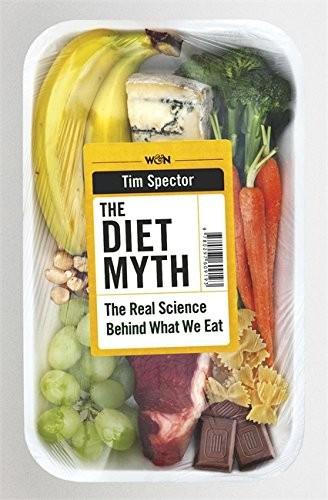
The Diet Myth: The Real Science Behind What We Eat
by
Tim Spector
Published 13 May 2015
Diet and feeding pattern affect the diurnal dynamics of the gut microbiome. 12 Casazza, K., N Engl J Med (31 Jan 2013); 368(5): 446-54. Myths, presumptions, and facts about obesity. 13 Betts, J.A., Am J Clin Nutr (4 Jun 2014); 100(2): 539–47. The causal role of breakfast in energy balance and health: a randomized controlled trial in lean adults. Dhurandhar, E.J., Am J Clin Nutr, (4 Jun 2014); 100(2): 507–13. The effectiveness of breakfast recommendations on weight loss: a randomized controlled trial. 14 de la Hunty, A., Obes Facts (2013); 6(1): 70–85. Does regular breakfast cereal consumption help children and adolescents stay slimmer? A systematic review and meta-analysis. 15 Brown, A.W., Am J Clin Nutr (Nov 2013); 98(5): 1298–308.
…
Fatty acids in patients with multiple cardiovascular risk factors. 7 Qin, X., Int J Cancer (1 Sep 2013); 133(5): 1033–41. Folic acid supplementation and cancer risk: a meta-analysis of randomized controlled trials. 8 Burdge, G.C., Br J Nutr (14 Dec 2012); 108(11): 1924–30. Folic acid supplementation in pregnancy: Are there devils in the detail? 9 Qin, X., Clin Nutr (Aug 2014); 33(4): 603–12. Folic acid supplementation with and without vitamin B6 and revascularization risk: a meta-analysis of randomized controlled trials. 10 Murto, T., Acta Obstet Gynecol Scand (Jan 2015); 94(1): 65–71. Folic acid supplementation and methylenetetrahydrofolate reductase (MTHFR) gene variations in relation to in vitro fertilization pregnancy outcome. 11 Huang, Y., Int J Mol Sci (14 Apr 2014); 15(4): 6298–313.
…
A rare functional cardioprotective APOC3 variant has risen in frequency in distinct population isolates. 12 Minger, D., Death by Food Pyramid (Primal Blueprint, 2013) 13 Chen, M., Am J Clin Nutr (Oct 2012); 96(4): 735–47. Effects of dairy intake on body weight and fat: a meta-analysis of randomized controlled trials. 14 Martinez-Gonzalez, M., Nutr Metab Cardiovasc Dis (Nov 2014); 24(11): 1189–96. Yogurt consumption, weight change and risk of overweight/obesity: the SUN cohort. 15 Jacques, P., Am J Clin Nutr (May 2014); 99(5): 1229S–34S. Yogurt and weight management. 16 Kano, H., J Dairy Sci (2013); 96: 3525–34.
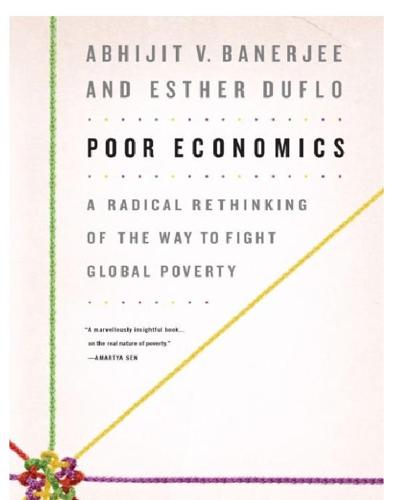
Poor Economics: A Radical Rethinking of the Way to Fight Global Poverty
by
Abhijit Banerjee
and
Esther Duflo
Published 25 Apr 2011
In doing so, we were following a long tradition of development economists who have emphasized the importance of collecting the right data to be able to say anything useful about the world. However, we had two advantages over the previous generations: First, there are now high-quality data from a number of poor countries that were not available before. Second, we have a new, powerful tool: randomized control trials (RCTs), which give researchers, working with a local partner, a chance to implement large-scale experiments designed to test their theories. In an RCT, as in the studies on bed nets, individuals or communities are randomly assigned to different “treatments”—different programs or different versions of the same program.
…
To get them started, BRAC designed a program in which they would be given an asset (a pair of cows, a few goats, a sewing machine, and so on), a small financial allowance for a few months (to serve as working capital and to ensure they would not be tempted to liquidate the asset), and a lot of hand-holding: regular meetings, literacy classes, encouragement to save a little bit every week. Variants of this program are currently being evaluated in six countries, using randomized control trials (RCTs). We were involved in one of these studies, in partnership with Bandhan, an MFI in West Bengal. We visited households before the program was started and heard, from each of the families that were selected for the program, stories of crisis and desperation: A husband was a drunkard and regularly beat his wife; another died in an accident, leaving a young family behind; a widow was abandoned by her children; and so forth.
…
Inquiries suggested that a lot of the money most likely ended up in the pockets of district officials. It is easy to get depressed by such findings (which have been corroborated by similar studies in several other countries). We are often asked why we do what we do: “Why bother?” These are the “small” questions. William Easterly, for one, criticized randomized control trials (RCTs) on his blog in these terms: “RCTs are infeasible for many of the big questions in development, like the economy-wide effects of good institutions or good macroeconomic policies.” Then, he concluded that “embracing RCTs has led development researchers to lower their ambitions.”3 This statement was a good reflection of an institutionalist view that has strong currency in development economics today.
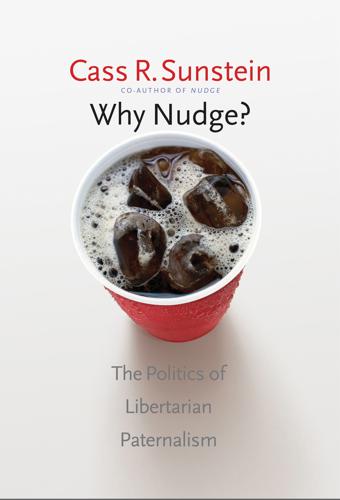
Why Nudge?: The Politics of Libertarian Paternalism
by
Cass R. Sunstein
Published 25 Mar 2014
Reiner, Are You Willing to Be Nudged into Making the Right Decision, Slate (Aug. 13, 2013) (emphasis in original), available at http://www.slate.com/blogs/future_tense/2013/08/13/research_shows_when_nudging_works_and_when_it_doesn_t.html. 8. Susan Parker, Esther Duflo Explains Why She Believes Randomized Controlled Trials Are So Vital, The Center for Effective Philanthropy Blog (June 23, 2011), http://www.effectivephilanthropy.org/blog/2011/06/esther-duflo-explains-why-she-believes-randomized-controlled-trials-are -so-vital. Duflo develops these ideas in detail in her 2012 Tanner Lectures. See Esther Duflo, Abdul Latif Jameel Professor of Poverty Alleviation & Dev. Econ., Mass. Inst. of Tech., Tanner Lectures on Human Values and the Design of the Fight Against Poverty (May 2, 2012), http://economics.mit.edu/files/7904.
…
It makes far more sense to say that people display bounded rationality than to accuse them of “irrationality,” and for many purposes, bounded rationality is just fine, producing outcomes that are equal to or perhaps even better than what would emerge from efforts to optimize by assessing all costs and benefits. With respect to errors, more is being learned every day. Some behavioral findings remain highly preliminary and need further testing. There is much that we do not know. Randomized controlled trials, the gold standard for empirical research, must be used far more to obtain a better understanding of how the relevant findings operate in the world.22 Even at this stage, however, the underlying findings have been widely noticed, and behavioral economics, cognitive and social psychology, and related fields have had a significant effect on policies in several nations, including the United States and the United Kingdom.
…
See HEURISTICS: THE FOUNDATIONS OF ADAPTIVE BEHAVIOR (Gerd Gigerenzer et al. eds., 2011). 22. Michael Greenstone, Toward a Culture of Persistent Regulatory Experimentation and Evaluation, in NEW PERSPECTIVES ON REGULATION 111 (David Moss & John Cisternino eds., 2009). For a number of discussions of randomized controlled trials, including nudges, see ABHIJIT V. BANERJEE & ESTHER DUFLO, POOR ECONOMICS: A RADICAL RETHINKING OF THE WAY TO FIGHT GLOBAL POVERTY (2011). 23. See SUNSTEIN, supra note 9. 24. See, e.g., id.; see also Theresa M. Marteau et al., Changing Human Behavior to Prevent Disease: The Importance of Targeting Automatic Processes, 337 SCIENCE 1492 (2012) (exploring role of automatic processing in behavior in the domain of health). 25.
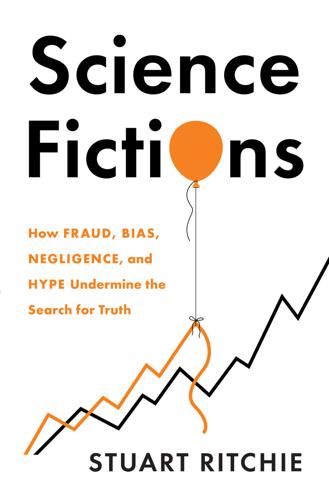
Science Fictions: How Fraud, Bias, Negligence, and Hype Undermine the Search for Truth
by
Stuart Ritchie
Published 20 Jul 2020
Importantly though, the effects in this study were relatively small, with p-values that were just below the 0.05 threshold. I’d want to see a replication before I put too much faith in the study – hence its relegation to just an endnote here. Isabelle Boutron et al., ‘Impact of Spin in the Abstracts of Articles Reporting Results of Randomized Controlled Trials in the Field of Cancer: The SPIIN Randomized Controlled Trial’, Journal of Clinical Oncology 32, no. 36 (20 Dec. 2014): pp. 4120–26; https://doi.org/10.1200/JCO.2014.56.7503 71. Ed Yong, I Contain Multitudes: The Microbes within Us and a Grander View of Life (New York: HarperCollins, 2016). 72. Timothy Caulfield, ‘Microbiome Research Needs a Gut Check’, Globe and Mail, 11 Oct. 2019; https://www.theglobeandmail.com/opinion/article-microbiome-research-needs-a-gut-check/ 73.
…
Eiseman et al., ‘Fecal Enema as an Adjunct in the Treatment of Pseudomembranous Enterocolitis’, Surgery 44, no. 5 (Nov. 1958): pp. 854–59; https://www.ncbi.nlm. nih.gov/pubmed/13592638 75. Wenjia Hui et al., ‘Fecal Microbiota Transplantation for Treatment of Recurrent C. Difficile Infection: An Updated Randomized Controlled Trial Meta-Analysis’, PLOS ONE 14, no. 1 (2019): e0210016; https://doi.org/10.1371/journal.pone.0210016; Theodore Rokkas et al., ‘A Network Meta-Analysis of Randomized Controlled Trials Exploring the Role of Fecal Microbiota Transplantation in Recurrent Clostridium Difficile Infection’, United European Gastroenterology Journal 7, no. 8 (Oct. 2019): pp. 1051–63; https://doi.org/10.1177/2050640619854587 76.
…
The founders of Retraction Watch explain why that’s a bad idea: Ivan Oransky & Adam Marcus, ‘Chinese Courts Call for Death Penalty for Researchers Who Commit Fraud’, STAT News, 23 June 2017; https://www.statnews.com/2017/06/23/china-death-penalty-research-fraud/ 100. Wang et al., ‘Positive Results in Randomized Controlled Trials on Acupuncture Published in Chinese Journals: A Systematic Literature Review’, The Journal of Alternative and Complementary Medicine 20, no. 5 (May 2014): A129–A129; https://doi.org/10.1089/acm.2014.5346.abstract cited in Stephen Novella, ‘Scientific Fraud in China’, Science-Based Medicine, 27 Nov. 2019; https://sciencebasedmedicine.org/scientific-fraud-in-china/https://www.liebertpub.com/doi/abs/10.1089/acm.2014.5346.abstract 101.
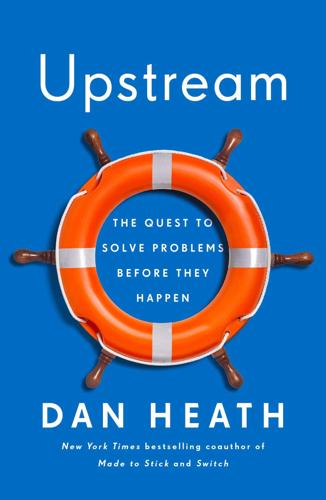
Upstream: The Quest to Solve Problems Before They Happen
by
Dan Heath
Published 3 Mar 2020
What if the program could slow down or interrupt a young man’s rage, so that a dispute over a basketball game wouldn’t end in a murder? In May 2009, Youth Guidance won the Crime Lab’s “innovation challenge” and received funding to scale up its work to 18 schools. One condition of the funding was that the work would be studied via a randomized control trial (RCT).II The key question that would be studied was: Would BAM reduce arrests—especially for violent acts? Youth Guidance was taking a risk in agreeing to this. The probability, in general, of finding a large, significant result in a social-science RCT is pretty low—which is not hard to understand when you realize that interventions might act upon only one or two variables within the overwhelmingly complex and interconnected system that is the human life.
…
Beyond the parenting instruction, a crucial part of the work is simply to be a caring human being who’s there to support the mother. To show her how to take care of herself so that she can care for her child. To help her navigate the complexities of working while raising a child. To listen when the pressures of life seem overwhelming. Three major randomized controlled trials of NFP have been conducted in the United States: in Elmira, New York; Memphis, Tennessee; and Denver, Colorado. The studies have shown that the program consistently improves maternal health, child safety, and well-being. Among the specific impacts were reductions in smoking during pregnancy, preterm births, infant mortality, child abuse and maltreatment, and criminal offenses by the mother, Food Stamp payments, and closely spaced pregnancies (second births within 18 months of the first).
…
A group in South Carolina designed a “pay for success” model that could fund a wide expansion of NFP’s work. Here’s how they set it up: In 2016, NFP received a $30 million infusion of cash to expand its work in the state, and the results of its efforts will be assessed over six years via a randomized control trial. If the work is successful, according to several measures agreed upon in advance, then the state government would be positioned to fund the work permanently. The magic of the arrangement is that the state government doesn’t take a big financial risk upfront, because the trial stage was mostly funded from outside.
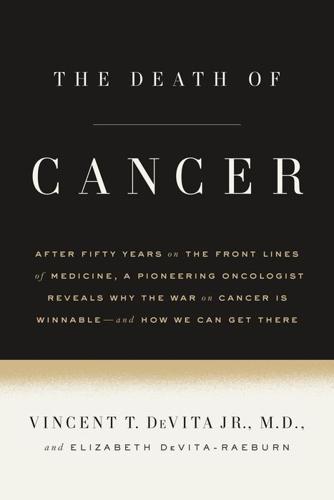
The Death of Cancer: After Fifty Years on the Front Lines of Medicine, a Pioneering Oncologist Reveals Why the War on Cancer Is Winnable--And How We Can Get There
by
Vincent T. Devita, Jr., M. D.
and
Elizabeth Devita-Raeburn
Published 3 Nov 2015
Also bad news: Under the Kefauver-Harris Amendment, or “Drug Efficacy Amendment,” of 1962, proof of efficacy was to be determined in “adequate and well controlled trials.” The act mentions only the use of historical controls—that is, data from previous studies. The amendment did not require new randomized controlled trials, as people often think. The requirement for these new trials—often an unnecessary impediment in early drug trials—was added by the FDA in its interpretation of the regulations: another FDA grab. Today we seem to be mindlessly wedded to the use of randomized controlled trials. They have their place. But randomized clinical trials can be unethical. Doctors sometimes have strong beliefs about the effectiveness of treatments being compared in a randomized trial—often with good reason.
…
Fearing the FDA would approve this practice, he testified before the ODAC to protest his agency’s own positions. (He told me in a recent phone call that had he testified as an FDA employee, he would have had to support its position.) Young wanted data on cisplatin tested alone in testicular cancer and in a randomized controlled trial against other treatments, as required in the Code of Federal Regulations, his bible. Our data in childhood leukemia and Hodgkin’s disease had already shown the need for drugs to be used in combination to cure cancers. What Young wanted to do—treating patients with a single agent, cisplatin—would have meant jeopardizing the lives of patients.
…
It had been noted, anecdotally, that some patients who present with kidney cancer that has already spread to their lungs go into a remission when you remove the primary tumor—the involved kidney. This was once considered a rash thing to do. Why subject patients to expensive major surgery when they already had widespread cancer? There was no proof it worked, just the observation of a few overzealous (or very astute) doctors. In 2001, we did get some evidence in the form of two randomized controlled trials.10 Half of patients who had a new diagnosis of metastatic kidney cancer were treated with interferon, a mediocre treatment for kidney cancer, while the other half were treated with removal of the diseased kidney plus interferon. In both studies, the survival of patients who had a kidney removed was significantly longer.11 What was the primary tumor doing to influence the growth of metastases?

Give People Money
by
Annie Lowrey
Published 10 Jul 2018
She also looked at the negative-income-tax experiments conducted by the United States government in the late 1960s and 1970s, as the administrations of Lyndon Johnson and Richard Nixon sought more and better ways to tackle the problems of deep poverty, a lack of engagement with the labor force, and the dissolution of the family. (Negative income taxes, or NIT, boost a household’s income rather than reducing it.) The government conducted NIT pilots in seven states during the Brady Bunch years, the first randomized control trials in the United States. (In a curious historical wrinkle, Donald Rumsfeld and Dick Cheney were involved.) In most cases, there was some reduction in work effort. In a large experiment conducted in Seattle and Denver, for instance, the employment rate fell by a considerable four percentage points.
…
Wouldn’t a safety net fast become a hammock, as Republicans are so fond of claiming? As we saw, that argument has been disproven conclusively in higher-income countries. Much the same turns out to be true in developing countries and among the world’s very poor. A prominent group of economists recently looked at randomized control trials of government cash-transfer programs from Honduras, Indonesia, Morocco, Mexico, Nicaragua, and the Philippines. They found that receiving cash had no effect on the number of hours worked or the propensity to work, for both men and women. Indeed, the cash-transfer programs seemed to boost the amount that men worked, in some cases.
…
The only thing preventing us from getting there, and to $300 million the next year, is capital.” * * * Before launching its UBI pilot, GiveDirectly provided large lump-sum payments to the poorest people in a given village rather than distributing small payments for a long time to everybody. A randomized control trial, the gold standard for research in academic economics as well as a number of other disciplines, demonstrated that these cash transfers had powerful effects. After receiving payments of $404 or $1,525, household assets increased by 58 percent. Business and agriculture income increased by 38 percent, with an implied annual rate of return of 28 percent.

The Hidden Half: How the World Conceals Its Secrets
by
Michael Blastland
Published 3 Apr 2019
Even so, he managed to imply that it had been foolish. And yet, while it’s true the chicken was a creature of habit, expecting to be fed that fateful day simply because it had always been fed before, was that really so bad? We could make a case for the chicken’s good judgement. Philosopher Nancy Cartwright jokes that a randomized controlled trial on the relationship between chickens turning up in the farmyard and being fed (run during the summer) would have confirmed the chicken’s belief. In any case, what’s wrong with expecting a little regularity in life? It doesn’t seem a lot to ask. In fact, it’s hard to see how we would cope without it.
…
In short, we’re a lot like the chicken, as Russell says, which would be fine, except that the chicken dies, brutally. What that illustrates is how deep-rooted and necessary it usually is to think that our knowledge of cause and effect is dependable enough to travel; but also how vulnerable that expectation can be to factors that we do not know we do not know. Nancy Cartwright’s semi-joke that a randomized controlled trial would have backed up the chicken’s belief is to point out how much contextual detail you would need to know about the behaviour and social structure of farmers, farms and Christmas in order to understand what it is you are looking at when you watch the chicken being fed every day. All this, for the chicken, is a vital hidden half.
…
See, for example, the blogs and columns of Noah Smith of Bloomberg View for a discussion of this trend. 10 Abhijit Banerjee, ‘Inside the Machine’, Boston Review, March/April 2007. 11 See ‘Buzzwords and Tortuous Impact Studies Won’t Fix a Broken Aid System,’ jointly authored by fifteen leading economists: Guardian, 16 July 2018. 12 Cabinet Office Behavioural Insights Team, ‘Applying Behavioural Insights to Organ Donation: Preliminary Results from a Randomized Controlled Trial’, December 2013. 13 Tim Harford, ‘Behavioural Economics and Public Policy’, Financial Times, 21 March 2014. Full disclosure: Tim is also presenter of More or Less, a radio programme I helped start some years ago. 14 Quoted by Tim Harford, in ‘Behavioural Economics and Public Policy’ cited above. 15 In public health, this has been referred to as ‘particularism’: are there general explanations why some places grow healthier and others don’t, or does each trajectory have its own explanation?
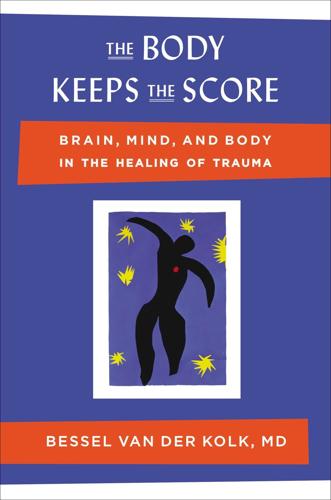
The Body Keeps the Score: Brain, Mind, and Body in the Healing of Trauma
by
Bessel van Der Kolk M. D.
Published 7 Sep 2015
Heckman, “Skill Formation and the Economics of Investing in Disadvantaged Children,” Science 312, no. 5782 (2006): 1900–2. 37. D. Olds, et al., “Long-Term Effects of Nurse Home Visitation on Children’s Criminal and Antisocial Behavior: 15-Year Follow-up of a Randomized Controlled Trial,” JAMA 280, no. 14 (1998): 1238–44. See also J. Eckenrode, et al., “Preventing Child Abuse and Neglect with a Program of Nurse Home Visitation: The Limiting Effects of Domestic Violence,” JAMA 284, no. 11 (2000): 1385–91; D. I. Lowell, et al., “A Randomized Controlled Trial of Child FIRST: A Comprehensive Home-Based Intervention Translating Research into Early Childhood Practice,” Child Development 82, no. 1 (January/February 2011): 193–208; S.
…
Feinstein, “Rapid Treatment of PTSD: Why Psychological Exposure with Acupoint Tapping May Be Effective,” Psychotherapy: Theory, Research, Practice, Training 47, no. 3 (2010): 385–402; D. Church, et al., “Psychological Trauma Symptom Improvement in Veterans Using EFT (Emotional Freedom Technique): A Randomized Controlled Trial,” Journal of Nervous and Mental Disease 201 (2013): 153–60; D. Church, G. Yount, and A. J. Brooks, “The Effect of Emotional Freedom Techniques (EFT) on Stress Biochemistry: A Randomized Controlled Trial,” Journal of Nervous and Mental Disease 200 (2012): 891–96; R. P. Dhond, N. Kettner, and V. Napadow, “Neuroimaging Acupuncture Effects in the Human Brain,” Journal of Alternative and Complementary Medicine 13 (2007): 603–616; K.
…
Grossman, et al., “Mindfulness-Based Stress Reduction and Health Benefits: A Meta-Analysis,” Journal of Psychosomatic Research 57 (2004): 35–43; K. Sherman, et al., “Comparing Yoga, Exercise, and a Self-Care Book for Chronic Low Back Pain: A Randomized, Controlled Trial,” Annals of Internal Medicine 143 (2005): 849–56; K. A. Williams, et al., “Effect of Iyengar Yoga Therapy for Chronic Low Back Pain,” Pain 115 (2005): 107–117; R. B. Saper, et al., “Yoga for Chronic Low Back Pain in a Predominantly Minority Population: A Pilot Randomized Controlled Trial,” Alternative Therapies in Health and Medicine 15 (2009): 18–27; J. W. Carson, et al., “Yoga for Women with Metastatic Breast Cancer: Results from a Pilot Study,” Journal of Pain and Symptom Management 33 (2007): 331–41. 8.

The Great Escape: Health, Wealth, and the Origins of Inequality
by
Angus Deaton
Published 15 Mar 2013
Career success is independent of whether or not projects have been successful, so there is no pressure for convincing evaluation. These arguments have led to a movement toward more careful evaluation, often with an emphasis on randomized controlled trials as the best way of finding out whether a given project worked and, beyond that, of finding out “what works” in general. (In randomized controlled trials, some “units”—people or schools or villages—get treated, and some—the controls—do not, with units assigned to one of the two groups at random.) According to this view, aid has been much less effective than it would have been had past projects been seriously evaluated.
…
If the World Bank had subjected all of its projects to rigorous evaluation, the argument goes, we would by now know what works and what does not work, and global poverty would have vanished long ago. Those who favor randomized controlled trials—the randomistas—tend to be very skeptical of typical self-evaluations by NGOs, and they have worked with cooperative NGOs to help strengthen their evaluation procedures. They have also persuaded the World Bank to use randomized controlled trials in some of its work. Finding out whether a given project was or was not successful is important in itself but unlikely to reveal anything very useful about what works or does not work in general.
…
According to the Mayo Clinic, “Diuretics … help rid your body of salt (sodium) and water. They work by making your kidneys put more sodium into your urine. The sodium, in turn, takes water with it from your blood. That decreases the amount of fluid flowing through your blood vessels, which reduces pressure on the walls of your arteries.”7 An important randomized controlled trial from the U.S. Veterans Administration was published in 1970,8 and thereafter practice changed quickly in the United States. One of the characteristics of the U.S. health-care system is that innovations tend to be introduced very quickly—not only the good ones like antihypertensives, but also many that are of dubious value.

Deep Medicine: How Artificial Intelligence Can Make Healthcare Human Again
by
Eric Topol
Published 1 Jan 2019
Firth, J., et al., “The Efficacy of Smartphone-Based Mental Health Interventions for Depressive Symptoms: A Meta-Analysis of Randomized Controlled Trials.” World Psychiatry, 2017. 16(3): pp. 287–298. 47. Aggarwal, J., and W. Smriti Joshi, “The Future of Artificial Intelligence in Mental Health,” DQINDIA online. 2017. 48. Fitzpatrick, K. K., A. Darcy, and M. Vierhile, “Delivering Cognitive Behavior Therapy to Young Adults with Symptoms of Depression and Anxiety Using a Fully Automated Conversational Agent (Woebot): A Randomized Controlled Trial.” JMIR Ment Health, 2017. 4(2): p. e19. 49. Knight, “Andrew Ng Has a Chatbot That Can Help with Depression.” 50.
…
It appears to have similar efficacy for treating depression (at least mild to moderate types) as the labor-intensive face-to-face visits with a mental health professional. There are plenty of CBT mobile apps including Lantern, Joyable, MoodGYM, and Ginger.io. A meta-analysis of eighteen randomized control trials of more than 3,400 patients using twenty-two smartphone apps for treating depression showed significant improvement, and those apps based on CBT were particularly effective.46 All those apps studied involve interactions with human beings, but not all apps rely on human interaction. Wysa, a penguin chatbot, has attracted 50,000 users who engaged in a million conversations in just three months; more than five hundred wrote in comments to say how much it helped with their mental health problem.47 Woebot uses an instant messenger app to conduct sessions with users.
…
It uses deep learning to peg the relationship between a person’s heart rate and physical activity, to prompt the user to record an electrocardiogram if his or her heart goes off track, and to look for evidence of atrial fibrillation. AliveCor’s watch exemplifies the type of assistance developed to date. I won’t try to review every possible example here, but I will cover enough to give you a flavor of where we stand in this nascent phase of the medical AI coach. There’s an important common thread here: no randomized, controlled trials have been shown to improve outcomes. Instead, the products have largely relied on small retrospective or observational studies. It’s a major hole in their stories that needs to get filled in. Nevertheless, the developments are worth examining. Diabetes has been a popular target. Onduo, a company formed by Verily and Sanofi, is perhaps furthest along because it combines smartphone AI recognition of food and meals, continuous glucose sensor data, and physical activity (or what is really just steps taken) to provide coaching via texts.
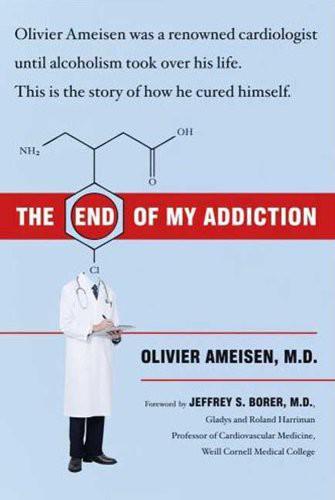
The End of My Addiction
by
Olivier Ameisen
Published 23 Dec 2008
A. et al. (2004) Prevalence and co-occurrence of substance use disorders and independent mood and anxiety disorders: results from the National Epidemiologic Survey on Alcohol and Related Conditions. Archives of General Psychiatry 61, 807–816. Johnson, B. A., Ait-Daoud, N., Bowden, C. L. et al. (2003) Oral topiramate for treatment of alcohol dependence: a randomized controlled trial. Lancet 361, 1677–1685. Johnson, B. A., Ait-Daoud, N., Akhtar, F. Z. et al. (2004) Oral topiramate reduces the consequences of drinking and improves the quality of life of alcohol-dependent individuals: a randomized controlled trial. Archives of General Psychiatry 61, 905–912. Kampman, K. M., Pettinati, H., Lynch, K. G. et al. (2004) A pilot trial of topiramate for the treatment of cocaine dependence.
…
Efficacy and tolerability of long-acting injectable naltrexone for alcohol dependence: a randomized controlled trial. Journal of the American Medical Association 293, 1617–1625. Grant, B. F., Stinson, F. S., Dawson, D. A. et al. (2004) Prevalence and co-occurrence of substance use disorders and independent mood and anxiety disorders: results from the National Epidemiologic Survey on Alcohol and Related Disorders. Archives of General Psychiatry 61, 807–816. Johnson, B. A., Ait-Daoud, N., Bowden, C. L. et al. (2003) Oral topiramate for treatment of alcohol dependence: a randomized controlled trial. Lancet 361, 1677–1685. Koob, G. F. (2000) Animal models of craving for ethanol.
…
But I was impressed by the fact that the article was in The Lancet, one of the world’s three most influential medical journals, along with The New England Journal of Medicine and The Journal of the American Medical Association. The other articles I had found were all in smaller, specialized journals. Moreover, the topiramate study was larger and longer than the baclofen studies in the other articles, and it was a randomized controlled trial, the gold standard of modern medicine. Last but not least, it was brand-new. “This must be the cutting edge,” I thought. It seemed like my best hope yet for achieving complete abstinence from alcohol. I went to the medical library at the Pompidou Centre to read the entire article and make a photocopy.

Good Economics for Hard Times: Better Answers to Our Biggest Problems
by
Abhijit V. Banerjee
and
Esther Duflo
Published 12 Nov 2019
Gordon Allport, a professor of psychology at Harvard, formulated what he called the contact hypothesis in 1954.81 This is the idea that under appropriate conditions, interpersonal contact is one of the most effective ways to reduce prejudice. By spending time with others, we learn to understand and appreciate them, and as a result of this new appreciation and understanding, prejudice should diminish. The contact hypothesis has been intensively studied. A recent review identifies twenty-seven randomized controlled trials (RCTs) investigating Allport’s idea. Overall, these studies find that contact reduces prejudice, although the review calls attention to the importance of the nature of the contact.82 If this is right, schools and universities are obviously key. They bring together young people from different backgrounds in a single location, at an age when everyone is much more plastic.
…
But obviously they are different, and treating them the same may lead us to vastly underestimate the value of the internet. Faced with the possibility that we could be either massively overvaluing the internet or the other way around, scholars looked for other ways to measure its value to consumers. In particular, there were several randomized control trials of what happened when the experimenter (with the permission of the participant) blocked access to Facebook (or social media more generally) for a random group of individuals for some relatively short period of time. The biggest of these experiments, which involved more than two thousand participants paid to deactivate Facebook for a month, found that those who stopped using Facebook were happier across a range of self-reported measures of happiness and well-being and, interestingly, no more bored (perhaps less).
…
A rule of thumb in the social investing world is that 10 percent of the ventures work out (the rest fold) and only 1 percent reach significant scale. The issue is more that it is difficult to identify those supposedly life-changing new products and services, and efforts to do so often meet a frustrating lack of interest from the people whose lives are supposed to be changed. Electricity is a case in point. In a recent randomized controlled trial in Kenya, researchers partnered with Kenya Rural Electrification Authority to offer electricity connection at different prices in different communities. The demand fell very sharply as price rose, and villagers were not willing to pay anywhere near what would have been sufficient to cover the cost of connecting to the grid (not to mention building the grid).86 The frugal engineering world is littered with many similar disasters, from the $100 laptop to educate the world (which actually costs $200 and has been shown to have no impact on what children actually learn),87 to cleaner cookstoves that nobody wanted,88 to various water-filter technologies89 and innovative latrines.90 A lot of the problem seems to be that these innovations take place in a void, insufficiently connected to the lives they wish to change.
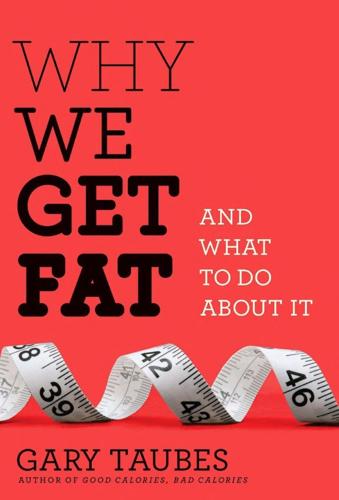
Why We Get Fat and What to Do About It
by
Gary Taubes
Published 28 Dec 2010
When the disappointing results were published in 1982, The Wall Street Journal headline said it all: “Heart Attacks, a Test Collapses.” *In September 2009, the World Health Organization’s Food and Agricultural Organization published a reassessment of the data on dietary fat and heart disease. “The available evidence from [observational studies] and randomized controlled trials,” the report stated, “is unsatisfactory and unreliable to make judgment about and substantiate the effects of dietary fat on risk of CHD [coronary heart disease].” *This was the trial of calorie-restricted diets carried out by researchers from Harvard and the Pennington Biomedical Research Center by Frank Sacks and his colleagues that I discussed in chapter 2.
…
“Insulin Resistance and Hyperinsulinaemia in the Development and Progression of Cancer.” Clinical Science. Nov 23;118(5):315–32. Harris, M. 1985. Good to Eat: Riddles of Food and Culture. New York: Simon and Schuster. Hession, M., C. Rolland, U. Kulkarni, A. Wise, and J. Broom. 2009. “Systematic Review of Randomized Controlled Trials of Low-Carbohydrate vs. Low-Fat/Low-Calorie Diets in the Management of Obesity and Its Comorbidities.” Obesity Reviews. Jan;10(1):36–50. Hooper, L., C. D. Summerbell, J. P. Higgins, et al. 2001. “Reduced or Modified Dietary Fat for Preventing Cardiovascular Disease.” Cochrane Database of Systematic Reviews. (3):CD002137.
…
Food, Nutrition, Physical Activity and the Prevention of Cancer: a Global Perspective. Washington, D.C.: American Institute for Cancer Research. Yancy, W. S., Jr., M. K. Olsen, J. R. Guyton, R. P. Bakst, and E. C. Westman. 2004. “A Low-Carbohydrate, Ketogenic Diet Versus a Low-Fat Diet to Treat Obesity and Hyperlipidemia: A Randomized, Controlled Trial.” Annals of Internal Medicine. May 18;140(10):769–77. Chapter 19: Following Through Allan, C. B., and W. Lutz. 2000. Life Without Bread: How a Low-Carbohydrate Diet Can Save Your Life. New York: McGraw-Hill. Kemp, R. 1972. “The Over-All Picture of Obesity.” Practitioner. Nov;209:654–60. ——. 1966.
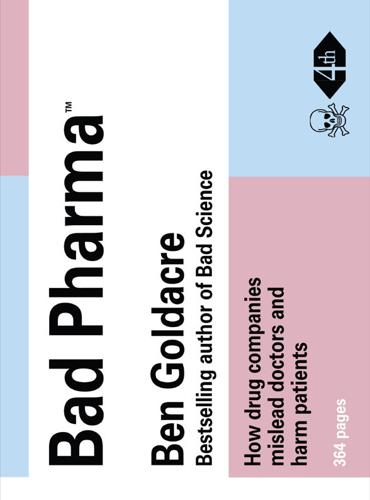
Bad Pharma: How Medicine Is Broken, and How We Can Fix It
by
Ben Goldacre
Published 1 Jan 2012
Iain Chalmers was the first to raise TGN1412 and anti-arrhythmics as examples of the harm done when individual early trials are left unpublished. They are the best illustrations of this problem, but you should not imagine that they are unusual: the quantitative data shows that they are just two among many, many similar cases. 11 Antman EM, Lau J, Kupelnick B, Mosteller F, Chalmers TC. A comparison of results of meta-analyses of randomized control trials and recommendations of clinical experts. Treatments for myocardial infarction. JAMA. 1992 Jul 8;268(2):240–8. 12 Here is the classic early paper arguing this point: Chalmers Iain. Underreporting Research Is Scientific Misconduct. JAMA. 1990 Mar 9;263(10):1405–1408. 13 Sterling T. Publication decisions and their possible effects on inferences drawn from tests of significance – or vice versa.
…
J Lab Clin Med 1994;124:178–82. 40 Abbot NE, Ernst E. Publication bias: direction of outcome less important than scientific quality. Perfusion 1998;11:182–4. 41 Emerson GB, Warme WJ, Wolf FM, Heckman JD, Brand RA, Leopold SS. Testing for the Presence of Positive-Outcome Bias in Peer Review: A Randomized Controlled Trial. Arch Intern Med. 2010 Nov 22;170(21):1934–9. 42 Weber EJ, Callaham ML, Wears RL, Barton C, Young G. Unpublished research from a medical specialty meeting: why investigators fail to publish. JAMA 1998;280:257–9. 43 Kupfersmid J, Fiala M. A survey of attitudes and behaviors of authors who publish in psychology and education journals.
…
BMJ. 1998 Oct 31;317(7167):1172–80. 59 De Angelis C, Drazen JM, Frizelle FA, Haug C, Hoey J, Horton R, et al. Clinical trial registration: a statement from the International Committee of Medical Journal Editors. The Lancet. 2004 Sep 11;364(9438):911–2. 60 Mathieu S, Boutron I, Moher D, Altman DG, Ravaud P. Comparison of Registered and Published Primary Outcomes in Randomized Controlled Trials. JAMA. 2009 Sep 2;302(9):977–84. 61 Wieseler B, McGauran N, Kaiser T. Still waiting for functional EU Clinical Trials Register. BMJ. 2011 Jun 20;342(jun20 2):d3834–d3834. 62 Prayle AP, Hurley MN, Smyth AR. Compliance with mandatory reporting of clinical trial results on ClinicalTrials.gov: cross sectional study.
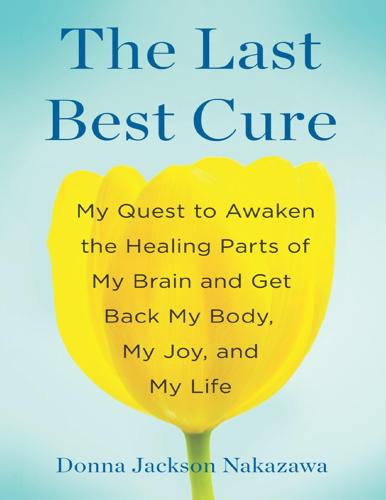
The Last Best Cure: My Quest to Awaken the Healing Parts of My Brain and Get Back My Body, My Joy, a Nd My Life
by
Donna Jackson Nakazawa
Published 21 Feb 2013
Chapter Twenty-four The Mayo Clinic recently reported that acupuncture: Martin DP, >Sletten CD, Williams BA, et al. Improvement in fibromyalgia symptoms with acupuncture: Results of a randomized controlled trial. Mayo Clin Proc. 2006 Jun;81(6):749–57. For women with PCOS: Raja-Khan N, Stener-Victorin E, Wu X, et al. The physiological basis of complementary and alternative medicines for polycystic ovary syndrome. Am J Physiol Endocrinol Metab. 2011 Jul;301(1):E1–E10. the strong eye to help strengthen the weak one: Zhao J, Lam DS, Chen LJ, et al. Randomized controlled trial of patching vs acupuncture for anisometropic amblyopia in children aged 7 to 12 years. Arch Ophthalmol. 2010 Dec;128(12):1510–17. reducing the degree of pain we actually feel: Radiological Society of North America.
…
J Cardiopulm Rehabil Prev. 2008 May–Jun;28(3):153–62. See also “Walking: Trim your waistline, improve your health”: www.mayoclinic.com/health/walking/HQ01612 (accessed March 27, 2012). They’re also less likely to worry over and “catastrophize”: Carson JW, Carson KM, Jones KD, et al. A pilot randomized controlled trial of the Yoga of Awareness program in the management of fibromyalgia. Pain. 2010 Nov;151(2):530–39. They feel less fatigue and a greater sense of “emotional well-being”: Banasik J, Williams H, Haberman M, et al. Effect of Iyengar yoga practice on fatigue and diurnal salivary cortisol concentration in breast cancer survivors.
…
Their pain lessens as their mood grows more positive: Speed-Andrews AE, Stevinson C, Belanger LJ, et al. Pilot evaluation of an Iyengar Yoga program for breast cancer survivors. Cancer Nurs. 2010 Sep–Oct;33(5):369–81. Six months of yoga reduces fatigue: Oken BS, Kishiyama S, Zajdel D, et al. Randomized controlled trial of yoga and exercise in multiple sclerosis. Neurology. 2004 Jun 8;62(11):2058–64. lessens disability, pain, and depression in adults with chronic low back pain: Williams K, Abildso C, Steinberg L, et al. Evaluation of the effectiveness and efficacy of Iyengar yoga therapy on chronic low back pain.
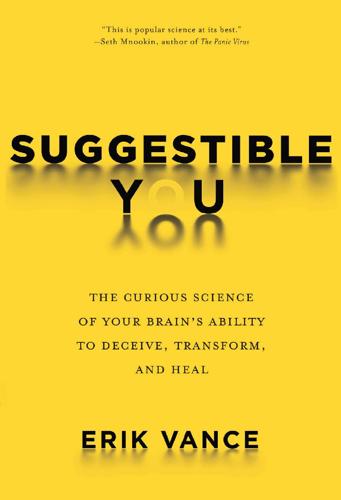
Suggestible You: The Curious Science of Your Brain's Ability to Deceive, Transform, and Heal
by
Erik Vance
Published 14 Sep 2016
Rapport de l’un des commissaires chargés par le roi, de l’examen du magnétisme animal. Herissant, 1784. Kaptchuk, Ted J., Elizabeth Friedlander, John M. Kelley, M. Norma Sanchez, Efi Kokkotou, Joyce P. Singer, Magda Kowalczykowski, Franklin G. Miller, Irving Kirsch, and Anthony J. Lembo. “Placebos Without Deception: A Randomized Controlled Trial in Irritable Bowel Syndrome.” PLOS ONE 5, no. 12 (2010): e15591. doi:10.1371/journal.pone.0015591. Kong, Jian, Rosa Spaeth, Amanda Cook, Irving Kirsch, Brian Claggett, Mark Vangel, Randy L. Gollub, Jordan W. Smoller, and Ted J. Kaptchuk. “Are All Placebo Effects Equal? Placebo Pills, Sham Acupuncture, Cue Conditioning and Their Association.”
…
Proceedings of the National Academy of Sciences of the United States of America 112, no. 25 (June 23, 2015): 7863–67. doi:10.1073/pnas.1504567112. Kaptchuk, Ted J., Elizabeth Friedlander, John M. Kelley, M. Norma Sanchez, Efi Kokkotou, Joyce P. Singer, Magda Kowalczykowski, Franklin G. Miller, Irving Kirsch, and Anthony J. Lembo. “Placebos Without Deception: A Randomized Controlled Trial in Irritable Bowel Syndrome.” PLOS ONE 5, no. 12 (December 2010): e15591. doi:10.1371/journal.pone.0015591. Keesner, Simon, Christian Sprenger, Katja Wiech, Nathalie Wrobel, and Ulrike Bingel. “Effect of Oxytocin on Placebo Analgesia: A Randomized Study.” Journal of the American Medical Association, 310, no. 16 (October 23–30, 2013): 1733–35. doi: 10.1001/jama.2013.277446.
…
European Journal of Social Psychology 15, no. 3 (July 1, 1985): 263–80. doi:10.1002/ejsp.2420150303. Olanow, C. Warren, Raymond T. Bartus, Tiffany L. Baumann, Stewart Factor, Nicholas Boulis, Mark Stacy, Dennis A. Turner, et al. “Gene Delivery of Neurturin to Putamen and Substantia Nigra in Parkinson Disease: A Double-Blind, Randomized, Controlled Trial.” Annals of Neurology 78, no. 2 (August 2015): 248–57. doi:10.1002/ana.24436. Owens, Justine E., and Martha Menard. “The Quantification of Placebo Effects Within a General Model of Health Care Outcomes.” Journal of Alternative and Complementary Medicine 17, no. 9 (September 2011): 817–21. doi:10.1089/acm.2010.0566.
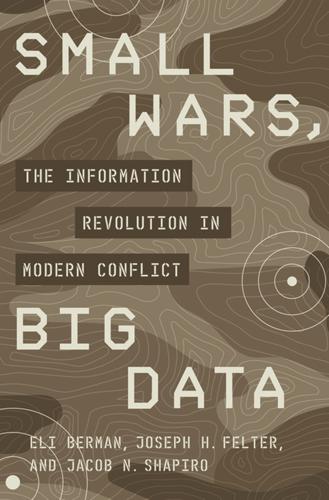
Small Wars, Big Data: The Information Revolution in Modern Conflict
by
Eli Berman
,
Joseph H. Felter
,
Jacob N. Shapiro
and
Vestal Mcintyre
Published 12 May 2018
Barack Obama substantially expanded the use of RCTs for federal programs, along with other evidence-based measures such as “tiered evidence” grant programs, Pay-for-Success initiatives, and the establishment of the White House Social and Behavioral Sciences Team. Tom Kalil, “Funding What Works: The Importance of Low-Cost Randomized Controlled Trials,” The White House blog, 9 July 2014, https://www.whitehouse.gov/blog/2014/07/09/funding-what-works-importance-low-cost-randomized-controlled-trials, accessed 24 February 2016. 23. Christine C. Fair, Rebecca Littman, Neil Malhotra, and Jacob Shapiro, “Relative Poverty, Perceived Violence, and Support for Militant Politics: Evidence from Pakistan,” Political Science Research and Methods 6, no. 1 (2018): 57–81. 24.
…
It is easiest to understand how these approaches help us get at causality by starting with randomized experiments—the gold standard for identifying causal effects in one place and time—and then covering methods that we turn to when randomized experiments are impossible. During the twentieth century the natural sciences worked out an efficient way to draw a line from cause to effect, the randomized controlled trial (RCT). The best way to test a new drug is to draw a large group of test subjects, randomly assign them to a treatment group, who receive it, and a control group, who do not, and measure the difference in results between the two groups. Randomization provides, on average, the real-world counterfactual we mentioned earlier.
…
It also has a maternal health component: to qualify for the grants, expectant mothers must get regular checkups, attend family development education sessions, and use health professionals at childbirth. To allow World Bank researchers to rigorously evaluate the effects of the program, the government rolled it out by randomized controlled trial in part of the country. Of a sample of 130 villages, a treatment group of 65 received the program in 2009, while a control group of equal size was held back, not receiving the program until 2011. The World Bank study provided evidence that this CCT made successful progress toward its specific development targets.67 Day care enrollment rose 11 percentage points (to 76 percent in treatment villages as compared to 65 percent in control villages), school attendance rose to 95 percent relative to 91 percent (among controls), antenatal care was received by 64 percent of new mothers versus 54 percent, and so on.
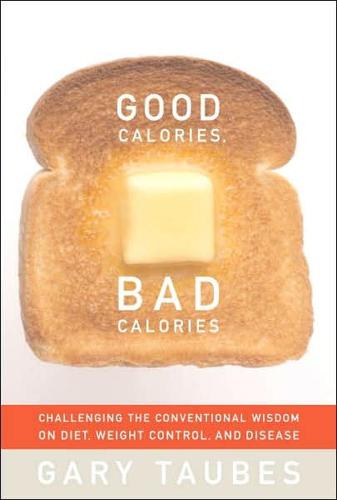
Good Calories, Bad Calories: Challenging the Conventional Wisdom on Diet, Weight Control, and Disease
by
Gary Taubes
Published 25 Sep 2007
First, Rose’s logic does not differentiate between hypotheses. It would invariably be invoked to explain why studies failed to confirm Keys’s fat hypothesis, and would be considered extraneous when similar studies failed to generate evidence supporting competing hypotheses. It is precisely to avoid such subjective biases that randomized controlled trials are necessary to determine which hypotheses are most likely true. Second, as Rose observed, all public-health interventions come with potential risks, as well as benefits—unintended or unimagined side effects. Small or negligible risks to an individual will also add up and can lead to unacceptable harm to the population at large.
…
Epidemiological studies have not, however, generally distinguished between degrees of refining or processing of starches, and there are, as yet, no reliable epidemiological data specifically on the effects of refining on cancer risk. Cleave’s saccharine-disease hypothesis may be intuitively appealing, but it is effectively impossible to test without a randomized controlled trial. If Cleave was right, then epidemiologists comparing populations or individuals with and without chronic disease have to take into account not just sugar consumption but flour, and whether that flour is white or whole-grain, and whether rice is polished or unpolished, white or brown, and even how much beer is consumed compared with, say, red wine or hard liquor.
…
The pattern is precisely what would be expected of a hypothesis that simply isn’t true: the larger and more rigorous the trials set up to test it, the more consistently negative the evidence. Between 1994 and 2000, two observational studies—of forty-seven thousand male health professionals and the eighty-nine thousand women of the Nurses Health Study, both run out of the Harvard School of Public Health—and a half-dozen randomized control trials concluded that fiber consumption is unrelated to the risk of colon cancer, as is, apparently, the consumption of fruits and vegetables. The results of the forty-nine-thousand-women Dietary Modification Trial of the Women’s Health Initiative, published in 2006, confirmed that increasing the fiber in the diet (by eating more whole grains, fruits, and vegetables) had no beneficial effect on colon cancer, nor did it prevent heart disease or breast cancer or induce weight loss.
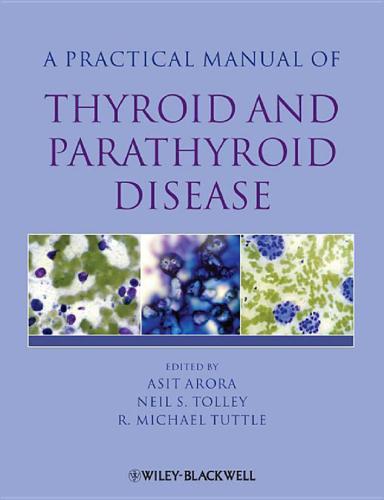
Practical Manual of Thyroid and Parathyroid Disease
by
Asit Arora
,
Neil Tolley
and
R. Michael Tuttle
Published 2 Jan 2009
Where appropriate within the text, references have been classified into the definition of types of evidence based on Agency for Health Care Policy and Research (1992). MULTIPLE CHOICE QUESTIONS Level Type of evidence Ia Evidence obtained from meta-analysis of randomized controlled trials Evidence obtained from at least one randomized controlled trial Evidence obtained from at least one well-designed controlled study without randomization Evidence obtained from at least on other type of well-designed quasi-experimental study Evidence obtained from well designed nonexperimental descriptive studies Evidence obtained from expert committee reports or opinions and/or clinical experience of respected authorities Ib IIa IIb III IV REFERENCES 1.
…
Key points and multiple choice questions are also included which reinforce important points and ensures the reader re-address their understanding of the disease. The book as a whole is easy to read, with highlighted case studies included where appropriate that are informative and educational. As there are no randomized controlled trials for this pathology, most conclusions are based on large non-randomized retrospective data analyses and the personal philosophy of the individual treating physician. Large databases, such as the SEER database and the National Cancer Database (NCDB), are quite helpful in correlating one’s personal philosophy to the ‘best practices’ shown in the large data that is available.
…
Although their size is not a completely reliable indicator of biological behaviour, nodules measuring 5 mm or less do exhibit higher rates of false-positive ultrasound (US) findings coupled with lower rates of adequate fine needle aspiration (FNA) results.12,13 Thus, imaging and fine needle aspiration cytology (FNAC) can sometimes confound the appropriate management of a thyroid nodule. Thyroid imaging 37 The increased incidence of PTC is not associated with a rise in disease-specific mortality which may, in part, reflect our increased use of thyroid imaging in recent times.14 In the absence of randomized controlled trials, it is difficult to reconcile the relatively low mortality rates from PTC with the apparently high risk features of incidentalomas shown in recent studies. FNA of all thyroid nodules certainly has enormous resource implications. The diagnostic accuracy of FNAC for thyroid malignancy is around 95% with an inadequacy rate of 10%, so if all cytologically suspicious or inadequate nodules were excised, a substantial number of patients would undergo unnecessary thyroid surgery.15 US is the best primary imaging modality for the assessment of thyroid nodules.
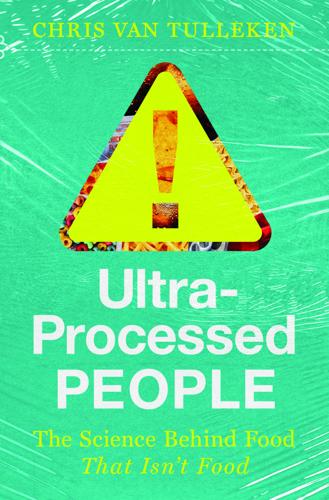
Ultra-Processed People: The Science Behind Food That Isn't Food
by
Chris van Tulleken
Published 26 Jun 2023
It had a modest, rather specific title: ‘A new classification of foods based on the extent and purpose of their processing’. The lead author was Carlos Monteiro, a professor of nutrition in São Paulo. The second paper sounded even less enticing. It was a dietary experiment about weight gain, perhaps promoting another fad: ‘Ultra-processed diets cause excess calorie intake and weight gain: an inpatient randomized controlled trial of ad libitum food intake’ (lead author: Kevin Hall). In the first paper, Monteiro advanced a theory; in the second, Hall described an experiment that tested that theory and, at least at first glance, seemed to confirm it. Here’s the theory: the main reason for the rapid increase in overweight and obesity throughout the world, especially since the 1980s, is the correspondingly rapid increase in production and consumption of ultra-processed food and drink products.
…
In 2008 and 2011, both the New York Times and ABC News reported on David Allison’s funding by Coca-Cola, Kraft, PepsiCo, McDonald’s and the American Beverage Association.5, 6 This funding may have no influence on what he publishes, but a recent publication of his ‘French-fried potatoes consumption and energy balance: a randomized controlled trial’ is an example of how industry-funded science frequently makes discoveries that align with the interests of the funder. The study was supported by a grant from the Alliance for Potato Research and Education (APRE). This is from the conclusion: ‘Results do not support a causal relationship between increased French-fried potato consumption and the negative health outcomes studied
…
Quantification of the effect of energy imbalance on bodyweight. Lancet 2011; 378: 826–37. 2 Fothergill E, Guo J, Howard L, et al. Diet versus exercise in ‘The Biggest Loser’ weight loss competition. Obesity 2013; 21: 957–59. 3 Hall KD, Ayuketah A, Brychta R, et al. Ultra-processed diets cause excess calorie intake and weight gain: an inpatient randomized controlled trial of ad libitum food intake. Cellular Metabolism 2019; 30: 67–77. 4 Martini D, Godos J, Bonaccio M, et al. Ultra-processed foods and nutritional dietary profile: a meta-analysis of nationally representative samples. Nutrients 2021; 13: 3390. 5 October 28. Health inequalities and obesity. 2020.

The Survival of the City: Human Flourishing in an Age of Isolation
by
Edward Glaeser
and
David Cutler
Published 14 Sep 2021
“The Impacts of Body Worn Cameras on Police-Citizen Encounters, Police Proactivity, and Police-Community Relations in Boston: A Randomized Controlled Trial.” Report to the Boston Police Department. School of Criminology and Criminal Justice, Northeastern University, July 27, 2018. https://news.northeastern.edu/wp-content/uploads/2018/08/BPD-BWC-RCT-Full-Report-07272018.pdf. Braga, Anthony A., William H. Sousa, James R. Coldren Jr., and Denise Rodriguez. “The Effects of Body-Worn Cameras on Police Activity and Police-Citizen Encounters: A Randomized Controlled Trial.” Journal of Criminal Law and Criminology 108, no. 3 (Summer 2018): 511–38. https://scholarlycommons.law.northwestern.edu/jclc/vol108/iss3/3.
…
These opinions were not baseless, but they proved to be wrong. Much as we wish it were otherwise, the two of us have made our share of mistaken claims and prognostications. Individual scientists don’t know everything off the bat, which is why we have scientific inquiry. We have experiments and randomized controlled trials, not just for vaccines but also to evaluate the impact of putting body cameras on police. These are the tools of effective government in the twenty-first century. We live on a complex planet and our cities are complicated organisms. We must embrace a constant need to learn. The Plan of the Book This book is divided into ten chapters, eight of which lie between the introduction and the conclusion and carry the book’s main arc.
…
But police commissioner William Evans and the union both had the humility to learn. They compromised on a pilot program with just one hundred cameras randomly allocated among officers. When “complaints brought against officers were cleared by videos,” the union started seeing the upsides of transparency. Moreover, a randomized control trial found that body cameras “generate small but meaningful benefits to the civility of police-citizen civilian encounters.” The union accepted the cameras. Should We Defund the Police? Defunding the police may seem like a natural response to the lawless behavior displayed by Derek Chauvin.
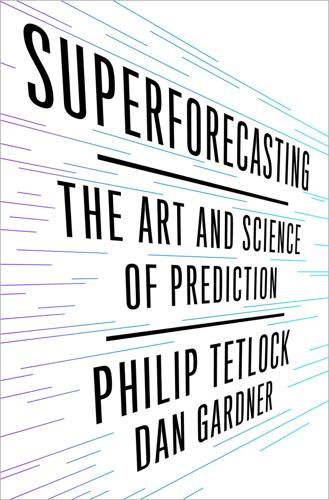
Superforecasting: The Art and Science of Prediction
by
Philip Tetlock
and
Dan Gardner
Published 14 Sep 2015
The solution lay in statistics: Randomly assigning people to one group or the other would mean whatever differences there are among them should balance out if enough people participated in the experiment. Then we can confidently conclude that the treatment caused any differences in observed outcomes. It isn’t perfect. There is no perfection in our messy world. But it beats wise men stroking their chins. This seems stunningly obvious today. Randomized controlled trials are now routine. Yet it was revolutionary because medicine had never before been scientific. True, it had occasionally reaped the fruits of science like the germ theory of disease and the X-ray. And it dressed up as a science. There were educated men with impressive titles who conducted case studies and reported results in Latin-laden lectures at august universities.
…
The rate of the development of science is not the rate at which you make observations alone but, much more important, the rate at which you create new things to test.11 It was the absence of doubt—and scientific rigor—that made medicine unscientific and caused it to stagnate for so long. Putting Medicine to the Test Unfortunately, this story doesn’t end with physicians suddenly slapping themselves on their collective forehead and putting their beliefs to experimental tests. The idea of randomized controlled trials was painfully slow to catch on and it was only after World War II that the first serious trials were attempted. They delivered excellent results. But still the physicians and scientists who promoted the modernization of medicine routinely found that the medical establishment wasn’t interested, or was even hostile to their efforts.
…
If crime went up, that might show the policy was useless or even harmful, or it might mean crime would have risen even more but for the beneficial effects of the policy. Naturally, politicians would claim otherwise. Those in power would say it worked; their opponents would say it failed. But nobody would really know. The politicians would be blind men arguing over the colors of the rainbow. If the government had subjected its policy “to a randomized controlled trial then we might, by now, have known its true worth and be some way ahead in our thinking,” Cochrane observed. But it hadn’t. It had just assumed that its policy would work as expected. This was the same toxic brew of ignorance and confidence that had kept medicine in the dark ages for millennia.
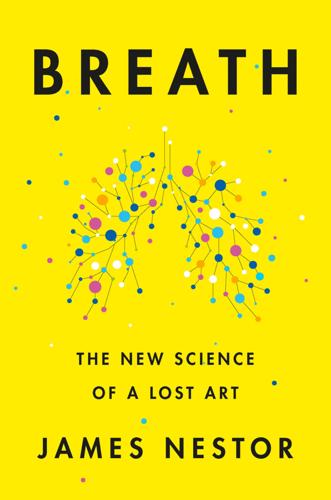
Breath: The New Science of a Lost Art
by
James Nestor
Published 25 May 2020
They are anxious because they’re overbreathing, overbreathing because they’re anxious. Feinstein found some inspiring recent studies by Alicia Meuret, the Southern Methodist University psychologist who helped her patients blunt asthma attacks by slowing their breathing to increase their carbon dioxide. This technique worked for panic attacks, too. In a randomized controlled trial, she and a group of researchers gave 20 panic sufferers capnometers, which recorded the amount of carbon dioxide in their breath throughout the day. Meuret crunched the data and found that panic, like asthma, is usually preceded by an increase in breathing volume and rate and a decrease in carbon dioxide.
…
Breathing way less: Xavier Woorons et al., “Prolonged Expiration down to Residual Volume Leads to Severe Arterial Hypoxemia in Athletes during Submaximal Exercise,” Respiratory Physiology & Neurobiology 158, no. 1 (Aug. 2007): 75–82; Alex Hutchinson, “Holding Your Breath during Training Can Improve Performance,” The Globe and Mail, Feb. 23, 2018, https://www.theglobeandmail.com/life/health-and-fitness/fitness/holding-your-breath-during-training-can-improve-performance/article38089753/. Just a few weeks: E. Dudnik et al., “Intermittent Hypoxia-Hyperoxia Conditioning Improves Cardiorespiratory Fitness in Older Comorbid Cardiac Outpatients without Hematological Changes: A Randomized Controlled Trial,” High Altitude Medical Biology 19, no. 4 (Dec. 2018): 339–43. And much more. A British study of 30 rugby players showed those trained in “normobaric” levels of 13 percent oxygen (equivalent of an altitude of 12,000 feet) had “twofold greater improvements” over controls training in normal sea-level air after just four weeks.
…
Buteyko, et al., Breathe to Heal: Break Free from Asthma (Breathing Normalization) (Breathing Center, 2016), 246; “Buteyko Breathing for Improved Athletic Performance,” Buteyko Toronto, http://www.buteykotoronto.com/buteyko-and-fitness. Sanya Richards-Ross: “Buteyko and Fitness,” Buteyko Toronto, http://www.buteykotoronto.com/buteyko-and-fitness. They all breathed better: Thomas Ritz et al., “Controlling Asthma by Training of Capnometry-Assisted Hypoventilation (CATCH) Versus Slow Breathing: A Randomized Controlled Trial,” Chest 146, no. 5 (Aug. 2014): 1237–47. “very strange happening”: “Asthma Patients Reduce Symptoms, Improve Lung Function with Shallow Breaths, More Carbon Dioxide,” ScienceDaily, Nov. 4, 2014, https://www.sciencedaily.com/releases/2014/11/141104111631.htm. A half-dozen other clinical trials: “Effectiveness of a Buteyko-Based Breathing Technique for Asthma Patients,” ARCIM Institute—Academic Research in Complementary and Integrative Medicine, 2017, https://clinicaltrials.gov/ct2/show/NCT03098849.
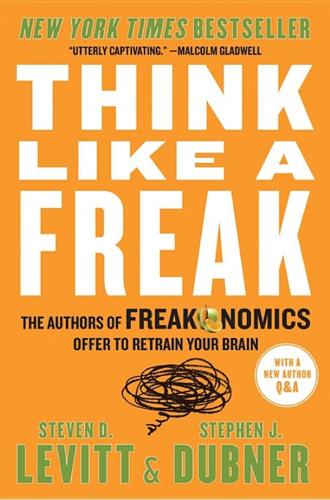
Think Like a Freak
by
Steven D. Levitt
and
Stephen J. Dubner
Published 11 May 2014
One executive told us, with obvious pride, that the company had bought newspaper inserts every single Sunday for the past twenty years in 250 markets across the United States. So how could they tell whether these ads were effective? They couldn’t. With no variation whatsoever, it was impossible to know. What if, we said, the company ran an experiment to find out? In science, the randomized control trial has been the gold standard of learning for hundreds of years—but why should scientists have all the fun? We described an experiment the company might run. They could select 40 major markets across the country and randomly divide them into two groups. In the first group, the company would keep buying newspaper ads every Sunday.
…
Abdul-Jabbar, Kareem, 173 abortion, legalization of, 40, 69, 93 Abraham, story of, 187 Adam and Eve, story of, 187 adoptions, in Japan, 1n adults: dumbing down, 103 and magic, 102–3 advance-fee fraud, 156 advertising: awards programs as, 46–47 effectiveness of, 36–38 Africa: corruption in, 74 ethnic strife in, 74 independence in, 74 African-Americans, heart disease of, 75, 77 airline deaths, 179, 180 Ally Bank, 26–27 al Qaeda, 28 altruism, 121, 130 Amazon, 130 anecdotes, 181–82 Arai, Kazutoyo “the Rabbit,” 54 Arista Records, 208 Asiana Airlines, 179 attention, 102, 183 authority-figure relationships, 125 avatars, 63 Ayalon Institute, The, 152 bacteria: and chickens, 80 fecal transplants, 84–86 gut, healthy, 84–85 Helicobacter pylori, 80–83 hereditary, 83 in human body, 83 spread of, 28 transplantation of, 84–86 and ulcers, 80–86, 95 bank accounts: and life insurance, 163–65 prize-linked savings (PLS), 98–99 savings rates, 97–99 and terrorists, 161–65 Bathsheba, 187 beliefs, 21 Bertoletti, Patrick “Deep Dish,” 60–61 biases, 205 absent in children, 87–88 and opinions, 10, 172 right vs. wrong, 31–32 status-quo, 206 Bible, stories in, 185–88 big thinkers, 89 blind spots, 172 blockbuster drugs, 79 Bloomberg, Michael, 192–93 Bohr, Niels, 23 Bolivia, slavery in, 74 Bolt, Usain, 55 Borody, Thomas, 85–86 brain, as critical in sports, 63 brainstorming, 193 bread baking, 34–35 bribes, 105–6 Buffett, Peter, 119–20 bullet factory, Israeli, 152–54 burglar alarms, 158 Byrds, 138 Cain and Abel, story of, 187 California, electricity use in, 112–15 Cameron, David, 11–16 Cameron, Ivan, 14–15 Camping, Harold, 30 Campylobacter, 80 cancer, false positives, 158 carbon credits, 131–33 Caribbean blacks, 77 cash bounties, 133 causality and correlation, 8–9 cause and effect: in advertising, 36–38 in economics, 26–27 measuring, 26–27, 35, 39 obvious cause, 65 root causes, 66–70, 82–83, 85 Challenger, 197–98 change, bringing about, 90 charity, 117–25 conscience laundering via, 120 fund-raising success, 122 Italian philanthropy, 73 “once-and-done,” 121–24, 130 Operation Smile, 118–19 raising money for, 99–100 relationship with donor, 125–36 Smile Train, 119–24, 130 social-gaming sites for, 100 social pressure in, 121 chatbots, 160–61 Chekhov, Anton, 188 Chestnut, Joey “Jaws,” 60 chickens, and bacteria, 80 children: bribing, 105–6, 130 cash for grades, 109–10 generating ideas, 88 hard to fool, 102–3 having fun, 96, 100 and magic, 101–4 plastic surgery for, 117–24 preconceptions absent in, 87–88 questions answered by, 19–20 questions asked by, 87 reading books, 104, 110 thinking like, 87, 92, 95, 100 in traffic accidents, 178 vision problems of, 91–92 writing for, 104 China: diplomatic relationship with, 126–27 pollution in, 132 store opening in, 196–97 Chiyonofuji “the Wolf,” 52 Churchill, Winston, 189–90, 210 Cialdini, Robert: and California energy study, 112, 113 and Petrified Forest study, 115–16 civic institutions, trust in, 73 civil-rights lawsuits, 40 Clash, The, 208 climate change, 168–71 cobra effect, 133 Cold War, 126 collaborative relationships, 125, 130, 134 collective good, private benefit vs., 7, 29 college applications, 150 Colombia, slavery in, 74 communal incentive, 7, 29 compass: magnetic reading of, 32 moral, 31–34 complexity, seduced by, 94 Concorde fallacy, 191 concrete costs, focus on, 191 conventional wisdom: blind acceptance of, 8 in education reform, 91 running with the herd, 10, 112–15, 172 Cops, 207 core ideas, 8–9 correlation and causality, 8–9 corruption, 66–67 in post-colonial Africa, 74 crime: and abortion, 69, 93 and the economy, 68, 208 and environment, 69 and gun laws, 68 “present-tense” factors, 68–69 root causes of, 67–70 Cultural Cognition Project (CCP), 168–71 curiosity, 87 customers, incentives of, 128–30 Cutler, David, 76 CXO Advisory Group, 24 data, use of, 9 David, King, 138, 187–88 Davis, Clive, 208 Dawkins, Richard, 191 Deane, Geoff, 193–96 decency, treating others with, 134 decision making: coin flips in, 41, 201–5 economic approach in, 9 Freakonomics Experiments, 200–205 soccer penalty kick, 3–7 tradition-based, 39, 78 devil belief, 21 diplomacy, 126–27 DNA sequencing, 83 dogmatism, 25, 102, 171–72 driverless car, 174–77 drug war, 173 drunk walking, 90–91 Dubner, Stephen J., as quitter, 208–9 eating competitions, 53–61 economic approach, 9 economics: cause and effect in, 26–27 free disposal in, 88 Nobel Prize for, 25n predictions in, 25–27 economy: and crime, 68, 207 and religion, 72–73 education: and poverty, 75 and terrorists, 171 education reform, 50–52, 91 Einstein, Albert, 93 Eisen, Jonathan, 83 embezzlement, corporate, 90 Emperor’s new clothes, 88 Encyclopedia of Ethical Failure, The (Epstein), 184–85 energy conservation, 112–15 “entrepreneurs of error,” 22 environment, and crime, 69 Environmental Investigation Agency (EIA), 132 Epstein, Steve, 184–85 error, entrepreneurs of, 22 ethics, failures in, 184–85 Europe, capitalism in, 73 evanescent field effect, 195 excellence, practice leading to, 96 expectations, 8, 63–64, 67, 102 experiments: artificial nature of, 40–41 and brainstorming, 193 in cause and effect, 35–37, 39 evanescent field effect in, 195 expert knowledge in, 39 extrapolation algorithm in, 24 feedback in, 38–47, 192–93 field, 41 Freakonomics, 200–205 on human beings, 81–82 in Intellectual Ventures, 193–94 laboratory, 40–41 in microbes, 84–86 natural, 40 on potential inventions, 193–96 randomized control trials, 37, 39 in social issues, 39–40 wine quality, 42–47 experts: dart-throwing chimps vs., 24 outside their fields of competence, 27–28 practice to become, 96 predicting the future, 23 in scientific experimentation, 39 seriousness of, 96 extrapolation algorithm, 24 eyeglasses, 92n facial hair, 204 facts, opinion vs., 20 failure: celebrating, 193, 195–96 ethical, 184–85 feedback from, 192–93 forecasting, 198–99 of O-rings, 197, 198 premortem on, 199 as victory, 194 false positives, 158–59, 161, 162 famine, causes of, 66–67 fat, eating, 182–83 fecal transplants, 85–86 feedback: bread baking, 34–35 in experiments, 38–47 gathering, 35–38, 62 and learning, 34–38 voting, 35 financial relationships, 125–26, 130 focus, 102 folklore, 78, 80 food prices, 107–8 fortune-tellers, 31 Franklin, Aretha, 208 Freakonomics, 67, 69 Freakonomics Experiments, 200–205 Freaks: becoming, 211 having fun, 95 free disposal, 88 Fryer, Roland, 75–77 fun, 95–98 and children, 96, 100 of Freaks, 95 in music, 208–9 trickery as, 152 work as, 97, 109, 129, 206–8 writing books, 209 gambling, online, 99–100 game theory, 142–43 gamification, 96 gaming the system, 135 genetic racial differences, 77 Germany: Nazi Party in, 73n religion in, 70–73 schoolteachers in, 180–81 Glaeser, Edward, 22 Glewwe, Paul, 91 global warming, 168–71 goals, unattainable, 199–200 “go fever,” 197 Goldstein, Robin, 43–47 golf, 205–6 Good Samaritan laws, 108 Google, and driverless car, 174–76 Great Recession, 68 greenhouse gases, 131–33 guilt, test of, 144–49 gullibility, 102, 159–61 gun laws, 68 hacking, 177 Haganah, 152 “hammers,” 102 happiness: and marriage, 8–9 and quitting, 201, 204–5 HCFC-22, 132 health care: in Britain, 14–16 causes of illness, 83, 85 and folklore, 78, 80 and poverty, 75 ulcers, 78–86 heart disease, blacks with, 75, 77 hedge funds, and taxes, 70 Helicobacter pylori, 80–83 herd mentality: and conventional wisdom, 10 and incentives, 113–15, 172 Herley, Cormac, 157, 159–61 Herron, Tim “Lumpy,” 206n Hitler, Adolf, 189, 210 homicide rates, falling, 67–69 hot-dog-eating contest, 53–61 Hseih, Tony, 151 human body: as a machine, 95 complexity of, 78, 94–95 Hussein, Saddam, 28 hydrofluorocarbon-23 (HFC-23), 131–33 ideas: cooling-off period for, 88 generating, 87–88 junkyard as source of, 94 sorting bad from good, 88 ideology, 172 “I don’t know”: cost of saying, 29 entrepreneurs of error, 22 extrapolation algorithm, 24 and impulse to investigate, 47–48 reluctance to say, 20, 28, 39 as war prevention, 28 ignorance, 168–69 incentives, 105–35 backfiring, 131–34 bribes, 105–6 cash bounties, 133 charity, 117–25 communal, 7, 29 of customers, 128–30 designing, 115, 135 herd-mentality, 112–15, 172 and lying or cheating, 143 as manipulation, 134 money, 107–11, 113, 133 moral, 112–16, 135 for predicting the future, 29–30 social, 112, 113 true, 111–15 understanding, 8 at work, 108–9 income gap, 72–73 India: cobra effect in, 133 pollution in, 132 indulgences, sale of, 70 Industrial Revolution, 13 inmates, freeing, 40 innovation, risks in, 193 insults, 180–81 Intellectual Ventures, 193–94 Internet: predictions about, 26 scams on, 156–58 inventions, 193–95 investigation, impulse of, 47 Iraq War, 28 Israel, bullet factory in, 152–54 Italy, philanthropy in, 73 Janus, Tim “Eater X,” 61 Japan: adoptees in, 1n eating contests in, 55–56 manners in, 57 Jewish Brigade, 153 job application process, 149–52 “Jump” (Van Halen), 138 Kahneman, Daniel, 172 Keegan, John, 210 Kissinger, Henry A., 127 Klein, Gary, 199 knowledge: dogmatic, 25 faking, 22–26, 28–29, 47 and feedback, 34–38 “I don’t know,” 20, 28, 29, 47–48 learned from parents, 50 opinion vs., 20 Kobayashi, Takeru “Kobi,” 52–64, 140n Kobayashi Shake, 59 Krugman, Paul, 25 Langley, John, 207n learning, and feedback, 34–38 Leeson, Peter, 146–47 Lester, David, 33–34 letting go, 210 Levitt, Steven D., as quitter, 205–8 licensing, 51 life insurance, and terrorists, 163–65 limits: accepting or rejecting, 62, 63–64 artificial, 63, 64 lottery: no-lose, 98–99 state monopolies, 99 loved-one relationships, 125–26 Luther, Martin, 70–72 M&M’s: bribing a child with, 105–6 in contract clause, 141–42 magic: and adults, 102–3 and children, 101–4 double lift, 101–2 and perception, 101 watching from below, 103–4 manipulation, 134 Mao Tse-tung, 127 marathons, 204–5 marriage, and happiness, 8–9 Marshall, Barry, 79–83, 84–85, 94–95 MBA, cost of, 191 McAfee anti-virus software, 159 McAuliffe, Christa, 197 McDonald, Allan, 197–98 measurement, 8 medicine: blockbuster drugs, 79 causes of illness, 83 and folklore, 78, 80 heart disease, 75, 77 tradition in, 82 ulcers, 78–86, 94–95 memories, negative, 180 Meng Zhao, 91 Metcalfe’s law, 26 Mexico City, pollution in, 131 microbial cloud, 83 middle ground, choosing, 7 milk necklace, weight of, 107 money: as incentive, 107–11, 113, 133 saving, 97–99 spending, 98–99 throwing good after bad, 191 monopolies, lotteries as, 99 moral compass, 31–34 and suicide, 32–34 moral incentives, 112–16, 135 Morton Thiokol, 197–98 Moses, story of, 187 Mullaney, Brian, 117–25, 130 Myhrvold, Nathan, 195 name-calling, 180–81 NASA, 197–98 Nathan (prophet), 187–88 Nathan’s Famous Fourth of July International Hot Dog Eating Contest, 53–61 National Health Service (NHS), 14–16 natural experiments, 40 negative memories, 180 negative thinking, 64 Newton, Sir Isaac, 89 New York Times, 209 Nicklaus, Jack, 205 Nigerian scam, 154–61, 162 Nixon, Richard M., 127 Nobel Prizes, 25n, 83 no one left to blame, 33–34 “nudge” movement, 172 obesity, 107–8, 182–83 obvious, 65, 92–93, 100 Ohtahara syndrome, 14–15 online gambling, 99–100 Operation Smile, 118–19 opinion, 10, 20, 171–73 opportunity cost, 191–92, 199 overthinking, 103 Palestine, and bullet factory, 152–54 parents: and crime prevention, 70 learning from, 50 and traffic accidents, 178 Park, Albert, 91 patents, 193 Peace of Augsburg, 71 penalty kick (soccer), 3–7, 29 perception, 101 peritonitis, 79 perspective, 104 persuasion: difficulty of, 167–73 it’s not me, 173 name-calling, 180–81 new technology, 174–77 “nudge” movement, 172 opponent’s strength, 177–79 perfect solution, 173–74 storytelling, 181–88 Peru, slavery in, 74 Petrified Forest National Park, Arizona, 115–16 philanthropy, 73 Ping-Pong, 127 planos (glasses with plain lenses), 92n policymakers, 97 political predictions, 23–24, 171 pollution, 131–33, 176 pooling equilibrium, 143 Porter, Roy, 78 postmortem, 199 poverty: causes of, 66 health and education, 75 practice, importance of, 96 predictions: accuracy of, 24 difficult, 23, 176 dogmatism in, 25 economic, 25–27 end of the world, 30 inaccurate, punishments for, 30–31 incentives for, 29–30 in politics, 23–24, 171 of stock markets, 24–25, 29–30 of store opening, 196–97 by witches, 30–31 preferences, declared vs. revealed, 112 premortem, anonymous, 199 pretense, 104 priestly rigging, 146–47, 148–49, 152, 154 private benefit vs. greater good, 7, 29 private-equity firms, 70 prize-linked savings (PLS) account, 98–99 problem solving: asking the wrong questions in, 49–50, 62 attacking the noisy part, 51 barriers to, 63–64 in complex issues, 23, 35, 66–67, 89–90 difficulty of, 2 in eating contests, 53–61 economic approach to, 9 education reform, 50–52 experiments in, see experiments generating ideas, 87–88 incentives understood in, 8 and moral compass, 31–34 negative thinking in, 64 obvious cause, 65, 92–93 “perfect” solution, 173–74 redefining the problem, 52, 61–62 “right” vs.
…
“wrong” way of, 7–8 thinking small, 88–92 Protestant Reformation, 70 Protestant work ethic, 72–73 public policy, 97 punishment, 30–31 pushups, 64 questions: answering “I don’t know,” 20, 22, 24, 28, 29, 39, 47 cause-and-effect, 23 from children, 87 complex, 22, 23, 47–48 in decision making, 202–4 from readers, 1–2 uncomfortable, 167 wrong, asking, 49–50, 62 quitting, 190–210 benefits of, 200 bias against, 191, 192, 205 Freakonomics Experiments, 200–205 and happiness, 201, 204–5 letting go, 210 opportunity cost vs., 191–92 sunk costs vs., 191, 192 unattainable goals, 199–200 racial difference, genetic, 77 randomized control trials, 37 Rapture, 39 Red Herring magazine, 25 relationships: authority-figure, 125 changing, 125–30, 135 collaborative, 125, 130, 134 decision-making about, 202–5 diplomatic, 126–27 financial, 125–26, 130 loved-one, 125–26 us-versus-them, 125 religion: and the economy, 72–73 in Germany, 70–73 and income gap, 72 R.E.M., 208 Right Profile, The, 208–9 right vs. wrong, 31–32 risk, as part of work, 194 risky behavior, 90–91 rock band, 208–9 Roe v.

Don't Trust Your Gut: Using Data to Get What You Really Want in LIfe
by
Seth Stephens-Davidowitz
Published 9 May 2022
Think about it this way: if parents face thousands of decisions and the parents who make far better decisions only have kids who turn out some 26 percent more accomplished, each of the thousands of decisions, by itself, can’t make a large difference. Indeed, the best studies—many of them discussed in important books by Emily Oster—have generally failed to find much effect from even the most-debated parenting techniques. Some examples: The only randomized controlled trial on breastfeeding found that it had no significant long-term effect on a variety of child outcomes. A careful study of television use found that exposure to TV had no long-term effects on child test scores. A careful randomized trial suggests that teaching kids cognitively demanding games, such as chess, doesn’t make them smarter in the long term.
…
gave Jared a stake in his lucrative real estate business: Andrew Prokop, “As Trump takes aim at affirmative action, let’s remember how Jared Kushner got into Harvard,” Vox, July 6, 2018, https://www.vox.com/policy-and-politics/2017/8/2/16084226/jared-kushner-harvard-affirmative-action. randomized controlled trial on breastfeeding: Michael S. Kramer et al., “Effects of prolonged and exclusive breastfeeding on child height, weight, adiposity, and blood pressure at age 6.5 y: Evidence from a large randomized trial,” American Journal of Clinical Nutrition 86(6) (2007): 1717–21. exposure to TV had no long-term effects on child test scores: Matthew Gentzkow and Jesse M.
…
Shapiro, “Preschool television viewing and adolescent test scores: Historical evidence from the Coleman Study,” Quarterly Journal of Economics 123(1) (2008): 279–323. teaching kids cognitively demanding games: John Jerrim et al., “Does teaching children how to play cognitively demanding games improve their educational attainment? Evidence from a randomized controlled trial of chess instruction in England,” Journal of Human Resources 53(4) (2018): 993–1021. careful meta-analysis of bilingual education: Hilde Lowell Gunnerud et al., “Is bilingualism related to a cognitive advantage in children? A systematic review and meta-analysis,” Psychological Bulletin 146(12) (2020): 1059.
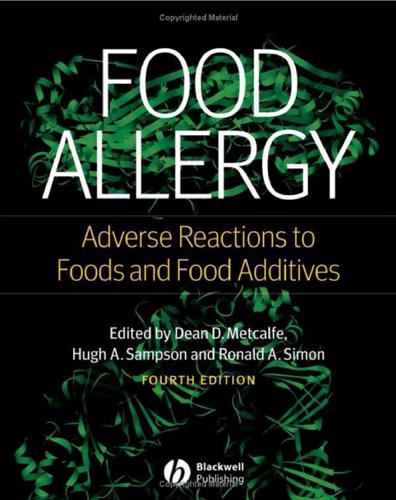
Food Allergy: Adverse Reactions to Foods and Food Additives
by
Dean D. Metcalfe
Published 15 Dec 2008
Probiotics in prevention of IgE-associated eczema: a double blind randomised placebo-controlled trial. J Allergy Clin Immunol 2007;119:1174–80. 104 Taylor AL, Dunstan JA, Prescott SL. Probiotic supplementation for the first 6 months of life fails to reduce the risk of atopic dermatitis and increases the risk of allergen sensitization in high-risk children: a randomized controlled trial. J Allergy Clin Immunol 2007;119:184–91. PA RT 2 Adverse Reactions to Food Antigens: Clinical Science Food Allergy: Adverse Reactions to Foods and Food Additives, 4th edition Edited by Dean D. Metcalfe, Hugh A. Sampson, and Ronald A. Simon © 2008 Blackwell Publishing, ISBN: 978-1-405-15129-0 8 CHAPTER 8 The Spectrum of Allergic Reactions to Foods Stacie M.
…
Comparisons made at 1–2-year and 3–4-year follow-ups with 12 control subjects who did not have food allergy and 5 subjects with food allergy who were noncompliant with their diet showed that the 17 food-allergic subjects with appropriate dietary restriction demonstrated highly significant improvement in their AD compared with the control groups. The amount of time for resolution of their food hypersensitivity was also reduced. Lever et al. [42] performed a randomized, controlled trial of an egg exclusion diet in 55 children who presented to a dermatology clinic with AD and possible egg sensitivity identified by radioallergosorbent (RAST) testing before randomization. True egg sensitivity was confirmed by DBPCFC after the trial. The 55 children were randomized either to a 4-week regimen in which mothers received general advice on the care of AD and additional specific advice from a dietician about an egg elimination diet (diet group), or to a control group in which only general advice was provided.
…
Disulfite-induced acute intermittent urticaria with vasculitis. Dermatology 1993;187:290–2. 117 Wuthrich B. Adverse reactions to food additives. Ann Allergy 1993;71:379–84. 118 Nettis E, Colanardi MC, Ferrannini A, Tursi A. Sodium benzoate-induced repeated episodes of acute urticaria/ angio-oedema: randomized controlled trial. Br J Dermatol 2004;151:898–902. 119 Rance F, Dutau G, Abbal M. Mustard allergy in children. Allergy 2000;55:496–500. 120 Figueroa J, Blanco C, Dumpierrez AG, et al. Mustard allergy confirmed by double-blind placebo-controlled food challenges: clinical features and cross-reactivity with mugwort pollen and plant-derived foods.
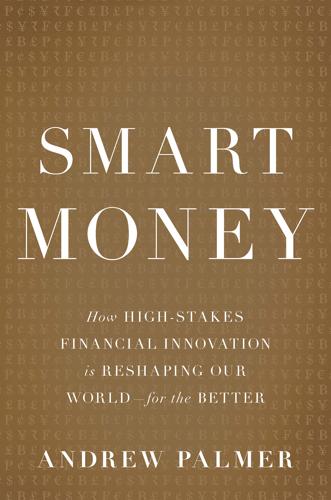
Smart Money: How High-Stakes Financial Innovation Is Reshaping Our WorldÑFor the Better
by
Andrew Palmer
Published 13 Apr 2015
Flowers, 69, 81 Japan, banking crisis in, 75 Japan, financial innovation in, 27, 29, 39–40 Jha, Saumitra, 27 Jiménez-Martín, Sergi, 73 Job creation, young small firms and, 147–148 Joint-stock firms, 23 JPMorgan, 77, 169 Jump-to-default risk, 238 Käärmann, Kristo, 190 Kabbage, 218 Kahneman, Daniel, 47, 137 Kanjorski, Paul, 145 Kauffman Foundation, 158 Kennedy, John F., 32 Keys, Benjamin, 48 Kharroubi, Enisse, 79 Kickstarter, 172 King, Stephen, 99 Klein, David, 182 Krugman, Paul, xv Lahoud, Sal, 166 Lang, Luke, 153, 161–162 Laplanche, Renaud, 179, 184, 188, 190, 193–194, 196–197 Latency, 53 Law of large numbers, 17 Layering, 57 Left-digit bias, 46 Lehman Brothers, x, 44, 65 Lending direct, 84 marketplace, 184 payday, 200 relationship-based, 11, 151, 206–208 secured, xiv, 76 unsecured, 206 See also Loans; Peer-to-peer lending Lending Club, 172, 179–180, 182–184, 187, 189, 194–195, 197 Leonardo of Pisa (Fibonacci), 19 Lerner, Josh, 59 Lethal pandemic, risk-modeling for demographic profile, 230 exceedance-probability curve, 231–232, 232 figure 3 historical data, 228–229 infectiousness and virulence, 229–230 location of outbreak, 230–231 Leverage, 51, 70–71, 80, 186, 188 Leverage ratio, 76–77 Lewis, Michael, 57 Liber Abaci or Book of Calculation (Fibonacci), 19 LIBOR (London Interbank Offered Rate), 41 Liebman, Jeffrey, 98 Life expectancy government reaction to, 128–129 projections of, 124–127, 126 figure 2 ratio of young to older people, 127–128 Life-insurance policies, 142 Life-settlements industry, 142–143 Life table, 20 Limited liability, 212 Liquidity, 12–14, 39, 185–186 List, John, 109 The Little Book of Behavioral Investing (Montier), 156 Lo, Andrew, 113–115, 117–123 Loans low-documentation, 48–49 secured, 76 small business, 181, 216 student, 164, 166–167, 169–171, 182 syndicated, 41 Victory Loans, 28 See also Lending; Peer-to-Peer lending Logistic regression, 201 London, early fire insurance in, 16–17 London, Great Fire of, 16 London Interbank Offered Rate (LIBOR), 41 Long-Term Capital Management, 123 Longevity, betting on, 143–144 Loss aversion, 136 Lotteries, 212, 213 Low-documentation loans, 48–49 Lumni, 165, 168, 175 Lustgarten, Anders, 111 Lynn, Jeff, 160–161 Mack, John, 180 Mahwah, New Jersey, 52, 53 Marginal borrowers assessment of, 216–217 behavioral finance and, 208–214 industrialization of credit, 206 microfinance and, 203 savings schemes, 209–214 small businesses, 215–219 unsecured lending to, 206 Wonga, 203, 205, 208 Marginal borrowers (continued) ZestFinance, 199, 202, 205–206 Maritime piracy, solutions to, 151–152 Maritime trade, role of in history of finance, 3, 7–8, 14, 17, 23 Market makers, 15–16, 55 MarketInvoice, 195, 207, 217–218 Marketplace lending, 184 Markowitz, Harry, 118 Massachusetts, use of inflation-protected bonds in, 26 Massachusetts, use of social-impact bonds in, 98 Matching engine, 52 Maturity transformation, 12–13, 187–188, 193 McKinsey & Company, ix, 42 Mercator Advisory Group, 203 Merrill, Charles, 28 Merrill, Douglas, 199, 201 Merrill Lynch, 28 Merton, Robert, 31, 113–114, 123–124, 129–132, 142, 145 Mian, Atif, 204 Michigan, University of, financial survey by, 134–135 Microfinance, 203 Micropayment model, 217 Microwave technology, 53 The Million Adventure, 213–214 Minsky, Hyman, 42 Minsky moment, 42 Mississippi scheme, 36 Mitchell, Justin, 166–167 Momentum Ignition, 57 Monaco, modeling risk of earthquake in, 227 Money, history of, 4–5 Money illusion, 73–74 Money laundering, 192 Money-market funds, 43, 44 Monkeys, Yale University study of loss aversion with, 136 Montier, James, 156–157 Moody, John, 24 Moody’s, 24, 235 Moore’s law, 114 Morgan Stanley, 188 Mortgage-backed securities, 49, 233 Mortgage credit by ZIP code, study of, 204 Mortgage debt, role of in 2007–2008 crisis, 69–70 Mortgage products, unsound, 36–37 Mortgage securitization, 47 Multisystemic therapy, 96 Munnell, Alicia, 129 Naked credit-default swaps, 143 Nature Biotechnology, on drug-development megafunds, 118 “Neglected Risks, Financial Innovation and Financial Fragility” (Gennaioli, Shleifer, and Vishny), 42 Network effects, 181 New York, skyscraper craze in, 74–75 New York City, prisoner-rehabilitation program in, 108 New York Stock Exchange (NYSE), 31, 52, 53, 61, 64 New York Times, Merrill Lynch ad in, 28 Noncorrelated assets, 122 Nonprofits, growth of in United States, 105–106 Northern Rock, x NYMEX, 60 NYSE Euronext, 52 NYSE (New York Stock Exchange), 31, 52, 53, 61, 64 OECD (Organization for Economic Co-operation and Development), 128, 147 Oldfield, Sean, 67–68, 80–84 OnDeck, 216–218 One Service, 94–95, 105, 112 Operating expense ratio, 188–189 Options, 15, 124 Order-to-trade ratios, 63 Oregon, interest in income-share agreements, 172, 176 Organization for Economic Co-operation and Development (OECD), 128, 147 Overtrading, 24 Packard, Norman, 60 Pandit, Vikram, 184 Park, Sun Young, 233 Partnership mortgage, 81 Pasion, 11 Pave, 166–168, 173, 175, 182 Payday lending Consumer Financial Protection Bureau, survey on, 200 information on applicants, acquisition of, 202 underwriting of, 201 PayPal, 219 Peak child, 127 Peak risk, 228 Peer-to-peer lending advantages of, 187–189 auction system, 195 big investors in, 183 borrowers, assessment of, 197 in Britain, 181 commercial mortgages, 181 CommonBond, 182, 184, 197 consumer credit, 181 diversification, 196 explained, 180 Funding Circle, 181–182, 189, 197 investors in, 195 Lending Club, 179–180, 182–184, 187, 189, 194–195, 197 network effects, 181 ordinary savers and, 184 Prosper, 181, 187, 195 RateSetter, 181, 187, 196 Relendex, 181 risk management, 195–197 securitization, 183–184, 196 Peer-to-peer lending (continued) small business loans, 181 SoFi, 184 student loans, 182 Zopa, 181, 187, 188, 195 Pensions, cost of, 125–126 Perry, Rick, 142–143 Peterborough, England, social-impact bond pilot in, 90–92, 94–95, 104–105, 112 Petri, Tom, 172 Pharmaceuticals, decline of investment in, 114–115 Piracy Reporting Centre, International Maritime Bureau, 151 Polese, Kim, 210 Poor, Henry Varnum, 24 “Portfolio Selection” (Markowitz), 118 Prediction Company, 60–61 Preferred shares, 25 Prepaid cards, 203 Present value of cash flows, 19 Prime borrowers, 197 Prince, Chuck, 50–51, 62 Principal-agent problem, 8 Prisoner rehabilitation programs, 90–91, 94–95, 98, 108, 112 Private-equity firms, 69, 85, 91, 105, 107 Projection bias, 72–73 Property banking crises and, xiv, 69 banking mistakes involving, 75–80 behavioral biases and, 72–75 dangerous characteristics of, 70–72 fresh thinking, need for, xvii, 80 investors’ systematic errors in, 74–75 perception of as safe investment, 76, 80 Prosper, 181, 187, 195 Provisioning funds, 187 Put options, 9, 82 Quants, 19, 63, 113 QuickBooks, 218 Quote stuffing, 57 Raffray, André-François, 144 Railways, affect of on finance, 23–25 Randomized control trials (RCTs), 101 Raphoen, Christoffel, 15–16 Raphoen, Jan, 15–16 RateSetter, 181, 187, 196 RCTs (randomized control trials), 101 Ready for Zero, 210–211 Rectangularization, 125, 126 figure 2 Regulation NMS, 61 Reinhart, Carmen, 35 Reinsurance, 224 Relendex, 181 Rentes viagères, 20 Repurchase “repo” transactions, 15, 185 Research-backed obligations, 119 Reserve Primary Fund, 44 Retirement, funding for anchoring effect, 137–138 annuities, 139 auto-enrollment in pension schemes, 135 auto-escalation, 135–136 conventional funding, 127–128 decumulation, 138–139 government reaction to increased longevity, 128–129 home equity, 139–140 life expectancy, projections of, 124–127, 126 figure 2 life insurance policies, cash-surrender value of, 142 personal retirement savings, 128–129, 132–133 replacement rate, 125 reverse mortgage, 140–142 savings cues, experiment with, 137 SmartNest, 129–131 Reverse mortgages, 140–142 Risk-adjusted returns, 118 Risk appetite, 116 Risk assessment, 24, 45, 77–78, 208 Risk aversion, 116, 215 Risk-based capital, 77 Risk-based pricing model, 176 Risk management, 55, 117–118, 123, 195–197 Risk Management Solutions, 222 Risk sharing, 8, 82 Risk-transfer instrument, 226 Risk weights, 77–78 Rogoff, Kenneth, 35 “The Role of Government in Education” (Friedman), 165 Roman Empire business corporation in, 7 financial crisis in, 36 forerunners of banks in, 11 maritime insurance in, 8 Rotating Savings and Credit Associations (ROSCAs), 209–210 Roulette wheel, use of in experiment on anchoring, 138 Royal Bank of Scotland, 186 Rubio, Marco, 172 Russia, mortgage market in, 67 S-curve, in diffusion of innovations, 45 Salmon, Felix, 155 Samurai bonds, 27 Satsuma Rebellion (1877), 27 Sauter, George, 58 Save to Win, 214 Savings-and-loan crisis in US (1990s), 30 Savings cues, experiment with, 137 Scared Straight social program, 101 Scholes, Myron, 31, 123–124 Science, Technology, and Industry Scoreboard of OECD, 147 Securities and Exchange Commission (SEC), 54, 56, 57, 58, 64 Securities markets, 14 Securitization, xi, 20, 37–38, 117–122, 183–184, 196, 236 Seedrs, 160–161 Sellaband, 159 Shared equity, 80–84 Shared-equity mortgage, 84 Shepard, Chris, xii–xiii Shiller, Robert, xv–xvi, 242 Shleifer, Andrei, 42, 44 Short termism, 58 SIBs.
…
That is like measuring the number of widgets a factory produces in an hour, but not how many of them are sold. The result is that money—a lot of money—is being pumped into programs that are not actually delivering decent results. Between 1990 and 2010, ten federal government social programs in the United States were evaluated using randomized control trials (RCTs), a method of randomly assigning people between one group whose members are receiving certain services and another group whose members are not. Measuring the difference in outcomes between the two tells you how useful a specific program is. Nine of the ten federal programs were found to have weak or no positive effects: they were a waste of taxpayers’ money.4 Some initiatives actually end up doing harm.
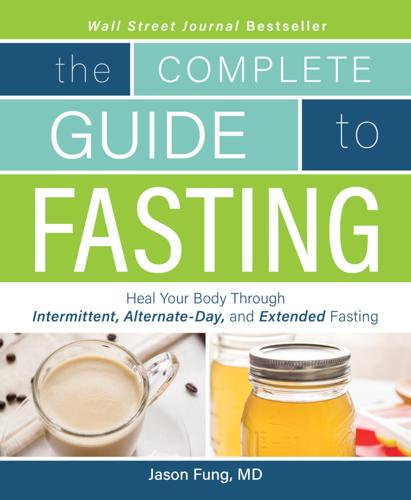
Complete Guide to Fasting: Heal Your Body Through Intermittent, Alternate-Day, and Extended Fasting
by
Jimmy Moore
and
Jason Fung
Published 18 Oct 2016
I, along with thousands of other physicians, had been taught and certainly believed that low-carbohydrate diets were simply a fad and the low-fat diet would prove to be the best. Then studies on the low-carb diet started to appear in the most prestigious medical journal in the world, the New England Journal of Medicine. Randomized controlled trials compared the Atkins diet to the standard low-fat diet that most health-care providers recommended. These studies all came to the same startling conclusion: the low-carb diet was significantly better for weight loss than the low-fat diet. Even more stunning was that all the important risk factors for cardiovascular disease—including cholesterol, blood sugar level, and blood pressure—were also much improved on the low-carb diet.
…
Thorner, “Augmented Growth Hormone (GH) Secretory Burst Frequency and Amplitude Mediate Enhanced GH Secretion During a Two-Day Fast in Normal Men,” Journal of Clinical Endocrinology and Metabolism 74, no. 4 (1992): 757–65. M. R. Blackman, J. D. Sorkin, T. Münzer, M. F. Bellantoni, J. Busby-Whitehead, T. E. Stevens, J. Jayme, et al., “Growth Hormone and Sex Steroid Administration in Healthy Aged Women and Men: A Randomized Controlled Trial,” JAMA 288, no. 18 (2002): 2282–92 Peter R. Kerndt, James L. Naughton, Charles E. Driscoll, and David A. Loxtercamp, “Fasting: The History, Pathophysiology and Complications,” Western Journal of Medicine 137 (1982): 379–99. S. Klein, O. B. Holland, and R. R. Wolfe, “Importance of Blood Glucose Concentration in Regulating Lipolysis During Fasting in Humans,” American Journal of Physiology—Endocrinology and Metabolism 258, no. 1 (1990): E32–E39.
…
The probability of achieving a normal weight by caloric reduction alone was 0.8 percent in women and 0.47 percent in men. So the best-case scenario using conventional calorie-counting methods is a 99.2 percent failure rate. Even the very best study ever done on caloric reduction as a path to lasting weight loss showed that it failed. The Women’s Health Initiative, a gigantic randomized controlled trial, followed almost fifty thousand women over seven and a half years. One group of the women followed a low-fat, low-calorie diet high in grains, fruits, and vegetables and reduced their total daily calories by 361 calories; their percentage of calories from fat was reduced from 38.8 percent to 29.8 percent.
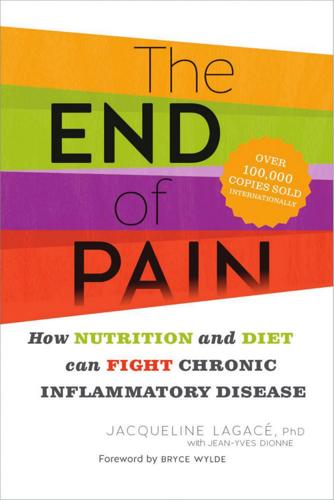
The End of Pain: How Nutrition and Diet Can Fight Chronic Inflammatory Disease
by
Jacqueline Lagace
Published 7 Mar 2014
Bellocco et al., “Dietary calcium and vitamin D in relation to osteoporotic fracture risk,” Bone, vol. 32, 2003, p. 694–03. A. Bischoff-Ferrari, B. Dawson-Hughes, J.A. Baron et al., “Calcium intake and hip fracture risk in men and women: A meta-analysis of prospective cohort studies and randomized controlled trials,” Am J Clin Nutr, vol. 86, 2007, p. 1780–90; J.A. Kanis, H. Johansson, A. Oden et al., “A metaanalysis of milk intake and fracture risk: Low utility for case finding,” Osteoporos Int, vol. 16, 2005, p. 799–04. C.S. Johnston, S.L. Tjonn, P.D. Swan et al., “Low-carbohydrate, highprotein diets that restrict potassium-rich fruits and vegetables promote calciuria,” Osteoporos Int, vol. 17, 2006, p. 1820–21.
…
Kleeman, “Role of bone in regulation of systemic acid-base balance,” Kidney Int, vol. 39, 1991, p. 9–26. 136. H.M. Macdonald, A. J. Black, L. Aucott et al., “Effect of potassium citrate supplementation or increased fruit and vegetable intake on bone metabolism in healthy postmenopausal women: A randomized controlled trial,” Am J Clin Nutr, vol. 88, 2008, p. 465–74; S.A. New, C. Bolton-Smith, D.A. Grubb et al., “Nutritional influences on bone mineral density: A cross-sectional study in menopausal women,” Am J Clin Nutr, vol. 65, 1997, p. 1831–39; H.M. Macdonald, S.A. New, M.H. Golden et al., “Nutritional associations with bone loss during the menopausal transition: Evidence of a beneficial effect of calcium, alcohol, and fruit and vegetable nutrients and of a detrimental effect of fatty acids,” Am J Clin Nutr, vol. 79, 2004, p. 155–65. 137.
…
Ishimoto et al., “The impact of fructose on renal function and blood pressure,” Int J Nephrol, 2011:315879. Epub July 17, 2011. 87. M. Madero, J.C. Arriaga, D. Jalal et al., “The effect of two energy restricted diets, a low-fructose diet versus a moderate natural fructose diet, on weight loss and metabolic syndrome parameters: A randomized controlled trial,” Metabolism, vol. 60, no. 11, 2011, p. 1551–9. 88. D.I. Jalal, G. Smits, R.J. Johnson and M. Chonchol, “Increased fructose associates with elevated blood pressure,” J Am Soc Nephrol, vol. 21, 2010, p. 1543–49. Epub July 1, 2010. 89. Ibid., note 27. 90. Ibid., note 33. 91. D. Stellato, L.F.
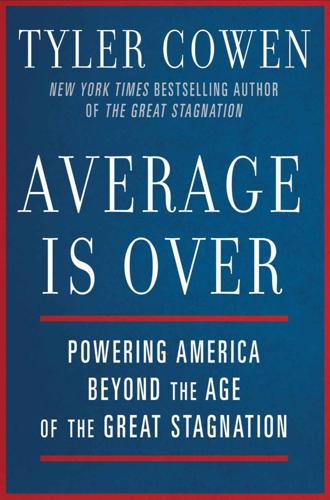
Average Is Over: Powering America Beyond the Age of the Great Stagnation
by
Tyler Cowen
Published 11 Sep 2013
Instructors might answer questions by email, phone, or videoconference, supplemented by periodic meetings, class trips, and “live,” in-the-classroom exams. It’s often for less than half the price of a traditional K–12 schooling experience. The world still awaits systematic, rigorous (randomized control trial) studies of all of these methods of learning, and it is too early to say what is working and what is not. Nonetheless, we do know two things for sure. First, very often the online methods are much cheaper and also more flexible than the previous alternatives. Second, some learners—quite possibly a minority—love the online methods.
…
We still haven’t dispensed with models, because there are a few models we believe in pretty strongly, such as that when price goes up, people usually buy less of that good or service, all other things being held equal. But those are old theories and the real action and value-add comes from the data and its handling, including data from field experiments, laboratory experiments, and from randomized control trials. The underlying models just aren’t getting that much better, and when the underlying models are more complicated, they very often are not more persuasive to the typical research economist. I would sum up the blend as follows: (a) much better data, (b) higher standards for empirical tests, and (c) lots of growth in complex theory but not matched by a corresponding growth in impact.
…
The basic question was a pretty simple one: whether the group with access to the microcredit did better. It turned out they were more likely to have started their own businesses and thus a classic paper was born. Most people see this as the most important study of microcredit, in addition to another large-scale randomized control trial from Dean Karlan at Yale University. It’s a long way from grabbing a publicly available database from a government agency, without much worrying about the quality or meaning of the numbers, and running some regressions. Setting up the entire field experiment is also a uniquely human contribution and it does not approximate any task that is replicable with smart machines.
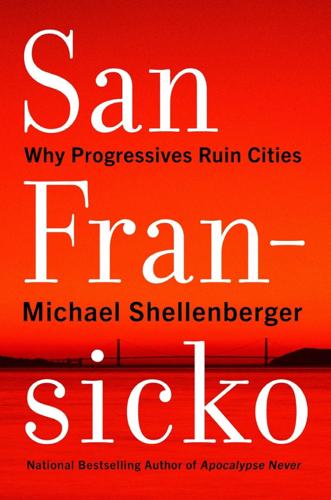
San Fransicko: Why Progressives Ruin Cities
by
Michael Shellenberger
Published 11 Oct 2021
Two-thirds of participants remained abstinent after six months, a very high rate of abstinence, compared to other treatment programs. Other studies found that around 40 percent of homeless in abstinence-contingent housing maintained their abstinence, housing, and jobs.47 In a randomized controlled trial, homeless people were given furnished apartments and allowed to keep them unless they failed a drug test, at which point they were sent to stay in a shelter. Sixty-five percent of participants completed the program.48 Three similar randomized controlled trials also found moderate to high rates of completion. And participants in abstinence-contingent housing had better housing and employment outcomes than participants assigned housing for whom abstinence was not required.49 It turns out that over longer periods of time, Housing First may not even outperform contingency in terms of keeping people housed.
…
On average, a small but significant effect remained even after incentives were discontinued.27 It significantly increased participation in therapy, a key component of addiction recovery.28 Contingency management can also reduce psychiatric hospitalizations, improve financial management, and raise the quality of life for the mentally ill suffering substance abuse disorder.29 A large, randomized controlled trial among the seriously mentally ill, two-thirds of whom were homeless, found that the participants who received the contingency management intervention were 2.4 times more likely to be abstinent than the control group. Contingency management had a very low cost compared to other forms of drug treatment, just over $100 per week per participant.
…
Stitzer, “Use of a Low-Cost Incentive Intervention to Improve Counseling Attendance Among Methadone-Maintained Patients,” Journal of Substance Abuse Treatment 29, no. 4 (2005): 253–58, doi:10.1016/j.jsat.2005.08.004. 29. Alan Bellack et al., “A Randomized Clinical Trial of a New Behavioral Treatment for Drug Abuse in People with Serious and Persistent Mental Illness,” Archives of General Psychiatry 63, no. 4 (2006): 426–32, doi:10.1001/archpsyc.63.4.426. 30. Michael G. McDonell et al., “Randomized Controlled Trial of Contingency Management for Stimulant Use in Community Mental Health Patients with Serious Mental Illness,” American Journal of Psychiatry 170, no. 1 (2012), doi:10.1176/appi.ajp.2012.11121831; Davis et al., “A Review of the Literature on Contingency Management in the Treatment of Substance Use Disorders, 2009–2014.” 31.
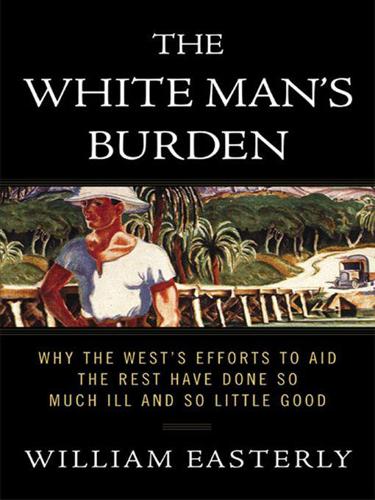
The White Man's Burden: Why the West's Efforts to Aid the Rest Have Done So Much Ill and So Little Good
by
William Easterly
Published 1 Mar 2006
A World Bank study of evaluation in 2000 began with the confession, “Despite the billions of dollars spent on development assistance each year, there is still very little known about the actual impact of projects on the poor.22 After years of pressure, the IMF created an Independent Evaluation Office in 2001. The World Bank in 2004 laudably created a Development Impact Evaluation Task Force. The task force will use the randomized controlled trial methodology discussed in chapter 2 to assess the impact of selected interventions on the intended beneficiaries. The task force has started two dozen new evaluations in five areas (conditional cash transfers in low-income countries; school-based management; contract teachers; use of information as an accountability tool for schools; and slum upgrading programs).
…
There is also the list of thirty-four indicators (none of which involves monitoring “core transmitters”), the nineteen-point terms of reference for the M&E consultant to the NAC, and the “summary terms of reference for specialized programme activity monitoring entity.” The accepted scientific standard for any program evaluation, the randomized controlled trial, did not make it into the manual. The Kitty Genovese Effect Winston Moseley killed Kitty Genovese, a twenty-eight-year-old bar manager, in Queens, New York, in 1964. Her murder is the first news story I remember from my childhood. As Moseley first stabbed Kitty, neighbors heard her screams but didn’t call the police.
…
Perhaps the aid agencies should each set aside a portion of their budgets (such as the part now wasted on self-evaluation) to contribute to an international independent evaluation group made up of staff trained in the scientific method from the rich and poor countries, who will evaluate random samples of each aid agency’s efforts. Evaluation will involve randomized controlled trials where feasible, less pure statistical analysis if not, and will at least be truly independent, even when randomized trials and statistical analysis are not feasible. Experiment with different methods of simply asking the poor if they are better off. Mobilize the altruistic people in rich countries to put heat on the agencies to make their money actually reach the poor, and to get angry when the aid does not reach the poor.
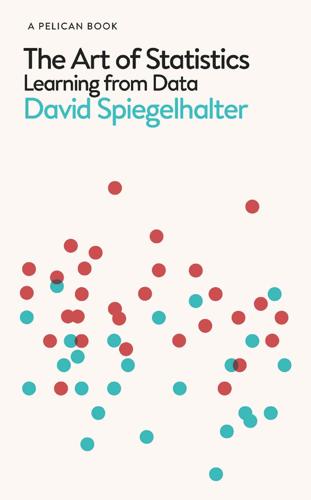
The Art of Statistics: Learning From Data
by
David Spiegelhalter
Published 14 Oct 2019
Allocation of treatment: It is important to compare like with like, so the treatment and comparison groups have to be as similar as possible. The best way to ensure this is by randomly allocating participants to be treated or not, and then seeing what happens to them – this is known as a randomized controlled trial (RCT). Statin trials do this with enough people so that the two groups should be similar in all factors that could otherwise influence the outcome, including – and this is critically important – those factors that we don’t know about. These studies can be huge: in the UK Heart Protection Study carried out in the late 1990s, 20,536 people at raised risk of a heart attack or stroke were randomly allocated to take either 40 mg of simvastatin daily or a dummy tablet.3 People should be counted in the groups to which they were allocated: The people allocated to the ‘statin’ group in the Heart Protection Study (HPS) were included in the final analysis even if they did not take their statins.
…
If both small and large values of T indicate inconsistency with H0, then the two-sided P-value is the probability of observing such a large value in either direction. Often the two-sided P-value is simply taken as double the one-sided P-value, while the R software uses the total probability of events which have a lower probability of occurring than that actually observed. quartiles (of a population): the 25th, 50th and 75th percentiles. randomized controlled trial (RCT): an experimental design in which people or other units being tested are randomly allocated to different interventions, thus ensuring, up to the play of chance, that the groups are balanced in both known and unknown background factors. If the groups show subsequent differences in outcome, then either the effect must be due to the intervention or a surprising event has occurred, whose probability can be expressed as a P-value.
…
Locators in italics refer to figures and tables A A/B tests 107 absolute risk 31–2, 36–7, 383 adjustment 110, 133, 135, 383 adjuvant therapy 181–5, 183–4 agricultural experiments 105–6 AI (artificial intelligence) 144–5, 185–6, 383 alcohol consumption 112–13, 299–300 aleatory uncertainty 240, 306, 383 algorithms – accuracy 163–7 – biases 179 – for classification 143–4, 148 – complex 174–7 – contests 148, 156, 175, 277–8 see also Titanic challenge – meaning of 383 – parameters 171 – performance assessment 156–63, 176, 177 – for prediction 144, 148 – robustness 178 – sensitivity 157 – specificity 157 – and statistical variability 178–9 – transparency 179–81 allocation bias 85 analysis 6–12, 15 apophenia 97, 257 Arbuthnot, John 253–5 Archbishop of Canterbury 322–3 arm-crossing behaviour 259–62, 260, 263, 268–70, 269 artificial intelligence (AI) 144–5, 185–6, 383 ascertainment bias 96, 383 assessment of statistical claims 368–71 associations 109–14, 138 autism 113 averages 46–8, 383 B bacon sandwiches 31–4 bar charts 28, 30 Bayes, Thomas 305 Bayes factors 331–2, 333, 384 Bayes’ Theorem 307, 313, 315–16, 384 Bayesian hypothesis testing 219, 305–38 Bayesian learning 331 Bayesian smoothing 330 Bayesian statistical inference 323–34, 325, 384 beauty 179 bell-shaped curves 85–91, 87 Bem, Daryl 341, 358–9 Bernoulli distribution 237, 384 best-fit lines 125, 393 biases 85, 179 bias/variance trade-off 169–70, 384 big data 145–6, 384 binary data 22, 385 binary variables 27 binomial distribution 230–6, 232, 235, 385 birth weight 85–91 blinding 101, 385 BMI (body mass index) 28 body mass index (BMI) 28 Bonferroni correction 280, 290–1, 385 boosting 172 bootstrapping 195–203, 196, 198, 200, 202, 208, 229–30, 386 bowel cancer 233–6, 235 Box, George 139 box-and-whisker plots 42, 43, 44, 45 Bradford-Hill, Austin 114 Bradford-Hill criteria 114–17 brain tumours 95–6, 135, 301–3 breast cancer screening 214–16, 215 breast cancer surgery 181–5, 183–4 Brier score 164–7, 386 Bristol Royal Infirmary 19–21, 56–8 C Cairo, Alberto 25, 65 calibration 161–3, 162, 386 Cambridge University 110, 111 cancer – breast 181–5, 183–4, 214–16, 215 – lung 98, 114, 266 – ovarian 361 – risk of 31–6 carbonated soft drinks 113 Cardiac Surgical Registry (CSR) 20–1 case-control studies 109, 386 categorical variables 27–8, 386 causation 96–9, 114–17, 128 reverse causation 112–15, 404 Central Limit Theorem 199, 238–9, 386–7 chance 218, 226 child heart surgery see heart surgery chi-squared goodness-of-fittest 271, 272, 387 chi-squared test of association 268–70, 387 chocolate 348 classical probability 217 classification 143–4, 148–54 classification trees 154–6, 155, 168, 174, 387 cleromancy 81 clinical trials 82–3, 99–107, 131, 280, 347 clustering 147 cohort studies 109, 387 coins 308, 309 communication 66–9, 353, 354, 364–5 complex algorithms 138–9 complexity parameters 171 computer simulation 205–7, 208 conclusions 15, 22, 347 conditional probability 214–16 confidence intervals 241–4, 243, 248–51, 250, 271–3, 335–6, 387–8 confirmatory studies 350–1, 388 confounders 110, 135, 388 confusion matrixes 157 continuous variables 46, 388 control groups 100, 389 control limits 234, 389 correlation 96–7, 113 count variables 44–6, 389 counterfactuals 97–8, 389 crime 83–5, 321–2 see also homicides Crime Survey for England and Wales 83–5 cross-sectional studies 108–9 cross-validation 170–1, 389 CSR(Cardiac Surgical Registry) 20–1 D Data 7–12, 15, 22 data collection 345 data distribution see sample distribution data ethics 371 data literacy 12, 389 data science 11, 145–6, 389 data summaries 40 data visualization 22, 25, 65–6, 69 data-dredging 12 death 9 see also mortality; murder; survival rates deduction 76 deep learning 147, 389 dependent events 214, 389 dependent variables 60, 125–6, 389 deterministic models 128–9, 138 dice 205–7, 206, 213 differences between groups of numbers 51–6 distribution 43 DNA evidence 216 dogs 179 Doll, Richard 114 doping 310–13, 311–12, 314, 315–16 dot-diagrams 42, 43, 44, 45 dynamic graphics 71 E Ears 108–9 education 95–6, 106–7, 131, 135, 178–9 election result predictions 372–6, 375 see also opinion polls empirical distribution 197, 404 enumerative probability 217–18 epidemiology 95, 117, 389 epistemic uncertainty 240, 306, 308, 309, 390 error matrixes 157, 158, 390 errors in coding 345–6 ESP (extra-sensory perception) 341, 358–9 ethics 371 eugenics 39 expectation 231, 390 expected frequencies 32, 209–13, 211, 214–16, 215, 390 explanatory variables 126, 132–5 exploratory studies 350, 390 exposures 114, 390 external validity 82–3, 390 extra-sensory perception (ESP) 341, 358–9 F False discovery rate 280, 390 false-positives 278–80, 390 feature engineering 147, 390 Fermat, Pierre de 207 final odds 316 financial crisis of 2007–2008 139–40 financial models 139–40 Fisher, Ronald 258, 265–6, 336, 345 five-sigma results 281–2 forensic epidemiology 117, 391 forensic statistics 6 framing 391 – of numbers 24–5 – of questions 79–80 fraud 347–50 funnel plots 234, 391 G Gallup, George 81 Galton, Francis 39–40, 58, 121–2, 238–9 gambler’s fallacy 237 gambling 205–7, 206, 213 garden of forking paths 350 Gaussian distribution see normal distribution GDP (Gross Domestic Product) 8–9 gender discrimination 110, 111 Gini index 49 Gombaud, Antoine 205–7 Gross Domestic Product (GDP) 8–9 Groucho principle 358 H Happiness 9 HARKing 351–2 hazard ratios 357, 391 health 169–70 heart attacks 99–104 Heart Protection Study (HPS) 100–2, 103, 273–5, 274, 282–7 heart surgery 19–21, 22–4, 23, 56–8, 57, 93, 136–8, 137 heights 122–5, 123, 124, 127, 134, 201, 202, 243, 275–8, 276 hernia surgery 106 HES (Hospital Episode Statistics) 20–1 hierarchical modelling 328, 391 Higgs bosons 281–2 histograms 42, 43, 44, 45 homicides 1–6, 222–6, 225, 248, 270–1, 272, 287–94 Hospital Episode Statistics (HES) 20–1 hospitals 19–21, 25–7, 26, 56–61, 138 house prices 48, 112–14 HPS (Heart Protection Study) 100–2, 103, 273–5, 274, 282–7 hypergeometric distribution 264, 391 hypotheses 256–7 hypothesis testing 253–303, 336, 392 see also Neyman-Pearson Theory; null hypothesis significance testing; P-values I IARC (International Agency for Research in Cancer) 31 icon arrays 32–4, 33, 392 income 47–8 independent events 214, 392 independent variables 60, 126, 392 induction 76–7, 392 inductive behaviour 283 inductive inference 76–83, 78, 239, 392 infographics 69, 70 insurance 180 ‘intention to treat’ principle 100–1, 392 interactions 172, 392 internal validity 80–1, 392 International Agency for Research in Cancer (IARC) 31 inter-quartile range (IQR) 51, 89, 392 IQ 349 IQR (inter-quartile range) 49, 51, 89, 392 J Jelly beans in a jar 40–6, 48, 49, 50 K Kaggle contests 148, 156, 175, 277–8 see also Titanic challenge k-nearest neighbors algorithm 175 L LASSO 172–4 Law of Large Numbers 237, 393 law of the transposed conditional 216, 313 league tables 25, 130–1 see also tables least-squares regression lines 124, 125, 393 left-handedness 113–14, 229–33, 232 legal cases 313, 321, 331–2 likelihood 327, 336, 394 likelihood ratios 314–23, 319–20, 332, 394 line graphs 4, 5 linear models 132, 138 literal populations 91–2 logarithmic scale 44, 45, 394 logistic regression 136, 172, 173, 394 London Underground 24 loneliness 80 long-run frequency probability 218 look elsewhere effect 282 lung cancer 98, 114, 266 lurking factors 113, 135, 394–5 M Machine learning 139, 144–5, 395 mammography 214–16, 215 margins of error 189, 199, 200, 244–8, 395 mean average 46–8 mean squared error (MSE) 163–4, 165, 395 measurement 77–9 meat 31–4 media 356–8 median average 46, 47–8, 51, 89, 395 Méré, Chevalier de 205–7, 213 meta-analysis 102, 104, 395 metaphorical populations 92–3 mode 46, 48, 395 mortality 47, 113–14 MRP (multilevel regression and post-stratification) 329, 396 MSE (mean squared error) 163–4, 165, 395 mu 190 multilevel regression and post-stratification (MRP) 329, 396 multiple linear regression 132–3, 134 multiple regression 135, 136, 396 multiple testing 278–80, 290, 396 murders 1–6, 222–6, 225, 248, 270–1, 287–94 N Names, popularity of 66, 67 National Sexual Attitudes and Lifestyle Survey (Natsal) 52, 69, 70, 73–5 natural variability 226 neural networks 174 Neyman, Jerzy 242, 283, 335–6 Neyman-Pearson Theory 282–7, 336–7 NHST (null hypothesis significance testing) 266–71, 294–7, 296 non-significant results 299, 346–7, 370 normal distribution 85–91, 87, 226, 237–9, 396–7 null hypotheses 257–65, 336, 397 null hypothesis significance testing (NHST) 266–71, 294–7, 296 O Objective priors 327 observational data 108, 114–17, 128 odds 34, 314, 316 odds ratios 34–6 one-sided tests 264, 397–8 one-tailed P-values 264, 398 opinion polls 82, 245–7, 246, 328–9 see also election result predictions ovarian cancer 361 over-fitting 167–71, 168 P P-hacking 351 P-values 264–5, 283, 285, 294–303, 336, 401 parameters 88, 240, 398 Pascal, Blaise 207 patterns 146–7 Pearson, Egon 242, 283, 336 Pearson, Karl 58 Pearson correlation coefficient 58, 59, 96–7, 126, 398 percentiles 48, 89, 398–9 performance assessment of algorithms 156–67, 176, 177 permutation tests 261–4, 263, 399 personal probability 218–19 pie charts 28, 29 placebo effect 131 placebos 100, 101, 399 planning 13–15, 344–5 Poisson distribution 223–4, 225, 270–1, 399 poker 322–3 policing 107 popes 114 population distribution 86–91, 195, 399 population growth 61–6, 62–4 population mean 190–1, 395 see also expectation populations 74–5, 80–93, 399 posterior distributions 327, 400 power of a test 285–6, 400 PPDAC (Problem, Plan, Data, Analysis, Conclusion) problem-solving cycle 13–15, 14, 108–9, 148–54, 344–8, 372–6, 400 practical significance 302, 400 prayer 107 precognition 341, 358–9 Predict 2.1 182 prediction 144, 148–54 predictive analytics 144, 400 predictor variables 392 pre-election polls see opinion polls presentation 22–7 press offices 355–6 priming 80 prior distributions 327, 400 prior odds 316 probabilistic forecasts 161, 400 probabilities, accuracy 163–7 probability 10 meaning of 216–22, 400–1 rules of 210–13 and uncertainty 306–7 probability distribution 90, 401 probability theory 205–27, 268–71 probability trees 210–13, 212 probation decisions 180 Problem, Plan, Data, Analysis, Conclusion (PPDAC) problem-solving cycle 13–15, 14, 108–9, 148–54, 344–8, 372–6, 400 problems 13 processed meat 31–4 propensity 218 proportions, comparisons 28–37, 33, 35 prosecutor’s fallacy 216, 313 prospective cohort studies 109, 401 pseudo-random-number generators 219 publication bias 367–8 publication of findings 355 Q QRPs (questionable research practices) 350–3 quartiles 89, 402 questionable research practices (QRPs) 350–3 Quetelet, Adolphe 226 R Race 179 random forests 174 random match probability 321, 402 random observations 219 random sampling 81–2, 208, 220–2 random variables 221, 229, 402 randomization 108, 266 randomization tests 261–4, 263, 399 randomized controlled trials (RCTs) 100–2, 105–7, 114, 135, 402 randomizing devices 219, 220–1 range 49, 402 rate ratios 357, 402 Receiver Operating Characteristic (ROC) curves 157–60, 160, 402 recidivism algorithms 179–80 regression 121–40 regression analysis 125–8, 127 regression coefficients 126, 133, 403 regression modelling strategies 138–40 regression models 171–4 regression to the mean 125, 129–32, 403 regularization 170 relative risk 31, 403 reliability of data 77–9 replication crisis in science 11–12 representative sampling 82 reproducibility crisis 11–12, 297, 342–7, 403 researcher degrees of freedom 350–1 residual errors 129, 403 residuals 122–5, 403 response variables 126, 135–8 retrospective cohort studies 109, 403 reverse causation 112–15, 404 Richard III 316–21 risk, expression of 34 robust measures 51 ROC (Receiver Operating Characteristic) curves 157–60, 160, 402 Rosling, Hans 71 Royal Statistical Society 68, 79 rules for effective statistical practice 379–80 Ryanair 79 S Salmon 279 sample distribution 43 sample mean 190–1, 395 sample size 191, 192–5, 193–4, 283–7 sampling 81–2, 93 sampling distributions 197, 404 scatter-plots 2–4, 3 scientific research 11–12 selective reporting 12, 347 sensitivity 157–60, 404 sentencing 180 Sequential Probability Ratio Test (SPRT) 292, 293 sequential testing 291–2, 404 sex ratio 253–5, 254, 261, 265 sexual partners 47, 51–6, 53, 55, 73–5, 191–201, 193–4, 196, 198, 200 Shipman, Harold 1–6, 287–94, 289, 293 shoe sizes 49 shrinkage 327, 404 sigma 190, 281–2 signal and the noise 129, 404 significance testing see null hypothesis significance testing Silver, Nate 27 Simonsohn, Uri 349–52, 366 Simpson’s Paradox 111, 112, 405 size of a test 285–6, 405 skewed distribution 43, 405 smoking 98, 114, 266 social acceptability bias 74 social physics 226 Somerton, Francis see Titanic challenge sortilege 81 sortition 81 Spearman’s rank correlation 58–60, 405 specificity 157–9, 405 speed cameras 130, 131–2 speed of light 247 sports doping 310–13, 311–12, 314, 315–16 sports teams 130–1 spread 49–51 SPRT (Sequential Probability Ratio Test) 292, 293 standard deviation 49, 88, 126, 405 standard error 231, 405–6 statins 36–7, 99–104, 273–5, 274, 282–7 statistical analysis 6–12, 15 statistical inference 208, 219, 229–51, 305–38, 323–8, 335, 404 statistical methods 12, 346–7, 379 statistical models 121, 128–9, 404 statistical practice 365–7 statistical science 2, 7, 404 statistical significance 255, 265–8, 270–82, 404 Statistical Society 68 statistics – assessment of claims 368–71 – as a discipline 10–11 – ideology 334–8 – improvements 362–4 – meaning of 404 – publications 16 – rules for effective practice 379–80 – teaching of 13–15 STEP (Study of the Therapeutic Effects of Intercessory Prayer) 107 storytelling 69–71 stratification 110, 383 Streptomycin clinical trial 105, 114 strip-charts 42, 43, 44, 45 strokes 99–104 Student’s t-statistic 275–7 Study of the Therapeutic Effects of Intercessory Prayer (STEP) 107 subjective probability 218–19 summaries 40, 49, 50, 51 supermarkets 112–14 supervised learning 143–4, 404 support-vector machines 174 surgery – breast cancer surgery 181–5, 183–4 – heart surgery 19–21, 22–4, 23, 56–8, 57, 93, 136–8, 137 – hernia surgery 106 survival rates 25–7, 26, 56–61, 57, 60–1 systematic reviews 102–4 T T-statistic 275–7, 404 tables 22–7, 23 tail-area 231 tea tasting 266 teachers 178–9 teaching of statistics 13–15 technology 1 telephone polls 82 Titanic challenge 148–56, 150, 152–3, 155, 162, 166–7, 172, 173, 175, 176, 177, 277 transposed conditionals, law of 216, 313 trees 7–8 trends 61–6, 62–4, 67 two-sided tests 265, 397–8 two-tailed P-values 265, 398 Type I errors 283–5, 404 Type II errors 283–5, 407 U Uncertainty 208, 240, 306–7, 383, 390 uncertainty intervals 199, 200, 241, 335 unemployment 8–9, 189–91, 271–3 university education 95–6, 135, 301–3 see also Cambridge University unsupervised learning 147, 407 US Presidents 167–9 V Vaccination 113 validity of data 79–83 variability 10, 49–51, 178–9, 407 variables 27, 56–61 variance 49, 407 Vietnam War draft lottery 81–2 violence 113 virtual populations 92 volunteer bias 85 voting age 79–80 W Waitrose 112–14 weather forecasts 161, 164, 165 weight loss 348 ‘When I’m Sixty-Four’ 351–2 wisdom of crowds 39–40, 48, 51, 407 Z Z-scores 89, 407 PELICAN BOOKS Economics: The User’s Guide Ha-Joon Chang Human Evolution Robin Dunbar Revolutionary Russia: 1891–1991 Orlando Figes The Domesticated Brain Bruce Hood Greek and Roman Political Ideas Melissa Lane Classical Literature Richard Jenkyns Who Governs Britain?
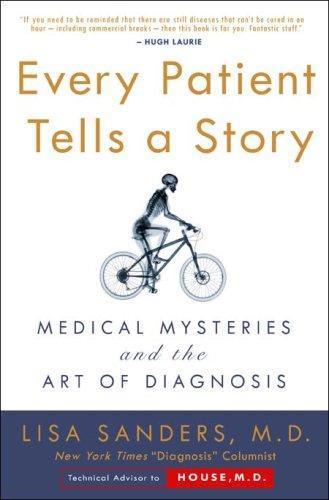
Every Patient Tells a Story
by
Lisa Sanders
Published 15 Jan 2009
Instead a small but vocal group of doctors and patients refused to accept these results, refused even to accept the designation of Post–Lyme Disease syndrome. They clung, instead, to “chronic Lyme disease” and insisted that these symptoms did reflect an ongoing infection that warranted continuing treatment with antibiotics. They countered the randomized controlled trials with research of their own, which often showed improvement in patients given antibiotics. But none of these studies compared the antibiotics against a placebo. The randomized controlled trials showed that while patients getting antibiotics did improve, so did those getting the saltwater placebo. Studies done without the placebo had no way of telling whether the antibiotics were really effective or if the improvement was due to something in the normal ebbs and flows of any human condition.
…
Blood tests have exploded in number and accuracy, providing doctors with tools to help make a definitive diagnosis in an entire alphabet of diseases from anemias to zoonoses. Better diagnosis led to better therapies. For centuries, physicians had little more than compassion with which to help patients through their illnesses. The development of the randomized controlled trial and other statistical tools made it possible to distinguish between therapies that worked and those that had little to offer beyond the body’s own recuperative powers. Medicine entered the twenty-first century stocked with a pharmacopeia of potent and effective tools to treat a broad range of diseases.

Calling Bullshit: The Art of Scepticism in a Data-Driven World
by
Jevin D. West
and
Carl T. Bergstrom
Published 3 Aug 2020
Obviously this is ridiculous, but they conducted a scientific experiment testing it anyway. They ran a randomized controlled trial in which they had each subject listen either to the Beatles song or to a control song. Remarkably, they found that while people who listened to each song should have been the same age, people who heard “When I’m Sixty-Four” were, on average, a year and a half younger than people who heard the control. Moreover, this difference was significant at the p < 0.05 level! Because the study was a randomized controlled trial, the usual inference would be that the treatment—listening to the song—had a causal effect on age.
…
Unlike previous observational studies, this study found that offering a wellness program had no statistically significant effect on healthcare costs or absenteeism, nor did it increase gym visits and similar types of physical activity. (The one useful thing that the wellness program did was to increase the fraction of participants who underwent a health screening.) The figure on this page summarizes these results. The randomized controlled trial found that being offered the wellness program had no effect on fitness activities, employee retention, or medical costs. But why? Previous studies largely found beneficial effects. Was there something particularly ineffective about how the Illinois wellness program was designed? Or did this point to selection effects in the previous studies?
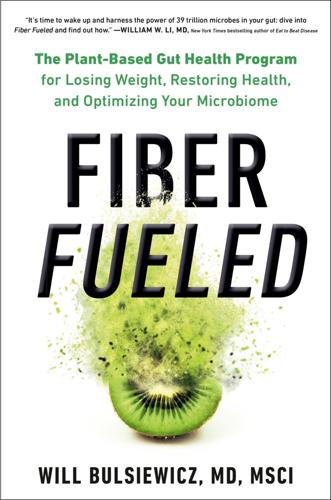
Fiber Fueled: The Plant-Based Gut Health Program for Losing Weight, Restoring Your Health, and Optimizing Your Microbiome
by
Will Bulsiewicz
Published 15 Dec 2020
And in similar fashion, what if a high-fiber, plant-centered diet proved to be beneficial for other autoimmune, inflammatory conditions? Well, it does. In humans, a vegan diet has repeatedly been demonstrated to be beneficial for disease remission in rheumatoid arthritis. For example, in a randomized controlled trial 41 percent of patients on a vegan diet showed clinical improvement of their rheumatoid arthritis compared to just 4 percent on a “well-balanced” non-vegan diet. So not only do SCFAs correct dysbiosis and heal leaky gut, but they also create a powerful link between the microbiome and immune system that serves to make the immune system work properly.
…
In fact, whole-grain bread, whole-grain cereals, wheat bran, and brown rice were all found to be protective on sub-analysis, while white rice actually increased risk. I can’t write a gut health book without showing you what happens to your microbes when you consume whole grains. In a randomized controlled trial, study subjects who substituted whole grains for refined grains saw growth of SCFA-producing bacteria Lachnospira, increased SCFA levels, and a decrease in pro-inflammatory Enterobacteriaceae. They also noted improvement in the immune system and no effect on gut inflammation. In other words, whole grains were good for the gut.
…
Your blood pressure and cholesterol drop to the point of tapering your drug. Your blood sugar balances and the diabetes disappears. And your risk for having a heart attack or developing colon cancer just got chopped in half. There are literally hundreds of studies to support beans. Let me share just one example. In a randomized, controlled trial of a legume-packed diet versus legume-free, the researchers held the number of calories constant so that it was about nutrients and not calories. What they saw in the legume group was shocking. The C-reactive protein, a marker of inflammation, dropped by 40 percent. Blood pressure and cholesterol both dropped.
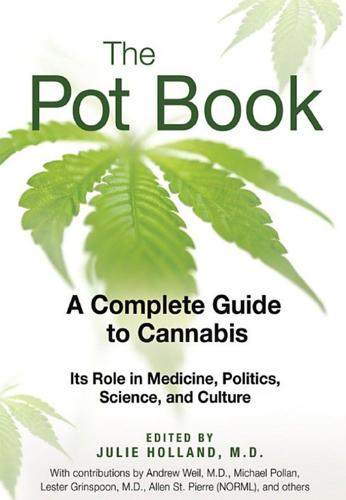
The Pot Book: A Complete Guide to Cannabis
by
Julie Holland
Published 22 Sep 2010
One is other drug use. That is, if cannabis is a gateway drug to the use of other drugs such as hallucinogens, then it may be the other drugs that are really contributing to schizophrenia, not the original cannabis use. Also, causation cannot be definitively established short of doing what is called a randomized controlled trial, in which cannabis would be administered to healthy young people at random who would then be followed to see who developed psychosis. Clearly this alternative is unethical. But the problem with the prospective cohort study is that people may have characteristics that increase risk for both the exposure and the outcome.
…
The annual incidence of symptomatic peripheral neuropathy associated with HIV/AIDS has been estimated at 36 percent (Schifitto et al. 2002), with estimates of the prevalence of neuropathy of 30 to 55 percent, rising with severity of disease (Husstedt et al. 2000). CANNABIS AND HIV-ASSOCIATED PAIN The treatment of pain is an important reason why many persons living with HIV use cannabis. To date, no randomized, controlled trials of prescription cannabinoid products for HIV-associated pain have been conducted, but there have been several studies of the safety and efficacy of smoked cannabis for HIV-associated peripheral neuropathy. Donald Abrams and his team pioneered the studies of cannabis and HIV/ AIDS with a safety study evaluating the effects of oral THC and smoked cannabis on plasma levels of antiretroviral medications.
…
Accessed May 7, 2010. Baker, D., G. Pryce, J. L. Croxford, et al. “Cannabinoids Control Spasticity and Tremor in a Multiple Sclerosis Model.” Nature 404 (2000): 84–87. Barber, E. M. Pre-historic Textiles. Princeton, NJ: Princeton University Press, 1989. Barrowclough, C., G. Haddock, N. Tarrier, et al. “Randomized Controlled Trial of Motivational Interviewing, Cognitive Behavior Therapy, and Family Intervention for Patients with Comorbid Schizophrenia and Substance Use Disorders.” American Journal of Psychiatry 158 (2001): 1706–13. Beal, J. E., R. Olson, L. Laubenstein, et al. “Dronabinol as a Treatment for Anorexia Associated with Weight Loss in Patients with AIDS.”
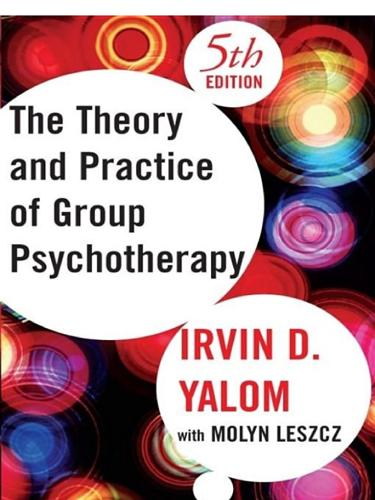
Theory and Practice of Group Psychotherapy
by
Irvin D. Yalom
and
Molyn Leszcz
Published 1 Jan 1967
At the same time, the bottom dropped out of funding sources for research on longer-term therapy, despite a strong clinical consensus about the importance of such research. In time we expect that this trend will be reversed and that more investigation of the effectiveness of psychotherapy in the real world of practice will be undertaken to supplement the knowledge accruing from randomized controlled trials of brief therapy. Another consideration is that, unlike in the physical sciences, many aspects of psychotherapy inherently defy quantification. Psychotherapy is both art and science; research findings may ultimately shape the broad contours of practice, but the human encounter at the center of therapy will always be a deeply subjective, nonquantifiable experience.
…
Barlow et al., “Leader Communication Style: Effects on Members of Small Groups,” Small Group Behavior 13 (1982): 513–81. 62 S. Borgers, “Uses and Effects of Modeling by the Therapist in Group Therapy,” Journal for Specialists in Group Work 8 (1983): 133–39. 63 E. Kuipers et al., “London–East Anglia Randomized Controlled Trial of Cognitive-Behaviour Therapy for Psychosis: I. Effects of the Treatment Phase,” British Journal of Psychiatry 171 (1997): 319–27. 64 A. Bandura, E. Blanchard, and B. Ritter, “The Relative Efficacy of Desensitization and Modeling Approaches for Inducing Behavioral, Affective, and Attitudinal Changes,” Journal of Personality and Social Psychology 13 (1969): 173–99.
…
British Journal of Cancer 74 (1996): 1275–79. 35 I. Yalom, Existential Psychotherapy (New York: Basic Books, 1980). 36 L. Baider, “Psychological Intervention with Couples After Mastectomy,” Support Care Cancer 3 (1995): 239–43. B. Bultz, M. Speca, P. Brasher, P. Geggie, and S. Page, “A Randomized Controlled Trial of a Brief Psychoeducational Support Group for Partners of Early Stage Breast Cancer Patients,” Psycho-Oncology 9 (2000): 303–13. 37 Leszcz, “Group Therapy.” 38 S. Folkman and S. Greer, “Promoting Psychological Well-Being in the Face of Serious Illness: When Theory, Research, and Practice Inform Each Other,” Psycho-Oncology 9 [2000]: 11–19.)
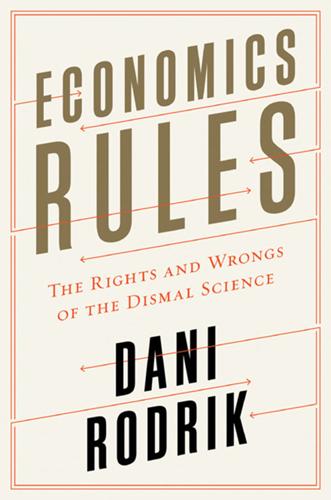
Economics Rules: The Rights and Wrongs of the Dismal Science
by
Dani Rodrik
Published 12 Oct 2015
In development economics, new evidence has led to policy innovations in health, education, and finance that have the potential to improve the lives of hundreds of millions of people. Another way we can observe the transformation of the discipline is by looking at the new areas of research that have flourished in recent decades. Three of these are particularly noteworthy: behavioral economics, randomized controlled trials (RCTs), and institutions. What’s striking is that all these areas have been greatly influenced, and in fact stimulated, by fields from outside economics—psychology, medicine, and history, respectively. Their growth disproves the claim that economics is insular and ignores the contributions of other cognate disciplines.
…
Hirschman” (Lepenies), 211n Post-Crash Economics Society (PCES), 197 precommitment strategies, 63 Prescott, Edward C., 101n pressure groups, 187 price ceilings, 28 price controls, 28–29, 94–97, 150, 185 price elasticities, 14, 180–81 price fixing, 179 prices: in bubbles, 152–58 business cycles and, 125–26, 129, 132 consumers and, 119, 129 in efficient-markets hypothesis, 157 minimum wages relative to, 143 Princeton University, Woodrow Wilson School at, 30 principal-agent models, 155 Principle of Comparative Advantage, 52–55, 59–60, 139, 170 prison cell upgrades, 192, 194 prisoners’ dilemma, 14–15, 20, 21, 61–62, 187, 200 privatization, 98, 161, 162 production functions, 119, 122 productivity, 120–21, 122–25, 141 Progresa, 4, 105–6 property rights, 87, 88, 98, 205 Prospera, 4, 105 “Protection and Real Wages” (Stolper and Samuelson), 58n, 140n public spending: business cycles and, 128–29, 131–32 economic growth and, 76–78, 114 quantitative easing, 135 Rajan, Raghu, 154 randomized controlled trials (RCTs), 202–4, 205 randomized field experiments, 105–7, 173, 202–5 rational bubbles, 154 rational choice, 33n rational expectations, 132 rationality postulate, 202–3 rationing, 64–65, 69, 95 Reagan, Ronald W., 49 real business cycle (RBC) models, 101n reasoning, rule-based vs. case-based forms of, 72 Recession, Great, 115, 134–35, 152–59, 184 recessions: fiscal stimulus and, 74–75, 128, 130, 131–37, 149, 150, 171 inflation and (stagflation), 130–31 reform fatigue, 88 regulation, 143, 155, 158–59, 160–61, 165–66, 208–9 Reinhart, Carmen, 76–78 relativity, general, 113 rents, 119, 120, 149, 150 revenue sharing, 124 reverse causal inference, 115 Ricard, Samuel, 196 Ricardo, David, 52–53, 139, 196 risk, 110, 141, 165 Great Recession and, 153–54, 155, 158, 159 Robinson, James, 206 Rodrik, Dani, 35n Rogoff, Kenneth, 76–78 Rubinstein, Ariel, 20 rule of law, 205 Russia, 166 Rustichini, Aldo, 71n Ryan, Stephen, 107 sales tax, 180–81 Samuelson, Paul, 31, 51–52, 53, 58n, 125, 140n Sandel, Michael, 189, 191–92, 194 Sargent, Tom, 131–32, 134 UC graduation speech and, 147–48 savings: globalization and, 165, 166 in Great Recession, 153 investment and, 129–30, 165–67 scale economies, 108, 122 Schelling, Thomas, 33, 42, 62 Schultz, Theodore W., 75n Schumacher, E.

The End of Illness
by
David B. Agus
Published 15 Oct 2012
I could take up the next tens of pages of this book outlining similar studies that have further confirmed what I’ve long thought to be true: vitamins don’t live up to the hype. But for fear of inundating you with too many academically minded summaries, let me briefly mention just a couple more that are more recent than those already described: • In 2010, the Agency for Healthcare Research and Quality published a review of sixty-three randomized, controlled trials (again, the gold-standard research method) on multivitamins, finding that multivitamins did nothing to prevent cancer or heart disease in most populations. The only exception occurred in developing countries where nutritional deficiencies are widespread. • In 2009, scientists at the Fred Hutchinson Cancer Research Center in Seattle, Washington, published a paper after following 160,000 postmenopausal women for about ten years.
…
Cancerous cells could already have started to propagate, at which point the inherent DNA repair system is no longer effective. It cannot fix the cancer. The clear association between inflammation and cancer is real and has many examples. One of the most exciting recent studies was published in the June 22, 2010, issue of the Journal of the American College of Cardiology. The analysis of two dozen randomized, controlled trials that were studying therapies for cholesterol found that each 10 mg/dl higher increment of HDL cholesterol (the good cholesterol) was associated with a relative 36 percent lower risk of cancer. The relationship persisted even after adjusting for LDL cholesterol (the bad cholesterol), age, body mass index (BMI), diabetes, sex, and smoking status.
…
Effect of daily aspirin on long-term risk of death due to cancer: analysis of individual patient data from randomised trials. Lancet 377, no. 9759 (January 1, 2011): 31–41. Epub December 6, 2010. Sanders, K.M., et al. Annual high-dose oral vitamin D and falls and fractures in older women: a randomized controlled trial. Journal of the American Medical Association 303, no. 18 (2010): 1815–22. doi: 10.1001/jama.2010 .594. Schrödinger, E. What Is Life? The Physical Aspect of the Living Cell. Cambridge, UK: Cambridge Univeristy Press, 1944. Schürks, M., R.J. Glynn, P.M. Rist, C. Tzourio, and T. Kurth.
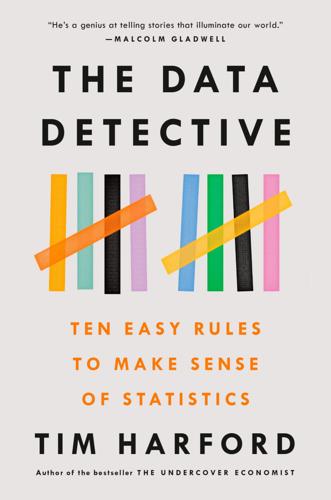
The Data Detective: Ten Easy Rules to Make Sense of Statistics
by
Tim Harford
Published 2 Feb 2021
Put another way, if you ignore all the investment funds that quietly disappear, the apparent performance is twice as good as the actual performance.28 The result is to persuade people to invest in actively managed funds, which often charge high fees, when they might be better served by a low-cost, low-drama fund that passively tracks the stock market as a whole. That is a decision worth tens of billions of dollars a year across the US economy; if it’s a mistake, it’s a multibillion-dollar mistake.29 So much for money. What about health? Consider the life-or-death matter of which medical treatments work and which don’t. A randomized controlled trial (RCT) is often described as the gold standard for medical evidence. In an RCT, some people receive the treatment being tested while others, chosen at random, are given either a placebo or the best known treatment. An RCT is indeed the fairest one-shot test of a new medical treatment, but if RCTs are subject to publication bias, we won’t see the full picture of all the tests that have been done, and our conclusions are likely to be badly skewed.30 For example, in 2008 a quick survey of studies of a variety of antidepressant medications would have found forty-eight trials showing a positive effect and three showing no positive effect.
…
If nothing else, that would provide an outlet for whistleblowers, “so that we’d have someone to complain to when our employer (Facebook, say) is asking us to do something we suspect is unethical or at least isn’t up to the standards of accountability that we’ve all agreed to.”35 Another parallel with the practice of medicine is that important algorithms should be tested using randomized controlled trials. If an algorithm’s creators claim that it will sack the right teachers or recommend bail for the right criminal suspects, our response should be “Prove it.” The history of medicine teaches us that plausible-sounding ideas can be found wanting when subjected to a fair test. Algorithms aren’t medicines, so simply cloning an organization such as the US Food and Drug Administration wouldn’t work; we’d need to run the trials over faster timelines and take a different view of what informed consent looked like.
…
Peter Hofland, “Reversal of Fortune,” Onco’Zine, November 30, 2013, https://oncozine.com/reversal-of-fortune-how-a-vilified-drug-became-a-life-saving-agent-in-the-war-against-cancer/. 7. R. Dmitrovic, A. R. Kunselman, and R. S. Legro, “Sildenafil Citrate in the Treatment of Pain in Primary Dysmenorrhea: A Randomized Controlled Trial,” Human Reproduction 28, no. 11 (November 2013): 2958–65, DOI: 10.1093/humrep/det324, Epub August 6, 2013, https://www.ncbi.nlm.nih.gov/pubmed/23925396?dopt=Abstract. 8. BBC, “Supermarket Stockpiling, A-Level Results and Covid-19 Gender Disparity,” More or Less podcast, March 31, 2020, https://www.bbc.co.uk/sounds/play/m000h7st. 9.
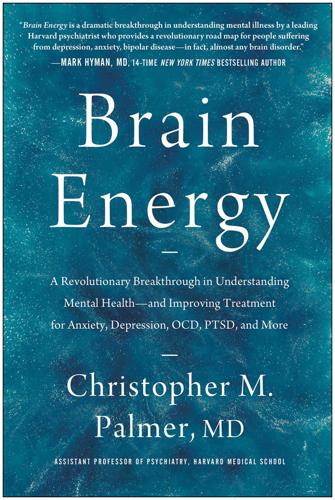
Brain Energy: A Revolutionary Breakthrough in Understanding Mental Health--And Improving Treatment for Anxiety, Depression, OCD, PTSD, and More
by
Christopher M. Palmer Md
Published 15 Nov 2022
The goal is to understand the physiology of mental disorders, enabling us to develop effective treatments, and ideally, prevent these disorders before they occur. Causation is proving that one thing causes another. Correlational studies on their own simply cannot do this. They can suggest causation, or at least provide clues, but proving causation requires something more. One type of study that can prove causation is called a randomized controlled trial. For example, to prove that the cold virus can cause a runny nose, researchers could take a group of people who are not sick, expose half of them to the cold virus by squirting the virus up their noses and the other half to a placebo (by squirting plain water up their noses). They could then record the number of people in each group who develop runny noses over the following five days.
…
If the cold virus causes runny noses, the group exposed to the cold virus should have a much higher rate of runny noses than the placebo group. In fact, these studies have been done, and this is true. One of the challenges in proving causation of a serious or life-threatening disorder in humans is that randomized controlled trials are unethical. Thus, even if we do have a plausible theory of what causes cancer, or mental illness, it will be unethical to expose people to this cause to test the theory definitively. So, what can be done in situations like this? Researchers are sometimes allowed to do equivalent experiments on animals.
…
and brain development in causing mental disorders and depression and diet health and in hormone levels purpose in life stress psychological stress psychological theories psychosis contributing causes of and neurotransmitters other problems associated with risk genes for treatment for psychosomatic medicine psychotherapy psychotic disorders. see also specific disorders contributing causes of and other disorders psychotic symptoms purpose in life. see also psychological and social factors R Rahe, Richard randomized controlled trials rate of living theory reactive oxygen species (ROS) rehabilitation programs relationships of medical and mental disorders. see also brain energy theory and definition of mental illness examples of and limited metabolic resources metabolic disorders neurological disorders organic mental disorders and pain and reasons for disorders stress and the stress response and symptoms of mental illness relationships with people. see also psychological and social factors relaxation response (RR) religious practices and spirituality Research Domain Criteria (RDoC) residential treatment programs “Resource Document on Neuroimaging” (American Psychiatric Association) reverse causation risk factors affecting many mental disorders for depression for heart attacks for mental disorders (see also contributing causes of mental illness) for metabolic disorders for neurological disorders root cause common of metabolic disorders of mitochondrial dysfunction S Schatzberg, Alan schizoaffective disorder contributing causes of other disorders and risk for schizophrenia and cardiovascular disease contributing causes of diagnosis of ketogenic diet for and obesity and other disorders rates of risk for and risk of Alzheimer’s disease treatments for seasonal affective disorder “serious” mental disorders serotonin shame signs of disorders sleep and depression and mitochondrial function problems with and psychotic symptoms and social isolation and symptoms as treatment social determinants of health social factors. see psychological and social factors social stress starvation statistics stigma stress. see also trauma burnout from and depression with mental disorders with metabolic disorders metabolic resources affected by and other disorders oxidative physical psychological and social stress granules stressors stress reduction practices stress response stroke contributing causes of other disorders and and peptides treatment for substance use disorders. see also drug and alcohol use and brain functions contributing causes of delirium with withdrawal in and other disorders prevalence of risk for successful treatments. see also metabolic treatment plan suicide contributing causes of and other disorders prevalence of symptomatic treatments symptoms of Alzheimer’s and brain function defined of diabetes effect of sleep, light, and circadian rhythms on of epilepsy heterogeneity of of major depression of mental disorders/illness 114 of metabolic disorders negative normal emotions or experiences as of organic mental disorders overlapping of psychotic disorders treating disorders instead of variability in of vitamin deficiency syndromes T technology and screens telomeres testosterone theories. see also brain energy theory thrifty phenotype hypothesis thyroid hormone Tourettes syndrome transcranial magnetic stimulation (TMS) trans fatty acids (TFAs) trauma. see also abuse trauma response, brain functions and traumatic brain injury treatments for mental disorders. see also individual disorders diet as estrogen as exercise/physical activity as genetics and epigenetics related to ineffective insulin in medical disorders related to metabolic treatment plan metabolism affected by psychological and social factors addressed in role of inflammation in sleep, light, and circadian rhythms as successful symptomatic thyroid hormone as U unfolded protein response (UPR) US National Comorbidity Survey Replication V violence vitamins Volkow, Nora W Wallace, Douglas weight causes of gaining and epilepsy and gut microbes and medications weight loss treatment Wilder, Russell World Health Organization Y Yehuda, Rachel About the Author Christopher M.
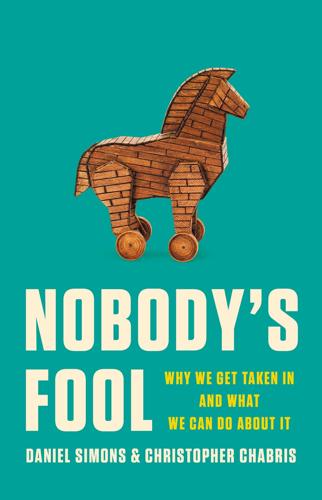
Nobody's Fool: Why We Get Taken in and What We Can Do About It
by
Daniel Simons
and
Christopher Chabris
Published 10 Jul 2023
But just as Madoff’s year-to-year differences in returns were too consistently small, too many of Sato’s baseline differences were implausibly close to zero to be explained by chance.36 This approach—comparing the pattern of baseline differences observed in a study or set of studies to what should happen if there were true random assignment—was originally developed by a British anesthetist named John Carlisle. He applied it to over 5,000 randomized controlled trials on anesthesia, 72 of which had already been retracted due to known data manipulation or fraud. Of those retracted papers, 43, or 60 percent, had the same problem that Sato’s did: too many consistently small baseline differences. Another 15 percent of the papers that were still part of the scientific literature failed Carlisle’s test as well, suggesting both that baseline consistency was a reliable sign of trouble and that more trouble still lurked in the field.
…
Rice, “Last Sane Man on Wall Street,” New York, January 20, 2022 [https://nymag.com/intelligencer/2022/01/nathan-anderson-hindenburg-research-short-selling.html]. 24. Even if you find a plausible connection between hiring Larry Taylor and an improvement in retention, there is no proof that his intervention caused that improvement. Business results aren’t like the randomized controlled trials used to evaluate medical treatments. There is no control group that got a “placebo consultation” against which to compare the success of Taylor’s clients. You would never expect that kind of data from firms pitching for your business, but you should keep in mind that only that kind of data can truly reveal how effective those firms are. 25.
…
It’s also a fallacy to think that randomized experiments are invalid unless all of the baseline differences are zero, but the fact that some researchers believe it may account for why fraudsters try to make up results that look that way. 36. M. J. Bolland, A. Avenell, G. D. Gamble, and A. Grey, “Systematic Review and Statistical Analysis of the Integrity of 33 Randomized Controlled Trials,” Neurology 87 (2016): 2391–2402 [https://doi.org/10.1212/WNL.0000000000003387]. According to an American Academy of Neurology press release, “Study Suggests Probable Scientific Misconduct in Bone Health Studies,” November 9, 2016 [https://www.aan.com/PressRoom/Home/PressRelease/1501] (archived at https://archive.ph/wip/Uev5F), “Sato accepted full responsibility, admitting fabrication of the fraudulent Neurology papers, which reported on the effects of therapies to reduce hip fractures both after stroke and in Parkinson’s disease patients.
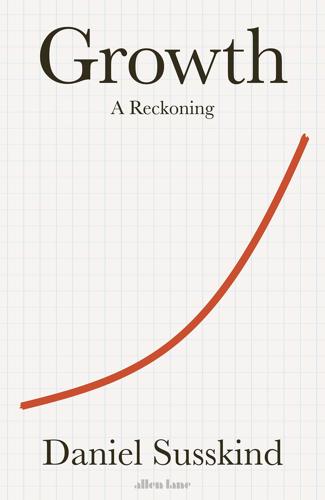
Growth: A Reckoning
by
Daniel Susskind
Published 16 Apr 2024
In most areas of science, the simplest way to do this would be to run an experiment: change a variable of interest X, hold everything else constant, and see what (if anything) happens to the outcome variable Y. But in social science, experiments like this are far more difficult to do. The closest thing is a ‘randomized control trial’ (RCT), a technique that has become particularly popular in the world of development economics.52 Here, people are randomly allocated to different groups: one group are ‘treated’ with an intervention of interest – providing medicine, computers or financial support, for instance – but the other groups are not, and their contrasting outcomes, Y, are compared.
…
The authors compiled 145 causes; no doubt, there are many others as well. 50 See, for instance, Xavier X. Sala-i-Martin, ‘I Just Ran Four Million Regressions’, NBER Working Paper 6252, (1997). 51 See www.tylervigen.com/spurious-correlations. 52 For the explosion, see Figure 10.1 in Abhijit Vinayak Banerjee, Esther Duflo and Michael Kremer, ‘The Influence of Randomized Control Trials on Development Economics Research and on Development Policy’, in The State of Economics, the State of the World, ed. Kaushik Basu, David Rosenblatt and Claudia Sepúlveda (Cambridge, MA: MIT Press, 2019), pp. 439–87. 53 Joshua Angrist et al., ‘Economic Research Evolves: Fields and Styles’, American Economic Review, 107:5 (2017); Hugo Montesinos and Brandon Brice, ‘The Era of Evidence’, Working Paper, November 2019. 54 The uses of RCTs are limited.
…
Kung San people, 11–13 Kallis, Giorgos, 154, 163 Kant, Immanuel, 23 Kantorovich, Leonid, 219–20 Kennan, George, 72 Kennedy, John F., 59, 68, 69, 78, 90 Kennedy, Robert F., 132 Keynes, John Maynard, 3, 14, 19, 60, 87, 142, 253, 260; Economic Possibilities for Our Grandchildren, 79–80, 101; How to Pay for the War, 55–6, 64–5, 297n42 Keynesian economics, 64–5 Keyserling, Leon, 78 Khanin, Grigorii, 69 Khrushchev, Nikita, 68, 220 King, Gregory, 61 King, Mervyn, 142 Klein, Ezra, 320n58 Koyama, Mark, 249 Krugman, Paul, 14, 25, 115, 116, 177, 211–12 Kuznets, Simon, 62–6, 132–3, 141, 293n6, 296n40, 297n41 Large Hadron Collider, 197 Layard, Richard, 86–7, 303n40 Le Guin, Ursula K., xvi Lee, Richard, 11–13, 279n19, 279n22 Lepenies, Philipp, 298n46 Lessig, Larry, 184, 185, 186 Lewis, Arthur, 29 life expectancy, sharp increase after 1800, 8–11 light, price of, 84–5, 129–30 ‘Logic Theorist’ (computer program), 199 ‘long-termism’, 258–62 Lucas, Robert, 24, 25, 35–7, 102, 204, 223–4 MacAskill, William, 194–5, 258–61 Maddison, Angus, 7 Malthus, Thomas, 13–22, 25–6, 40, 281n35 Manabe, Syukuro, 306n10 Manhattan Project, 281n40 Marienthal, Austria, 118 Marjolin, Robert, 59 market fundamentalism, 216–17 Marshall, Alfred, 193 Marshall Plan, 71–2 Marx, Karl: dislike of Malthus, 13, 19, 25; dismisses idea of ‘stationary state’, 165; on forces of production, 50; horror at factory conditions, 270; on inequality, 87; on the merits of growth, 219; as moral scientist, 146; and Rostow, 27; on technological progress, 110; on William Petty, 61 McNeill, John Robert, 220 Meadows, Donna, 149 Merkel, Angela, 75 Messi, Lionel, 114 Microsoft, R&D (Research & Development), 188 Milanovic, Branko, 116, 163 Mill, John Stuart, 25, 146, 167–8, 284n7 Millikan, Max, 71 ‘mini-publics’, 264–8 Mises, Ludwig von, 216 Mishan, Ezra, The Costs of Economic Growth (1967), 154 Moderna (company), 200 Mokyr, Joel, 47, 50–2, 209, 210, 308n39 Moon Jae-in (South Korean president), 266 Moore, Gordon, 195 Moore’s Law, 195–6 Morris, William, 152 Moser, Petra, 191 Mouffe, Chantal, 304n49 Musk, Elon, 258 Nagel, Thomas, 166, 320n54 Napoleonic Wars, 21 national accounting, 60–3, 66 Neumann, John von, 191 Newton, Isaac, 41, 46, 196 Nietzsche, Friedrich, 138, 274 Nixon, Richard, 59, 295n20 Nordhaus, William, 57, 62, 129–30 North American Free Trade Agreement (NAFTA), 256 North Douglass, 45, 46 Obama, Barack, 216, 236–7, 257, 269 Okun, Arthur, Equality and Efficiency (1975), 229–30, 231–2 OpenAI (company), 189, 244 oral hydration therapy, 38 Ord, Toby, 259 Organisation for Economic Co-operation and Development (OECD), 204, 265 Organisation for Economic Development, 59 Orwell, George, 68, 328n3 Pareto, Vilfredo, 91, 232 ‘Pareto efficiency’, 232–4 Parfit, Derek, xvii, 165, 221 Parrique, Timothée, 154 patents, 179, 181 Pearson, Karl, 42 Peccei, Dr Aurelio, 153, 317n15 Pepys, Samuel, 61 Petty, William, 61 Pinker, Steven, 79 Plato, ‘Noble Lie’, 116 pluralism, 145–6 politics, and economic growth, 110–14 Posner, Richard, 180 poverty, decline of, 79–80 price mechanism, 217–18 prostitution, and GDP, 134–5 Proudhon, Pierre-Joseph, 284n9 public-private investment, 189–190, 190 R&D (Research & Development), investment in, 186–90 Radishchev, Alexander, 62 randomized control trial (RCT), 44, 290n54 Rawarth, Kate, 160, 254, 312n28 referenda, popular, 263 remote-work technologies, 213–14 renewable energy, 235–41 Ricardo, David, 14, 21, 25, 114, 283n7 Ridley, Matt, 14 Rini, Regina, 260 Robbins, Lionel, 231–2 Robinson, James, 47 ‘robot tax’, 243 Rockoff, Hugh, 298n46 Rodrik, Dani, 116 Rogoff, Kenneth, 93 Romer, Paul, 35–42, 45, 52, 156, 157–9, 203, 209, 210, 289n46 Roosevelt, Franklin D., 63, 64, 67 Roser, Max, 80 Rosling, Hans, 84 Rostow, Walt, 27–8, 58 Rubin, Jared, 249 Ruskin, John, 152, 270 Russell, Bertrand, 199 Sachs, Jeffrey, 46 Samuelson, Paul, 21, 57, 58, 69–70, 114, 153 Sandel, Michael, 138, 147, 252, 263, 265, 293n4 Schlesinger, Arthur, 296n35 Schmelzer, Matthias, 154, 163, 300n67 Schumpeter, Joseph, 152 Scientific Revolution, 50–1 Scruton, Roger, 273 Second World War, and national economy, 64–7 Sen, Amartya, 145, 146 Senior, Nassau, 19–20 Shannon Diversity Index, 144 Shelley, Percy Bysshe, 13–14 Skidesley, Robert and Edward, 293n4 Smil, Vaclav, 237 Smith, Adam, 25, 146, 178, 282n44, 283n7, 311n13 Smith, Noah, 150 socialism, and economic growth, 220–1 Socrates, 322n15 solar energy, 235–6 Solow, Robert, 31, 35–6, 40, 52, 93, 157, 223, 317n25 Solow-Swan model, 31–4, 157, 287n31 Solyndra (solar company), 216 South Korea: citizen assemblies, 266; economic transformation, 245–7 Soviet Union, and the Cold War, 67–70 Sowell, Thomas, 229 Spufford, Francis, 220 Steinsson, Jón, 164 Stern, Nicholas, 235 Stern Review (on climate change), 235 Stevenson, Betsey, 88 Stiglitz, Joseph, 123, 145 Stone, Richard, 66, 71 Strayer, Joseph, 71 Suetonius, 178 Summers, Larry, 93, 156, 175 surveillance, of employees, 108 Susskind, Daniel, The Future of the Professions, 199 Susskind, Jamie, 112, 268, 305n52 Swan, Trevor, 31, 157 Swartz, Aaron, 184, 185–6 Syrquin, Moshe, 298n46 technological progress: and diminishing returns, 33–4; and innovation, 199–202; and threats to employment, 106–10 Thatcher, Margaret, 263 Thiel, Peter, 75 Thomas, Robert, 45 Thunberg, Greta, 149–50, 155–6 Tobin, James, 59, 89 trademarks, 179, 181 Truman, Harry S., 79 Trump, Donald, 190, 263 Turner, Adair, 293n4 Ulam, Stanislaw, 114 unemployment: and economic growth, 75–9; and technological change, 106–10 Union of Soviet Socialist Republics (USSR) see Soviet Union United Nations (UN): adopts GDP measure, 72; Climate Action Summit (2019), 149; Millenium Goals, 81; pledge for full employment, 77; System of National Accounts, 127, 140 United States of America (USA): and the Cold War, 67–9; and economic growth, 59; economy in the Second World War, 64–5, 67; Employment Bill (1945), 77, 78; Great Depression, 62–3, 75–7; labour market, 256–7; patent and trademark protection, 181–2 universities, administrative bloat, 198 Vauban, Sébastien Le Prestre de, 62 Vitruvius, 178 Volcker disinflation, 162 Vollrath, Dietrich, Fully Grown, 175 Vries, Jan de, 277n2, 277n3, 291n62 Vries, Peer, 292n72 wage inequality, 104 war, and national economies, 60–7 wealth inequality, 105 Weber, Max, 46, 291n62 Weitzman, Martin, 257 welfare economics, 146 Whitehead, Alfred North, 51, 199 Wilde, Oscar, 268 Wiles, Peter, 69, 221 Winner, Langdon, 267 Wittgenstein, Ludwig, 207 Wolfers, Justin, 88 Wordsworth, William, 13 World Bank, 30, 66, 80, 115 World Trade Organization (WTO), 256 Limits of Growth (Club of Rome report, 1972), 153, 222 Yale University, 198 Yudkowsky, Eliezer, 126 Zuckerberg, Mark, 114 THIS IS JUST THE BEGINNING Find us online and join the conversation TWITTER / X twitter.com/penguinukbooks FACEBOOK facebook.com/penguinbooks INSTAGRAM instagram.com/penguinukbooks YOUTUBE youtube.com/penguinbooks PINTEREST pinterest.com/penguinukbooks LINKEDIN linkedin.com/company/penguin-random-house-uk TIKTOK tiktok.com/@penguinukbooks For the latest books, recommendations, author interviews and more Sign up to the Penguin Newsletter Find out more about the author and discover your next read at Penguin.co.uk PENGUIN BOOKS UK | USA | Canada | Ireland | Australia New Zealand | India | South Africa Penguin Books is part of the Penguin Random House group of companies whose addresses can be found at global.penguinrandomhouse.com.
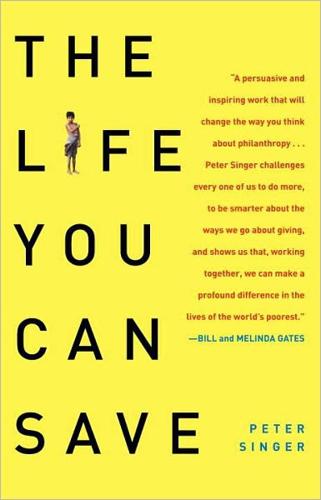
Life You Can Save: Acting Now to End World Poverty
by
Peter Singer
Published 3 Mar 2009
Proving Effectiveness Long before Holden Karnofsky and Elie Hassenfeld wondered which organizations would make the best use of their donations, Esther Duflo and Abhijit Banerjee at the Massachusetts Institute of Technology founded the Jameel Poverty Action Lab on the premise that we can and should use scientific methods to find out which aid projects work. As the gold standard of scientific rigor they take the random controlled trial used for testing the efficacy of new drugs. In such a trial, half the patients are randomly assigned to receive the new drug, while the other half get a placebo. Randomization ensures that the two groups are not different in any way that could affect the course of their illness or the impact of the drug.
…
Thanks to controlled trials, we know that providing drugs to kill parasitical worms in Kenyan children improves learning, that education in condom use reduces the likelihood of people getting AIDS, and that offering mothers in India a cheap bag of lentils means that more of them will bring in their children for immunization.12 So why don’t we test all poverty programs this way? One reason is the cost of administering the trials. Oxfam America found that a random controlled trial of one of its microcredit programs in West Africa would cost almost as much as the project itself. The money would have come out of the budget for the project, with the result that microcredit could be extended to only half as many villages as would otherwise be possible. Oxfam did not go ahead with the randomized trial.
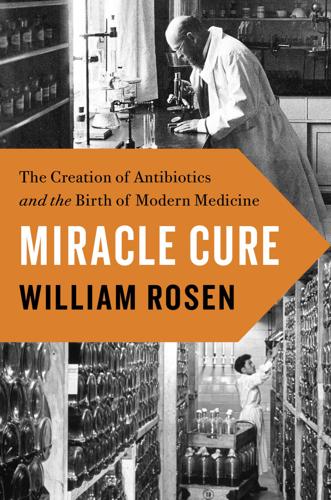
Miracle Cure
by
William Rosen
Published 14 Apr 2017
.* In his second trial, beginning in December 1948, Hill duplicated exactly the same experimental structure—same randomization, same X-ray evaluation—as his first. This time, however, he added Lehmann’s oxygen inhibitor to the treatment group. Less than a year later, the power of what would come to be known as RCT, for randomized controlled trials, was vindicated. The Medical Research Council announced that they had shown “unequivocally that the combination of PAS with streptomycin considerably reduces the risk of the development of streptomycin-resistant strains of tubercle bacilli.” The three-year survival rate using the combination of the two drugs was an almost unbelievable 80 percent.* In less than three years, penicillin and streptomycin had achieved more victories in the battle against infectious disease than anything in the entire history of medicine since Galen.
…
It allowed Frances Kelsey a remarkably free hand in exercising her authority to grant or withhold IND status; to her critics, this led to any number of cases in which she withheld classification based on nothing but a lack of faith in a particular investigator, or her judgment that the proposed drug was either ineffective or dangerous.* The new requirements, which would remain largely unchanged for at least the next fifty years, permanently altered the character of medical innovation. The method of validating medical innovation using randomized control trials had given the world of medicine a way of identifying the sort of treatments whose curative powers weren’t immediately obvious to clinicians (and, just as important, identifying those that seemed spectacular, but weren’t). Until 1963, however, RCTs had been a choice. The three phases of the newly empowered FDA made them a de facto requirement.
…
Mitchell, 159 Palmer, Lowell, 163 Paracelsus, 8–9, 187, 250 Paré, Ambroise, 207 Parke, Hervey Coke, 241 Parke-Davis, 132–33, 169, 240–44, 261, 270, 280, 281n, 296 Chloromycetin, see Chloromycetin detail men of, 254, 257–59 FDA and, 259 parrot fever, 247 PAS (para-aminosalicylic acid), 212–13, 272 Pascal, Blaise, 27 Pasteur, Louis, 15–17, 17, 19–22, 24–35, 37, 42, 43, 44, 47, 50, 52, 57, 68, 81, 82, 85, 97, 100, 137, 138, 158, 274, 293 pasteurization, 19 patent medicines, 12, 240, 254, 255 patents, 65–66, 69–70, 154–56, 162–63, 225, 226, 240 Aureomycin, 217 penicillin, 156–57, 169–70 streptomycin, 202–6 Terramycin, 223 tetracycline, 225–27, 233, 277 pathology, 97 Payne, Eugene, 246 Pearson, Karl, 84, 208 Pemberton, John, 73 penicillin, 1, 3, 93–96, 110–19, 120–50, 161, 192, 194, 195, 199, 200, 207–9, 213, 217, 219, 224, 238, 244, 245, 247, 251, 256, 263, 268, 297, 301, 305 allergic reaction to, 262 awareness of, 165–68 beta-lactam structure of, 3, 175, 220–21, 304 cheese and, 134n, 138n clinical trials of, 129–30, 132, 139, 141, 148 Cocoanut Grove fire and, 166–67 crystal structure of, 142, 145–46, 174, 175 discovery of, 89–93, 148–50, 151, 157 fermentation and, 137–38, 141, 156–57, 169, 171, 172, 174, 179 filtration machines for, 123–25, 124 Germany and, 127–28 gonorrhea and, 180 instillation therapy with, 180n manufacture of, 152–54, 156–57, 164–65, 168–73, 176–81, 198, 202 in milk, 236 Miller case and, 1–2 modified bedpans used for growing, 123, 123, 136, 137 Oxford units of, 137, 165 patents for, 156–57, 169–70 P. notatum, 90, 93, 112, 132–34, 147 price of, 172 P. rubrum, 93, 133 sales of, 224–25 sulfur in, 142, 145 synthesis of, 174, 176–77 penicillinase, 235, 301n periodic tables, 51 peritonitus, 87n Perkin, William Henry, 46, 158 pernicious anemia, 230 Perrins, William, 103n Perutz, Max, 176 Petri, Julius Richard, 28 Pfizer, 133, 138, 153, 164, 165, 168–72, 170n, 176, 181, 203, 223, 225, 227n, 238, 240, 242, 247, 270, 296, 297, 300 advertising of, 228–29 Sigmamycin, 267–68, 271, 273, 279 Terramycin, 218–20, 222–25, 228, 229, 233, 236, 237, 240, 254, 271 Tetracyn, 226–28 Pfizer, Charles, 164 Pfuetze, Karl H., 203 pharmaceutical companies, 296–300, 303 advertising by, 228–29, 258, 267–68, 274, 275, 281 in Britain, 121–22, 141 and communication of information, 256, 268–69 corruption by, 269–71 credibility and, 275 drug safety and, 262–63 Kefauver hearings and, 277–81 in Nazi Germany, 177–78 sales reps (detail men) of, 254–59 in U.S., 132–33, 156, 163, 171 phases, 146, 146 phenol (carbolic acid), 34, 35, 46, 56n, 86, 87, 159 philanthropy, 100, 239 Phipps, James, 13n phlegm, 7, 14 phocomelia, 282–83 pigs, 233 Pirie, Norman, 107 Plague of Athens, 13, 42, 81 pneumococci, 117, 165, 217 pneumonia, 2, 13, 35, 217, 237 pneumococcal, 76 streptococcal, 59 pneumothorax technique, 189 Polaroid, 222 polysaccharides, 110 Poughon, Julie-Antoinette, 31 Poulenc, Camille, 69 prednisone, 278 Price, Derek de Solla, 154 Priestley, Joseph, 11 Principles and Practices of Medicine, The (Osler), 8 Pringle, Peter, 202 Private Science of Louis Pasteur, The (Geison), 30 Proceedings of the Mayo Clinic, 201 Proceedings of the Society for Experimental and Biological Medicine, 201, 205 prokaryotes, 24–25, 224n Proloprim, 303 Prontosil, 67–71, 76, 111, 141, 150, 178, 217, 225, 244 protozoans, 52, 224 Pseudomonas aeruginosa, 237 Pseudomonas pyocyanea, 111 psittacosis, 247 puerperal (childbed) fever, 67–68, 72 Pure Food and Drugs Act, 73, 74, 134n, 135 putrefaction, 17–18, 20 Quaker Oats Company, 155 quinine, 176, 220 quinolone antibiotics, 299 rabies, 30–31, 44 racemic acid, 20 Radcliffe Infirmary, 112, 123, 128–30, 139, 141 Raistrick, Harold, 111, 116–17, 134 Ramón y Cajal, Santiago, 101 Raper, Kenneth, 135–36 Rawlins, George, 5 RCTs (randomized controlled trials), 212, 273, 274n, 290, 291 Rebstock, Mildred, 244–45, 247 research laboratories, 37–38 funding for, 57, 100 respirators, 108 Rhodes, Cecil John, 96, 97 Rhodes Scholarships, 96–97 Rhône-Poulenc, 76, 181, 297 Ribicoff, Abraham, 260 Richards, Alfred Newton, 100, 151–53, 161, 167–69, 177, 216, 222, 296 Richards, E.
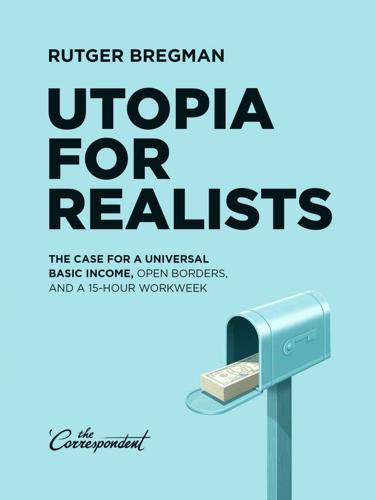
Utopia for Realists: The Case for a Universal Basic Income, Open Borders, and a 15-Hour Workweek
by
Rutger Bregman
Published 13 Sep 2014
A few centuries later, these events would be immortalized in the biggest bestseller ever: the Bible (see Daniel 1:1–16). But it would still be several hundred years before this kind of comparative research came to be considered the scientific gold standard. These days, we would call this a randomized controlled trial, or RCT. If you were a medical researcher, you would proceed as follows: Using a lottery system, you divide people with the same health problem into two groups. One gets the medicine you want to test and the other gets a placebo.7 In the case of bloodletting, the first comparative experiment was published in 1836 by the French doctor Pierre Louis, who had treated some pneumonia sufferers by immediately relieving them of a few pints of blood and others by holding off on the leeches for a few days.
…
They don’t believe humans are rational actors. Instead, they assume we are quixotic creatures, sometimes foolish and sometimes astute, and by turns afraid, altruistic, and self-centered. And this approach appears to yield considerably better results. So why did it take so long to figure this out? Well, several reasons. Doing randomized controlled trials in poverty-stricken countries is difficult, time-consuming, and expensive. Often, local organizations are less than eager to cooperate, not least because they’re worried the findings will prove them ineffective. Take the case of microcredit. Development aid trends come and go, from “good governance” to “education” to the ill-fated “microcredit” at the start of this century.
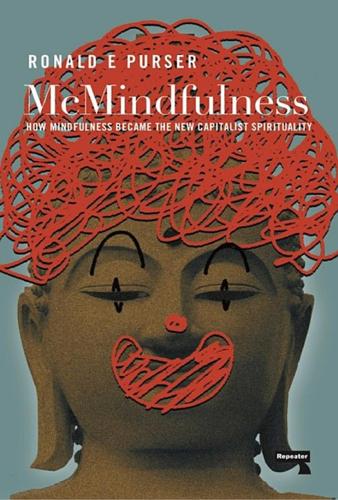
McMindfulness: How Mindfulness Became the New Capitalist Spirituality
by
Ronald Purser
Published 8 Jul 2019
Self-congratulatory studies, media hype, books and courses all feed off each other. The main problem of skewed research stems from the academic mindfulness industry, in which millions of dollars of grant money are at stake. Research support is most readily available for “evidence-based” studies that work with randomized-controlled trials (RCTs) — in theory, the gold standard of science. However, the problems with studies on mindfulness are not new. Before they started to receive grant funding in the last decade, there was a similar enthusiasm from government funding agencies for Transcendental Meditation (TM). Between 1992 and 2010, the US National Institutes of Health (NIH) awarded nearly $23 million to Maharishi University, the site for the majority of research on TM.
…
In another meta-analytic study published in the Journal of the American Medical Association (JAMA), Internal Medicine, Dr Madhav Goyal and his colleagues from John Hopkins University searched databases using a set of key meditation terms.17 They found 18,753 citations, of which forty-seven matched their inclusion criteria, such as the use of randomized controlled trials. They found that mindfulness was moderately effective in treating a variety of conditions, but not more effective than other active treatments, such as drugs or exercise. Moreover, the fact that only 0.25% of the studies were deemed of high enough quality should give one pause. Hype is the unsurprising outcome of such low standards of methodological rigor, despite the lukewarm findings they conceal.
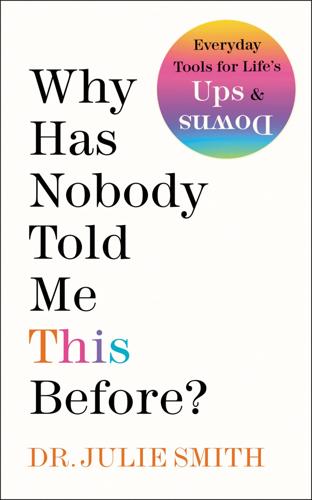
Why Has Nobody Told Me This Before?
by
Dr. Julie Smith
Published 11 Jan 2022
A. (2016), Mind over Mood, 2nd Edition, New York: Guilford Press. Inagaki, Tristen, K., & Eisenberger, Naomi I. (2012), ‘Neural Correlates of Giving Support to a Loved One’, Psychosomatic Medicine, 74 (1), 3–7. Jacka, F. N. (2019), Brain Changer, London: Yellow Kite. Jacka, F. N., et al. (2017), ‘A randomized controlled trial of dietary improvement for adults with major depression (the ‘SMILES’ trial)’, BMC Medicine, 15 (1), 23. Josefsson, T., Lindwall, M., & Archer, T. (2013), ‘Physical Exercise Intervention in Depressive Disorders: Meta Analysis and Systemic Review’, Medicine and Science in Sports, 24 (2), 259–72.
…
Sanchez-Villegas, A., et al. (2013), ‘Mediterranean dietary pattern and depression: the PREDIMED randomized trial’, BMC Medicine, 11, 208. Schuch, F. B., Vancampfort, D., Richards, J., et al. (2016), ‘Exercise as a treatment for depression: A Meta-Analysis Adjusting for Publication Bias’, Journal of Psychiatric Research, 77, 24–51. Singh, N. A., Clements, K. M., & Fiatrone, M. A. (1997), ‘A Randomized Controlled Trial of the Effect of Exercise on Sleep’, Sleep, 20 (2), 95–101. Tops, M., Riese, H., et al. (2008), ‘Rejection sensitivity relates to hypocortisolism and depressed mood state in young women’, Psychoneuroendocrinology, 33 (5), 551–9. Waldinger, R., & Schulz, M. S. (2010), ‘What’s Love Got to Do With It?
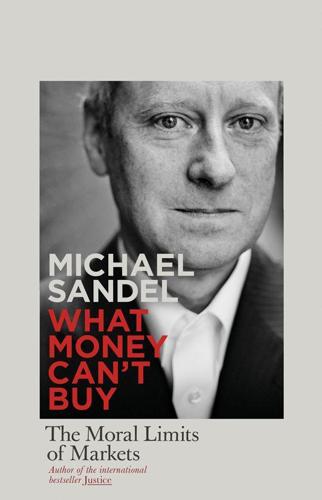
What Money Can't Buy: The Moral Limits of Markets
by
Michael Sandel
Published 26 Apr 2012
.; Theresa Marteau, Richard Ashcroft, and Adam Oliver, “Using Financial Incentives to Achieve Healthy Behavior,” British Medical Journal 338 (April 25, 2009): 983–85; Libby Brooks, “A Nudge Too Far,” Guardian, October 15, 2009; Michelle Roberts, “Psychiatric Jabs for Cash Tested,” BBC News, October 6, 2010; Daniel Martin, “HMV Voucher Bribe for Teenage Girls to Have Cervical Jabs,” Daily Mail (London), October 26, 2010. 25. Jordan Lite, “Money over Matter: Can Cash Incentives Keep People Healthy?” Scientific American, March 21, 2011; Kevin G. Volpp et al., “A Randomized, Controlled Trial of Financial Incentives for Smoking Cessation,” New England Journal of Medicine 360 (February 12, 2009); Brendan Borrell, “The Fairness of Health Insurance Incentives,” Los Angeles Times, January 3, 2011; Robert Langreth, “Healthy Bribes,” Forbes, August 24, 2009; Julian Mincer, “Get Healthy or Else … ,” Wall Street Journal, May 16, 2010. 26. www.nbc.com/the-biggest-loser. 27.
…
Ashcroft, “Personal Financial Incentives in Health Promotion: Where Do They Fit in an Ethic of Autonomy?” Health Expectations 14 (June 2011): 191–200. 31. V. Paul-Ebhohimhen and A. Avenell, “Systematic Review of the Use of Financial Incentives in Treatments for Obesity and Overweight,” Obesity Reviews 9 (July 2008): 355–67; Lite, “Money over Matter”; Volpp, “A Randomized, Controlled Trial of Financial Incentives for Smoking Cessation”; Marteau, “Using Financial Incentives to Achieve Healthy Behaviour.” 32. Gary S. Becker, “Why Not Let Immigrants Pay for Speedy Entry,” in Gary S. Becker and Guity Nashat Becker, eds., The Economics of Life (New York: McGraw Hill, 1997), pp. 58–60, originally appeared in BusinessWeek, March 2, 1987; Gary S.
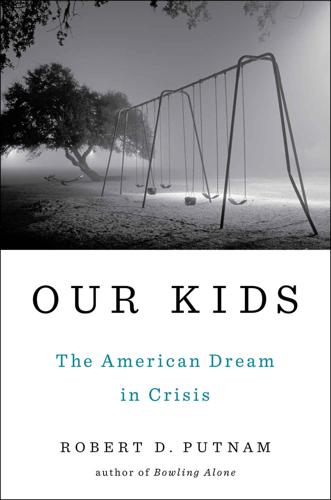
Our Kids: The American Dream in Crisis
by
Robert D. Putnam
Published 10 Mar 2015
Egeland was building on the classic work in attachment theory by Mary Ainsworth, “Attachment as Related to Mother-Infant Interaction,” in Advances in the Study of Behavior (New York: Academic Press, 1979), 1–51. 36. Yann Algan, Elizabeth Beasley, Frank Vitaro, and Richard E. Tremblay, “The Long-Term Impact of Social Skills Training at School Entry: A Randomized Controlled Trial” (Paris: Centre National de la Recherche Scientifique, November 28, 2013). https://www.gate.cnrs.fr/IMG/pdf/MLES_14_nov_2013-1.pdf. 37. Gary W. Evans, “The Environment of Childhood Poverty,” American Psychologist 59 (February/March 2004): 77–92 and works cited there; Jamie L. Hanson, Nicole Hair, Dinggang G.
…
Jane Waldfogel and Elizabeth Washbrook, “Early Years Policy,” Child Development Research 2011 (2011): 1–12; Amy J. L. Baker, Chaya S. Piotrkowski, and Jeanne Brooks-Gunn, “The Home Instruction Program for Preschool Youngsters (HIPPY),” The Future of Children 9 (Spring/Summer 1999): 116–33; Darcy I. Lowell, Alice S. Carter, Leandra Godoy, Belinda Paulicin, and Margaret J. Briggs-Gowan, “A Randomized Controlled Trial of Child FIRST: A Comprehensive Home-Based Intervention Translating Research into Early Childhood Practice,” Child Development 82 (January 2011): 193–208; “Policy: Helping Troubled Families Turn Their Lives Around,” Department for Communities and Local Government, accessed October 10, 2014, https://www.gov.uk/government/policies/helping-troubled-families-turn-their-lives-around/activity.
…
YouthBuild has shown positive results in nonexperimental research; see, for example, Wally Abrazaldo et al., “Evaluation of the YouthBuild Youth Offender Grants: Final Report,” Social Policy Research Associates (May 2009). The Department of Labor has commissioned MDRC to conduct an experimental randomized control trial (RCT) on YouthBuild across 83 sites. Controlled experimental studies have found favorable results from such programs as Job Corps, Service and Conservation Corps, and National Guard Youth ChalleNGe; MDRC, “Building Better Programs for Disconnected Youth,” February 2013, accessed November 24, 2014, http://www.mdrc.org/sites/default/files/Youth_020113.pdf. 64.
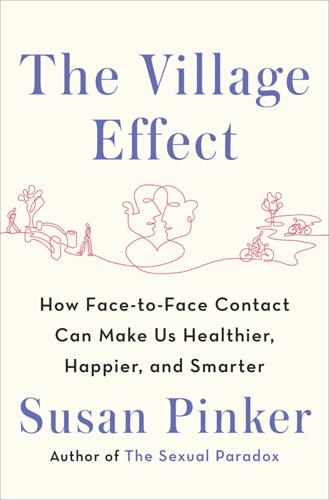
The Village Effect: How Face-To-Face Contact Can Make Us Healthier, Happier, and Smarter
by
Susan Pinker
Published 30 Sep 2013
UNICEF, “Basic Education and Gender Equality: The Big Picture,” February 6, 2014, http://www.unicef.org/education/index_bigpicture.html. 20. Dana Burde and Leigh Linden, “The Effect of Village-Based Schools: Evidence from a Randomized Controlled Trial in Afghanistan,” NBER Working Paper 18039 (Cambridge, MA: National Bureau of Economic Research, 2012); Dana Burde and Leigh Linden, “Bringing Education to Afghan Girls: A Randomized Controlled Trial of Village-Based Schools,” Applied Economics 5, no. 3 (2013). 21. Though I review the evidence in more detail in Chapters 6 and 7, a comparison of effects for two meta-analyses—the first of interactive book reading to stimulate literacy, the second on literacy and academic outcomes from nine one-to-one laptop programs—showed effect sizes (d) ranging from 0.36 to 0.72 in the interaction study and 0.17 to 0.28 in the laptop study.
…
Alan Mendelsohn et al., “The Impact of a Clinic-Based Literacy Intervention on Language Development in Inner-City Preschool Children,” Pediatrics 107, no. 1 (2001); P. E. Klass, R. Needlman, and Barry Zuckerman, “The Developing Brain and Early Learning,” Archives of Disease in Childhood 88 (2003); N. Golova et al., “Literacy Promotion for Hispanic Families in a Primary Care Setting: A Randomized Controlled Trial,” Pediatrics 103 (1998); Barry Zuckerman, “Promoting Early Literacy in Pediatric Practice: Twenty Years of Reach Out and Read,” Pediatrics 124, no. 6 (2009). 3. C. E. Huebner and A. N. Meltzoff, “Intervention to Change Parent–Child Reading Style: A Comparison of Instructional Methods,” Journal of Applied Developmental Psychology 26, no. 3 (2005). 4.

The Laws of Medicine: Field Notes From an Uncertain Science
by
Siddhartha Mukherjee
Published 12 Oct 2015
A randomized study might make particular conclusions about the effectiveness of a medicine—but in truth it has only judged that effectiveness in the subset of people who were randomized. The power of the experiment is critically dependent on its strong limits—and this is the very thing that makes it limited. The experiment may be perfect, but whether it is generalizable is a question. The reverential status of randomized, controlled trials in medicine is its own source of bias. The BCG vaccine against tuberculosis was shown to have a potent protective effect in a randomized trial, but the effectiveness of the vaccine seems to decrease almost linearly as we move in latitude from the North to the South—where, incidentally, TB is the most prevalent (we still don’t understand the basis for this effect, although genetic variation is the most obvious culprit).

Prediction Machines: The Simple Economics of Artificial Intelligence
by
Ajay Agrawal
,
Joshua Gans
and
Avi Goldfarb
Published 16 Apr 2018
Daniel Paravisini and Antoinette Schoar examined a Colombian bank’s evaluation of small enterprise loan applicants after the introduction of a new credit scoring system.22 The computerized scoring system took a variety of information about the applicants and aggregated it into a single measure that predicted risk. Then a loan committee of bank employees used the score and their own processes to approve, reject, or refer the loan to a regional manager to decide. A randomized controlled trial, not management decree, determined whether the score was introduced before or after the decision. Thus, the score provided a good place to scientifically evaluate its impact on decision making. One group of employees was provided the score just before they met to deliberate. This is analogous to the first way to collaborate with a machine, in which the machine prediction informs the human decision.
…
The challenge is that you do not have the data on what would have happened had you not read the book. If you want to understand what causes what, you need to observe what would have happened in the counterfactual situation. Humans can provide two main solutions to this problem: experiments and modeling. If the situation arises often enough, you can run a randomized control trial. Assign some people to the treatment (force them to read the book, or at least give them the book and maybe hold some consequential exam on it) and others to the control (force them not to read the book, or at least don’t advertise it to them). Wait and collect some measure of how they apply AI in their work.
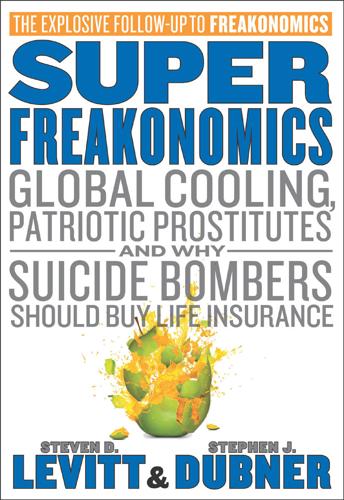
SuperFreakonomics
by
Steven D. Levitt
and
Stephen J. Dubner
Published 19 Oct 2009
One doc may therefore get all the psychiatric cases on a shift, or all the elderly patients. Because an old person with shortness of breath is much more likely to die than a thirty-year-old with the same condition, we have to be careful not to penalize the doctor who happens to be good with old people. What you’d really like to do is run a randomized, controlled trial so that when patients arrive they are randomly assigned to a doctor, even if that doctor is overwhelmed with other patients or not well equipped to handle a particular ailment. But we are dealing with one set of real, live human beings who are trying to keep another set of real, live human beings from dying, so this kind of experiment isn’t going to happen, and for good reason.
…
Patients were assigned to the wards in alternating twenty-four-hour cycles, depending on the day of the week they arrived. Given the nature of pregnancy, an expectant mother came to the hospital when it was time to have the baby, not on a day that was convenient. This assignment methodology wasn’t quite as rigorous as a randomized, controlled trial, but for Semmelweis’s purpose it did suggest that the divergent death rates weren’t the result of a difference in patient populations. So perhaps one of the wild guesses listed above was correct: did the very presence of men in such a delicate feminine enterprise somehow kill the mothers?

The Charisma Myth: How Anyone Can Master the Art and Science of Personal Magnetism
by
Olivia Fox Cabane
Published 1 Mar 2012
Image generation has a powerful impact on emotions and physiological states and a high impact on brain function. See A. Hackmann, “Working with Images in Clinical Psychology,” in Comprehensive Clinical Psychology, eds. A. Bellack and M. Hersen (London: Pergamon, 1998), 301–17. 5. T. J. Kaptchuk, E. Friedlander, J. M. Kelley, et al., “Placebos without Deception: A Randomized Controlled Trial in Irritable Bowel Syndrome” (2010), http://www.plosone.org/article/info:doi/10.1371/journal.pone.0015591. 6. I highly recommend Robert Sapolsky’s fascinating—and free—Stanford University lecture “Why Zebras Don’t Get Ulcers” on iTunes. 7. David Rock, “SCARF: A Brain-Based Model for Collaborating with and Influencing Others,” NeuroLeadership Journal 1 (2008). 8.
…
Chabris, “Gorillas in Our Midst: Sustained Inattentional Blindness for Dynamic Events,” Perception 28, no. 9 (1999): 1059–74, http://en.wikipedia.org/wiki/Digital_object_identifier. 3. James J. Gross, “Emotion Regulation: Affective, Cognitive, and Social Consequences,” Psychophysiology 39, no. 3 (May 2002): 281–89. 4. Ibid., 289. 5. T. J. Kaptchuk, E. Friedlander, J. M. Kelley, et al., “Placebos without Deception: A Randomized Controlled Trial in Irritable Bowel Syndrome” (2010), http://www.plosone.org/article/info:doi/10.1371/journal.pone.0015591. 6. Andrew Hunt, Pragmatic Thinking and Learning: Refactor Your Wetware, rev. ed. (Raleigh, NC: Pragmatic Bookshelf, 2010). 7. Robert B. Cialdini, Influence: The Psychology of Persuasion, rev. ed.
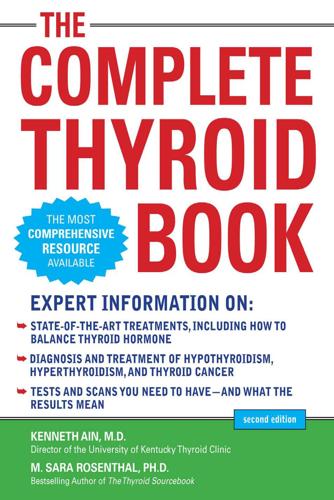
The Complete Thyroid Book
by
Kenneth Ain
and
M. Sara Rosenthal
Published 1 Mar 2005
“Changing Concepts in the Diagnosis and Management of Thyroid Nodules.” Endocrinology and Metabolism Clinics of North America 26, no. 4 (1997): 777–800. Grozinsky-Glasberg, S., et al. “Thyroxine-Triiodothyronine Combination Therapy Versus Thyroxine Monotherapy for Clinical Hypothyroidism: Meta-Analysis of Randomized Controlled Trials.” Journal of Clinical Endocrinology and Metabolism (2006) 91:2592–99. Gruters, A., H. Biebermann, and H. Krude. “Neonatal Thyroid Disorders.” Hormone Research 59, suppl. 1 (2003): 24–29. Hegedus, L., S. J. Bonnema, and F. N. Bennedbaek. “Management of Simple Nodular Goiter: Current Status and Future Perspectives.”
…
“Psychological Well-Being in Patients on ‘Adequate’ Doses of L-Thyroxine: Results of a Large, Controlled Community-Based Questionnaire Study.” Clinical Endocrinology 57, no. 5 (November 2002): 577–78. Sawka, A.M., et al. “Does a Combination Regimen of T4 and T3 Improve Depressive Symptoms Better than T4 Alone in Patients with Hypothyroidism? Results of a Double-Blind, Randomized Controlled Trial.” Journal of Clinical Endocrinology and Metabolism 88, no. 10 (2003): 4551–55. Schlosser, Eric. Fast Food Nation: The Dark Side of the American Meal. New York: Houghton Mifflin, 2001. Siegmund, W., K. Spieker, A. I. Weike, T. Giessmann, C. Modess, T. Dabers, G. Kirsch, E. Sanger, G. Engel, A.
…
“Thyroid Hormone Replacement—One Hormone or Two?” (editorial). The New England Journal of Medicine 340, no. 6 (February 11, 1999): 468–70. Walsh, John, et al. “Combined Thyroxine/Liothyronine Treatment Does Not Improve Well-Being, Quality of Life or Cognitive Function Compared to Thyroxine Alone: A Randomized Controlled Trial in Patients with Primary Hypothyroidism.” Journal of Clinical Endocrinology and Metabolism 88, no. 10 (2003): 4543–50. Weiss, R. E., and S. Refetoff. “Resistance to Thyroid Hormone.” Reviews in Endocrine and Metabolic Disorders 1, no. 1–2 (2000): 97–108. Whitley, R. J., and K. B. Ain. “Thyroglobulin: A Specific Serum Marker for the Management of Thyroid Carcinoma.”
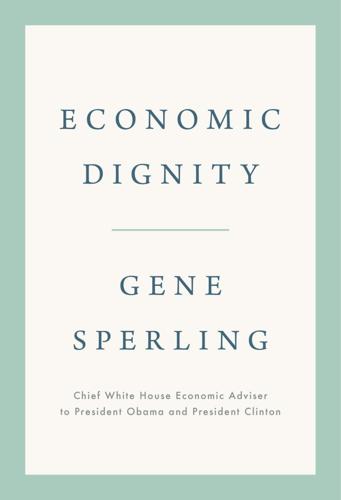
Economic Dignity
by
Gene Sperling
Published 14 Sep 2020
I have worked on versions of a UBI to Rise for years—in 1994,56 in my 2005 book,57 and in 2012 when President Obama proposed a version.58 It is long past time to get it done. As part of that effort, we should provide workers with childcare, transportation subsidies, and other supports critical to completing a training program and finding a new career. A randomized controlled trial of sector-based employment programs in the United States found that “help with childcare or transportation or a referral for housing or legal services can be critical to staying in training or keeping a job.”59 UBI to Rise could also be structured to give workers a shot at starting their own business, a feature that would also be more effective if it was available before job loss hit.
…
Sectoral training programs provide skills for a specific industry or industries in a local economy, rather than for just one company, to enable mobility across companies. And they are often facilitated by intermediaries and developed with employers’ input to ensure that the credentials and skills developed are valued by the companies that will be hiring program graduates. We are now seeing hard evidence from randomized controlled trials that these types of programs are producing strong results in giving Americans second chances and potential careers. For example, the nonprofit Year Up provides young adults in urban areas with six months of training in IT or financial services, followed by a six-month paid internship at a major firm in that sector.
…
Indeed, 88 percent of the students who do not earn a high school diploma struggled with reading in the third grade.72 A large percentage of parents with means know well that individualized tutoring or coaching can be game-changing for children struggling to keep up or even excel enough to compete for selective colleges. Yet for many parents in even middle-class families—no less low-income families—an hourly tutor can be an unaffordable luxury. A randomized controlled trial evaluated the impact of two-on-one math tutoring in twelve low-income Chicago public schools in the 2013–14 academic year. Participating students received fifty minutes of math tutoring every school day by specially trained tutors organized through Match Education, now called SAGA.73 This innovation allowed Match to create a scalable model that public schools could adopt.
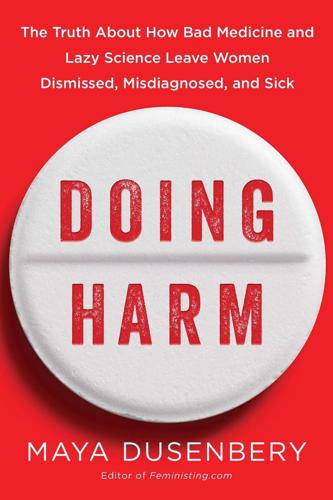
Doing Harm: The Truth About How Bad Medicine and Lazy Science Leave Women Dismissed, Misdiagnosed, and Sick
by
Maya Dusenbery
Published 6 Mar 2018
Marion Sims, known as the “father of modern gynecology,” developed a groundbreaking cure for fistulas by practicing the surgery on enslaved women, whom he purchased specifically for that purpose, and later on poor Irish immigrants. In the twentieth century, medicine slowly but surely became more rooted in science. The post–World War II period saw the rise of modern clinical research—with its gold standard of the double-blind, randomized, controlled trial—and a huge influx of federal funding turned the United States into a world leader in biomedical research. But this expansion preceded any consensus that the patients involved in clinical research shouldn’t be treated as unwitting guinea pigs. At least through the sixties, it remained socially disadvantaged and/or institutionalized groups—like the poor, prisoners, soldiers, and the mentally ill—who were most likely to be used in medical studies.
…
But, the GAO report warned, a couple of large all-female studies, like the Women’s Health Initiative, can mask the fact that there may still be specific areas where women remain underrepresented: “By not examining more detailed data on enrollment—such as data aggregated by research area or specific to various diseases and conditions—NIH cannot know whether it is adequately including women across all of the research it supports.” Indeed, outside analyses of published NIH-funded studies tend to paint a slightly less than equal picture. A review of federally funded randomized controlled trials published in nine prominent medical journals in 2004 found that, on average, women made up 37 percent of the trial subjects. When the researchers redid the analysis for studies published in 2009—same journals, same methodology—there had been no improvement: 37 percent. And of course, the NIH, while the largest, is not the only funder in town.
…
General Accounting Office, “Better Oversight Needed to Help Ensure Continued Progress Including Women in Health Research,” GAO-01-754, October 2015, www.gao.gov/assets/680/673276.pdf. “By not examining more detailed data on enrollment . . . U.S. General Accounting Office, “Better Oversight.” A review of federally funded randomized controlled trials . . . Stacie E. Geller, Marci Goldstein Adams, and Molly Carnes, “Adherence to Federal Guidelines for Reporting of Sex and Race/Ethnicity in Clinical Trials,” Journal of Women’s Health 15, no. 10 (December 2006), doi:10.1089/jwh.2006.15.1123. When the researchers redid the analysis . . .
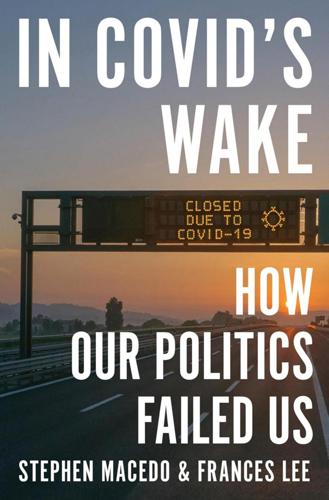
In Covid's Wake: How Our Politics Failed Us
by
Stephen Macedo
and
Frances Lee
Published 10 Mar 2025
Tufekci does not at first specify which two studies w ere conducted under Covid. But the Danish study was done in April and May 2020,17 and a larger Bangladesh study was also conducted under Covid. Let’s briefly consider both of these. The Danish study is very clear, just as Anderson said: “In this community-based, randomized controlled trial conducted in a setting where mask wearing was uncommon and was not among other recommended public health m easures related to COVID-19, a recommendation to wear a surgical mask when outside the home among others did not reduce, at conventional levels of statistical significance, incident SARS- CoV-2 infection compared with no mask recommendation.”
…
There is evidence for some level of effectiveness in some places, albeit based on studies that leave room for doubt.28 Historian of science Naomi Oreskes emphasizes the value of taking account of a variety of forms of evidence. She uses the example of dental flossing, the subject of an earlier Cochrane Library Review. When that study appeared and, like the Cochrane Masking Review, found limited evidence and a dearth of “high-quality” randomized controlled trial studies confirming the effectiveness of flossing, news items in the press suggested that there was no evidence for the benefits of using dental floss. Reporters asserted that flossing was not backed by evidence meeting the “highest standards of science.” Sound familiar? Then as now t here was misreporting of the precise language of a Cochrane Library Review.
…
Henning Bundgaard, Johan Skov Bundgaard, Daniel Emil Tadeusz Raaschou-Pedersen, Christian von Buchwald, Tobias Todsen, Jakob Boesgaard Norsk, Mia M. Pries-Heje et al., 354 not e s to ch a p t er 8 “Effectiveness of Adding a Mask Recommendation to Other Public Health Measures to Prevent SARS-CoV-2 Infection in Danish Mask Wearers: A Randomized Controlled Trial,” Annals of Internal Medicine 174 (3, March 2021 [originally published November 18, 2020]): 335–43, https:// www.ncbi.nlm.nih.gov/pmc/articles/PMC7707213/. 18. Tufekci, “Here’s Why the Science Is Clear.” 19. The raw numbers are not included in the published paper. See Maria Chikina, Wesley Pegden, and Benjamin Recht, “Re-analysis on the Statistical Sampling Biases of a Mask Promotion Trial in Bangladesh: A Statistical Replication,” Trials 23 (786, 2022): 1, https://trialsjournal .biomedcentral.com/articles/10.1186/s13063-022-0 6704-z. 20.
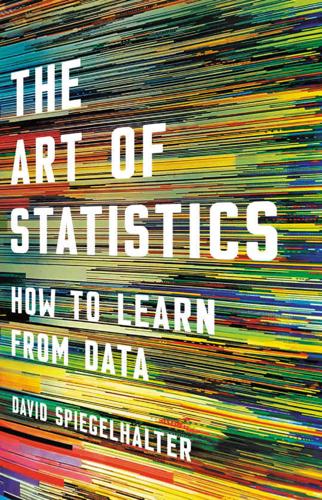
The Art of Statistics: How to Learn From Data
by
David Spiegelhalter
Published 2 Sep 2019
Allocation of treatment: It is important to compare like with like, so the treatment and comparison groups have to be as similar as possible. The best way to ensure this is by randomly allocating participants to be treated or not, and then seeing what happens to them—this is known as a randomized controlled trial (RCT). Statin trials do this with enough people so that the two groups should be similar in all factors that could otherwise influence the outcome, including—and this is critically important—those factors that we don’t know about. These studies can be huge: in the UK Heart Protection Study carried out in the late 1990s, 20,536 people at raised risk of a heart attack or stroke were randomly allocated to take either 40 mg of simvastatin daily or a dummy tablet.3 3.
…
If both small and large values of T indicate inconsistency with H0, then the two-sided P-value is the probability of observing such a large value in either direction. Often the two-sided P-value is simply taken as double the one-sided P-value, while the R software uses the total probability of events which have a lower probability of occurring than that actually observed. quartiles (of a population): the 25th, 50th and 75th percentiles. randomized controlled trial (RCT): an experimental design in which people or other units being tested are randomly allocated to different interventions, thus ensuring, up to the play of chance, that the groups are balanced in both known and unknown background factors. If the groups show subsequent differences in outcome, then either the effect must be due to the intervention or a surprising event has occurred, whose probability can be expressed as a P-value.
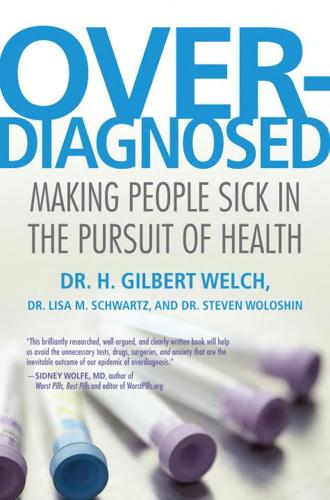
Overdiagnosed: Making People Sick in the Pursuit of Health
by
H. Gilbert Welch
,
Lisa M. Schwartz
and
Steven Woloshin
Published 18 Jan 2011
LitteJohn, et al., “Frequent Asymptomatic Pulmonary Embolism in Patients with Deep Venous Thrombosis,” Journal of the American Medical Association 271 (1994): 223–25.[back] D. R. Anderson, S. R. Kahn, M. A. Rodger, et al., “Computed Tomographic Pulmonary Angiography vs. Ventilation-perfusion Lung Scanning in Patients with Suspected Pulmonary Embolism: A Randomized Controlled Trial,” Journal of the American Medical Association 298 (2007): 2743–53. [back] N. A. DeMonaco, Q. Dang, W. N. Kapoor, et al., “Pulmonary Embolism Incidence Is Increasing with Use of Spiral Computed Tomography,” American Journal of Medicine 12 (2008): 611–17. [back] One physician reading this thought the word illogical was a little strong.
…
[back] Curtin and Park, “Trends.”[back] Given the absence of good utilization data, you might reasonably wonder how I can confidently say this. First, it is what the obstetricians themselves say; see J. T. Parer, “Obstetric Technologies: What Determines Clinical Acceptance or Rejection of Results of Randomized Controlled Trials?” American Journal of Obstetrics and Gynecology 188 (2003): 1622–25. Second, the above federal survey of new mothers suggests that 83 percent of births are monitored and 64 percent of women have at least one ultrasound during the pregnancy (they do not report on home uterine monitoring).
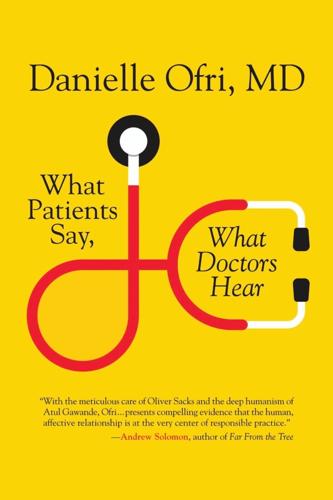
What Patients Say, What Doctors Hear
by
Danielle Ofri
Published 1 Feb 2017
Amanzio et al., “Response Variability to Analgesics: A Role for Nonspecific Activation of Endogenous Opioids,” Pain 90 (2001): 205–15. 5. J. D. Levine et al., “The Mechanism of Placebo Analgesia,” Lancet 8091 (1978): 654–57. 6. A. Goldstein et al., “A Synthetic Peptide with Morphine-like Pharmacologic Action,” Life Sciences 17 (1975): 1643–54. 7. T. J. Kaptchuk et al., “Placebos Without Deception: A Randomized Controlled Trial in Irritable Bowel Syndrome,” PLoS ONE 12 (2010): e15591. 8. S. C. Hull et al., “Patients’ Attitudes About the Use of Placebo Treatments: Telephone Survey,” British Medical Journal 347 (2013): f3757. 9. U. Bingel et al., “The Effect of Treatment Expectation on Drug Efficacy: Imaging the Analgesic Benefit of the Opioid Remifentanil,” Science Translational Medicine 3 (2011). 10.
…
Ogden, “Avoiding the Term ‘Obesity’: An Experimental Study of the Impact of Doctors’ Language on Patients’ Beliefs,” Patient Education and Counseling 76 (2009): 260–64. 2. M. Tayler and J. Ogden, “Doctors’ Use of Euphemisms and Their Impact on Patients’ Beliefs About Health: An Experimental Study of Heart Failure,” Patient Education and Counseling 57 (2005). 3. N. Williams and J. Ogden, “The Impact of Matching the Patient’s Vocabulary: A Randomized Control Trial,” Family Practice 21 (2004): 630–35. 4. J. Ogden, and K. Parkes, “‘A Diabetic’ Versus ‘A Person with Diabetes’: The Impact of Language on Beliefs about Diabetes,” European Diabetes Nursing 10 (2013): 80–85. 5. P. Burdett-Smith, “On the Naming of the Parts,” British Medical Journal 311 (1995): 1406. 6.
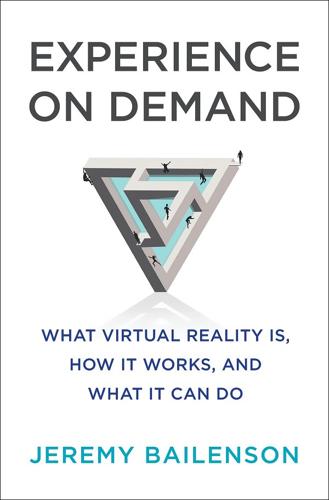
Experience on Demand: What Virtual Reality Is, How It Works, and What It Can Do
by
Jeremy Bailenson
Published 30 Jan 2018
This was the first evidence to show that VR actually changes brain activity during painful procedures.9 Hoffman knew that in order to make VR pain treatments widespread he would have to convince hospitals and insurance companies to recognize VR’s effectiveness. So he and his colleagues, in 2011, took a critical step toward gaining credibility in clinical fields: a randomized controlled trial.10 These studies have larger samples and take great care to ensure the validity of the treatment and control conditions. Fifty-four hospitalized children—burn patients—participated in the study while doing physical therapy to treat the burns, which is a horribly painful experience in which the patients extend their range of motion by doing exercises.
…
“VR Therapy for Spider Phobia,” HITLab, https://www.hitl.washington.edu/projects/exposure/. 8. Hunter G. Hoffman et al., “Modulation of thermal pain–related brain activity with virtual reality: evidence from fMRI,” Neuroreport 15 (2004): 1245–48. 9. Ibid. 10. Yuko S. Schmitt et al., “A Randomized, Controlled Trial of Immersive Virtual Reality Analgesia during Physical Therapy for Pediatric Burn Injuries,” Burns 37 (2011): 61–68. 11. Ibid. 12. Mark D. Wiederhold, Kenneth Gao, and Brenda K. Wiederhold, “Clinical Use of Virtual Reality Distraction System to Reduce Anxiety and Pain in Dental Procedures,” Cyberpsychology, Behavior, and Social Networking 17 (2014): 359–65. 13.
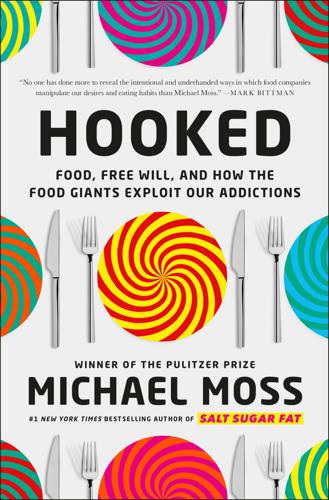
Hooked: Food, Free Will, and How the Food Giants Exploit Our Addictions
by
Michael Moss
Published 2 Mar 2021
In leaving the company in 2018, Nooyi was praised for building up its snacks business in the face of declining soda sales: Chris Isidore, “PepsiCo CEO Indra Nooyi Is Stepping Down,” CNN Money, August 6, 2018. Led by Kevin Hall Kevin Hall et al., “Ultra-Processed Diets Cause Excess Calorie Intake and Weight Gain: An Inpatient Randomized Controlled Trial of Ad Libitum Food Intake,” Cell Metabolism 30 (2019): 1–11. Chapter Seven: “Give Your Willpower a Boost” Worse still William Banting, Letter on Corpulence, Addressed to the Public (New York: Mohun, Ebbs and Hough, 1864). “So, the onus on diet” Louise Foxcroft to Nicola Twilley and Cynthia Graber, “We’ve Lost It: The Diet Episode,” Gastropod, January 30, 2018.
…
Research by Susan Swithers “Artificial Sweeteners Produce the Counterintuitive Effect of Inducing Metabolic Derangements,” Trends in Endocrinology and Metabolism 24 (2013): 431–41. Susan Swithers to author. staunchly defend their products See, “Sucralose Facts—A Safe Food Ingredient,” Calorie Control Council, 2019. might not help us lose weight Kelly Higgins and Richard Mattes, “A Randomized Controlled Trial Contrasting the Effects of 4 Low-Calorie Sweeteners and Sucrose on Body Weight in Adults with Overweight or Obesity,” American Journal of Clinical Nutrition 109 (2019): 1288–1301. as he points out Beth Gordesky-Gold et al., “Drosophila Melanogaster Prefers Compounds Perceived Sweet by Humans,” Chemical Senses 33, no. 3 (March 2008): 301–9.
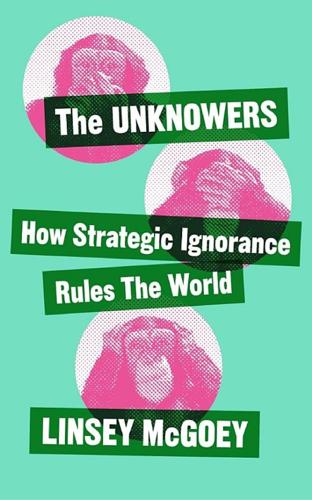
The Unknowers: How Strategic Ignorance Rules the World
by
Linsey McGoey
Published 14 Sep 2019
Difficulties in measuring a drug’s risks can render strategic ignorance not simply a pernicious tactic, but rather a rational and even laudable response to the limits of scientific evidence. SHOW ME THE EVIDENCE Regulators and drug manufacturers rely on two main scientific methods for testing a drug’s efficacy and safety. Each of these methods has its own strengths and weaknesses. The first is the randomized controlled trial (RCT), first used to test the benefits of medicines in the 1940s. Since then, RCTs have become a vital pillar in efforts to measure the risks and benefits of new medicines, seen as the ‘gold standard’ because the use of randomly allocated control groups helps to determine whether the drug itself or an external factor – such as the specific physiology of individual patients, or environmental factors – is directly responsible for a particular treatment effect.
…
Kennedy Institute of Ethics Journal 26(2): 173–194. 25 Daniel Carpenter, Reputation and Power (Princeton, NJ: Princeton University Press, 2010), 610. He adds that during the Vioxx tragedy, high-ranking FDA officials ‘engaged in an organizational motivated embrace of the status quo by defending randomized controlled trial and by disparaging pharmacoepidemiology.’ 26 Author interview. 27 Author interview. 28 André Brink, A Dry White Season (Vintage, 2011), 234. 29 See K. Hundley, 2007. ‘Drug’s chilling path to market: How a broken FDA approved a cold antibiotic despite a wide trail of alarms’ (St. Petersburg Times, May 27); D.
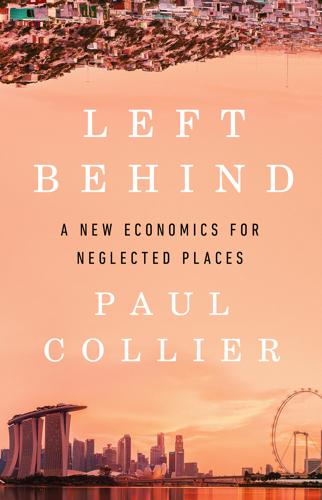
Left Behind
by
Paul Collier
Published 6 Aug 2024
Julius Nyerere’s Kenyan counterpart, Jomo Kenyatta, did not seize the moment of Independence to reset identities. Forty years later, Tanzanians could cooperate across ethnic divides and Kenyans couldn’t. Within a decade, the costs of division among Kenyans had escalated disastrously. The evidence comes from an ingenious randomized controlled trial conducted in a modern flower-packing factory. Each day, managers randomly assigned packers along the conveyor belt and paid them all a bonus reflecting the number of flowers packed. Sometimes, the packers at the beginning and end of the line would be from rival ethnic groups, such as Kikuyu, Kalenjin and Luo.
…
It combines practical on-the-ground interventions with research designed to learn from evaluated experiments. That emphasis upon empirical research done in local contexts most likely accounts for its remarkable success. Few other NGOs have a comparable appetite to evaluate their initiatives. The randomized controlled trials (RCTs) pioneered by BRAC may be reaching their natural limits. At the time and place of the experiment, and with the same team implementing it, we can have high confidence in the results. But whether that experiment has external validity – whether it would work in a different time and place, or with a different team – is less certain.
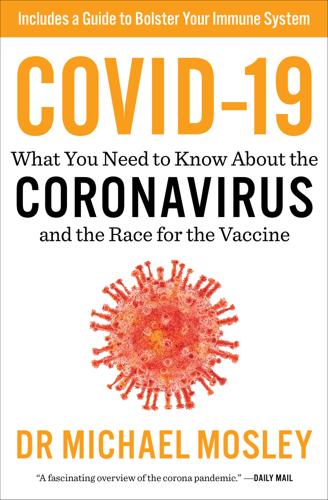
COVID-19: Everything You Need to Know About the Corona Virus and the Race for the Vaccine
by
Michael Mosley
Published 1 Jun 2020
At the time of writing we don’t have any drug treatments that are really effective. One of the more promising is remdesivir, an antiviral drug that was first developed years ago to fight Ebola. It didn’t work that well against Ebola, but tests done in the lab suggest it may help prevent the Covid-19 virus from replicating. There has been one randomized controlled trial that showed that, on average, it reduces the time it takes to recover from Covid-19 from 15 days to 11 days. There was also a modest impact on the risk of dying, though this was not statistically significant.25 Another drug, which got a lot of attention from President Donald Trump after a small study done in France suggested it might be of benefit, is the anti-malaria drug hydroxychloroquine.
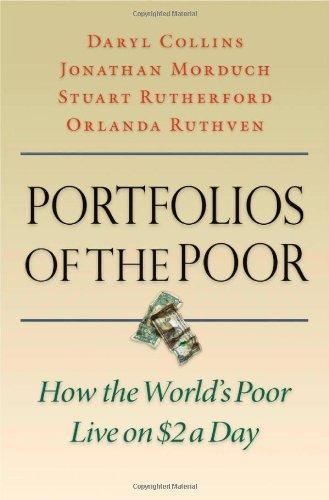
Portfolios of the poor: how the world's poor live on $2 a day
by
Daryl Collins
,
Jonathan Morduch
and
Stuart Rutherford
Published 15 Jan 2009
Though taking the loans was costlier than saving, it provided the households with an effective way to accumulate. 11. For an excellent presentation of these issues, we refer readers to Mullainathan 2005. 12. See Ashraf, Karlan, and Yin 2006. They evaluated the impact of this “commitment” saving product using a randomized controlled trial, where 1,800 customers of a bank were randomized to either receive an offer to open the new type of account or not. (Everyone already had access to a standard account.) Among those offered the new type of accounts, 28 percent opened one. After 12 months, average savings balances increased by 80 percent in the group offered the new type of account compared to the control group.
…
Foreign investment in microfinance, for example, more than tripled between 2004 and 2006, to $4 billion. See Reille and Forester 2008. 4. For a review of early experiences with branchless banking, see Ivatury and Mas 2008. 5. New field research adapts methods from medical research, particularly the use of randomized controlled trials, to test the value and logic of financial innovations. Recently, the Financial Access Initiative, a consortium of researchers at New York University, Yale, Harvard, and Innovations for Poverty Action, has been formed to extend field trials in Latin America, Africa, and Asia. Working with microfinance providers, researchers are investigating, for example, how sensitive borrowers are to changes in interest rates, the value of structured savings devices, and the impact of business training alongside credit.
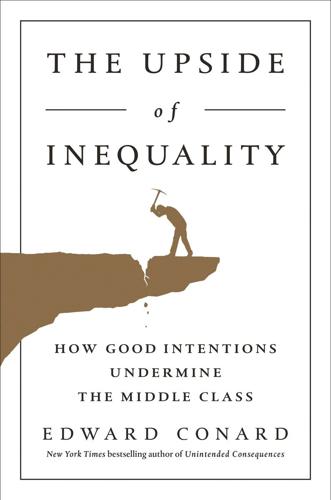
The Upside of Inequality
by
Edward Conard
Published 1 Sep 2016
But the report concludes: It is not at all obvious that the rush to implement pre-k programs widely without the necessary attention to the quality of the program provides worthwhile benefits to children living in those disadvantaged environments. . . . Scaling up pre-k programs quickly could lead to badly run programs that might, in fact, be worse than doing nothing.34 A metastudy of 35 high-quality studies of ten much-studied preschool programs found that only half the studies used randomized control trials, the so-called gold standard of research. Of those, only three found statistically significant positive long-term results. But none of those results was linked to school-based pre-K.35 The study concludes: We know that parents and early environments play by far the most crucial role in shaping a child’s development. . . .
…
Steven Barnett, et al., “Lifetime Effects: The High/Scope Perry Preschool Study Through Age 40,” High/Scope Press (2006), http://www.highscope.org/file/Research/PerryProject/specialsummary_rev2011_02_2.pdf. 31. Ibid. 32. “Hawthorne Effect,” Wikipedia, retrieved September 2015, https://en.wikipedia.org/wiki/Hawthorne_effect. 33. Mark Lipsey, Dale Farran, and Kerry Hofer, “A Randomized Control Trial of a Statewide Voluntary Prekindergarten Program on Children’s Skills and Behaviors through Third Grade,” Peabody Research Institute, Vanderbilt University, September 2015, http://peabody.vanderbilt.edu/research/pri/VPKthrough3rd_final_withcover.pdf. 34. Ibid. 35. Katharine Stevens and Elizabeth English, “Studies Used to Promote Pre-K Actually Make the Case for a Different Approach,” American Enterprise Institute, April 2016, http://www.aei.org/multimedia/studies-used-to-promote-pre-k- actually-make-the-case-for-a-different-approach/?
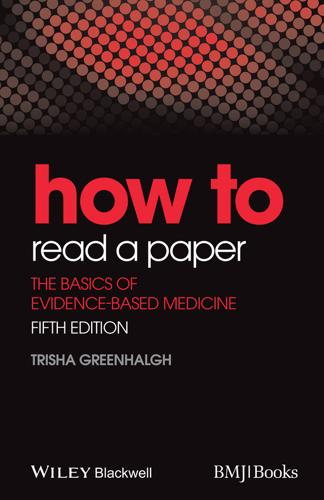
How to Read a Paper: The Basics of Evidence-Based Medicine
by
Trisha Greenhalgh
Published 18 Nov 2010
The medical review article revisited: has the science improved? Annals of Internal Medicine 1999;131(12):947–51. 4 Oxman AD, Guyatt GH. The science of reviewing research. Annals of the New York Academy of Sciences 1993;703(1):125–34. 5 Antman EM, Lau J, Kupelnick B, et al. A comparison of results of meta-analyses of randomized control trials and recommendations of clinical experts. JAMA: The Journal of the American Medical Association 1992;268(2):240–8. 6 Knipschild P. Systematic reviews. Some examples. BMJ: British Medical Journal 1994;309(6956):719–21. 7 Moher D, Liberati A, Tetzlaff J, et al. Preferred reporting items for systematic reviews and meta-analyses: the PRISMA statement.
…
Does cognitive behaviour therapy have an enduring effect that is superior to keeping patients on continuation pharmacotherapy? A meta-analysis. BMJ Open 2013;3(4) doi: 10.1136/bmjopen-2012-002542[published Online First: Epub Date]. 15 Egger M, Smith GD, Altman D. Systematic reviews in health care: meta-analysis in context. Chichester: Wiley.com, 2008. 16 Fergusson D, Glass KC, Hutton B, et al. Randomized controlled trials of aprotinin in cardiac surgery: could clinical equipoise have stopped the bleeding? Clinical Trials 2005;2(3):218–32. 17 Stewart LA, Tierney JF. To IPD or not to IPD? Advantages and disadvantages of systematic reviews using individual patient data. Evaluation & the Health Professions 2002;25(1):76–97. 18 Borenstein M, Hedges LV, Higgins JP, et al.
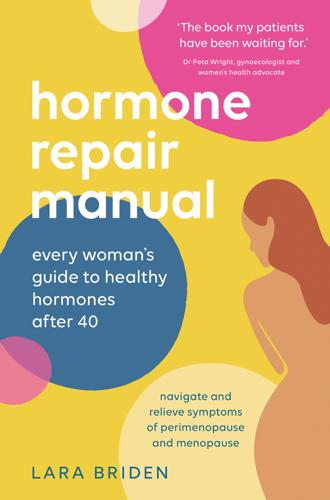
Hormone Repair Manual
by
Lara Briden
Published 14 Apr 2021
.: J Egger, CM Carter, J Wilson et al, ‘Is migraine food allergy? A double-blind controlled trial of oligoantigenic diet treatment’, Lancet, 2(8355), October 1983, pp865–9. 177: According to a 2016 meta-analysis . . .: HY Chiu, TH Yeh, YC Huang & PY Chen, ‘Effects of intravenous and oral magnesium on reducing migraine: a meta-analysis of randomized controlled trials’, Pain Physician, 19(1), January 2016, ppE97–112. 177: Dr Alexander Mauskop, a neurologist at the New York Headache Center, believes . . .: A Mauskop & J Varughese, ‘Why all migraine patients should be treated with magnesium’, Journal of Neural Transmission (Vienna), 119(5), May 2012, pp575–9. 177: Melatonin can reduce the frequency of menstrual migraines . . .: R Long, Y Zhu & S Zhou, ‘Therapeutic role of melatonin in migraine prophylaxis: a systematic review’, Medicine (Baltimore), 98(3), January 2019, article e14099. 177: The dose of melatonin trialled for migraine . . .: R Long, Y Zhu & S Zhou 2019, ibid. 177: Vitamin B2 (riboflavin) has been clinically trialled . . .: C Boehnke, U Reuter, U Flach et al, ‘High-dose riboflavin treatment is efficacious in migraine prophylaxis: an open study in a tertiary care centre’, European Journal of Neurology, July 2004, 11(7), pp 475–7. 179: Fatima shared with her doctor the research by Professor Prior . . .: CL Hitchcock & JC Prior 2012, op. cit. 180: ‘During the menopause transition. . .’: JE Brody, ‘The brain fog of menopause’, New York Times, 17 December 2018, nytimes.com/2018/12/17/well/live/the-brain-fog-of-menopause.html 180: And according to neuroscientist Lisa Mosconi . . .: N Bezzant, ‘Women, midlife, moods and madness: the truth about perimenopause’, Stuff, 2 August 2020, stuff.co.nz/life-style/well-good/teach-me/122294106/women-midlife-moods-and-madness-the-truth-about-perimenopause 181: On the one hand, there’s some evidence that estrogen . . .: H Savolainen-Peltonen et al, ‘Use of postmenopausal hormone therapy and risk Altzheimer’s disease in Finland: nationwide case-control study, BMJ, 364, 6 March 2019, article 30842086. 181: According to neuroscientist Roberta Diaz Brinton . . .: JR Rettberg, J Yao & RD Brinton 2014, op. cit. 181: Movement of any kind, including walking . . .: J Firth, B Stubbs, D Vancampfort et al, ‘Effect of aerobic exercise on hippocampal volume in humans: a systematic review and meta-analysis’, Neuroimage, 166, February 2018, pp230–8. 182: The goal is to prevent sarcopenia and build muscle . . .: Z Radak, N Hart, L Sarga et al, ‘Exercise plays a preventive role against Alzheimer’s disease’, Journal of Alzheimer’s Disease, 20(3), May 2010, pp777–83. 182: Once again, magnesium and taurine . . .: ZP Xu, L Li, J Bao et al, ‘Magnesium protects cognitive functions and synaptic plasticity in streptozotocin-induced sporadic Alzheimer’s model’, PLoS One, 9(9), 2014, article e108645; C Chen, S Xia, J He et al, ‘Roles of taurine in cognitive function of physiology, pathologies and toxication’, Life Sciences, 231, August 2019, article 116584. 183: Choline can be important at menopause because . . .: LM Fischer, KA da Costa, L Kwock et al, ‘Dietary choline requirements of women: effects of estrogen and genetic variation’, American Journal of Clinical Nutrition, 92(5), November 2010, pp1113–19. 183: A sufficient intake can support healthy brain function . . .: E Nurk, H Refsum, I Bjelland et al, ‘Plasma free choline, betaine and cognitive performance: the Hordaland Health Study’, British Journal of Nutrition, 109(3), February 2013, pp511–19. 183: The best type of choline for brain health is . . .: XA Alvarez, M Laredo, D Corzo et al, ‘Citicoline improves memory performance in elderly subjects’, Methods and Findings in Experimental and Clinical Pharmacology, 19(3), April 1997, pp201–10. 183: As a supplement, MCT oil can . . .: E Croteau, CA Castellano, MA Richard et al, ‘Ketogenic medium chain triglycerides increase brain energy metabolism in Alzheimer’s disease’, Journal of Alzheimer’s Disease, 64(2), June 2018, pp551–61. 187: This is because of what’s called a bimodal association . . .: L Andréen, S Nyberg, S Turkmen et al, ‘Sex steroid induced negative mood may be explained by the paradoxical effect mediated by GABAA modulators’, Psychoneuroendocrinology, 34(8), September 2009, pp1121–32. 187: Estrogen can be highly effective for the depression and insomnia . . .: A Villa, E Vegeto, A Poletti & A Maggi, ‘Estrogens, neuroinflammation, and neurodegeneration’, Endocrine Reviews, 37(4), August 2016, pp372–402. 189: SSRIs may also increase the long-term risk . . .: BS Fernandes, JM Hodge, JA Pasco et al, ‘Effects of depression and serotonergic antidepressants on bone: mechanisms and implications for the treatment of depression’, Drugs and Aging, 33(1), January 2016, pp21–5. 189: It can be helpful for menopausal depression . . .: SM Green, E Donegan, BN Frey et al, ‘Cognitive behavior therapy for menopausal symptoms (CBT-Meno): a randomized controlled trial’, Menopause, 26(9), September 2019, pp972–80. 190: Zinc deficiency is strongly linked with depression . . .: MA Petrilli, TM Kranz, K Kleinhaus et al, ‘The emerging role for zinc in depression and psychosis’, Frontiers in Pharmacology, 8, 2017, article 414. 190: It did well in a recent randomised controlled trial . . .: H Retallick-Brown, N Blampied & JJ Rucklidge, ‘A pilot randomized treatment-controlled trial comparing vitamin B6 with broad-spectrum micronutrients for premenstrual syndrome’, Journal of Alternative and Complementary Medicine, 26(2), February 2020, pp88–97. 191: N-acetyl cysteine (NAC) is an important supplement for . . .: D Hellerstein, ‘NAC: the amino acid that turns psychiatry on its head’, Psychology Today, 31 October 2018, psychologytoday.com/nz/blog/heal-your-brain/201810/nac-the-amino-acid-turns-psychiatry-its-head 192: SAM-e (S-adenosylmethionine) is a derivative of . . .: J Sarris, GI Papakostas, O Vitolo et al, ‘S-adenosyl methionine (SAMe) versus escitalopram and placebo in major depression RCT: efficacy and effects of histamine and carnitine as moderators of response’, Journal of Affective Disorders, 164, August 2014, pp76–81. 192: A recent meta-analysis concluded that . . .: YR Liu, YL Jiang, RQ Huang et al, ‘Hypericum perforatum L. preparations for menopause: a meta-analysis of efficacy and safety’, Climacteric, 17(4) August 2014, pp325–35. 193: Supplementation with EPA (eicosapentaenoic acid) . . .: Y Liao, B Xie, H Zhang et al, ‘Efficacy of omega-3 PUFAs in depression: a meta-analysis’, Translational Psychiatry, 9(1), August 2019, article 190. 195: In fact, there’s growing evidence that abdominal weight gain . . .: H Kolb, M Stumvoll, W Kramer et al, ‘Insulin translates unfavourable lifestyle into obesity’, BMC Medicine, 16(1), December 2018, article 232. 196: Estrogen plus progesterone therapy can also help to . . .: I Bitoska, B Krstevska, T Milenkovic et al, ‘Effects of hormone replacement therapy on insulin resistance in postmenopausal diabetic women’, Open Access Macedonian Journal of Medical Sciences, 4(1), March 2016, pp83–8. 197: When you restrict food, even for a relatively short time . . .: R de Cabo & MP Mattson, ‘Effects of intermittent fasting on health, aging, and disease’, New England Journal of Medicine, 381(26), December 2019, pp2541–51. 200: At a high dose, fructose promotes insulin resistance by . . .: C Jang, S Hui, W Lu et al, ‘The small intestine converts dietary fructose into glucose and organic acids’, Cell Metabolism, 27(2), February 2018, pp351–61, article e3. 200: According to Princeton researcher Joshua D.
…
.: BS Fernandes, JM Hodge, JA Pasco et al, ‘Effects of depression and serotonergic antidepressants on bone: mechanisms and implications for the treatment of depression’, Drugs and Aging, 33(1), January 2016, pp21–5. 189: It can be helpful for menopausal depression . . .: SM Green, E Donegan, BN Frey et al, ‘Cognitive behavior therapy for menopausal symptoms (CBT-Meno): a randomized controlled trial’, Menopause, 26(9), September 2019, pp972–80. 190: Zinc deficiency is strongly linked with depression . . .: MA Petrilli, TM Kranz, K Kleinhaus et al, ‘The emerging role for zinc in depression and psychosis’, Frontiers in Pharmacology, 8, 2017, article 414. 190: It did well in a recent randomised controlled trial . . .: H Retallick-Brown, N Blampied & JJ Rucklidge, ‘A pilot randomized treatment-controlled trial comparing vitamin B6 with broad-spectrum micronutrients for premenstrual syndrome’, Journal of Alternative and Complementary Medicine, 26(2), February 2020, pp88–97. 191: N-acetyl cysteine (NAC) is an important supplement for . . .: D Hellerstein, ‘NAC: the amino acid that turns psychiatry on its head’, Psychology Today, 31 October 2018, psychologytoday.com/nz/blog/heal-your-brain/201810/nac-the-amino-acid-turns-psychiatry-its-head 192: SAM-e (S-adenosylmethionine) is a derivative of . . .: J Sarris, GI Papakostas, O Vitolo et al, ‘S-adenosyl methionine (SAMe) versus escitalopram and placebo in major depression RCT: efficacy and effects of histamine and carnitine as moderators of response’, Journal of Affective Disorders, 164, August 2014, pp76–81. 192: A recent meta-analysis concluded that . . .: YR Liu, YL Jiang, RQ Huang et al, ‘Hypericum perforatum L. preparations for menopause: a meta-analysis of efficacy and safety’, Climacteric, 17(4) August 2014, pp325–35. 193: Supplementation with EPA (eicosapentaenoic acid) . . .: Y Liao, B Xie, H Zhang et al, ‘Efficacy of omega-3 PUFAs in depression: a meta-analysis’, Translational Psychiatry, 9(1), August 2019, article 190. 195: In fact, there’s growing evidence that abdominal weight gain . . .: H Kolb, M Stumvoll, W Kramer et al, ‘Insulin translates unfavourable lifestyle into obesity’, BMC Medicine, 16(1), December 2018, article 232. 196: Estrogen plus progesterone therapy can also help to . . .: I Bitoska, B Krstevska, T Milenkovic et al, ‘Effects of hormone replacement therapy on insulin resistance in postmenopausal diabetic women’, Open Access Macedonian Journal of Medical Sciences, 4(1), March 2016, pp83–8. 197: When you restrict food, even for a relatively short time . . .: R de Cabo & MP Mattson, ‘Effects of intermittent fasting on health, aging, and disease’, New England Journal of Medicine, 381(26), December 2019, pp2541–51. 200: At a high dose, fructose promotes insulin resistance by . . .: C Jang, S Hui, W Lu et al, ‘The small intestine converts dietary fructose into glucose and organic acids’, Cell Metabolism, 27(2), February 2018, pp351–61, article e3. 200: According to Princeton researcher Joshua D.
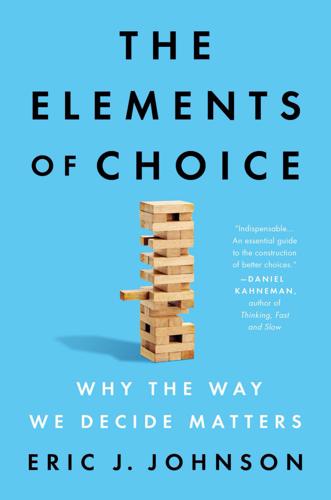
The Elements of Choice: Why the Way We Decide Matters
by
Eric J. Johnson
Published 12 Oct 2021
“Envision Version 2.0: A Rating System for Sustainable Infrastructure”; Shealy et al., “Using Framing Effects to Inform More Sustainable Infrastructure Design Decisions.” 12. Beko, “Freestanding 7kg Condenser Tumble Dryer DCX71100.” The picture describes a Freestanding 7kg Condenser Tumble Dryer DCX71100. 13. Musicus et al., “Online Randomized Controlled Trials of Restaurant Sodium Warning Labels.” 14. See Reyes et al., “Development of the Chilean Front-of-Package Food Warning Label” and Taillie et al., “An Evaluation of Chile’s Law of Food Labeling and Advertising on Sugar-Sweetened Beverage Purchases from 2015 to 2017.” 15. “President Trump’s Energy Independence Policy.”
…
Mullainathan, Sendhil, Markus Noeth, and Antoinette Schoar. “The Market for Financial Advice: An Audit Study.” National Bureau of Economic Research, working paper, March 2012. doi:10.3386/w17929. Musicus, Aviva A., Alyssa J. Moran, Hannah G. Lawman, and Christina A. Roberto. “Online Randomized Controlled Trials of Restaurant Sodium Warning Labels.” American Journal of Preventive Medicine 57, no. 6 (December 1, 2019): e181–93. doi:10.1016/j.amepre.2019.06.024. Nathanson, Lori, Sean P. Corcoran, and Christine Baker-Smith. “High School Choice in New York City: A Report on the School Choices and Placements of Low-Achieving Students.”
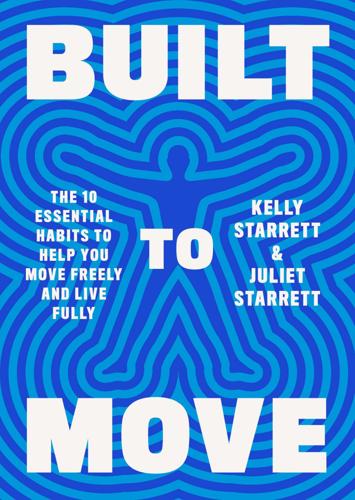
Built to Move: The Ten Essential Habits to Help You Move Freely and Live Fully
by
Kelly Starrett
and
Juliet Starrett
Published 3 Apr 2023
“Sitting-Time, Physical Activity, and Depressive Symptoms in Mid-Aged Women.” American Journal of Preventive Medicine 45, no. 3 (September 2013): 276–81. DOI: 10.1016/j.amepre.2013.04.009. Wang, Feifei, and Szilvia Boros. “Effects of a Pedometer-Based Walking Intervention on Young Adults’ Sleep Quality, Stress and Life Satisfaction: Randomized Controlled Trial.” Journal of Bodywork and Movement Therapies 24, no 4 (October 2020): 286–92. DOI: 10.1016/j.jbmt.2020.07.011. Wayman, Erin. “Becoming Human: The Evolution of Walking Upright.” Smithsonian Magazine, August 6, 2012. VITAL SIGN 5: FUTURE-PROOF YOUR NECK AND SHOULDERS Andersen, Lars L., Michael Kjær, Karen Søgaard, et al.
…
Medicine and Science in Sports and Exercise 35, no. 12 (December 2003): 1962–71. DOI: 10.1249/01.MSS.0000099110.17311.A2. Tucker, Larry A., J. Eric Strong, James D. LeCheminant, and Bruce W. Bailey. “Effect of Two Jumping Programs on Hip Bone Mineral Density in Premenopausal Women: A Randomized Controlled Trial.” American Journal of Health Promotion 29, no. 3 (January 2015): 158–64. DOI: 10.4278/ajhp.130430-QUAN-200. Weiss, Audrey J., Lawrence D. Reid, and Marguerite L. Barrett. “Overview of Emergency Department Visits Related to Injuries, by Cause of Injury, 2017.” Statistical Brief #266, Healthcare Cost and Utilization Project, Agency for Healthcare Research and Quality, U.S.

Save Your Gallbladder and What to Do if You've Already Lost It
by
Sandra Cabot
and
Margaret Jasinska
Published 2 Sep 2013
Lancet 2005;365:1388 20. British Journal of General Practice 2004; 54:574-79 21. Am J Gastroenterology 92:132-38, 1997 22. Kumar S, et al Infection as a risk factor for gallbladder cancer. J Surg Oncol. 2006 Jun 15;93(8):633-9. 23. Glantz A, et al. Intrahepatic cholestasis of pregnancy: a randomized controlled trial comparing dexamethasone and ursodeoxycholic acid. Hepatology Dec 2005;42(6):1399-405 24. Glasgow RE, Mulvihill SJ (2010). Treatment of gallstone disease. In M Feldman et al., eds., Sleisenger and Fordtran’s Gastrointestinal and Liver Disease, 9th ed., vol. 1, pp. 1121-1138. Philadelphia: Saunders.
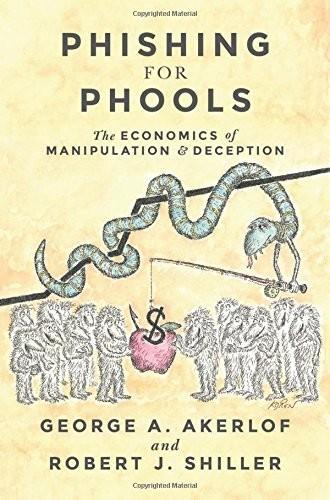
Phishing for Phools: The Economics of Manipulation and Deception
by
George A. Akerlof
,
Robert J. Shiller
and
Stanley B Resor Professor Of Economics Robert J Shiller
Published 21 Sep 2015
But COX-1 protects the lining of the stomach, and its inhibition causes ulcers.11 Overdosage of NSAIDs is thus a leading cause of death among the elderly.12 Merck had the bright idea (as did Searle) to create a drug targeted to block COX-2, but not COX-1.13 Merck developed such a drug; named it Vioxx; and got it approved by the FDA. But that approval carried with it the further stipulation of a more rigorous randomized controlled trial than had been so far conducted.14 Merck named that study VIGOR (the VIoxx Gastrointestinal Outcomes Research study). The events surrounding VIGOR will give us a feeling for why, despite our modern safeguards, we are still vulnerable to phishing by Pharma. Like publishing houses bringing out a best-selling book, the Pharmaceuticals carefully orchestrate the rollout of a blockbuster drug.
…
In selecting the authors, who will receive the data from the experiments, the drug companies are not shooting in the dark. Their many connections (including those from the research support given by the company) clue them in: both regarding who will be influential and who will be favorable. The selectees are given easy access to the randomized controlled trials required by the FDA. They are also typically given “editorial support”—less graciously known as “ghostwriting”—for the article.15 It is thus no coincidence that a higher fraction of journal articles sponsored by pharmaceutical companies are favorable to the drugs reviewed than articles funded by other sources.16 Part of drug marketing is not just about the content of the articles published; it is also about their number.
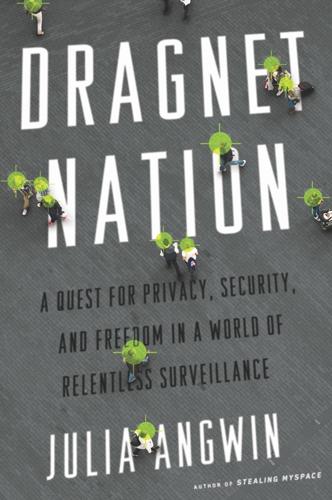
Dragnet Nation: A Quest for Privacy, Security, and Freedom in a World of Relentless Surveillance
by
Julia Angwin
Published 25 Feb 2014
In 2004, Leon Hempel and Eric Töpfer, writing from the Center for Technology and Society in Berlin, analyzed studies of closed-circuit television (CCTV) use in Europe and found that many of the studies lacked control groups to compare crime trends in the areas where cameras were installed to crime trends in the wider areas without cameras, and lacked analysis of the displacement of crime from the target areas to other areas. The few studies that have used control groups show little support for the theory that cameras can prevent crime. Another Urban Institute study from 2011 analyzing the impact of surveillance cameras on crime in parking lots—and using a randomized controlled trial method—showed that the cameras made no real difference. The study compared a year’s worth of car-related crime in twenty-five parking lots near Metro stations in Washington, D.C., that had installed motion-activated cameras with identical crimes in twenty-five similar “control” parking lots with no cameras installed.
…
: Analysing the Employment of CCTV in European Cities and Assessing Its Social and Political Implications” (Working Paper No. 1: Inception Report, Urban Eye, January 2002), 23, http://www.urbaneye.net/results/ue_wp1.pdf. Another Urban Institute study from 2011: Nancy G. La Vigne and Samantha S. Lowry, “Evaluation of Camera Use to Prevent Crime in Commuter Parking Facilities: A Randomized Controlled Trial,” Urban Institute, September 2011, http://www.urban.org/publications/412451.html. In 2004, the criminologists Brandon Welsh and David Farrington: Brandon C. Welsh and David Farrington, “Surveillance for Crime Prevention in Public Space: Results and Policy Changes,” Criminology and Public Policy 3, no. 3 (July 2004): 497.
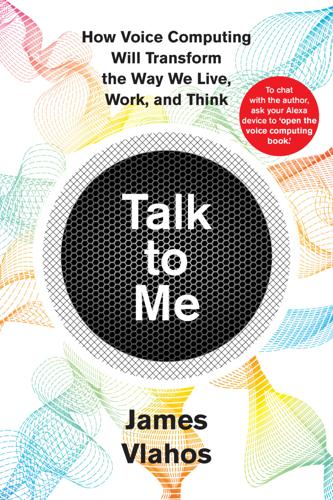
Talk to Me: How Voice Computing Will Transform the Way We Live, Work, and Think
by
James Vlahos
Published 1 Mar 2019
Instead, the bot got me to reframe my issue in generalized terms that it could competently address. But that isn’t so different from what a real therapist does. When Woebot asked how I was doing after our little session, I had to admit that I felt better. Beyond subjective impressions, is there evidence supporting the efficacy of chatbot therapists? In a randomized controlled trial conducted by researchers at Woebot and the Stanford School of Medicine, seventy subjects were divided into two groups. Half were directed to get help from Woebot while the other half was instructed to consult an e-book about depression. After two weeks, all of them completed online mental health assessments.
…
News and World Report, September 22, 2017, https://goo.gl/qXzq5N. 240 “These are enchanting objects”: Sherry Turkle, interview with author, December 16, 2009. 240 “People have the right”: Ronald Arkin, interview with author, September 8, 2015. 240 “You’re a bitch”: Leah Fessler, “We tested bots like Siri and Alexa to see who would stand up to sexual harassment,” Quartz, February 22, 2017, https://goo.gl/4nr8O1. 241 “We were concerned about the potential impact”: this and all subsequent quotes from this scene from Cortana “principles” meeting, author listening in by phone, October 18, 2017. 244 “domination model”: Peter Kahn, interview with author, August 28, 2015. 245 To explore what happens: Peter Kahn et al., “‘Robovie, you’ll have to go into the closet now’: children’s social and moral relationships with a humanoid robot,” Developmental Psychology 48, no. 2 (March 2012): 303–14. 245 “Feel free to tell me anything”: SimSensei & MultiSense: Virtual Human and Multimodal Perception for Healthcare Support, posted to YouTube on February 7, 2013, https://goo.gl/eoxcGP. 245 “People are willing to disclose more”: “MultiSense and SimSensei,” USC Institute for Creative Technologies fact sheet, March 2014, https://goo.gl/yY5KiR. 245 In a follow-up study: Albert Rizzo et al., “Clinical interviewing by a virtual human agent with automatic behavior analysis,” Proceedings of the 11th International Conference on Disability, Virtual Reality and Associated Technologies (September 2016): 57–63, https://goo.gl/aWRHzV. 246 The results were definitely mixed: Nick Romeo, “The Chatbot Will See You Now,” The New Yorker, December 25, 2016, https://goo.gl/BkrE6e. 246 “mental health chatbot”: X2AI website, accessed July 31, 2018, https://goo.gl/YV8nJZ. 247 “significantly reduced their symptoms of depression”: Kathleen Fitzpatrick et al., “Delivering Cognitive Behavior Therapy to Young Adults with Symptoms of Depression and Anxiety Using a Fully Automated Conversational Agent (Woebot): A Randomized Controlled Trial,” JMIR Mental Health 4, no. 2 (2017): e19, https://goo.gl/s9hb6f. 248 “patterns in our speech and writing”: Guillermo Cecchi, “IBM 5 in 5: With AI, our words will be a window into our mental health,” IBM blog, January 5, 2017, https://goo.gl/BHUDvM. 11. Immortals 252 “I want to dive in”: this and all subsequent quotes from John Vlahos come from interviews with author in 2016. 252 “I will always look up to you tremendously”: Jonathan Vlahos, conversation with author, September 20, 2016. 253 “I want to create technology”: Oren Jacob, interview with author, August 2, 2015. 254 “What is the purpose of living?”
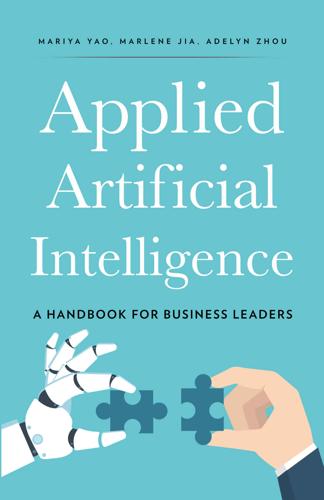
Applied Artificial Intelligence: A Handbook for Business Leaders
by
Mariya Yao
,
Adelyn Zhou
and
Marlene Jia
Published 1 Jun 2018
In healthcare, AI systems are at risk of producing unreliable insights even when algorithms are perfectly implemented, because the availability of medical data is affected by social inequality. Poorer communities lack access to digital healthcare, which leaves a gaping hole in the medical information that is fed into AI algorithms. Randomized control trials often exclude groups such as pregnant women, the elderly, or those suffering from other medical complications.(34) Such exclusions mean that the unique physical characteristics of these patients are not incorporated into studies, which in turn affects whether tested treatment will be effective on patients who don’t share the characteristics of the original clinical volunteers.
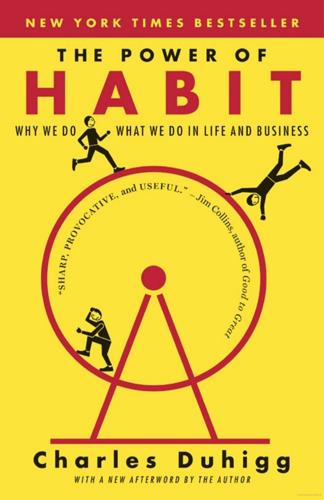
The Power of Habit: Why We Do What We Do in Life and Business
by
Charles Duhigg
Published 1 Jan 2011
Program: A Descriptive Analysis,” Addictive Behaviors 17, no. 6 (1992): 579–85; D. J. Horne, A. E. White, and G. A. Varigos, “A Preliminary Study of Psychological Therapy in the Management of Atopic Eczema,” British Journal of Medical Psychology 62, no. 3 (1989): 241–48; T. Deckersbach et al., “Habit Reversal Versus Supportive Psychotherapy in Tourette’s Disorder: A Randomized Controlled Trial and Predictors of Treatment Response,” Behaviour Research and Therapy 44, no. 8 (2006): 1079–90; Douglas W. Woods and Raymond G. Miltenberger, “Habit Reversal: A Review of Applications and Variations,” Journal of Behavior Therapy and Experimental Psychiatry 26, no. 2 (1995): 123–31; D. W.
…
Wilson, “Lifestyle Modification for the Management of Obesity,” Gastro-enterology 132 (2007): 2226–38. 4.24 Then, in 2009 a group of researchers J. F. Hollis et al., “Weight Loss During the Intensive Intervention Phase of the Weight-Loss Maintenance Trial,” American Journal of Preventative Medicine 35 (2008): 118–26. See also L. P. Svetkey et al., “Comparison of Strategies for Sustaining Weight Loss, the Weight Loss Maintenance Randomized Controlled Trial,” JAMA 299 (2008): 1139–48; A. Fitch and J. Bock, “Effective Dietary Therapies for Pediatric Obesity Treatment,” Reviews in Endocrine and Metabolic Disorders 10 (2009): 231–36; D. Engstrom, “Eating Mindfully and Cultivating Satisfaction: Modifying Eating Patterns in a Bariatric Surgery Patient,” Bariatric Nursing and Surgical Patient Care 2 (2007): 245–50; J.
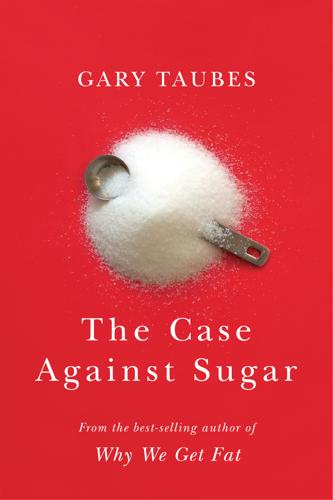
The Case Against Sugar
by
Gary Taubes
Published 27 Dec 2016
Moreover, as other researchers had implied at the same conference, they couldn’t even know if the rats they used were good models for other rats, since some of the observations were what researchers would call “strain specific.” Eating sugar seemed to shorten the lives of some strains of rats but not others. The kind of randomized controlled trials over the course of ten or twenty years that would truly test the hypothesis that sugar caused heart disease or diabetes, as Yudkin noted, were no different from the kind the NIH was then considering and would soon reject for the dietary-fat/cholesterol hypothesis. Such trials were certainly far beyond the budget of any single researcher or even collaboration of researchers; they required that the National Institutes of Health or the Medical Research Council in the U.K. or some other government agency create a concerted program to test the idea.
…
In 2005, Scottish researchers reported that diabetic patients who took a drug called metformin, which works to reduce insulin resistance and therefore lower circulating levels of insulin, also had a significantly reduced risk of cancer compared with diabetics on other medications. That association has been confirmed multiple times, and has led researchers to test whether metformin acts as an anti-cancer drug, preventing or inhibiting cancer’s recurrence in randomized controlled trials. These observations also served to focus the attention of cancer researchers further on the possibility that insulin and insulin-like growth factor are cancer promoters, and thus that abnormally elevated levels of insulin—caused by insulin resistance, for instance—would increase our cancer risk.
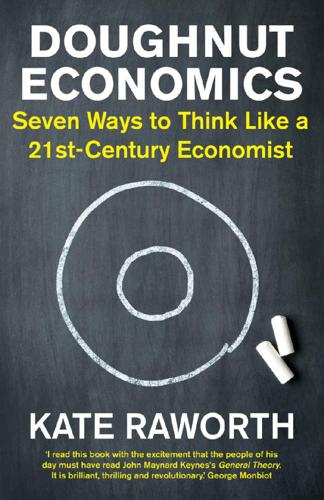
Doughnut Economics: Seven Ways to Think Like a 21st-Century Economist
by
Kate Raworth
Published 22 Mar 2017
Rode, J., Gómez-Baggethun, E. and Krause, T. (2015), ‘Motivation crowding by economic incentives in conservation policy: a review of the empirical evidence’, Ecological Economics 117, pp. 270–282. 58. Wald, D., et al. (2014) ‘Randomized trial of text messaging on adherence to cardiovascular preventive treatment, Plos ONE 9, p. 12. 59. Pop-Eleches, C. et al. (2011) ‘Mobile phone technologies improve adherence to antiretroviral treatment in resource-limited settings: a randomized controlled trial of text message reminders’, AIDS 25: 6, pp. 825–834. 60. iNudgeyou (2012) ‘Green nudge: nudging litter into the bin’, 16 February 2012 http://inudgeyou.com/archives/819 and Webster, G. (2012) ‘Is a “nudge” in the right direction all we need to be greener?’, CNN 15 February 2012. http://edition.cnn.com/2012/02/08/tech/innovation/green-nudge-environment-persuasion/index.html 61.
…
Cambridge, MA: Harvard University Press. Pizzigati, S. (2004) Greed and Good. New York: Apex Press. Polanyi, K. (2001) The Great Transformation. Boston: Beacon Press. Pop-Eleches, C. et al. (2011) ‘Mobile phone technologies improve adherence to antiretroviral treatment in resource-limited settings: a randomized controlled trial of text message reminders’, AIDS 25: 6, pp. 825–834. Putnam, R. (2000) Bowling Alone: The Collapse and Revival of American Community. New York: Simon & Schuster. Raworth, K. (2002) Trading Away Our Rights: women workers in global supply chains. Oxford: Oxfam International. Raworth, K. (2012) A Safe and Just Space for Humanity: can we live within the doughnut?
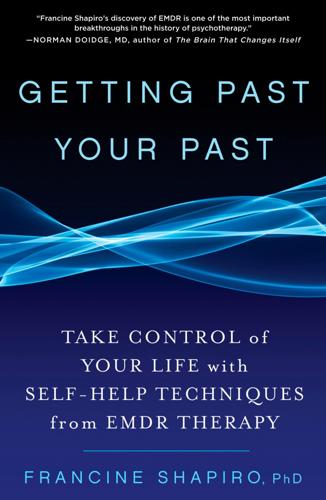
Getting Past Your Past: Take Control of Your Life With Self-Help Techniques From EMDR Therapy
by
Francine Shapiro
Published 26 Mar 2013
N., & Zamyad, A. (2007). Efficacy of “eye movement desensitization and reprocessing” in reducing anxiety and unpleasant feelings due to earthquake experience. Psychological Research, 9, 104-17. Ahmad A., Larsson B., & Sundelin-Wahlsten, V. (2007). EMDR treatment for children with PTSD: Results of a randomized controlled trial. Nord J Psychiatry, 61, 349-54. Arabia, E., Manca, M. L., & Solomon, R. M. (2011). EMDR for survivors of life-threatening cardiac events: Results of a pilot study. Journal of EMDR Practice and Research, 5, 2-13. Carlson, J., Chemtob, C. M., Rusnak, K., Hedlund, N. L., & Muraoka, M. Y. (1998).
…
A trial of eye movement desensitization compared to image habituation training and applied muscle relaxation in post-traumatic stress disorder. Journal of Behavior Therapy & Experimental Psychiatry, 25, 283-91. Wanders, F., Serra, M., & de Jongh, A. (2008). EMDR versus CBT for children with self-esteem and behavioral problems: A randomized controlled trial. Journal of EMDR Practice and Research, 2, 180-89. Wilson, S., Becker, L. A., & Tinker, R. H. (1995). Eye movement desensitization and reprocessing (EMDR): Treatment for psychologically traumatized individuals. Journal of Consulting and Clinical Psychology, 63, 928-37. Wilson, S., Becker, L.
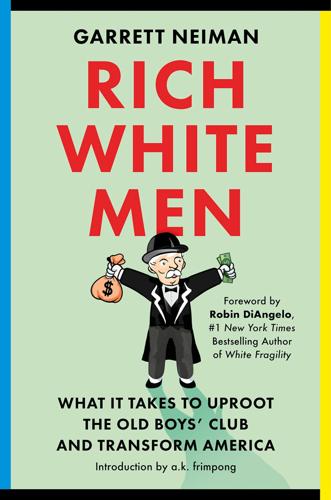
Rich White Men: What It Takes to Uproot the Old Boys' Club and Transform America
by
Garrett Neiman
Published 19 Jun 2023
Alex Berger, one of my classmates, had gotten involved in effective altruism, a philosophical and social movement that advocates for “using evidence and reason to figure out how to benefit others as much as possible, and taking action on that basis.”27 Alex told me about GiveDirectly, a nonprofit organization operating in East Africa—primarily Kenya, Uganda, and Rwanda—that helps families living in extreme poverty by making unconditional cash transfers to them via mobile phone.28 The program has expanded significantly: in 2019, GiveDirectly provided a total of $33 million to forty thousand households.29 Part of what has enabled GiveDirectly’s growth is that the organization measures its impact using randomized control trials. Studies have shown that when households receive a grant from GiveDirectly, they buy more food and do not increase spending on vices like alcohol or tobacco.30 There is also evidence that recipients can invest cash transfers at high rates of return—about 20 percent per year—which enables long-term increases in individual and community wealth.31 Transfer recipients also see major improvements in their psychological well-being, including reductions in the stress hormone cortisol, which is associated with improved quality of life and longevity.
…
The Stockton Economic Empowerment Demonstration (SEED)—the first mayor-led guaranteed income demonstration—showed the power of providing people in poverty with more resources to meet their basic needs. Launched in 2019 by then mayor Michael Tubbs, SEED gave 125 residents in Stockton, California, $500 per month for twenty-four months with no strings attached.32 Like GiveDirectly’s cash transfers, SEED was found in a randomized control trial to be beneficial. Recipients were more likely to find full-time employment; were healthier, with less depression and anxiety and enhanced well-being; and were able to pursue new opportunities for self-determination, goal setting, and risk taking. Individuals spent most of the money on basic needs, including food, clothing, utilities, and automobile expenses; less than 1 percent was spent on alcohol or tobacco.

The Fourth Industrial Revolution
by
Klaus Schwab
Published 11 Jan 2016
Third, new information flows and increasing transparency can help shift citizen behaviour on a large scale, as it becomes the path of least resistance within a new set of business and social norms for a sustainable circular system. Fruitful convergence between the fields of economics and psychology has been producing insights into how we perceive the world, behave and justify our behaviour, while a number of large-scale randomized control trials by governments, corporations and universities have shown that this can work. One example is OPower, which uses peer-comparison to entice people into consuming less electricity, thereby protecting the environment while reducing costs. Fourth, as the previous section detailed, new business and organizational models promise innovative ways of creating and sharing value, which in turn lead to whole system changes that can actively benefit the natural world as much as our economies and societies.

Extreme Economies: Survival, Failure, Future – Lessons From the World’s Limits
by
Richard Davies
Published 4 Sep 2019
Mervin, M., et al. (2018), ‘The Cost-effectiveness of Using PARO, a Therapeutic Robotic Seal, to Reduce Agitation and Medication Use in Dementia: Findings from a Cluster-randomized Controlled Trial’, Journal of the American Medical Directors Association, 19 (7), 619–22. Morikawa, M. (2018), ‘Labor Shortage Beginning to Erode the Quality of Services: Hidden Inflation’ (Toyko: Research Institute of Economy, Trade and Industry). Motoshige, I. (ed.) (2013), Public Pensions and Intergenerational Equity, NIRA Policy Review No. 59 (Tokyo: National Institute for Research Advancement (NIRA)). Moyle, W., et al. (2017), ‘Use of a Robotic Seal as a Therapeutic Tool to Improve Dementia Symptoms: A Cluster-randomized Controlled Trial’, Journal of the American Medical Directors Association, 18 (9), 766–73.
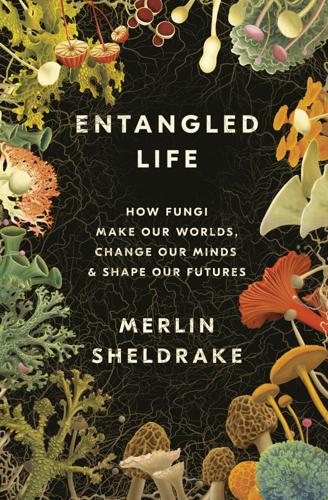
Entangled Life: How Fungi Make Our Worlds, Change Our Minds & Shape Our Futures
by
Merlin Sheldrake
Published 11 May 2020
Belowground carbon trade among tall trees in a temperate forest. Science 352: 342–44. Kozo-Polyanksy BM. 2010. Symbiogenesis: A New Principle of Evolution. Cambridge, MA: Harvard University Press. Krebs TS, Johansen P-Ø. 2012. Lysergic acid diethylamide (LSD) for alcoholism: meta-analysis of randomized controlled trials. Journal of Psychopharmacology 26: 994–1002. Kroken S. 2007. “Miss Potter’s First Love”—A Rejoinder. Inoculum 58: 14. Kusari S, Singh S, Jayabaskaran C. 2014. Biotechnological potential of plant-associated endophytic fungi: hope versus hype. Trends in Biotechnology 32: 297–303.
…
Proceedings of the National Academy of Sciences 115: E5786–E5795. Ross S, Bossis A, Guss J, Agin-Liebes G, Malone T, Cohen B, Mennenga S, Belser A, Kalliontzi K, Babb J, et al. 2016. Rapid and sustained symptom reduction following psilocybin treatment for anxiety and depression in patients with life-threatening cancer: a randomized controlled trial. Journal of Psychopharmacology 30: 1165–180. Roughgarden J. 2013. Evolution’s Rainbow. Berkeley, CA: University of California Press. Rouphael Y, Franken P, Schneider C, Schwarz D, Giovannetti M, Agnolucci M, Pascale S, Bonini P, Colla G. 2015. Arbuscular mycorrhizal fungi act as biostimulants in horticultural crops.

Apollo's Arrow: The Profound and Enduring Impact of Coronavirus on the Way We Live
by
Nicholas A. Christakis
Published 27 Oct 2020
These studies are then followed by phase 2 studies, which involve slightly larger numbers of subjects and attempt to further explore the safety of the drug and, more important, get an initial sense of its efficacy. If this phase is promising, then phase 3 studies, involving a much larger number of people in a randomized controlled trial, are initiated with an eye to quantifying the actual efficacy of the drug. In such pivotal phase 3 studies, one group of people is randomly assigned to get the active agent and another, the control group, gets either a placebo or whatever constitutes the usual standard of care. During phase 3, scientists also assess the possible emergence of rare toxicities that could not have been observed in the small phase 1 and phase 2 studies.
…
In 1995, after much effort, a drug known as saquinavir (a protease inhibitor) was discovered. It became part of a three-drug regimen—composed of saquinavir, dideoxycytidine (ddC), and AZT—a combination called highly active antiretroviral therapy, or HAART. In 1996, results from two pivotal randomized controlled trials, involving a total of over twelve hundred volunteers and supported by NIAID, showed that HAART was extremely effective.93 Though the side effects were considerable and the daily dosing regimens very complex, it was lifesaving. With HAART, many patients saw the viral load of HIV in their blood become undetectable.
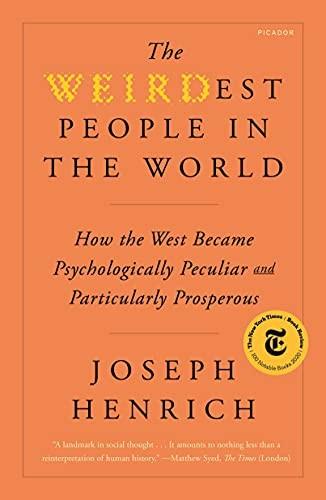
The WEIRDest People in the World: How the West Became Psychologically Peculiar and Particularly Prosperous
by
Joseph Henrich
Published 7 Sep 2020
Both our analyses and larger national-level studies indicate that much of the violence experienced by ordinary villagers was effectively random. Militias would storm into a community, spraying bullets in all directions, and then torch the most conveniently located houses as villagers either hid or fled. This means that, as in the randomized control trials used to test the effectiveness of new medicines, individuals were largely afflicted by, or “dosed with,” war-related violence at random. This quasi-randomization allows us to cautiously infer that war is in fact causing the psychological changes captured in our experiments.3 FIGURE 10.1.
…
Exchange asymmetries incorrectly interpreted as evidence of endowment effect theory and prospect theory? American Economic Review 97 (4), 1449–66. Pope, H. G., Kouri, E. M., and Hudson, J. I. (2000). Effects of supraphysiologic doses of testosterone on mood and aggression in normal men: A randomized controlled trial. Archives of General Psychiatry 57 (2), 133–40. Post, L., and Zwaan, R. (2014). What is the value of believing in free will? Two replication studies. osf.io/mnwgb. Prak, M., and Van Zanden, J. L. (eds.). (2013). Technology, Skills and the Pre-Modern Economy in the East and the West. Leiden: Brill.
…
van Baaren, R., Janssen, L., Chartrand, T. L., and Dijksterhuis, A. (2009). Where is the love? The social aspects of mimicry. Philosophical Transactions of the Royal Society B: Biological Sciences 364 (1528), 2381–89. van Berkhout, E. T., and Malouff, J. M. (2016). The efficacy of empathy training: A meta-analysis of randomized controlled trials. Journal of Counseling Psychology 63 (1), 32–41. Van Cleve, J., and Akçay, E. (2014). Pathways to social evolution: Reciprocity, relatedness, and synergy. Evolution 68 (8), 2245–58. van Honk, J., Peper, J. S., and Schutter, D. J. L. G. (2005). Testosterone reduces unconscious fear but not consciously experienced anxiety: Implications for the disorders of fear and anxiety.
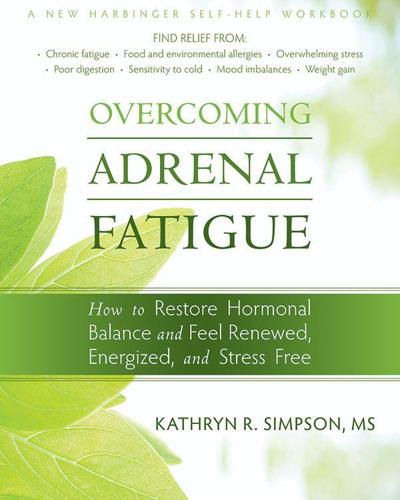
Overcoming Adrenal Fatigue: How to Restore Hormonal Balance and Feel Renewed, Energized, and Stress Free
by
Kathryn Simpson
Published 1 May 2011
Annals of Internal Medicine 130(9):759-771. Boscarino, J. A. 2004. Posttraumatic stress disorder and physical illness: Results from clinical and epidemiologic studies. Annals of the New York Academy of Sciences 1032:141-153. Brody, S., R. Preut, K. Schommer, and T. H. Schürmeyer. 2002. A randomized controlled trial of high dose ascorbic acid for reduction of blood pressure, cortisol, and subjective responses to psychological stress. Psychopharmacology 159(3):319-324. Brot, C., P. Vestergaard, N. Kolthoff, J. Gram, A. P. Hermann, and O. H. Sùrensen. 2001. Vitamin D status and its adequacy in healthy Danish perimenopausal women: Relationships to dietary intake, sun exposure, and serum parathyroid hormone.
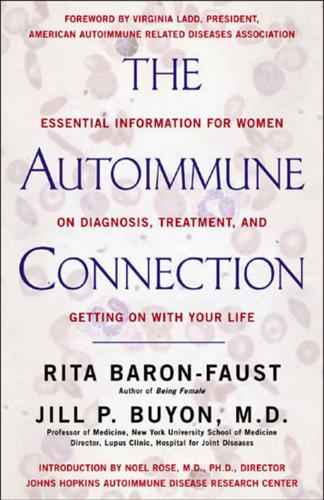
The Autoimmune Connection
by
Rita Baron-Faust
and
Jill Buyon
Published 21 Apr 2003
Things like acetaminophen and nonsteroidal anti-inflammatory drugs have virtually no effect in pain amplification syndromes. Opioids also do not seem to work well,” comments Dr. Clauw. “The best drugs for these syndromes are those that act on the central nervous system, like tricyclic antidepressants. Some randomized controlled trials indicate that medications that act on the 352 The Autoimmune Connection neurotransmitters serotonin and norepinephrine are among the most effective.” Aerobic exercise acts as a natural painkiller and an antidepressant, he adds. Antidepressant medications can help reduce pain signals from nerves and aid sleep.
…
“However, given the fact that fibromyalgia is a neural pain amplification syndrome, it’s unlikely that nutritional factors play a really prominent role,” remarks Dr. Clauw. Cognitive behavioral therapy (CBT) teaches coping skills and behavioral changes to help you manage an often-frustrating illness. “Every randomized, controlled trial of cognitive behavioral therapy in any chronic illness has Fibromyalgia, Chronic Fatigue, Endometriosis, and Interstitial Cystitis 355 shown it to be effective,” says Dr. Clauw. For women with fibromyalgia, a pain-based CBT program can be especially effective. In CBT, you’ll learn relaxation techniques (such as deep breathing and positive visual imagery), how to reframe negative thoughts and behaviors that intensify pain responses, how to effectively solve problems, and how to pace activities to accommodate whatever limitations you may have.
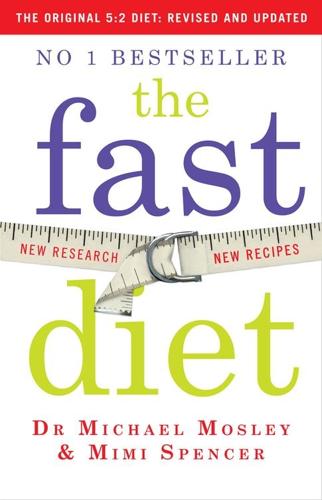
The Fast Diet: Revised and Updated: Lose Weight, Stay Healthy, Live Longer
by
Mimi Spencer
Published 18 Dec 2014
‘Restrained and unrestrained eating’. Journal of Personality, 1975 52. Dhurandhar, EJ, Dawson, J, Alcorn, A, Larsen, LH, Thomas, E, Cardel, M, Courland, A, Astrup, A, St-Onge, M-P, Hill, J, Apovian, C, Shikany, J and Allison, D. ‘The effectiveness of breakfast recommendations on weight loss: a randomized controlled trial.’ American Journal of Clinical Nutrition, June 2014 53. Swithers, Susan E and Davidson, TL, Purdue University, West Lafayette, Indiana, US.. ‘Pavlovian approach to the problem of obesity’. International Journal of Obesity, June 2004 & Swithers, Susan E and Davidson, TL, Purdue University, Indiana, US.
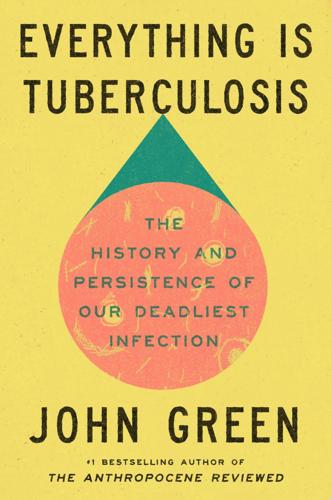
Everything Is Tuberculosis: The History and Persistence of Our Deadliest Infection
by
John Green
Published 18 Mar 2025
It’s cheap and effective—as long as you are in the lucky group who test positive through smear microscopy, who don’t have drug-resistant TB, and who are able to complete treatment. And it’s certainly an improvement on what came before, because before DOTS there was no comprehensive global strategy for addressing TB in poor countries. But randomized control trials have found that directly observed therapy is no more effective than giving patients their pills to take home in two-week or monthlong cycles, provided the patients are adequately supported. DOTS also failed to address the growing crisis of drug-resistant tuberculosis, and failed to identify many cases of TB because smear microscopy is so much less sensitive than chest X-rays.
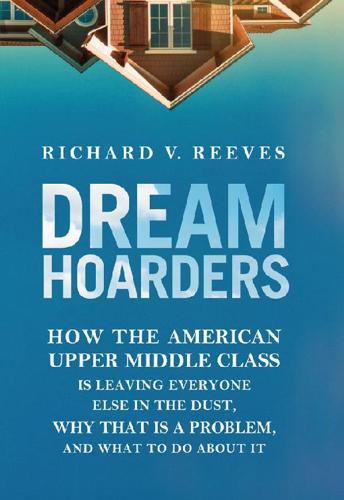
Dream Hoarders: How the American Upper Middle Class Is Leaving Everyone Else in the Dust, Why That Is a Problem, and What to Do About It
by
Richard V. Reeves
Published 22 May 2017
On fairly conservative assumptions, they predict five dollars of savings from each dollar spent on well-crafted campaigns.6 The second problem is on the supply side, in particular a lack of knowledge or training among health professionals. Indeed, staff training alone seems to have a significant impact on the take-up of LARCs, according to a randomized control trial. The work of organizations like Upstream training providers in states including Ohio, New York, Texas, and Delaware is extremely promising.7 Other steps can be taken to broaden access, including ensuring sufficient supplies in health clinics, simplifying billing procedures, and providing same-day service.
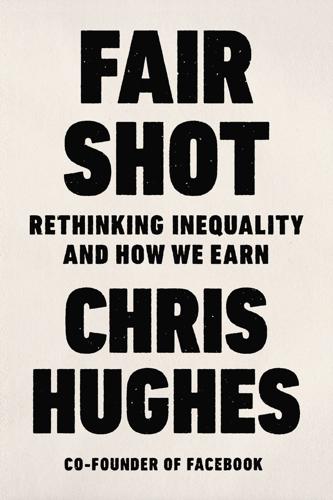
Fair Shot: Rethinking Inequality and How We Earn
by
Chris Hughes
Published 20 Feb 2018
In 2011, GiveDirectly’s leadership enlisted independent researchers affiliated with MIT’s Poverty Action Lab to assess the impact of their transfers. The analysis was done in coordination with the independent nonprofit Innovations for Poverty Action and the National Institutes of Health. The study analyzed the impact of cash transfers using a randomized control trial, the same methodology that pharmaceutical companies use to assess the power of a new drug and its side effects. The researchers surveyed recipients before they received the money to establish a baseline and again afterward to understand the impact. They then compared those villages to a set of “control” villages that did not receive transfers.
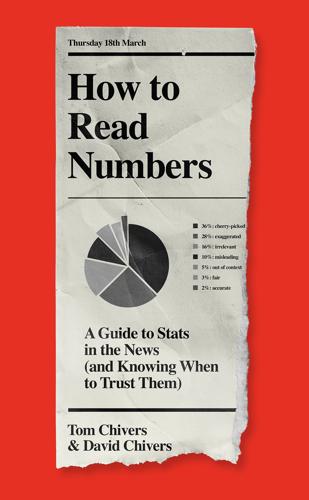
How to Read Numbers: A Guide to Statistics in the News (And Knowing When to Trust Them)
by
Tom Chivers
and
David Chivers
Published 18 Mar 2021
sid=72849399-2667-40d1-ad63-926cf0d28c35 5. BioElectronics Corporation Clinical Evidence http://www.bielcorp.com/Clinical-Evidence/ 6. Andrade, R., Duarte, H., Pereira, R., Lopes, I., Pereira, H., Rocha, R. and Espregueira-Mendes, J., ‘Pulsed electromagnetic field therapy effectiveness in low back pain: A systematic review of randomized controlled trials’, Porto Biomedical Journal, 1(5) (November 2016), pp. 156–63 doi:10.1016/j.pbj.2016.09.001 7. Letter K192234, US Food & Drug Administration, 2020 https://www.accessdata.fda.gov/cdrh_docs/pdf19/K192234.pdf 8. Stephen Matthews, ‘Remarkable transformation of six psoriasis patients who doctors say have been treated with homeopathy – including one who took a remedy derived from the discharge of a man’, Mail Online, 2019 https://www.dailymail.co.uk/health/article-7213993/Six-patients-reportedly-cured-psoriasis-starting-homeopathy.html Chapter 3: Sample Sizes 1.
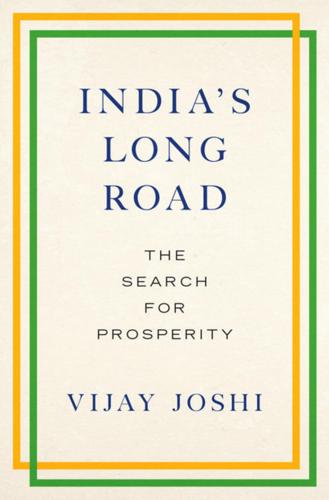
India's Long Road
by
Vijay Joshi
Published 21 Feb 2017
Secondary education has been much less researched but informal evidence indicates a similar picture.9 The big question that arises is why expansion in educational inputs has not been translated into better educational outcomes. There has been quite a lot of high-quality research on this, based [ 178 ] Stability and Inclusion 179 on econometric work with nationally representative data sets, and on ‘randomized control trials’. (Again, the rigorous scholarly studies are mostly about primary education.)10 My reading of what these studies show is that the poor educational outcomes are the product of inappropriate incentives. The faulty incentives relate partly to prevailing pedagogic practice. Teaching in Indian schools is curriculum-driven to an absurd degree; the over-riding objective of teachers is to ‘finish’ the curriculum of each year even if the majority of students are falling behind.
…
There are complex technical and logistical issues to be sorted out. It may also be feared that rent- losers from the process would stymie the operation of the package in one way or another. It is very pertinent, therefore, that the merits of harnessing the new technologies have been demonstrated by Karthik Muralidharan and his associates in a randomized control trial that examined the delivery of NREGS wage payments into bank accounts via the introduction of ‘smart cards’, in a setting large enough to be policy-relevant, viz. 158 sub-districts (mandals) of Andhra Pradesh with 19 million people.16 In the ‘treatment’ mandals, the new system was introduced two years before it was in the ‘control’ mandals (in which payments continued to be disbursed in the old way).

The Zero Marginal Cost Society: The Internet of Things, the Collaborative Commons, and the Eclipse of Capitalism
by
Jeremy Rifkin
Published 31 Mar 2014
The two subsequently joined forces with Frank Moss, director of the MIT Media Lab, and out of that collaboration came thelamfoundation.org, a website that allows patients to report on their health. The data in the reports are aggregated and analyzed to aid researchers in mapping out new research scenarios. This crowdsourcing approach to research differs substantially from traditional randomized controlled trials used in conventional research, which are expensive and time consuming and conceived of and carried out by researchers from the top down, with patients serving as passive subjects. The LAM site, like other research efforts on the health-care Commons, starts with the patients’ collective wisdom, which helps determine the research protocols.
…
So professional research has a built-in lethal lag time—a period of delay between the time some people know about an important medical breakthrough and the time everyone knows.60 While double-blind, controlled clinical studies are extremely expensive, patient-initiated observational studies using Big Data and algorithms to discover health patterns and impacts can be undertaken at near zero marginal cost. Still in its infancy, this open-source approach to research often suffers from a lack of verification that the slower, time-tested professional review process brings to conventional randomized control trials. Advocates are aware of these shortcomings but are confident that patient-directed research can begin to build in the appropriate checks, much like Wikipedia does in the shakeout process of verifying and validating articles on its websites. Today, Wikipedia has 19 million contributors. Thousands of users fact check and refine articles, assuring that the open-source website’s accuracy is competitive with other encyclopedias.

Model Thinker: What You Need to Know to Make Data Work for You
by
Scott E. Page
Published 27 Nov 2018
The evidence physicists relied on for the existence of the Higgs boson in 2012 would occur randomly less than once in 7 million trials were the Higgs boson not to exist. The drug approval process used by the United States Food and Drug Administration (FDA) also uses tests of significance. If a pharmaceutical company claims that a new drug reduces the severity of eczema, that company must run two randomized controlled trials. To construct a randomized controlled trial the company would create two identical populations of eczema sufferers. One of the populations receives the drug. The other population receives a placebo. At the end of the trial, the average severity as well as average rates of negative side effects are compared.
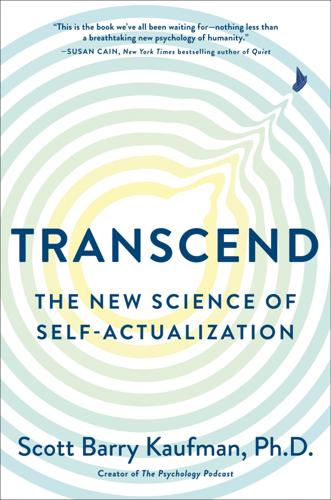
Transcend: The New Science of Self-Actualization
by
Scott Barry Kaufman
Published 6 Apr 2020
In fact, one recent randomized, double-blind, placebo-controlled, between-subjects study found no main effects of oxytocin and vasopressin on a host of social outcomes. See: Tabak, B.A., et al. (2019). Null results of oxytocin and vasopressin administration across a range of social cognitive and behavioral paradigms: Evidence from a randomized controlled trial. Psychoneuroendrocrinology, 107, 124–132. 37. Debiec, J. (2005). Peptides of love and fear: Vasopressin and oxytocin modulate the integration of information in the amygdala. BioEssays, 27(9), 869–873; Kirsch, P., et al. (2005). Oxytocin modulates neural circuitry for social cognition and fear in humans.
…
Hamilton, R., Messing, S., and Chatterjee, A. (2011). Rethinking the thinking cap: Ethics of neural enhancement using noninvasive brain stimulation. Neurology, 76(2), 187–193; O’Reardon, J. P., et al. (2007). Efficacy and safety of transcranial magnetic stimulation in the acute treatment of major depression: A multisite randomized controlled trial. Biological Psychiatry, 62(11), 1208–1216; Smith, K. S., Mahler, S. V., Peciña, S., & Berridge, K. C. (2010). Hedonic hotspots: Generating sensory pleasure in the brain. In M. L. Kringelbach, & K. C. Berridge (Eds.), Pleasures of the Brain (pp. 27–49). New York: Oxford University Press; Medaglia, J.
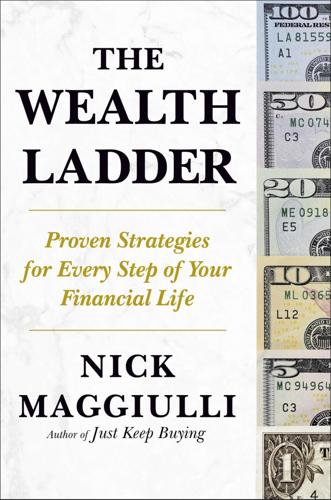
The Wealth Ladder: Proven Strategies for Every Step of Your Financial Life
by
Nick Maggiulli
Published 22 Jul 2025
After all, you can’t know how someone truly feels on the inside. But if Bud was faking it, he faked it every day for the few years I worked with him. Rain or shine, he was there wishing us a wonderful day. I know that my story about Bud isn’t the same as a nationally representative dataset. It isn’t on par with a randomized controlled trial or a best fit regression line. It isn’t statistically significant. But there’s something there. I saw it. I felt it. If you think that money can’t buy happiness, you’re wrong. There is plenty of data that suggests otherwise. But if you think that more money will always lead to more happiness, you are also wrong.
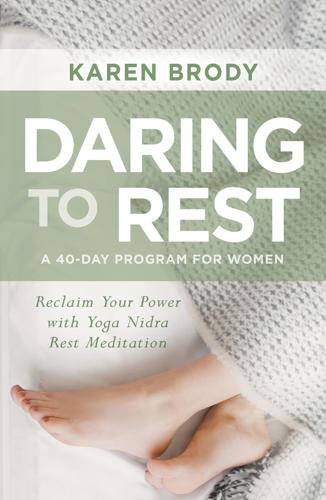
Daring to Rest
by
Karen Brody
Chapter 2Welcome to Yoga Nidra 1.Swami Satyananda Saraswati, Yoga Nidra (Munger, Bihar, India: Yoga Publications Trust, 1998), 14; Kamakhya Kumar, “Complete the Course of Sleep through Yoga Nidra,” Nature and Wealth 7, no. 1 (January 2008): 8. 2.Khushbu Rani, S. Tiwari, U. Singh, et al., “Impact of Yoga Nidra on Psychological General Wellbeing in Patients with Menstrual Irregularities: A Randomized Controlled Trial,” International Journal of Yoga 4, no. 1 (2011): 20. 3.Kamakhya Kumar, A Handbook of Yoga Nidra (New Delhi, India: D.K. Printworld, 2013), 56. 4.Pranav Pandya and Kamakhya Kumar, “Yoga Nidra and Its Impact on Human Physiology,” Yoga Vijnana 1, no. 1 (2007): 1–8; S. Amita, S. Prabhakar, I.
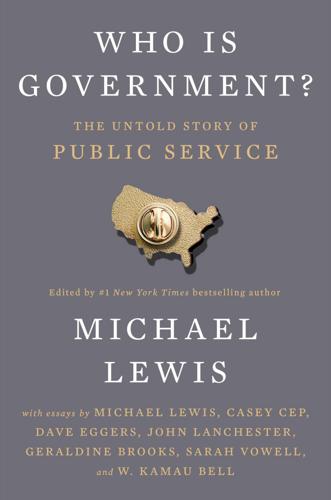
Who Is Government?: The Untold Story of Public Service
by
Michael Lewis
Published 18 Mar 2025
The FDA couldn’t just allow anyone to post anything. CURE ID—as the site and the app became known—needed to be at least lightly refereed to keep the kooky stuff out. The point was to collect the stories that weren’t collected in medicine because they were stories, not science. Case studies, not randomized controlled trials. “Most journals won’t publish case reports because they don’t think they are valuable because they are merely anecdotes,” said Heather. For rare diseases, these anecdotes were all you had to go on, and some of them certainly had value—even if they told you about some treatment that had failed.

WTF?: What's the Future and Why It's Up to Us
by
Tim O'Reilly
Published 9 Oct 2017
The GiveDirectly experiment is fascinating on two fronts: It is crowdfunded by ordinary people, who already use the platform to provide aid in the form of direct cash transfers to the needy; and in a developing country, the costs are lower so the program can be more extensive, and thus allows for a true randomized control trial. These experiments tell us how far the idea has come since it was proposed by Thomas Paine in 1795, and more recently by Milton Friedman in 1962 (and Paul Ryan in 2014). There are many arguments against UBI, most notably the cost of making it truly universal, and that providing the income to people whether they need it or not will starve existing programs that provided targeted aid to those who actually need it.
…
Martin’s, 2016), 242. 305 making the case for UBI: Andy Stern, Raising the Floor (New York, Public Affairs, 2016). 305 a pilot program in Oakland, California: Sam Altman, “Moving Forward on Basic Income,” Y Combinator (blog), May 31, 2016, https://blog.ycombinator.com/moving-forward-on-basic-income/. 305 a true randomized control trial: “Launch a basic income,” GiveDirectly, retrieved April 4, 2017, https://www.givedirectly.org/basic-income. 305 proposed by Thomas Paine in 1795: “Agrarian Justice,” The Writings of Thomas Paine, vol. 3, 1791–1804 (New York: G. P. Putnam’s Sons, 1895), Project Gutenberg ebook edition retrieved April 4, 2017, http://www.gutenberg. org/files/31271/31271-h/31271-h.htm #link2H_4_0029. 305 Paul Ryan in 2014: Noah Gordon, “The Conservative Case for a Guaranteed Basic Income,” Atlantic, August 6, 2014, https://www.theatlantic.com/politics/archive/2014/08/why-arent-reformicons-pushing-a-guaranteed-basic-income/375600/. 305 arguments against UBI: Charles Murray and Andrews Stern (For), Jared Bernstein and Jason Furman (Against), “Universal Basic Income Is the Safety Net of the Future,” Intelligence Squared Debates, March 22, 2017, http://www.intelligencesquaredus.org/debates/universal-basic-income-safety-net-future.

The Numbers Game: The Commonsense Guide to Understanding Numbers in the News,in Politics, and inLife
by
Michael Blastland
and
Andrew Dilnot
Published 26 Dec 2008
That tendency to ignore the need for statistical verification is only now beginning to change, with the slow and often grudging acceptance that we need more than a plausible anecdote (a single wave) before instituting a new policy for reoffenders, for teaching methods, for health care, or any other state function. Politicians are among the most recalcitrant, sometimes pleading that the genuine pressure of time, expense, and public expectation makes impossible the ideally random-controlled trials that would be able to identify real stripes from fake, sometimes apparently not much caring or understanding, but, one way or another, often resting their policies on little more than luck and a good story, becoming as a result the willing or unwilling suckers of chance. A politician with a taste for a calculated gamble is a disappointingly welcoming way in for chance to do its dirty work.
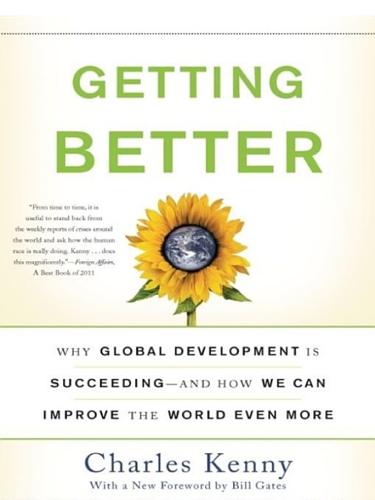
Getting Better: Why Global Development Is Succeeding--And How We Can Improve the World Even More
by
Charles Kenny
Published 31 Jan 2011
Medical Journal of Australia 189, nos. 11–12. Regalia, F., and L. Castro. 2007. “Performance-Based Incentives for Health: Demand- and Supply-Side Incentives in the Nicaragua Red de Proteccion Social.” Center for Global Development Working Paper 119. Reller, M., and colleagues. 2003. “A Randomized Controlled Trial of Household-Based Flocculant-Disinfectant Drinking Water Treatment for Diarrhea Prevention in Rural Guatemala.” American Journal of Tropical Medicine and Hygiene 69, no. 4. Riley, J. 2001. Rising Life Expectancy: A Global History. Cambridge: Cambridge University Press. Rodríguez, F. 2006.
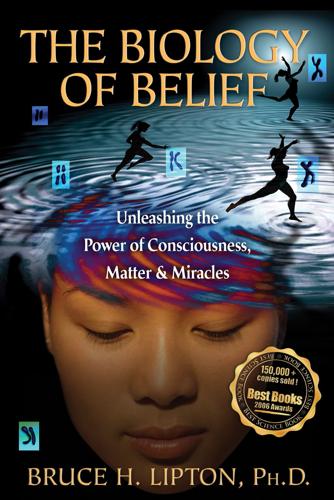
The Biology of Belief: Unleashing the Power of Consciousness, Matter & Miracles
by
Bruce H. Lipton
Published 1 Jan 2005
American Journal of Physiology-Cell Physiology 262: C1418-C1422. Rumbles, G. (2001). “A laser that turns down the heat.” Nature 409: 572-573. Shumaker, S. A., C. Legault, et al. (2003). “Estrogen Plus Progestin and the Incidence of Dementia and Mild Cognitive Impairment in Postmenopausal Women: The Women’s Health Initiative Memory Study: A Randomized Controlled Trial.” Journal of the American Medical Association 289(20): 2651-2662. Sivitz, L. (2000). “Cells proliferate in magnetic fields.” Science News 158: 195. Starfield, B. (2000). “Is US Health Really the Best in the World?” Journal of the American Medical Association 284(4): 483-485. Szent-Györgyi, A. (1960).
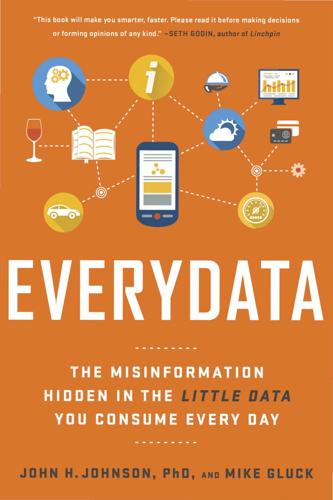
Everydata: The Misinformation Hidden in the Little Data You Consume Every Day
by
John H. Johnson
Published 27 Apr 2016
Although, if you want to start poking holes, you could start with the fact that the sample set was “privately insured children with older siblings.” Chapter 5 1. Randomization is a powerful statistical tool for eliminating selection bias, and Esther Duflo and others have written extensively about randomized controlled trials and related topics. For more detail, “Using Randomization in Development Economics Research: A Toolkit,” © 2006 by Esther Duflo, Rachel Glennerster, and Michael Kremer, National Bureau of Economic Research, 2006, http://www.nber.org/papers/t0333.pdf. 2. February 29 was included in the dates to account for men born in leap years. 3.
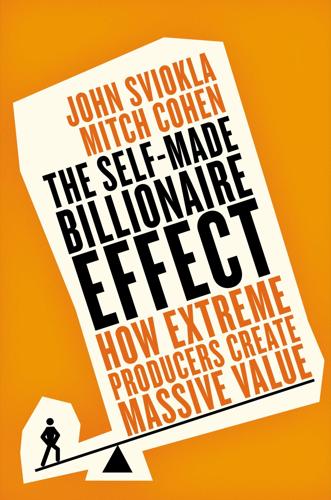
The Self-Made Billionaire Effect: How Extreme Producers Create Massive Value
by
John Sviokla
and
Mitch Cohen
Published 30 Dec 2014
As recently as ten years ago, development stakeholders had no real way to test whether solutions like free school lunches actually get kids into the classroom—just counting the number of kids before and after doesn’t determine causality. And they definitely didn’t know whether free lunches were better and cheaper than alternative programs, such as conditional cash transfers, deworming medications to reduce illness, or free uniforms. Kremer saw a solution in the randomized controlled trial (RCT), the research method used by pharmaceutical companies to determine whether a drug is effective or not. Kremer was one of the first social scientists to design an RCT to test a social program, helping start a movement that has since become the gold standard in social research.1 (As it turns out, school-based deworming programs are the cheapest and most effective way to get poor kids to go to school.)
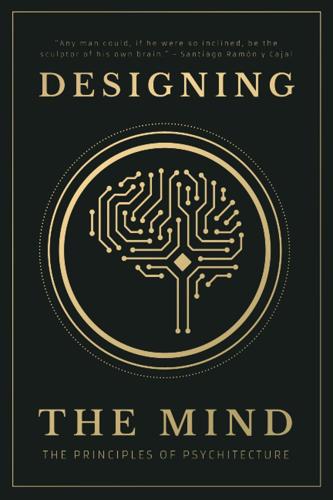
Designing the Mind: The Principles of Psychitecture
by
Designing The Mind
and
Ryan A Bush
Published 10 Jan 2021
Stacey Long et al., “Effects of Distraction and Focused Attention on Actual and Perceived Food Intake in Females with Non-Clinical Eating Psychopathology,” Appetite 56, no. 2 (April 1, 2011): 350–56, https://doi.org/10.1016/j.appet.2010.12.018. Ashley E. Mason et al., “Reduced Reward-Driven Eating Accounts for the Impact of a Mindfulness-Based Diet and Exercise Intervention on Weight Loss: Data from the SHINE Randomized Controlled Trial,” Appetite 100 (May 1, 2016): 86–93, https://doi.org/10.1016/j.appet.2016.02.009. W. Mischel, E. B. Ebbesen, and A. R. Zeiss, “Cognitive and Attentional Mechanisms in Delay of Gratification,” Journal of Personality and Social Psychology 21, no. 2 (February 1972): 204–18, https://doi.org/10.1037/h0032198.
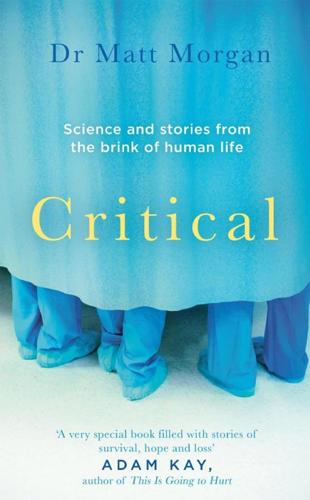
Critical: Science and Stories From the Brink of Human Life
by
Matt Morgan
Published 29 May 2019
Red cell transfusion practice following the transfusion requirements in critical care (TRICC) study: prospective observational cohort study in a large UK intensive care unit. Vox Sang. 84, 211–218 (2003). ‘Giving high amounts of oxygen to people with bad lungs may cause more deaths.’ Panwar, R. et al. Conservative versus Liberal Oxygenation Targets for Mechanically Ventilated Patients. A Pilot Multicenter Randomized Controlled Trial. American Journal of Respiratory and Critical Care Medicine 193, 43–51 (2016). ‘. . . a decompressive craniectomy does produce more survivors, but with an increased likelihood of severe, profound disability overall.’ Cooper, D. J. et al. Decompressive Craniectomy in Diffuse Traumatic Brain Injury.

Rules for Revolutionaries: How Big Organizing Can Change Everything
by
Becky Bond
and
Zack Exley
Published 9 Nov 2016
At CREDO I learned from my boss Michael Kieschnick to think big, to manage people and campaigns with tough love, and to look to science and testing to ensure resources were best deployed in the often asymmetrical battles waged from the progressive flank. It was through Michael that I was first introduced to the quantitative political scientist Donald Green. Green was among the first academics to apply randomized control trial methodology to the study of American voting behavior. His field experiments and field experiments inspired by his work have led to a hugely influential and growing body of science-based evidence detailing which voter turnout tactics have the greatest impact at the lowest cost. Research shows that, contrary to the conventional wisdom, the big money approach to elections isn’t what really moves voters.
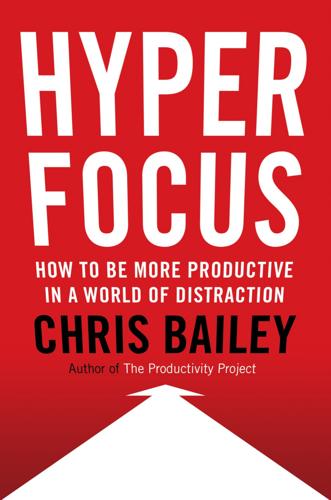
Hyperfocus: How to Be More Productive in a World of Distraction
by
Chris Bailey
Published 31 Jul 2018
Mrazek et al., “Mindfulness Training Improves Working Memory Capacity and GRE Performance While Reducing Mind Wandering,” Psychological Science 24, no. 5 (2013): 776–81. with personal concerns: Ibid. “of mind wandering”: Jonathan Smallwood and Jonathan W. Schooler, “The Science of Mind Wandering: Empirically Navigating the Stream of Consciousness,” Annual Review of Psychology 66, no. 1 (2015): 487–518. A few weeks: Dianna Quach et al., “A Randomized Controlled Trial Examining the Effect of Mindfulness Meditation on Working Memory Capacity in Adolescents,” Journal of Adolescent Health 58, no. 5 (2016): 489–96. manage your attention: E. I. de Bruin, J. E. van der Zwan, and S. M. Bogels, “A RCT Comparing Daily Mindfulness Meditations, Biofeedback Exercises, and Daily Physical Exercise on Attention Control, Executive Functioning, Mindful Awareness, Self-Compassion, and Worrying in Stressed Young Adults,” Mindfulness 7, no. 5 (2016): 1182–92.

The Creative Curve: How to Develop the Right Idea, at the Right Time
by
Allen Gannett
Published 11 Jun 2018
Studies have shown: Aneta Pavlenko, “Bilingual Cognitive Advantage: Where Do We Stand?,” Psychology Today blog, November 12, 2014, https://www.psychologytoday.com/blog/life-bilingual/201411/bilingual-cognitive-advantage-where-do-we-stand. One study found that training: K. Ball et al., “Effects of Cognitive Training Interventions with Older Adults: A Randomized Controlled Trial,” Journal of the American Medical Association 288 (18) (November 13, 2002), https://www.ncbi.nlm.nih.gov/pubmed/12425704. Another study found that ten 60-minute: Joyce Shaffer, “Neuroplasticity and Clinical Practice: Building Brain Power for Health,” Frontiers in Psychology 7 (July 26, 2016), https://www.ncbi.nlm.nih.gov/pmc/articles/PMC4960264/.
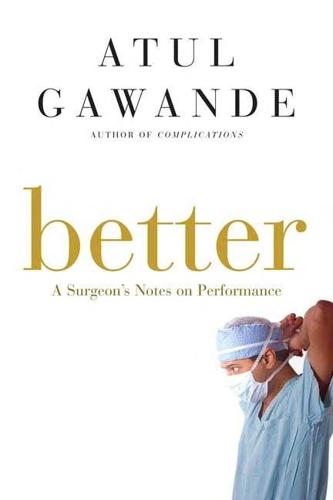
Better: A Surgeon's Notes on Performance
by
Atul Gawande
Published 2 Apr 2007
Ask most research physicians how a profession can advance, and they will tell you about the model of "evidence-based medicine"--the idea that nothing ought to be introduced into practice unless it has been properly tested and proved effective by research centers, preferably through a double blind, randomized controlled trial. But in a 1978 ranking of medical specialties according to their use of hard evidence from randomized clinical trials, obstetrics came in last. Obstetricians did few randomized trials, and when they did they largely ignored the results. Take fetal heart monitors. Careful studies have found that they provide no added benefit in routine labors over having nurses simply listen to the baby's heart rate hourly.
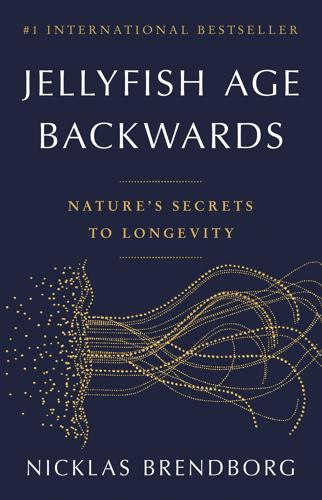
Jellyfish Age Backwards: Nature's Secrets to Longevity
by
Nicklas Brendborg
Published 17 Jan 2023
‘Alternate-day fasting in non-obese subjects: effects on body weight, body composition, and energy metabolism’, The American Journal of Clinical Nutrition, vol. 81, no. 1, 2005, pp. 69–73. Tinsley, G., Forsse, J. et al. ‘Time-restricted feeding in young men performing resistance training: A randomized controlled trial’, European Journal of Sport Science, vol. 17, no. 2, 2017, pp. 200–207. Fillmore, K., Stockwell, T., Chikritzhs, T., Bostrom, A., Kerr, W. ‘Moderate Alcohol Use and Reduced Mortality Risk: Systematic Error in Prospective Studies and New Hypotheses’, Annals of Epidemiology, vol. 17, no. 5, 2007, pp.
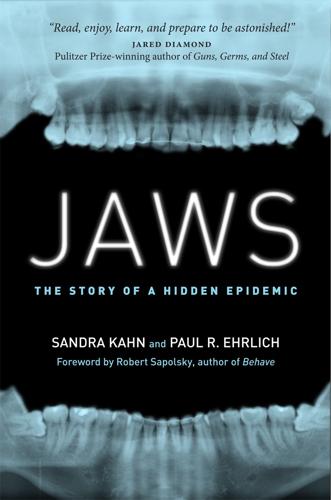
Jaws
by
Sandra Kahn,Paul R. Ehrlich
Published 15 Jan 2018
Air filters and air cleaners: Rostrum by the American Academy of Allergy, Asthma & Immunology Indoor Allergen Committee. Journal of Allergy and Clinical Immunology 125: 32–38. 21. L. Roberts, W. Smith, L. Jorm, M. Patel, R. M. Douglas, and C, McGilchrist. 2000. Effect of infection control measures on the frequency of upper respiratory infection in child care: A randomized, controlled trial. Pediatrics 105: 738–742. 22. C. Guilleminault and S. Sullivan S. 2014. Towards restoration of continuous nasal breathing as the ultimate treatment goal in pediatric obstructive sleep apnea. Enliven: Pediatr Neonatol Biol 1: 001. 23. P. McKeown. 2011. Close your mouth: Self-help Buteyko manual.
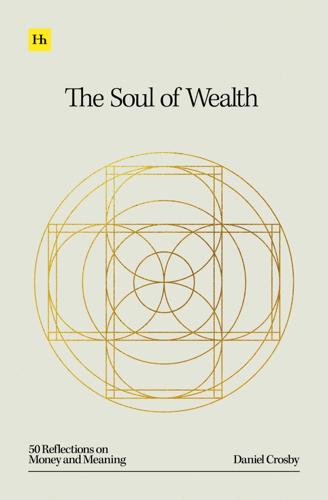
The Soul of Wealth
by
Daniel Crosby
Published 19 Sep 2024
Ackerman, “Benefits of Gratitude: 28+ Surprising Research Findings,” positivepsychology.com (April 12, 2017). 141 “Giving thanks can make you happier,” Harvard (August 14, 2021). 142 S.-T. Cheng, P. K. Tsui, and J. H. M. Lam, “Improving Mental Health in Health Care Practitioners: Randomized Controlled Trial of a Gratitude Intervention,” Journal of Consulting and Clinical Psychology, Vol. 83 (2015), 177–186. 143 Bryan J. Dik, Ryan D. Duffy, Blake A. Allan, Maeve B. O’Donnell, Yerin Shim, and Michael F. Steger, “Purpose and meaning in career development applications,” The Counseling Psychologist, Vol. 43:4 (2015), 558–585. 144 David DeSteno, Ye Li, Leah Dickens, and Jennifer S.

The Bill Gates Problem: Reckoning With the Myth of the Good Billionaire
by
Tim Schwab
Published 13 Nov 2023
universally recommend breastfeeding exclusively: Amy Sarah Ginsburg et al., “Randomized Controlled Trial of Early, Small-Volume Formula Supplementation Among Newborns: A Study Protocol,” PLOS ONE 17, no. 2 (February 4, 2022): e0263129, https://doi.org/10.1371/journal.pone.0263129. “no benefit and large potential for harm”: Tanya Doherty et al., “Questioning the Ethics of International Research on Formula Milk Supplementation in Low-Income African Countries,” BMJ Global Health 7, no. 5 (May 6, 2022): e009181, doi:10.1136/bmjgh-2022–009181. See also reader comments to the article, available at Ginsburg et al., “Randomized Controlled Trial of Early, Small-Volume Formula Supplementation Among Newborns.”
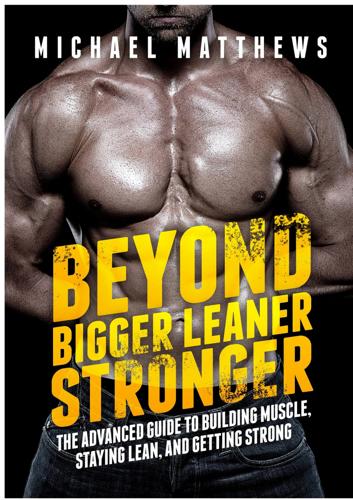
Beyond Bigger Leaner Stronger: The Advanced Guide to Building Muscle, Staying Lean, and Getting Strong
by
Michael Matthews
Published 15 Jun 2014
“Whole and refined grain intakes are related to inflammatory protein concentrations in human plasma.” The Journal of nutrition 140, no. 3 (2010): 587-594. 259. Bazzano, Lydia A., Angela M. Thompson, Michael T. Tees, Cuong H. Nguyen, and Donna M. Winham. “Non-soy legume consumption lowers cholesterol levels: a meta-analysis of randomized controlled trials.” Nutrition, Metabolism and Cardiovascular Diseases 21, no. 2 (2011): 94-103. 260. Gilani, G. Sarwar, Kevin A. Cockell, and Estatira Sepehr. “Effects of antinutritional factors on protein digestibility and amino acid availability in foods.” Journal of AOAC International 88, no. 3 (2005): 967-987. 261.
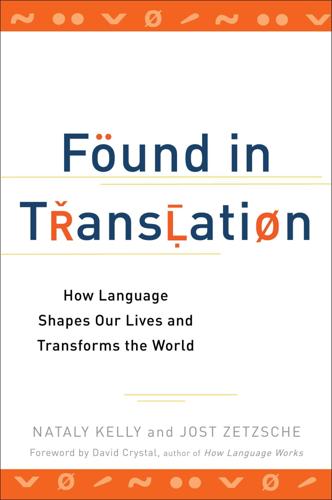
Found in Translation: How Language Shapes Our Lives and Transforms the World
by
Nataly Kelly
and
Jost Zetzsche
Published 1 Oct 2012
To read the full details of the study, see Ann D. Bagchi, Stacy Dale, Natalya Verbitsky-Savitz, Sky Andrecheck, Kathleen Zavotsky, and Robert Eisenstein, “Examining Effectiveness of Medical Interpreters in Emergency Departments for Spanish-Speaking Patients with Limited English Proficiency: Results of a Randomized Controlled Trial,” Annals of Emergency Medicine 57, no. 3 (March 2011); the abstract is available at www.annemergmed.com/article/S0196-0644%2810%2900557-3/abstract. 6. To see a graphic that was published in the New York Times and traces the discovery of the disease in Mexico, visit www.nytimes.com/imagepages/2009/05/02/health/0502-health-timeline.ready.html?
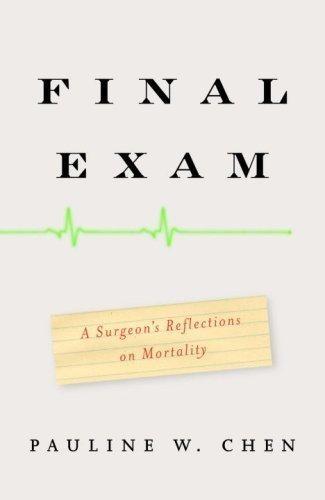
Final Exam: A Surgeon's Reflections on Mortality
by
Pauline W. Chen
Published 1 Jan 2006
Journal of General Internal Medicine 2003;18(8):656–58. Ornstein, C., Zarembo, A. “The UCLA Body Parts Scandal.” Los Angeles Times, March 10, 2004. Peters, A. S., Greenberger-Rosovsky, R., Crowder, C., et al. “Long-Term Outcomes of the New Pathway Program at Harvard Medical School: A Randomized Controlled Trial.” Academic Medicine 2000;75(5):470–79. Phipps, E., True, G., Harris, D., et al. “Approaching the End of Life: Attitudes, Preferences, and Behaviors of African-American and White Patients and Their Family Caregivers.” Journal of Clinical Oncology 2003;21(3):549–54. Pierluissi, E., Fischer, M.
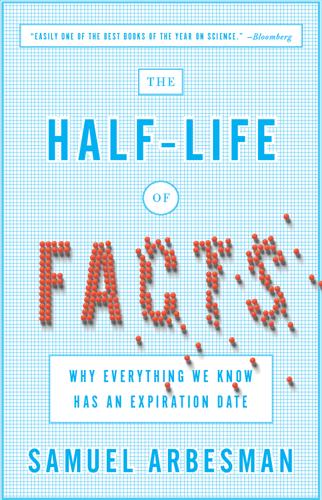
The Half-Life of Facts: Why Everything We Know Has an Expiration Date
by
Samuel Arbesman
Published 31 Aug 2012
“A Survey of Russian Approaches to Perebor (Brute-Force Searches) Algorithms.” IEEE Annals of the History of Computing 6 (October 1, 1984): 384–400. 107 how often scientists were aware of previous research: Robinson, Karen A., and Steven N. Goodman. “A Systematic Examination of the Citation of Prior Research in Reports of Randomized, Controlled Trials.” Annals of Internal Medicine 154, no. 1 (January 4, 2011): 50–55. 108 a team of scientists from the hospitals and schools: Lau, Joseph, et al. “Cumulative Meta-Analysis of Therapeutic Trials for Myocardial Infarction.” New England Journal of Medicine 327, no. 4 (July 23, 1992): 248–54. 110 the creation of a massive database: Frijters, Raoul, et al.

Cogs and Monsters: What Economics Is, and What It Should Be
by
Diane Coyle
Published 11 Oct 2021
For several reasons, the recent past has seen a vast amount of careful, detailed empirical work in economics. Computers mean many more data sets have been created, accessed, and shared. Statistical techniques for analysing economic data have improved, and techniques such as experiments and randomized control trials have become more widely used. There is always a need for greater care, but the interaction of theory and evidence is central to advancing understanding. It is an irony that all this work, flooding out daily in working papers, and including interaction with other disciplines such as psychology, epidemiology, engineering, and history, is being undertaken without much changing the public image of economics as being so dismal.
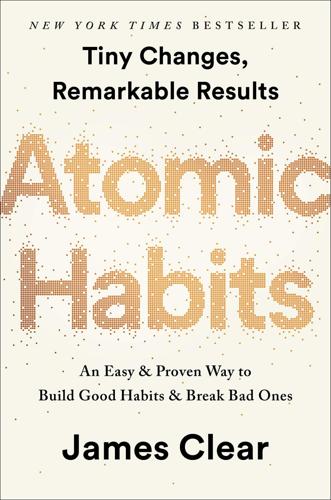
Atomic Habits: An Easy & Proven Way to Build Good Habits & Break Bad Ones
by
James Clear
Published 15 Oct 2018
Fowler, “The Spread of Obesity in a Large Social Network over 32 Years,” New England Journal of Medicine 357, no. 4 (2007), doi:10.1056/nejmsa066082. J. A. Stockman, “The Spread of Obesity in a Large Social Network over 32 Years,” Yearbook of Pediatrics 2009 (2009), doi:10.1016/s0084–3954(08)79134–6. if one person in a relationship lost weight: Amy A. Gorin et al., “Randomized Controlled Trial Examining the Ripple Effect of a Nationally Available Weight Management Program on Untreated Spouses,” Obesity 26, no. 3 (2018), doi:10.1002/oby.22098. Of the ten people in the class, four became astronauts: Mike Massimino, “Finding the Difference Between ‘Improbable’ and ‘Impossible,’” interview by James Altucher, The James Altucher Show, January 2017, https://jamesaltucher.com/2017/01/mike-massimino-i-am-not-good-enough.
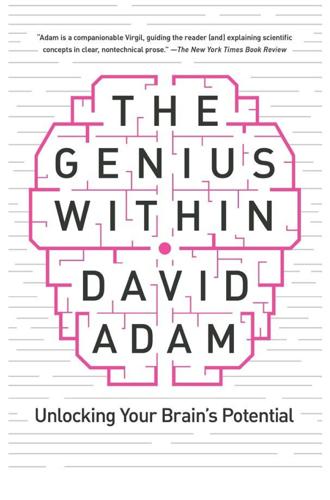
The Genius Within: Unlocking Your Brain's Potential
by
David Adam
Published 6 Feb 2018
‘wasting their time’, Underwood E. (2014), ‘Neuroscientists speak out against brain game hype’, Science, 22 October. ‘asked viewers’, Owen A. et al. (2010), ‘Putting brain training to the test’, Nature 465, pp. 775–778. ‘silver-haired’, Corbett A. (2015), ‘The effect of an online cognitive training package in healthy older adults: an online randomized controlled trial’, JAMDA 16, pp. 990–997. ‘babies smarter’, Lewin T. (2009), ‘No Einstein in Your Crib? Get a Refund’, New York Times, 23 October. ‘Flynn effect’, Flynn J. (2013), ‘The Flynn effect and Flynn’s paradox’, Intelligence 41, pp. 851–857. ‘tentative signs’, Howard R. (2005), ‘Objective evidence of rising population ability: a detailed examination of longitudinal chess data’, Personality and Individual Differences 38, pp. 347–363.
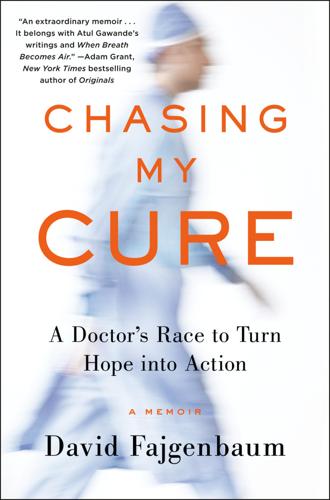
Chasing My Cure: A Doctor's Race to Turn Hope Into Action; A Memoir
by
David Fajgenbaum
Published 9 Sep 2019
While in New Orleans, I attended a research presentation where the final results of the international siltuximab clinical trial of seventy-nine iMCD patients were revealed. It was a huge occasion for the community—but somewhat uncertain in its implications. Dr. van Rhee was the lead investigator, and a number of other CDCN members were involved in the trial. It was the only randomized controlled trial, the gold standard test of efficacy in medicine, ever done in iMCD. This was historic. Just over a third of patients treated with siltuximab achieved a partial or complete response, compared to 0 percent on a placebo. And the drug was very well tolerated, with minimal side effects. The data were clear: Patients got better at a significantly higher rate on siltuximab than with a placebo.
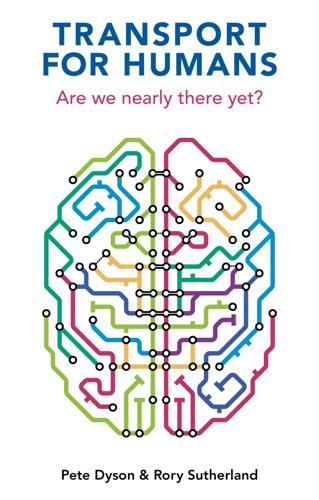
Transport for Humans: Are We Nearly There Yet?
by
Pete Dyson
and
Rory Sutherland
Published 15 Jan 2021
It has lost its stigma of ‘shirking from home’; first-timers often find it to be better than they expected; and some of us have invested in home offices, better equipment and internet, or even a new house. Employers will cut down on office costs and may get wider access to talent if their employees don’t have to commute.33 We don’t yet know if this will improve decision making. A randomized controlled trial that followed 1,000 employees over a nine-month period at a Chinese travel company found a 13% increase in performance and a 50% decrease in staff quitting. But data from mid-pandemic shows that there are winners and losers. The University of Chicago found that higher earners, highly educated workers and those with fewer dependents and larger homes disproportionately value home working.
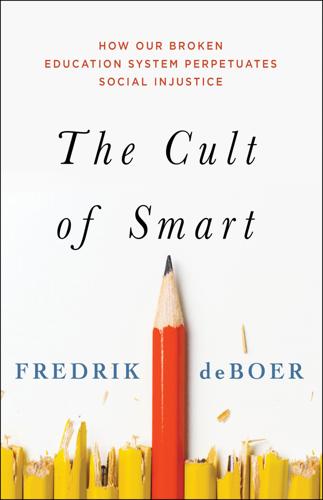
The Cult of Smart: How Our Broken Education System Perpetuates Social Injustice
by
Fredrik Deboer
Published 3 Aug 2020
“Improving Undergraduate Mathematics Learning,” Office of Academic Affairs, City University of New York, 2012. https://www.cuny.edu/news/publications/imp.pdf. 17. Alexandra W. Logue, Mari Watanabe-Rose, and Daniel Douglas, “Should Students Assessed as Needing Remedial Mathematics Take College-Level Quantitative Courses Instead? A Randomized Controlled Trial,” Educational Evaluation and Policy Analysis 38, no. 3 (2016): 578–598. 18. Hal Salzman, Daniel Kuehn, and B. Lindsay Lowell, “Guestworkers in the High-Skill US Labor Market: An Analysis of Supply, Employment, and Wage Trends,” Economic Policy Institute, April 24, 2013, https://www.epi.org/publication/bp359-guestworkers-high-skill-labor-market-analysis/, accessed August 5, 2019. 19.
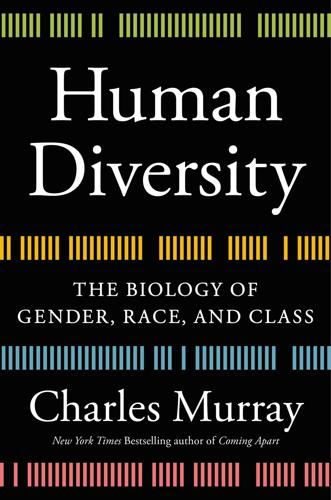
Human Diversity: The Biology of Gender, Race, and Class
by
Charles Murray
Published 28 Jan 2020
Duncan and Magnuson (2013): 119. 24. The paragraph continues: In general, a finding of meaningful long-term outcomes of an early childhood intervention is more likely when the program is old, or small, or a multi-year intervention, and evaluated with something other than a well-implemented RCT [random controlled trial]. In contrast, as the program being evaluated becomes closer to universal pre-K for four-year-olds and the evaluation design is an RCT, the outcomes beyond the pre-K year diminish to nothing. I conclude that the best available evidence raises serious doubts that a large public investment in the expansion of pre-K for four-year-olds will have the long-term effects that advocates tout.
…
“Supplementary Information: Genome-Wide Association Study Identifies 74 Loci Associated with Educational Attainment.” Nature 533 (7604). Olafsen, K. S., J. A. Ronning, P. I. Kaaresen et al. 2006. “Joint Attention in Term and Preterm Infants at 12 Months of Age: The Significant of Gender and Intervention Based on Randomized Controlled Trial.” Infant Behavior and Development 29: 554–63. Olalde, Iñigo, and Carles Lalueza-Fox. 2015. “Modern Humans’ Paleogenomics and the New Evidences on the European Prehistory.” Science and Technology of Archaeological Research 1 (1): 1–9. Oleksyk, Taras K., Vladimir Brukhin, and Stephen J.
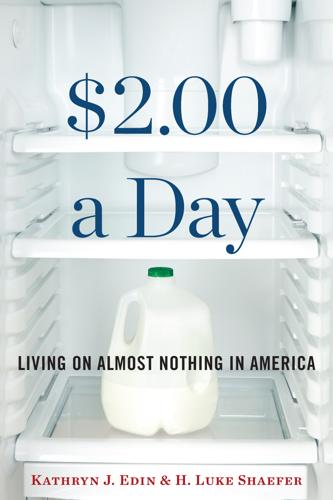
$2.00 A Day: Living on Almost Nothing in America
by
Kathryn Edin
and
H. Luke Shaefer
Published 31 Aug 2015
HUD seeks to alleviate some of the burden of the high housing costs faced by low-income families through maintaining public housing developments and through the housing choice voucher program, colloquially known as Section 8. While these programs are far from perfect, there’s solid evidence from the gold standard of social science research—a randomized control trial—that they reduce housing instability considerably. Access to a Section 8 voucher, in particular, reduces the chances that a family will be homeless—either doubled up or out on the streets. It lessens by half the share of families living in overcrowded units, and it greatly diminishes the average number of moves a family makes over a five-year period.
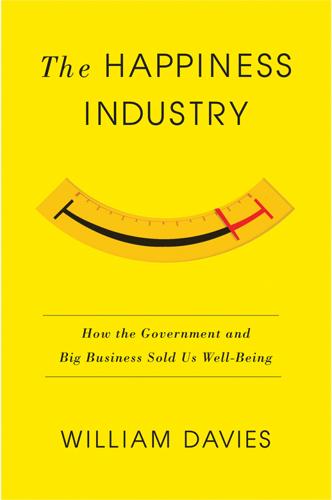
The Happiness Industry: How the Government and Big Business Sold Us Well-Being
by
William Davies
Published 11 May 2015
As with so many major scientific breakthroughs, it is impossible to specify who exactly got there first, for the simple reason that neither quite understood where exactly they had got to. The era of psychopharmacology was still very young, with the discovery of the first drug effective against schizophrenia in 1952 and the running of the first successful ‘randomized control trials’ (whereby a drug is tested alongside a placebo, with the recipients not knowing which one they’ve received) on Valium in 1954. These breakthroughs opened up a new neurochemical terrain for psychiatrists to explore. Unlike the developers of those anti-anxiety and anti-schizophrenia drugs, Kline and Kuhn were not sure precisely what disorder they were seeking to target.
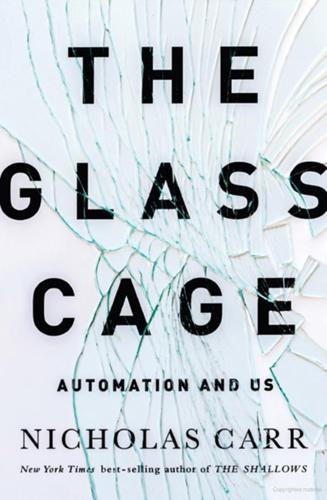
The Glass Cage: Automation and Us
by
Nicholas Carr
Published 28 Sep 2014
By forcing physicians to follow set rules, evidence-based medicine “can impede scientific progress,” he writes. Should hospitals and insurers “mandate EBM, backed up by the threat of lawsuits if adverse outcomes are accompanied by any departure from best practices, physicians will become reluctant to try alternative treatment strategies that have not yet been evaluated using randomized controlled trials. Scientific advancement can become stifled if front-line physicians, who blend medical expertise with respect for research, are prevented from exploration and are discouraged from making discoveries.”53 If we’re not careful, the automation of mental labor, by changing the nature and focus of intellectual endeavor, may end up eroding one of the foundations of culture itself: our desire to understand the world.
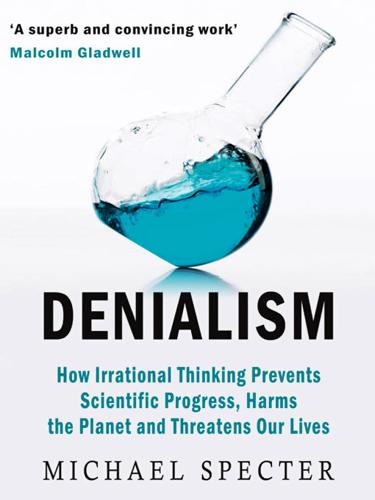
Denialism: How Irrational Thinking Hinders Scientific Progress, Harms the Planet, and Threatens Our Lives
by
Michael Specter
Published 14 Apr 2009
Weil spells it all out in Healthy Aging: To many, faith is simply unfounded belief, belief in the absence of evidence, and that is anathema to the scientific mind. There is a great movement toward “evidence-based medicine” today, an attempt to weed out ideas and practices not supported by the kind of evidence that doctors like best: results of randomized controlled trials. This way of thinking discounts the evidence of experience. I maintain that it is possible to look at the world scientifically and also to be aware of nonmaterial reality, and I consider it important for both doctors and patients to know how to assess spiritual health. (Italics added.) Evidence of experience?
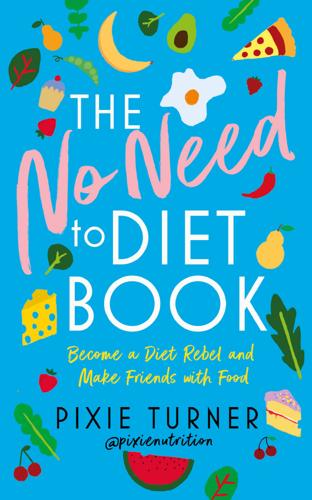
The No Need to Diet Book: Become a Diet Rebel and Make Friends With Food
by
Plantbased Pixie
Published 7 Mar 2019
‘A review of the carbohydrate–insulin model of obesity’. European Journal of Clinical Nutrition, 71(3):323–326. 87. Reidlinger, D.P., Darzi, J., Hall, W.L., et al. (2015). ‘How effective are current dietary guidelines for cardiovascular disease prevention in healthy middle-aged and older men and women? A randomized controlled trial’. The American Journal of Clinical Nutrition, 101(5):922–930. 88. Hooper, L., Martin, N., Abdelhamid, A., Davey Smith, G. (2015). ‘Reduction in saturated fat intake for cardiovascular disease’. Cochrane Database of Systematic Reviews. June (6). 89. Huang, T., Xu, M., Lee, A., Cho, S., Qi, L. (2015).
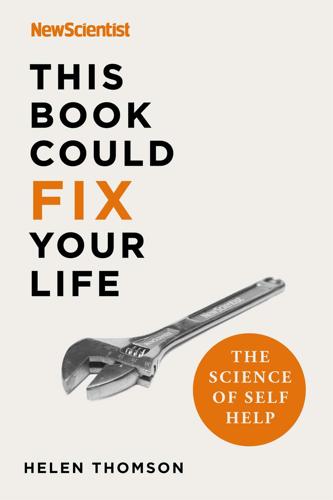
This Book Could Fix Your Life: The Science of Self Help
by
New Scientist
and
Helen Thomson
Published 7 Jan 2021
Hajek, P. et al. (2019), ‘A Randomized Trial of E-Cigarettes Versus Nicotine-Replacement Therapy’, New England Journal of Medicine 380, 7, 629–37. 10. Frings, D. et al. (2020), ‘Comparison of Allen Carr’s Easy Way Programme With a Specialist Behavioural and Pharmacological Smoking Cessation Support Service: A Randomized Controlled Trial’, Addiction 115, 5, 977–85. 11. Ma, Y. et al. (2015), ‘The Significant Association of Taq1A Genotypes in DRD2/ANKK1 with Smoking Cessation in a Large-Scale Meta-Analysis of Caucasian Populations’, Translational Psychiatry 5, e686. 12. Johnson, K. E. and Voight, B. F. (2018), ‘Patterns of Shared Signatures of Recent Positive Election Across Human Populations’, Nature Ecology and Evolution 2, 4, 713–20.

Thinking in Pictures: And Other Reports From My Life With Autism
by
Temple Grandin
Published 10 Jan 2006
Rapp 1991 Is this your child? Discovering and treating unrecognized allergies. New York., William Morrow et al. Ratey J. J. 1987 Autism: The treatment of aggressive behaviors. Journal of Clinical Psychopharmacology 7, 1:, 35–41. Richardson A. J. P. Montgomery 2005 The Oxford-Durham study—a randomized controlled trial of dietary supplementation with fatty acids in children with developmental coordination disorder. Pediatrics, 115: 1360–1366. et al. R. Ricketts 1993 Fluoxetine treatment of severe self-injury in young adults with mental retardation. Journal of the American Academy of Child and Adolescent Psychiatry, 32, 4:, 865–869.
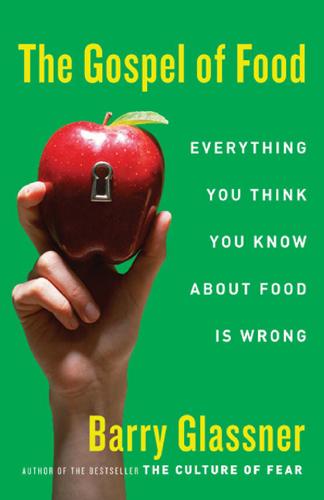
The Gospel of Food: Everything You Think You Know About Food Is Wrong
by
Barry Glassner
Published 15 Feb 2007
Willett and the paper’s authors both emphasized that nineteen people in a subsample were almost eight pounds below their initial weight thirty months after the start of the study. But even that favorable finding is offset by the fact that twenty-six of those who dropped out of the study and allowed themselves to be weighed after eighteen months had an average weight gain of nine pounds. Katherine McManus, Linda Antinoro, and Frank Sacks, “A Randomized Controlled Trial 262 Notes of a Moderate-Fat, Low-Energy Diet Compared with a Low-Fat, Low-Energy Diet for Weight Loss in Overweight Adults,” International Journal of Obesity 25 (2001): 1503–11. 50. Richard Klein,“Big Country,” New Republic, September 19, 1994, pp. 28– 33; Sander Gilman, Fat Boys (Lincoln: University of Nebraska Press, 2004); Peter N.
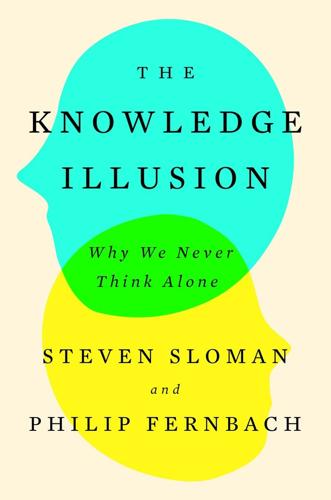
The Knowledge Illusion
by
Steven Sloman
Published 10 Feb 2017
The church interprets the Bible literally, believes in Young Earth creationism, denies evolution, and believes prayer can substitute for medical care. For most of his life, Science Mike firmly believed these things. However, in his thirties he began reading scientific literature and his faith in these beliefs began to waver. He read about randomized control trials that cast doubt on the healing power of prayer, physics research that identified the true age of the universe, and biology and paleontology studies that support evolution. His initial reaction was to completely lose his faith, but for a long time he hid his new beliefs from his community.
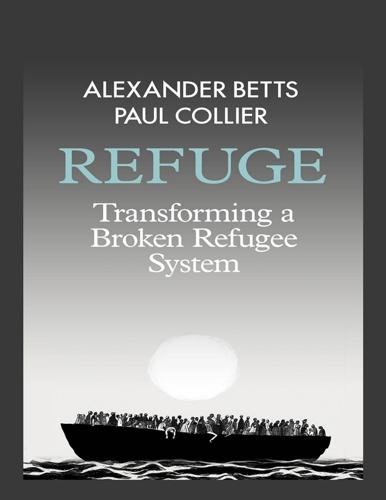
Refuge: Transforming a Broken Refugee System
by
Alexander Betts
and
Paul Collier
Published 29 Mar 2017
So we need to be a little more specific about what generosity of spirit implies. What should it mean in the context of Syria, and, by extension, what should it mean more widely in the global context of refugees? Science makes progress through experiments. The natural sciences rely upon lab experiments; medicine and economics progress through randomized controlled trials and natural experiments. None of these approaches are of much use for the present question, but moral philosophy does have its own form of experiment: the thought experiment. We can use thought experiments to make progress in teasing out what we should mean by generosity of spirit. In this chapter we are going to focus on a series of ethical questions.
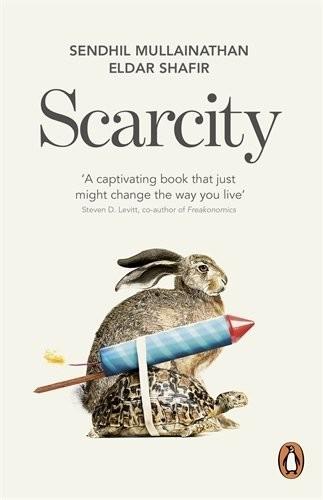
Scarcity: The True Cost of Not Having Enough
by
Sendhil Mullainathan
Published 3 Sep 2014
As a starting point, see Eduardo Sabaté, ed., Adherence to Long-Term Therapies: Evidence for Action (Geneva: World Health Organization, 2003). This book also contains adherence data for a wide variety of diseases. more than 28 percent of total yield: December 15, 2009. The benefits of weeding for any one farmer may be hard to generalize from these studies, which rely on model plots or on cross-sectional data. A careful randomized control trial of the benefits to farmers of weeding would be particularly useful in this area. For the current estimates in Africa, see L. P. Gianessi et al., “Solving Africa’s Weed Problem: Increasing Crop Production and Improving the Lives of Women,” Proceedings of “Agriculture: Africa’s ‘engine for growth’—Plant Science and Biotechnology Hold the Key,” Rothamsted Research, Harpenden, UK, October 12–14, 2009 (Association of Applied Biologists, 2009).
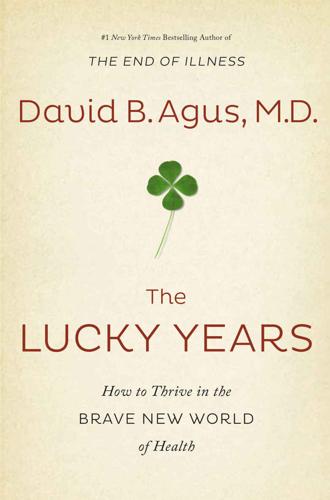
The Lucky Years: How to Thrive in the Brave New World of Health
by
David B. Agus
Published 29 Dec 2015
Scientists look at a large group of people—some of whom practiced one behavior and others another—and then they study the outcomes, attempting to make the groups equal with respect to other variables, with men and women of roughly the same age in each group, who share similar lifestyles in terms of their diet and exercise habits. These large, randomized controlled trials are the best resource we have to identify behaviors that can alter our risk for disease. The problem is that it is very hard to dictate behavior to a group of people and expect them to be compliant for years and then study an outcome that has a very long lag time, meaning time until the desired effect is seen.
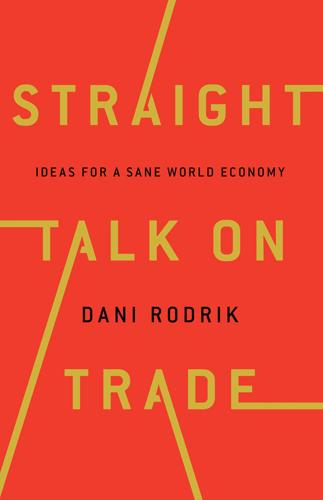
Straight Talk on Trade: Ideas for a Sane World Economy
by
Dani Rodrik
Published 8 Oct 2017
Those with strong priors in favor of financial market efficiency, such as Eugene Fama, for example, can continue to absolve financial markets from culpability for the crisis, laying the blame elsewhere. Keynesians and “classical” economists can continue to disagree on their interpretation of high unemployment. But even in microeconomics, where it is sometimes possible to generate precise empirical estimates using randomized controlled trials, those estimates apply only locally to a particular setting. The results must be extrapolated—using judgment and a lot of hand waving—in order to be applied more generally. New economic evidence serves at best to nudge the views—a little here, a little there—of those inclined to be open-minded.

Laziness Does Not Exist
by
Devon Price
Published 5 Jan 2021
Anderson, Chunxu Liu, and Richard J. Kryscio, “Blood Pressure Response to Transcendental Meditation: A Meta-Analysis,” American Journal of Hypertension 21, no. 3 (March 2008): 310–16. 43. David S. Black and George M. Slavich, “Mindfulness Meditation and the Immune System: A Systematic Review of Randomized Controlled Trials,” Annals of the New York Academy of Sciences 1373, no. 1 (June 2016): 13–24. 44. Li-Chuan Chu, “The Benefits of Meditation vis-à-vis Emotional Intelligence, Perceived Stress and Negative Mental Health,” Stress and Health: Journal of the International Society for the Investigation of Stress 26, no. 2 (2010): 169–80.
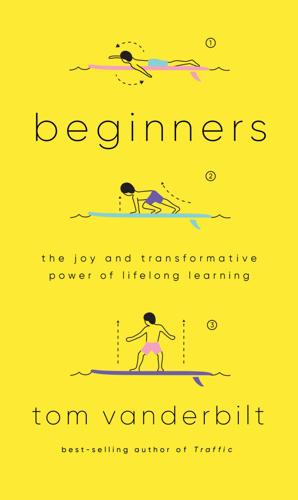
Beginners: The Joy and Transformative Power of Lifelong Learning
by
Tom Vanderbilt
Published 5 Jan 2021
the way you speak to your young child: Parents who were coached, in one study, how to speak better “parentese”—not baby talk, but real words, more effortfully articulated—had more verbally proficient babies than those who didn’t get the training. See Naja Ferjan Ramírez et al., “Parent Coaching at 6 and 10 Months Improves Language Outcomes at 14 Months: A Randomized Controlled Trial,” Developmental Science (2018): e12762, doi:10.1111/desc/12762. “errorless learning”: For a good summary, see Janet Metcalfe, “Learning from Errors,” Annual Review of Psychology 68 (2017): 465–89. “As adults,” write the authors: Alison Gopnik, Andrew Meltzoff, and Patricia Kuhl, The Scientist in the Crib (New York: Harper Perennial, 1996), 196.
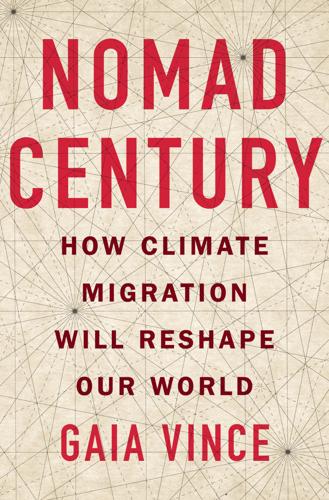
Nomad Century: How Climate Migration Will Reshape Our World
by
Gaia Vince
Published 22 Aug 2022
‘Agreement of Coexistence … which stipulates that the resident is explicitly, freely, and voluntarily consenting to the governance structures, rulemaking systems, and authority of Próspera’. 21. Julia Carrie Wong, ‘Seasteading: Tech leaders’ plans for floating city trouble French Polynesians’, The Guardian, 2 January 2017. 22. Costas Meghir, Ahmed Mushfiq Mobarak, Corina D. Mommaerts and Melanie Morten, Migration and Informal Insurance: Evidence from a randomized controlled trial and a structural model, National Bureau of Economic Research, working paper 26082 (2019). 23. Ahmed Mushfiq Mobarak, ‘Can a bus ticket prevent seasonal hunger?’, Yale Insights 18 (2018). 24. B. Lyte, ‘Remote workers are flocking to Hawaii: But is that good for the islands?, The Guardian, 26 January 2021. 25.
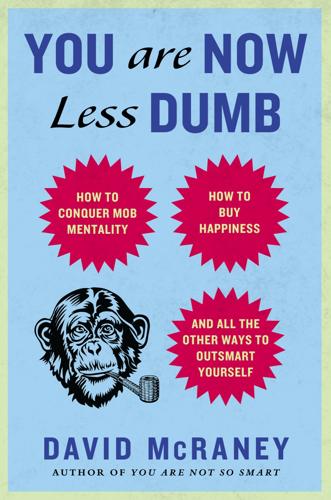
You Are Now Less Dumb: How to Conquer Mob Mentality, How to Buy Happiness, and All the Other Ways to Outsmart Yourself
by
David McRaney
Published 29 Jul 2013
Web: www.nytimes.com/2012/04/08/opinion/sunday/in-defense-of-superstition.html. Kaptchuk, Ted J., Elizabeth Friedlander, John M. Kelley, M. Norma Sanchez, Efi Kokkotou, Joyce P. Singer, Magda Kowalczykowski, Franklin G. Miller, Irving Kirsch, and Anthony J. Lembo. “Placebos Without Deception: A Randomized Controlled Trial in Irritable Bowel Syndrome.” PLoS One 5, no. 12 (2010): E15591. Lockton, Dan. “Placebo Buttons, False Affordances and Habit-Forming.” Design with Intent. WordPress, Jan. 10, 2008. Web: Sept. 2012, architectures.danlockton.co.uk/2008/10/01/placebo-buttons-false-affordances-and-habit-forming/.
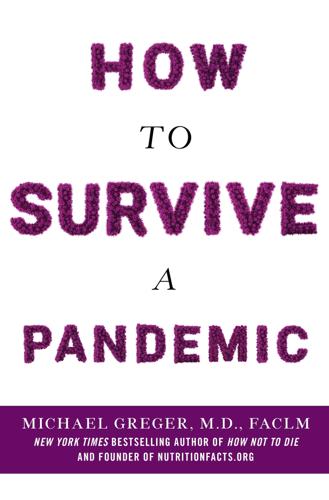
How to Survive a Pandemic
by
Michael Greger, M.D., FACLM
Instead of swallowing the supplement, she just let it dissolve in her mouth, and the cold seemed to disappear within hours.2781 This observation led her own father to conduct the first randomized double-blind placebo-controlled trial on zinc lozenges.2782 There have since been more than a dozen randomized controlled trials published. Overall, researchers have found that zinc is indeed beneficial in reducing both duration and severity of the common cold when taken within the first twenty-four hours of symptom onset.2783 Zinc lozenges appear to shorten colds by about three days,2784 with significant reductions in nasal congestion and discharge, hoarseness, and cough.2785 The common cold results for zinc are often described as “mixed,” but that appears to be largely because some studies used zinc lozenges containing ingredients like citric acid that strongly sequester zinc, so little or no free zinc is actually released.2786 Lozenges containing around 10–15 mg of zinc as either zinc acetate or zinc gluconate without zinc binders such as citric acid, tartaric acid, glycine, sorbitol, or mannitol2787 taken every two waking hours for a few days starting immediately upon symptom onset may work best.2788 Best for the common cold, but what about COVID-19?
…
Efficacy of zinc given as an adjunct in the treatment of severe and very severe pneumonia in hospitalized children 2-24 mo of age: a randomized, double-blind, placebo-controlled trial. Am J Clin Nutr. 97(6):1387–1394. https://doi.org/10.3945/ajcn.112.052951. 2798. Sempértegui F, Estrella B, Rodríguez O, Gómez D, Cabezas M, Salgado G, Sabin LL, Hamer DH. 2014. Zinc as an adjunct to the treatment of severe pneumonia in Ecuadorian children: a randomized controlled trial. Am J Clin Nutr. 99(3):497–505. https://doi.org/10.3945/ajcn.113.067892. 2799. Shah D, Sachdev HS, Gera T, De-Regil LM, Peña-Rosas JP. 2016. Fortification of staple foods with zinc for improving zinc status and other health outcomes in the general population. Cochrane Database Syst Rev. 6:CD010697. https://doi.org/10.1002/14651858.CD010697.pub2. 2800.
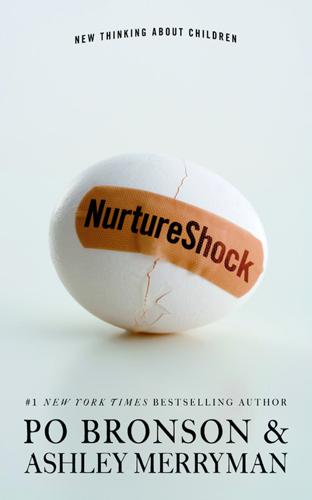
NurtureShock: New Thinking About Children
by
Po Bronson
and
Ashley Merryman
Published 2 Sep 2008
Farrington, “Effects of Closed-Circuit Television on Crime,” Annals of the American Academy of Political and Social Science, vol. 587, no. 1, pp. 110–135 (2003). Wilfley, Denise E., Tiffany L. Tibbs, Dorothy J. Van Buren, Kelle P. Reach, Mark S. Walker, and Leonard H. Epstein, “Lifestyle Interventions in the Treatment of Childhood Overweight: A Meta-analytic Review of Randomized Controlled Trials,” Health Psychology, vol. 26, no. 5, pp. 521–532 (2007). Williams, A. F., “Young Driver Risk Factors: Successful and Unsuccessful Approaches for Dealing With Them and an Agenda for the Future,” Injury Prevention, vol. 12, supp. 1, pp. 4–8 (2006). Chapter 9, Plays Well With Others Allen, Joseph P., Remarks as discussant for paper symposium, “How and Why Does Peer Influence Occur?

Doctored: The Disillusionment of an American Physician
by
Sandeep Jauhar
Published 18 Aug 2014
Though he didn’t say it explicitly, the clear implication was that my assessment was being influenced by money. In the end, the committee decided to restrict Natrecor use to me (the resident heart failure specialist) and a handful of other cardiologists. By then I’d tapered off the talks anyway, and soon afterward I quit the speakers’ bureau. (A randomized, controlled trial later showed that Natrecor was safe but no more effective than existing, cheaper therapies.) During the two years I gave these talks, I often thought of what Jacob Hirsch, a cardiologist at NYU, once told me when we were sitting in the echo reading room during my fellowship. He was eating a sandwich that had been brought in by a drug rep.
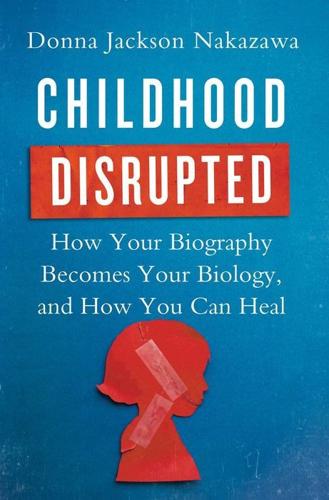
Childhood Disrupted: How Your Biography Becomes Your Biology, and How You Can Heal
by
Donna Jackson Nakazawa
Published 6 Jul 2015
Wilkinson, et al., “5-HTTLPR and Early Childhood Adversities Moderate Cognitive and Emotional Processing in Adolescence,” PLoS One 7, no. 11 (2012), e48482. Seventy-five percent of kids with the stress-reactive variant: D. Albert, D. W. Belsky, M. Crowley, et al., “Can Genetics Predict Response to Complex Behavioral Interventions? Evidence from a Genetic Analysis of the Fast Track Randomized Control Trial,” Journal of Policy Analysis and Management (January 2, 2015), doi: 10.1002/pam.21811. Even later efforts in adulthood to reshape: J. Belsky and M. Pluess, “Beyond Diathesis Stress: Differential Susceptibility to Environmental Influences,” Psychological Bulletin 135, no. 6 (2009), 885–908; J.

Tightrope: Americans Reaching for Hope
by
Nicholas D. Kristof
and
Sheryl Wudunn
Published 14 Jan 2020
The Reams case is a tragic reminder of what can happen when kids in places like Pine Bluff get help only from gangs: in this case, Turner was murdered, Reams spent twenty-five years on death row and Arkansas devoted scarce tax dollars to prisons, police, lawyers and courts instead of educating children and directing them to become, say, police officers rather than criminals. Because the cost of crime is so high, the evidence is that programs like Annette’s targeting at-risk kids can generate huge returns. One randomized controlled trial looking at a similar program in Chicago, Becoming a Man, found that the program reduced violent crime arrests by about half and increased high-school graduation rates by about 15 percent. The study showed that each dollar invested in the programs saved up to $30 over time. These programs should be replicated all across the country, so as to help young people and the country itself.

Radical Markets: Uprooting Capitalism and Democracy for a Just Society
by
Eric Posner
and
E. Weyl
Published 14 May 2018
The government needs to privatize state-owned industries, enforce property rights, lower taxes, and reduce regulation. Get the economy going, and inequality will take care of itself. TECHNOCRATIC MIDDLE: We need an economy carefully regulated by internationally trained experts, targeted interventions that have been tested by randomized controlled trials, and political reform that protects human rights. People in rich countries, where inequality is rising, will recognize Brazil in their own countries. In the rich countries, economies are also stagnating and political conflict and corruption are on the rise. The long-standing belief that a “developing country” like Brazil will eventually end up as a “developed country” like the United States is under scrutiny, and people are beginning to wonder if things are moving in reverse.
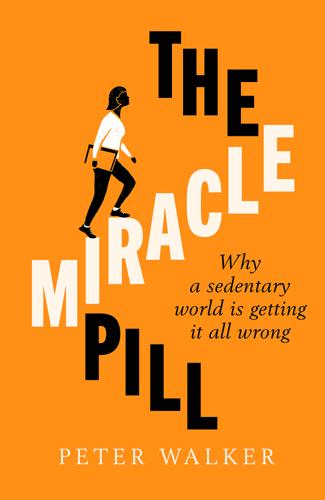
The Miracle Pill
by
Peter Walker
Published 21 Jan 2021
Middle-Aged and Older Adults: A National Cohort Study’, Annals of Internal Medicine, Vol. 167, No. 7 (2017): 465–75. 32 Joseph Henson et al., ‘Predictors of the acute postprandial response to breaking up prolonged sitting’, Medicine and Science in Sports and Exercise, Vol. 52, No. 6 (2020): 1385–93. 33 Interview with the author. 34 Genevieve N. Healy et al., ‘A Cluster Randomized Controlled Trial to Reduce Office Workers’ Sitting Time: Effect on Activity Outcomes’, Medicine and Science in Sports and Exercise, Vol. 48, No. 9 (2016): 1787–97. 35 Interview with the author. 36 Interview with the author. 37 Ulf Ekelund et al., ‘Does physical activity attenuate, or even eliminate, the detrimental association of sitting time with mortality?
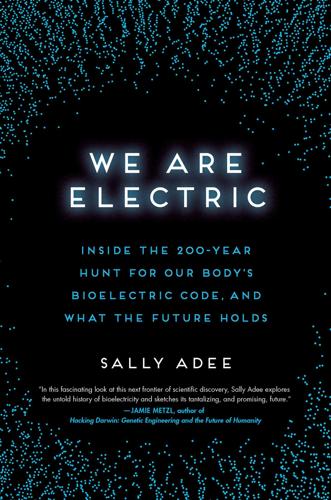
We Are Electric: Inside the 200-Year Hunt for Our Body's Bioelectric Code, and What the Future Holds
by
Sally Adee
Published 27 Feb 2023
If there’s a big difference between their improvement and the better improvement of the people with the real device, you move on to bigger and bigger trials to determine, to ever greater precision, whether the effect of your device is real and how big it is. Neurosurgeon Scott Shapiro methodically went about planning all of these next steps. He recruited three more neurosurgeons at other medical centers that had agreed to take part in the next small randomized controlled trial. And after that, his plan was to approach the NIH to fund a slightly bigger trial of eighty patients, forty of whom would receive a functional OFS. To Shapiro, the next steps were clear, and they had to be done in order. That wasn’t how Borgens saw it. He was getting older, and he had been carrying out this work now for the better part of twenty-five years.
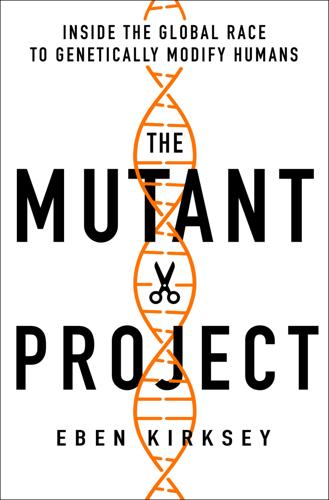
The Mutant Project: Inside the Global Race to Genetically Modify Humans
by
Eben Kirksey
Published 10 Nov 2020
Chemical treatments like “embryo glue” and surgical procedures like “womb scratching” had been rolled out in the clinic before they were scrutinized according to rigorous scientific standards, she said. “I would call it a scandal at the moment with assisted reproductive technologies. I think that it is very strange that things were brought into the clinic without randomized control trials.” Now it is routine to inject sperm into an egg as part of standard fertility treatments, but this procedure was discovered by mistake. “The needle went in accidentally,” said O’Neill. The resulting embryo looked healthy, so it was later transferred by a different doctor. No rigorous tests were conducted, but after this accident, sperm injection “was just taken up as a new practice.”
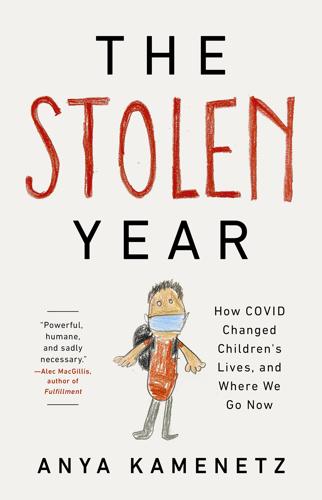
The Stolen Year
by
Anya Kamenetz
Published 23 Aug 2022
It would arrive automatically to everyone who filed a tax return (which could prove to be a big asterisk, especially for people who work in the informal economy). The money would be mailed out in monthly checks, $250 per child over age six and $300 per child under age six, beginning in July 2021. In the past decade, randomized controlled trials have tested the effects of direct cash assistance, sometimes called universal basic income programs. These studies show that when people get reliable income, it tends to make their lives better. They spend more than before on fresh fruit and vegetables and less on alcohol and cigarettes.
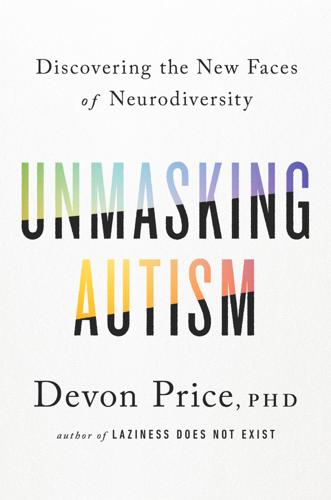
Unmasking Autism: Discovering the New Faces of Neurodiversity
by
Devon Price
Published 4 Apr 2022
For more on modifications to CBT (though this research is very limited, in that it’s based on a child sample and reflects a lot of ableist assumptions about the socia skills of Autistics) see J. J. Wood, A. Drahota, K. Sze, K. Har, A. Chiu, & Langer, D. A. (2009). Cognitive behavioral therapy for anxiety in children with autism spectrum disorders: A randomized, controlled trial. Journal of Child Psychology and Psychiatry,50: 224–234. BACK TO NOTE REFERENCE 14 https://jessemeadows.medium.com/alcohol-an-autistic-masking-tool-8aff572ca520. BACK TO NOTE REFERENCE 15 Dorian identifies as an Aspie, not an Autistic person, because the diagnosis they received at age twenty-four was of Asperger’s Syndrome, not Autism Spectrum Disorder.
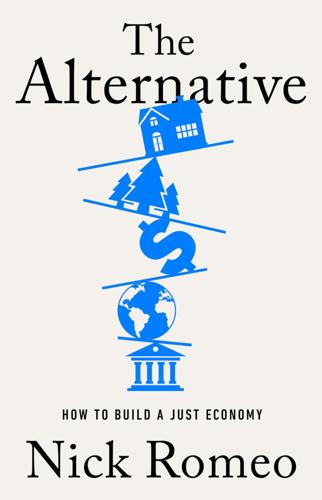
The Alternative: How to Build a Just Economy
by
Nick Romeo
Published 15 Jan 2024
And does it cost roughly the same or less than maintaining current unemployment benefits? “Pretty much no matter what your specific normative preferences, if it comes for free, people choose it voluntarily, and they feel like they’re better off—you would think that’s a slam dunk,” he said. Kasy and his colleagues are studying the program using a randomized controlled trial in which waves of participants who started at different times are compared against one another and a statistical composite of similar unemployed individuals from similar towns in Austria without a job guarantee. The data have been encouraging. On many dimensions—anxiety or depression symptoms, COVID-19 stress, sense of social inclusion, social status, and income security—the improvements in participants’ lives are statistically significant.
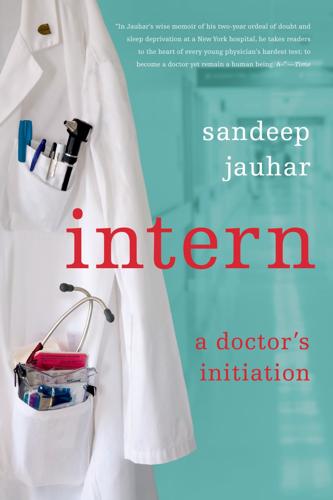
Intern: A Doctor's Initiation
by
Sandeep Jauhar
Published 26 Dec 2007
Arnold Relman, then editor of The New England Journal of Medicine, wrote: “The cost and psychological stress of ICU treatment would be justifiable if such units were known to reduce mortality and morbidity from levels achievable with less costly and intensive modes of hospital care. [But] there have been no prospective, randomized, controlled trials to supply such data.” Almost two decades later, such studies are still lacking. I told the story of an elderly woman in the ICU who was in a coma for a month. She developed a blood infection, and kidney, heart and respiratory failure, but lingered for weeks with antibiotics and drugs to elevate her blood pressure.

Magic Pill: The Extraordinary Benefits and Disturbing Risks of the New Weight-Loss Drugs
by
Johann Hari
Published 7 May 2024
GO TO NOTE REFERENCE IN TEXT Eighty percent of processed food is made up of just four ingredients: Spector, The Diet Myth, p. 94. GO TO NOTE REFERENCE IN TEXT Processed foods make you eat, on average, 500 calories more every day: K. Hall et al., “Ultra-Processed Diets Cause Excess Calorie Intake and Weight Gain: An Inpatient Randomized Controlled Trial of Ad Libitum Food Intake,” Cell Metabolism (2019), 30, 1, pp. 66–77, https://www.cell.com/cell-metabolism/fulltext/S1550-4131(19)30248-7. GO TO NOTE REFERENCE IN TEXT Thirty years ago, it took twelve weeks for a factory-farmed chicken to reach its slaughter weight: https://www.theguardian.com/environment/2016/apr/24/real-cost-of-roast-chicken-animal-welfare-farms, as accessed November 6, 2023.
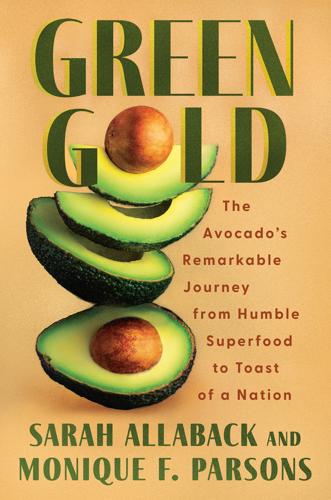
Green Gold
by
Sarah Allaback
Published 14 Mar 2025
Economic Benefits of Hass Avocado Imports from Mexico: 2022 Update (College Station: Agribusiness Food and Consumer Economics Research Center, September 2022). 6.Alvaro Luque, author interview, May 23, 2023. 7.Billy Yost, “Alvaro Luque Knew When the Time Was Ripe,” Hispanic Executive, August 17, 2020. 8.Federal Tax Form 990, Department of Treasury Internal Revenue Service, Avocados From Mexico, Tax Year ending June 30, 2023, accessed via ProPublica Nonprofit Explorer, projects.propublica.org/nonprofits/organizations/463082698/202343359349300214/full. 9.Hass Avocado Board 2012 Annual Report, hassavocadoboard.com/inside-hab/reports-evaluations. 10.Li Wang, Peter L. Bordi, Jennifer A. Fleming, Alison M. Hill, and Penny M. Kris-Etherton, “Effect of a Moderate Fat Diet with and Without Avocados on Lipoprotein Particle Number, Size and Subclasses in Over-weight and Obese Adults: A Randomized, Controlled Trial,” Journal of the American Heart Association 4, no. 1, January 7, 2015. 11.“Superfoods or Superhype?” The Nutrition Source, Harvard T.H. Chan School of Public Health. nutritionsource.hsph.harvard.edu/superfoods/, accessed September 8, 2024. 12.Lorena S. Pacheco, Yanping Li, Eric B. Rimm, JoAnn E.
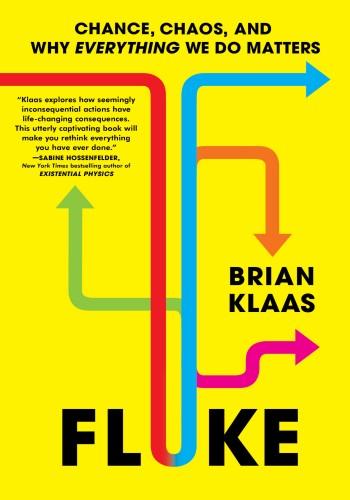
Fluke: Chance, Chaos, and Why Everything We Do Matters
by
Brian Klaas
Published 23 Jan 2024
a broken system: For a critique of peer review that I largely agree with, see Adam Mastroianni, “The Rise and Fall of Peer Review,” Experimental History, 13 December 2022. planted severe flaws: F. Godlee, C. R. Gale, and C. N. Martyn, “Effect on the Quality of Peer Review of Blinding Reviewers and Asking Them to Sign Their Reports: A Randomized Controlled Trial,” JAMA 280 (3) (1998): 237–40. how many would be caught: S. Schroter et al., “What Errors Do Peer Reviewers Detect, and Does Training Improve Their Ability to Detect Them?,” Journal of the Royal Society of Medicine 101 (10) (2008): 507–14. They would crowdsource research: This whole section is about this study: N.
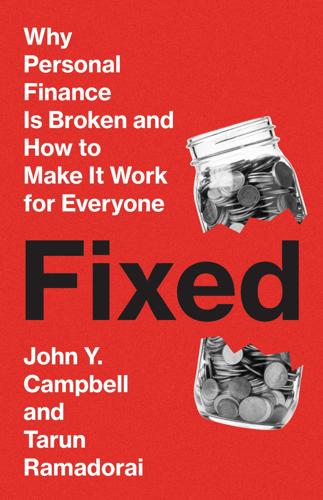
Fixed: Why Personal Finance is Broken and How to Make it Work for Everyone
by
John Y. Campbell
and
Tarun Ramadorai
Published 25 Jul 2025
In 2019 the Indian Economic Survey, an important policy document issued each year by the Indian Chief Economic Advisor, devoted an entire chapter to nudge-based solutions to economic policy problems. By the late 2010s there were over 200 nudge units operating worldwide.30 However, these ideas, while they can generate beneficial consequences and certainly have a role in policy, have their limits. To begin with, the benefits of nudges have been somewhat oversold. A metastudy of 126 randomized control trials covering 23 million individuals shows that nudges have roughly a quarter of the effect in the field as the outcomes reported in academic studies; the difference is mainly attributed to the selective publication of studies showing eye-catching effects of nudges.31 Suggestions seem to be particularly ineffective.
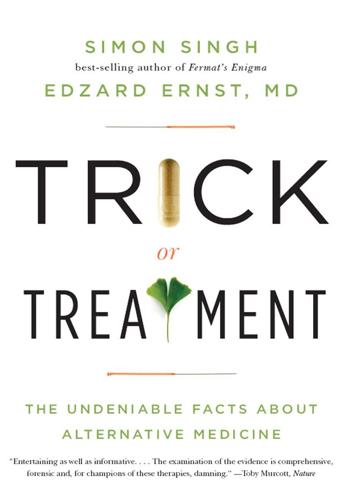
Trick or Treatment: The Undeniable Facts About Alternative Medicine
by
Edzard Ernst
and
Simon Singh
Published 17 Aug 2008
Randomization even allows for unknown factors to be balanced equally across the groups. Fairness through randomization is particularly effective if the initial pool of participants is large. In this case, the number of participants (366 patients) was impressively large. Today medical researchers call this a randomized controlled trial (or RCT) or a randomized clinical trial, and it is considered the gold standard for putting therapies to the test. Although Hamilton succeeded in conducting the first randomized clinical trial on the effects of bloodletting, he failed to publish his results. In fact, we know of Hamilton’s research only because his documents were rediscovered in 1987 among papers hidden in a trunk lodged with the Royal College of Physicians in Edinburgh.
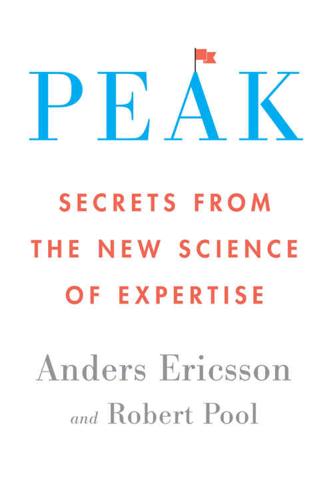
Peak: Secrets From the New Science of Expertise
by
Anders Ericsson
and
Robert Pool
Published 4 Apr 2016
The program uses the same basic principles found in deliberate practice: breaking learning down into a series of well-specified skills, designing exercises to teach each of those skills in the correct order, and using feedback to monitor progress. According to teachers who have used the curriculum, this approach has allowed them to teach the relevant math skills to essentially every student, with no one left behind. Jump was evaluated in a randomized controlled trial in Ontario with twenty-nine teachers and approximately three hundred fifth-grade students, and after five months the students in the Jump classes showed more than twice as much progress as the others in understanding mathematical concepts as measured by standardized tests. Unfortunately, the results of the trial have not appeared in a peer-reviewed scientific journal, so it is hard to judge them objectively, and we will need to see the results reproduced in other school districts before we can trust them completely, but the results agree with what I have observed generally in a variety of fields, not just singing and math, but writing, drawing, tennis, golf, gardening, and a variety of games, such as Scrabble and crossword solving: People do not stop learning and improving because they have reached some innate limits on their performance; they stop learning and improving because, for whatever reasons, they stopped practicing—or never started.

Hit Makers: The Science of Popularity in an Age of Distraction
by
Derek Thompson
Published 7 Feb 2017
A few years before the outbreak, one of London’s water suppliers had moved its intake point upstream from the main sewage discharge on the Thames, while another company kept its intake point downstream from the sewage. London had been divided into two groups, one drinking sewage and one drinking purer water. In other words, the London cholera outbreak was the result of something like an unintentional randomized controlled trial of disease theory. Several hundred thousand people were randomly distributed water from one company and were more likely to get sick, while several hundred thousand people were randomly distributed water from another company and stayed healthy. the healthy brewers: Randy Alfred, “Sept. 8, 1854: Pump Shutdown Stops London Cholera Outbreak,” Wired, September 8, 2009, www.wired.com/2009/09/0908london-cholera-pump/.

Drugs Without the Hot Air
by
David Nutt
Published 30 May 2012
.”• LSD: my problem child, Albert Hofmann, McGraw-Hill Book Company, 1980 4 “I lost all control of time• As above. 5 they recorded that they found themselves taking their schizophrenic patients’ accounts of their illness more seriously• Hofmann’s Potion: The Early Years of LSD, Connie Littlefield, URL-120, 2002 6 The LSD trials at Saskatchewan• As above. 7 outbreak of insanity in the French town of Pont-Saint-Esprit in 1951• A terrible mistake, Hank Albarelli, Trine Day, 2009 8 Leary first tried psilocybin, the active ingredient in magic mushrooms, and he soon began experimenting with LSD as well• Hofmann’s Potion: The Early Years of LSD, Connie Littlefield, URL-120, 2002 9 “hearing voices”• Schizophrenia, National Institute of Mental Health, URL-118. 10 an edition of Spiderman in 1971• The Amazing Spiderman issues #96–98, Stan Lee, Marvel Comics, May–July 1971 11 five other studies that have found LSD helps people overcome alcoholism• Lysergic acid diethylamide (LSD) for alcoholism: a meta-analysis of randomized controlled trials, Teri S. Krebs and Pal-Orjan Johansen, Journal of Psychopharmacology, 2011 12 cluster headaches self-medicate with psychedelics• Will Harvard drop acid again?, Peter Bebergal, URL-121, June 9th 2008 13 use in problem solving• LSD – The Problem Solving Psychedelic, PG Stafford and BH Golightly, Award Books, 1967 14 Francis Crick• Nobel Prize Genius Crick was High on LSD when he discovered the secret of life, Alun Rees, the Mail on Sunday, August 8th 2004 15 Kary Mullis• BBC Horizon – Psychedelic Science – DMT, LSD, Ibogaine – Part 5, BBC, 1997 16 polymerase chain reaction (PCR)• The polymerase chain reaction is used to “amplify” a small amount of DNA, to produce a larger quantity that makes testing possible or easier.

This Will Make You Smarter: 150 New Scientific Concepts to Improve Your Thinking
by
John Brockman
Published 14 Feb 2012
Politicians and civil servants too seldom appreciate how tools drawn from both the natural and social sciences can be used to design more effective policies, and even to win votes. In education and criminal justice, for example, interventions are regularly undertaken without being subjected to proper evaluation. Both fields can be perfectly amenable to one of science’s most potent techniques—the randomized controlled trial—yet these are seldom required before new initiatives are put into place. Pilots are often derisory in nature, failing even to collect useful evidence that could be used to evaluate a policy’s success. Sheila Bird, of the Medical Research Council, for instance, has criticized the UK’s introduction of a new community sentence called the Drug Treatment and Testing Order, following pilots designed so poorly as to be worthless.
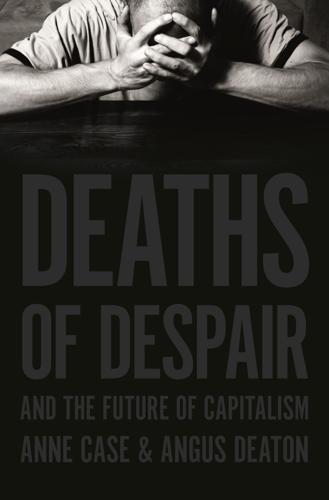
Deaths of Despair and the Future of Capitalism
by
Anne Case
and
Angus Deaton
Published 17 Mar 2020
The opioid story fits with this more general theme but is much more flagrant, because it is rare that corporations can so directly benefit from death. We do not believe that the FDA has been captured by the industry. Even so, much went wrong with its approval of opioids, especially OxyContin. The FDA (and the general public) greatly reveres the randomized controlled trials that are required to demonstrate that drugs work, but even here there were problems with opioids. Those who were in the control group for OxyContin—the randomly selected group that did not receive the drug—had previously been taking OxyContin in an earlier phase of the trial, called the open-label phase; this is done to exclude from the trial those who cannot tolerate the drug.37 In this type of trial there is a “washout” period between the two phases, in which the drug is supposed to wash out of the patients’ systems.
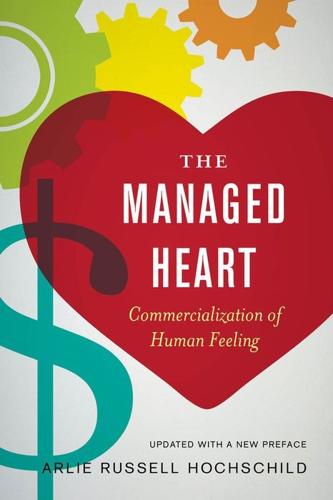
The Managed Heart: Commercialization of Human Feeling
by
Arlie Russell Hochschild
Published 1 Nov 1983
James, Nicky 1989 "Emotional Labour: Skill and work in the Social Regulation of Feelings," Sociological Review 37(1): 15-42. Karabanow,]. 1999 "When Caring is Not Enough: Emotional Labor and Youth Shelter Workers," Social Service Review V73(N3):340-357. Kennell,]., S. McGrath, M. Klaus, S. Robertson, and C. Hinkley 1991 "Continuous Emotional Support During Labor in a United States Hospital-A Randomized Controlled Trial," JAMAJournal of the American Medical Association V265(N17) :2197-220l. "Continuous Emotional Support During Labor1991 In Reply," JAMAJournal of the American Medical Association V266(N11):1509-1510. 282 Bibliography to the Twentieth Anniversary Edition Kilbourne, Barbara Stanek, George Farkas, Kurt Beron, Dorothea Weir, and Paula England 1994 "Returns to Skill, Compensating Differentials, and Gender Bias: Effects of Occupational Characteristics on the Wages of White Women and Men," A merican Journal of Sociology 100 (3) :689-719.

The Deep Learning Revolution (The MIT Press)
by
Terrence J. Sejnowski
Published 27 Sep 2018
See Federal Trade Commission press release “FTC Charges Marketers of ‘Vision Improvement’ App with Deceptive Claims,” September 17, 2015, https://www .ftc.gov/news-events/press-releases/2015/09/ftc-charges-marketers-vision -improvement-app-deceptive-claims/. Seitz’s scientific studies are high quality and have been published in peer-review psychology journals, but the FTC wanted him to perform a randomized control trial, similar to trials used to test the efficacy of drugs. This is an expensive undertaking, difficult for a small startup company. 40. Johana Bhuiyan, “Ex-Google Sebastian Thrun Says That the Going Rate for SelfDriving Talent Is $10 Million per Person,” Recode, September 17, 2016. https://www .recode.net/2016/9/17/12943214/sebastian-thrun-self-driving-talent-pool. 41.
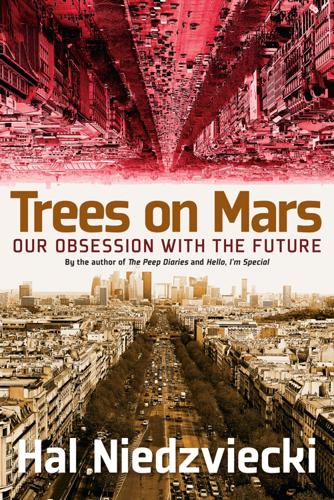
Trees on Mars: Our Obsession With the Future
by
Hal Niedzviecki
Published 15 Mar 2015
“Students who gain access to a home computer between the 5th and 8th grades tend to witness a persistent decline in reading and math scores,” the economists wrote. After being issued laptops, the students’ grades went down and stayed down for the entire duration of the study.52 “There are already several randomized, controlled trials of schools with and without One Laptop per Child,” notes Kentaro Toyama, a self-described “recovering technoholic” and former Microsoft Research Executive who worked for the company in India overseeing projects aimed at using technology to alleviate conditions leading to poverty. Now a professor at the University of Michigan and author of Geek Heresy: Rescuing Social Change from the Cult of Technology, he tells an interviewer that, “[g]enerally, what most of these studies show is that schools with laptops did not see their children gain anything in terms of academic achievement, in terms of grades, in terms of test scores, in terms of attendance, or in terms of supposed engagement with the classroom.”53 Why would One Tablet, One Child be any different?
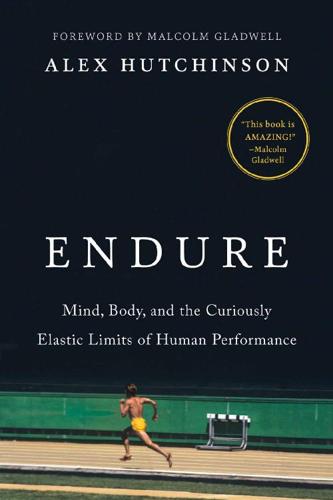
Endure: Mind, Body, and the Curiously Elastic Limits of Human Performance
by
Alex Hutchinson
Published 6 Feb 2018
Beltrami et al., “Conventional Testing Methods Produce Submaximal Values of Maximum Oxygen Consumption,” British Journal of Sports Medicine 46, no. 1 (2012). 8. a particularly graphic illustration of its importance: C. R. Wagstaff, “Emotion Regulation and Sport Performance,” Journal of Sport and Exercise Psychology 36, no. 4 (2014). 9. Staiano and Marcora presented recently declassified results: Walter Staiano et al., “A Randomized Controlled Trial of Brain Endurance Training (BET) to Reduce Fatigue During Endurance Exercise,” Medicine & Science in Sports & Exercise 47, no. 5S (2015). 10. a 2016 analysis of virtually every brain-training study: Daniel Simons et al., “Do ‘Brain-Training’ Programs Work?,” Psychological Science in the Public Interest 17, no. 3 (2016). 11.
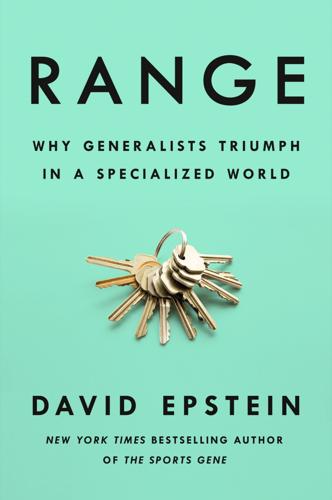
Range: Why Generalists Triumph in a Specialized World
by
David Epstein
Published 1 Mar 2019
“oculostenotic reflex”: Eric Topol is the cardiologist who coined that term. (For a patient who is actually having a heart attack, a stent can be lifesaving.) one in fifty patients: K. Stergiopoulos and D. L. Brown, “Initial Coronary Stent Implantation With Medical Therapy vs Medical Therapy Alone for Stable Coronary Artery Disease: Meta-analysis of Randomized Controlled Trials,” Archives of Internal Medicine 172, no. 4 (2012): 312–19. cannot believe that stenting: G. A. Lin et al., “Cardiologists’ Use of Percutaneous Coronary Interventions for Stable Coronary Artery Disease,” Archives of Internal Medicine 167, no. 15 (2007):1604–09. were less likely to die: A.
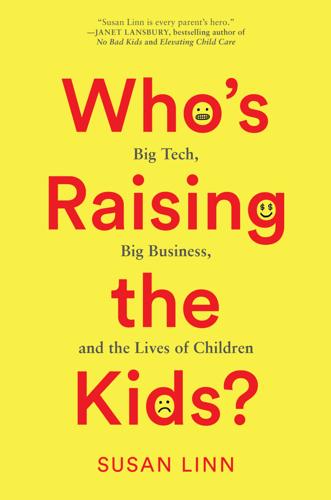
Who’s Raising the Kids?: Big Tech, Big Business, and the Lives of Children
by
Susan Linn
Published 12 Sep 2022
Lulu Garcia-Navara, “Gotta Catch ‘Em All: Pokémon Fans Go Crazy Over New Oreos,” NPR Weekend Edition, September 26, 2021, www.npr.org/2021/09/26/1040756485/gotta-catch-them-all-Pokémon-fans-go-crazy-over-new-oreos. 44. Mohammad Alkilzy et al., “Improving Toothbrushing with a Smart-phone App: Results of a Randomized Controlled Trial,” Caries Research 53, no. 6 (2019): 628–35, doi.org/10.1159/000499868. 45. Fairplay, “CCFC Announces 2013 TOADY Award Nominees for Worst Toy of the Year,” news release, November 21, 2013. CHAPTER 6: THE NAGGING PROBLEM OF PESTER POWER David Sprinkle, “Packaged Facts: 3 Mega Trends Impacting Kids Food Industry,” Cision PR Newswire, March 30, 2016, www.prnewswire.com/news-releases/packaged-facts-3-mega-trends-impacting-kids-food-industry-300242013.html. 1.
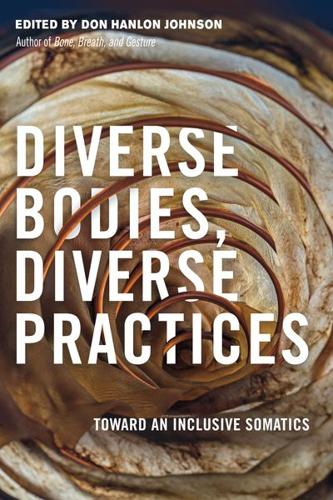
Diverse Bodies, Diverse Practices: Toward an Inclusive Somatics
by
Don Hanlon Johnson
Published 10 Sep 2018
“The Influence of Physical Body Traits and Masculinity on Anal Sex Roles in Gay and Bisexual Men.” Archives of Sexual Behavior, 40(4), 835–41. Mothes, H., Klaperski, S., Seelig, H., Schmidt, S., and Fuchs, R. (2014). “Regular Aerobic Exercise Increases Dispositional Mindfulness in Men: A Randomized Controlled Trial.” Mental Health and Physical Activity. Advance online publication. http://doi.org/10.1016/j.mhpa.2014.02.003. Mustanski, B., Newcomb, M. E., and Garofalo, R. (2011). “Mental Health of Lesbian, Gay, and Bisexual Youths: A Developmental Resiliency Perspective.” Journal of Gay and Lesbian Social Services, 23(2), 204–25.
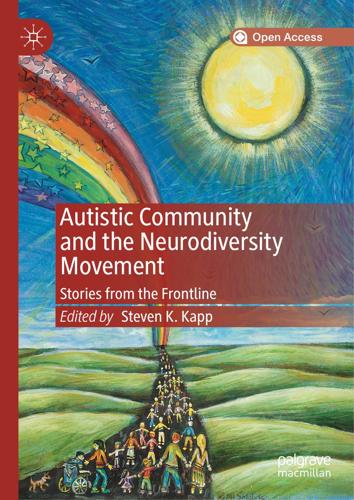
Autistic Community and the Neurodiversity Movement: Stories From the Frontline
by
Steven K. Kapp
Published 19 Nov 2019
Are antipsychotic drugs the right treatment for challenging behaviour in learning disability?: The place of a randomised trial. Journal of Medical Ethics, 27 (5), 338–343. 11. Brylewski, J., & Duggan, L. (1999). Antipsychotic medication for challenging behaviour in people with intellectual disability: A systematic review of randomized controlled trials. Journal of Intellectual Disability Research, 43(5), 360–371. 12. Unwin, G., & Deb, S. (2006). Your guide to taking medicine for behaviour problems: Easy read. University of Birmingham. Retrieved September from https://www.birmingham.ac.uk/Documents/college-les/psych/ld/ LDEasyReadGuide.pdf. 4 Autistic People Against Neuroleptic Abuse 63 13.

Gene Eating: The Science of Obesity and the Truth About Dieting
by
Giles Yeo
Published 3 Jun 2019
Cleanse and detox 1.www.cleanprogram.com/the-program/philosophy Accessed May 6th, 2018. 2.www.juicebaby.co.uk/cleanse/ Accessed May 6th, 2018. 3.rationalwiki.org/wiki/The_dose_makes_the_poison Accessed May 6th, 2018. 4.Isomura, T., Suzuki, S., Origasa, H., Hosono, A., Suzuki, M., Sawada, T., Terao, S., Muto, Y. and Koga, T., ‘Liver-related safety assessment of green tea extracts in humans: a systematic review of randomized controlled trials’. European Journal of Clinical Nutrition 70 (2016), 1221–29. 5.Edenberg, H. J., ‘The genetics of alcohol metabolism: role of alcohol dehydrogenase and aldehyde dehydrogenase variants’. Alcohol Res Health 30 (2007), 5–13. 6.Diehl, A. M. and Day, C., ‘Cause, Pathogenesis, and Treatment of Nonalcoholic Steatohepatitis’.
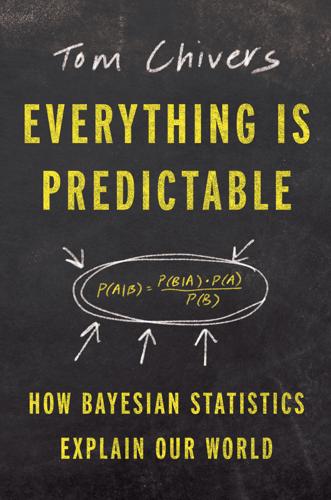
Everything Is Predictable: How Bayesian Statistics Explain Our World
by
Tom Chivers
Published 6 May 2024
Grob et al., “Pilot Study of Psilocybin Treatment for Anxiety in Patients with Advanced-Stage Cancer,” Archives of General Psychiatry 68, no. 1 (2011): 71–78, doi: 10.1001/archgenpsychiatry.2010.116; S. Ross et al., “Rapid and Sustained Symptom Reduction Following Psilocybin Treatment for Anxiety and Depression in Patients with Life-Threatening Cancer: A Randomized Controlled Trial,” Journal of Psychopharmacology 30, no. 12 (2016): 1165–80, doi: 10.1177/0269881116675512; R. R. Griffiths et al., “Psilocybin Produces Substantial and Sustained Decreases in Depression and Anxiety in Patients with Life-Threatening Cancer: A Randomized Double-Blind Trial,” Journal of Psychopharmacology 30, no. 12 (2016): 1181–97, doi: 10.1177/0269881116675513. 34.
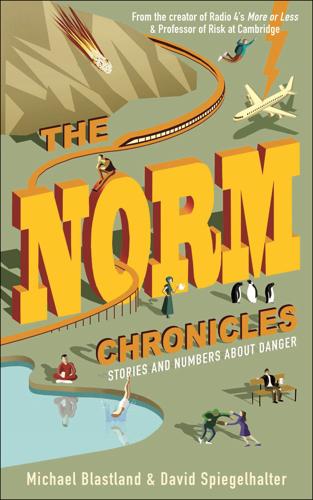
The Norm Chronicles
by
Michael Blastland
Published 14 Oct 2013
Non-Vigorous Physical Activity and All-Cause Mortality: Systematic Review and Meta-Analysis of Cohort Studies. Int.J Epidemiol. 2011 Feb;40(1):121–38. (j) Ray, K.K., Seshasai, S.R.K., Erqou, S., Sever, P., Jukema, J.W., Ford, I., et al. Statins and All-Cause Mortality in High-Risk Primary Prevention: A Meta-Analysis of 11 Randomized Controlled Trials Involving 65,229 Participants. Arch. Intern. Med. 2010 Jun 28;170(12):1024–31. (k) Pope, C.A., Ezzati, M., Dockery, D.W. Fine-Particulate Air Pollution and Life Expectancy in the United States. New England Journal of Medicine. 2009;360(4):376–86. (l) Office for National Statistics. Interim Life Tables, 2008–10.
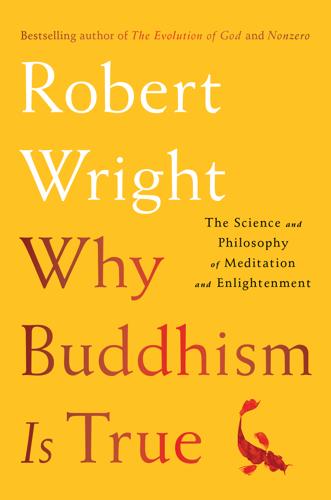
Why Buddhism is True
by
Robert Wright
“Why Is It So Hard to Pay Attention, or Is It? Mindfulness, the Factors of Awakening and Reward-Based Learning.” Mindfulness 4(1): 75–80. Brewer, Judson, Sarah Mallik, Theresa Babuscio, Charla Nich, Hayley Johnson, Cameron Deleone, Candace Minnix-Cotton, et al. 2011. “Mindfulness Training for Smoking Cessation: Results from a Randomized Controlled Trial.” Drug and Alcohol Dependence 119(1/2): 72–80. Brewer, Judson, Patrick Worhunsky, Jeremy Gray, Yi-Yuan Tang, Jochen Weber, and Hedy Kober. 2011. “Meditation Experience Is Associated with Differences in Default Mode Network Activity and Connectivity.” Proceedings of the National Academy of Sciences 108(50): 20254–59.
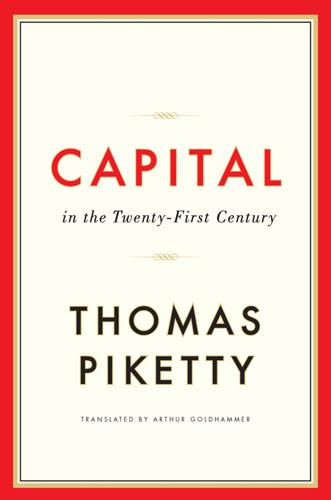
Capital in the Twenty-First Century
by
Thomas Piketty
Published 10 Mar 2014
Hence new experiments, perhaps in the form of randomized controlled trials, may be justified. See, for example, Abhijit Banerjee and Esther Duflo, Poor Economics (New York: Public Affairs, 2012). As a general rule, however, I think that development economics tends to neglect actual historical experience, which, in the context of this discussion, means that too little attention is paid to the difficulty of developing an effective social state with paltry tax revenues. One important difficulty is obviously the colonial past (and therefore randomized controlled trials may offer a more neutral terrain). 50.
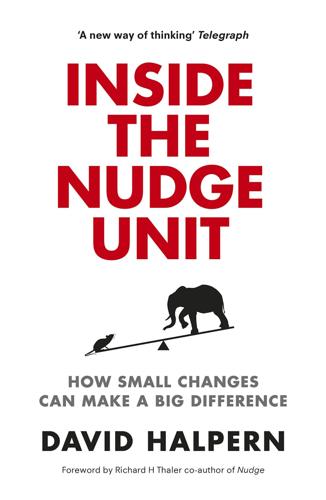
Inside the Nudge Unit: How Small Changes Can Make a Big Difference
by
David Halpern
Published 26 Aug 2015
Chan, T., Narasimhan, C., and Zhang, Q. (2008), ‘Decomposing promotional effects with a dynamic structural model of flexible consumption’, J Mark Res, 45: 487–498. Ni Mhurchu, C., Blakely, T., Jiang, Y., et al. (2010), ‘Effects of price discounts and tailored nutrition education on supermarket purchases: a randomized controlled trial’, Am J Clin Nutr, 91: 736–747. 3 See EAST for a summary of these results in more detail. We also tested adding both the name and the amount. This was slightly more effective than the amount alone, but slightly less effective than the name alone. 4 What’s Psychology Worth? A Field Experiment in the Consumer Credit Market.
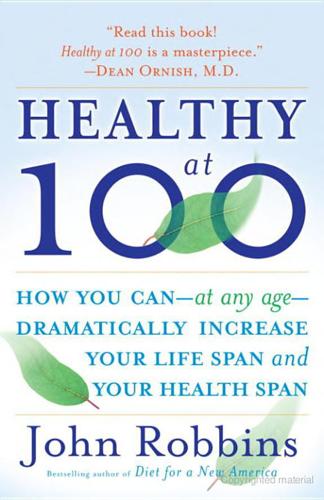
Healthy at 100: The Scientifically Proven Secrets of the World's Healthiest and Longest-Lived Peoples
by
John Robbins
Published 1 Sep 2006
Diabetes Prevention Program Research Group, “Reduction in the incidence of type 2 diabetes with lifestyle intervention or metformin,” New England Journal of Medicine Feb. 7, 2002, 346(6):393–403. 8. A. C. King et al., “Moderate intensity exercise and self-rated quality of sleep in older adults: A randomized controlled trial,” Journal of the American Medical Association 1997, 277(1):32–37. 9. Bradley J. Willcox, D. Craig Willcox, and Makoto Suzuki, The Okinawa Program: Learn the Secrets to Health and Longevity (Three Rivers Press, 2001), p. 180. 10. P. J. Wade, “Canadian Homeowner and Veteran Celebrates 103rd!”
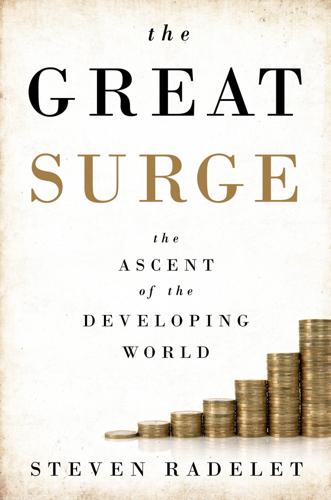
The Great Surge: The Ascent of the Developing World
by
Steven Radelet
Published 10 Nov 2015
They do not help us understand the recent acceleration of development progress or the reasons why so many developing countries began to turn at roughly the same time in the 1990s. The second field of research has been the opposite: microlevel studies on the effectiveness of specific actions and programs in particular contexts, often evaluated through rigorous randomized controlled trials (RCTs).III These studies focus on questions such as the impact of pricing on the uptake of insecticide-treated malaria bed nets, whether identity cards reduce theft and improve the delivery of subsidized rice to the poor, and the impact of shouting at bus drivers to get them to drive more safely.
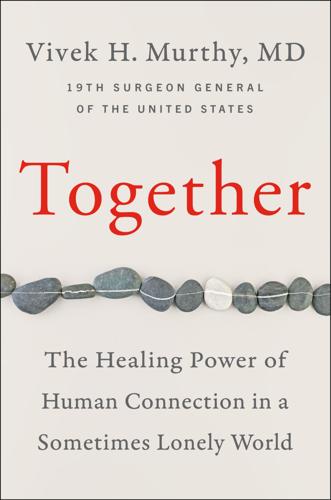
Together
by
Vivek H. Murthy, M.D.
Published 5 Mar 2020
Brackett, “Enhancing Teacher Effectiveness in Spain: A Pilot Study of The RULER Approach to Social and Emotional Learning,” Journal of Education and Training Studies 1, no. 2 (2013), https://doi.org/10.11114/jets.v1i2.203. 15Susan E. Rivers, Marc A. Brackett, Maria R. Reyes, Nicole A. Elbertson, and Peter Salovey, “Improving the Social and Emotional Climate of Classrooms: A Clustered Randomized Controlled Trial Testing the RULER Approach,” Prevention Science 14, no. 1 (November 28, 2012): 77–87, https://doi.org/10.1007/s11121-012-0305-2. 16Maria Regina Reyes, Marc A. Brackett, Susan E. Rivers, Nicole A. Elbertson, and Peter Salovey, “The Interaction Effects of Program Training, Dosage, and Implementation Quality on Targeted Student Outcomes for The RULER Approach to Social and Emotional Learning,” School Psychology Review 41, no. 1 (2012): 82–99, http://ei.yale.edu/wp-content/uploads/2013/08/pub318_Reyesetal2012_SPR.pdf. 17Marc A.

System Error: Where Big Tech Went Wrong and How We Can Reboot
by
Rob Reich
,
Mehran Sahami
and
Jeremy M. Weinstein
Published 6 Sep 2021
The accuracy of a tool is not necessarily correlated with its efficacy in the world because the ultimate decision-making authority in most contexts still rests with human beings. So to understand efficacy, we need to observe how human beings interact with algorithmic predictions. One strategy would be to run some sort of experiment, ideally a randomized controlled trial; for example, identify a set of counties and randomly assign half to make bail decisions via algorithmic predictions (treatment group) and the other half to rely on judges’ decisions (control group). With a sufficient number of counties, you could then track the likelihood that individuals would show up to court and the rate at which defendants commit crimes in the two groups.

Ageless: The New Science of Getting Older Without Getting Old
by
Andrew Steele
Published 24 Dec 2020
Gardner, ‘Caloric restriction decreases survival of aged mice in response to primary influenza infection’, J. Gerontol. A Biol. Sci. Med. Sci. 60, 688–94 (2005). DOI: 10.1093/gerona/60.6.688 ageless.link/vw6q4r … a few participants … stop due to anaemia … Eric Ravussin et al., ‘A 2-year randomized controlled trial of human caloric restriction: Feasibility and effects on predictors of health span and longevity’, J. Gerontol. A Biol. Sci. Med. Sci. 70, 1097–104 (2015). DOI: 10.1093/gerona/glv057 ageless.link/ci3m6v When you eat as well as what you eat … This is a provocative review advocating the benefits of intermittent fasting, and suggesting how to go about it if you want to try: Rafael de Cabo and Mark P.
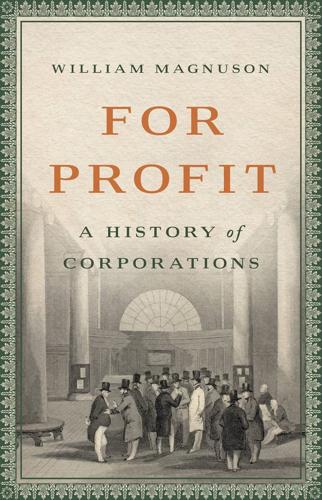
For Profit: A History of Corporations
by
William Magnuson
Published 8 Nov 2022
Everyone at the company had long understood that Facebook now had the tools to directly influence how people communicated, how they acted, and even how they felt. As Facebook grew from a few thousand users to a few billion, the sheer scale of these effects became terrifying to conceive. To answer the question, the Facebook researchers conducted an experiment on the 2010 midterm elections in the United States. The experiment came in the form of a randomized control trial, where the researchers randomly assigned sixty-one million (unknowing) users to different groups and subjected them to differing treatment. The first group, called the “social message” group, was shown a statement at the top of their News Feed encouraging them to vote and showing pictures of other friends who had voted.

The Equality Machine: Harnessing Digital Technology for a Brighter, More Inclusive Future
by
Orly Lobel
Published 17 Oct 2022
Robot Rights,” 571. 9. Jennifer Robertson, “Robo Sapiens Japanicus: Humanoid Robots and the Posthuman Family,” Critical Asian Studies 39, no. 3 (2007): 369–398. 10. Hayley Robinson, Bruce MacDonald, Ngaire Kerse, and Elizabeth Broadbent, “The Psychosocial Effects of a Companion Robot: A Randomized Controlled Trial,” Journal of the American Medical Directors Association 14, no. 9 (September 2013): 661. 11. Cynthia L. Breazeal, Anastasia K. Ostrowski, Nikhita Singh, and Hae Won Park, “Designing Social Robots for Older Adults,” Bridge 49, no. 1 (Spring 2019): 22; Katarzyna Kabacińska, Tony J. Prescott, and Julie M.

User Friendly: How the Hidden Rules of Design Are Changing the Way We Live, Work & Play
by
Cliff Kuang
and
Robert Fabricant
Published 7 Nov 2019
I recently served as a mentor to an organization called Khushi Baby, which has developed a low-cost wearable amulet to store a baby’s unique identifier and capture the baby’s health-care data across multiple events during the early years of life. The product is currently undergoing its first deployment and randomized controlled trial in more than seventy villages in Udaipur, India. The key to its appeal does not come from any technical innovation—all the technologies are remarkably basic—but rather from a novel design mothers can relate to. The approach started with talking to hundreds of mothers in villages and observing children wearing amulets on a black thread to ward off disease.
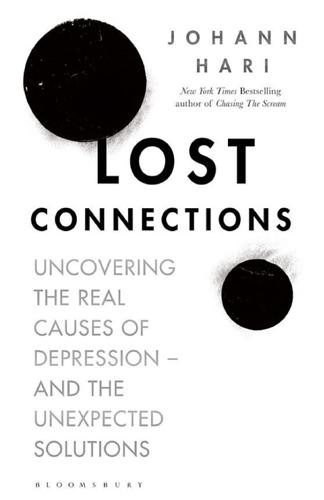
Lost Connections: Uncovering the Real Causes of Depression – and the Unexpected Solutions
by
Johann Hari
Published 1 Jan 2018
This is called “a path model or a structural equation model” and it “goes from extrinsic materialistic values to low need satisfaction, to low levels of well-being.” When we take all these pieces of evidence together, I believe we can draw some fairly robust conclusions—but it is important to state that you simply can’t do a randomized control trial, so this doesn’t meet the very highest bar of evidence. He also pointed to evidence he has gathered that causation also appears to run the other way—depression and insecurity (especially in childhood) seem to trigger more materialism. The causation does not only run in one direction: It runs both ways.
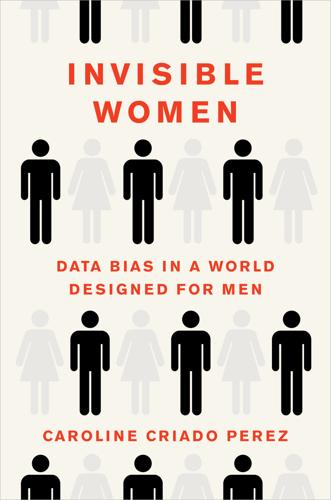
Invisible Women
by
Caroline Criado Perez
Published 12 Mar 2019
ua=1 88 https://www.researchgate.net/blog/post/why-do-we-still-not-know-what-causes-pms 89 https://www.nhs.uk/conditions/erection-problems-erectile-dysfunction/treatment/ 90 https://www.health.harvard.edu/womens-health/treating-premenstrualdysphoric-disorder 91 https://www.researchgate.net/blog/post/why-do-we-still-not-know-what-causes-pms 92 http://grantome.com/grant/NIH/R03-TW007438-02 93 https://qz.com/611774/period-pain-can-be-as-bad-as-a-heart-attack-sowhy-arent-we-researching-how-to-treat-it/ 2016 94 Ibid. 95 http://grantome.com/grant/NIH/R03-TW007438-02 96 Dmitrovic, R., Kunselman, A. R. and Legro, R. S. (2013), ‘Sildenafil citrate in the treatment of pain in primary dysmenorrhea: a randomized controlled trial’, Human Reproduction, 28:11, 2958–65 97 http://edition.cnn.com/2013/03/27/health/viagra-anniversary-timeline/index.html 98 http://www.clevelandclinicmeded.com/medicalpubs/diseasemanagement/endocrinology/erectile-dysfunction/ 99 http://edition.cnn.com/2013/03/27/health/viagra-anniversary-timeline/index.html 100 http://www.telegraph.co.uk/women/life/period-pain-can-feel-bad-heart-attack-ignored/ 101 http://www.who.int/mediacentre/factsheets/fs348/en/ 102 https://www.pri.org/stories/2017–05-05/how-trumps-latest-budget-impacts-women-and-girls-classrooms-cops 103 https://livestream.com/refinerytv/physiology2016/videos/131487028 104 https://www.propublica.org/article/nothing-protects-black-women-from-dying-in-pregnancy-and-childbirth 105 https://edition.cnn.com/2018/02/20/opinions/protect-mother-pregnancy-williams-opinion/index.html 106 https://www.ncbi.nlm.nih.gov/pubmed/26444126 Chapter 12 1 https://www.thetimes.co.uk/article/review-the-growth-delusion-the-wealth-and-wellbeing-of-nations-by-david-pilling-b322223kc 2 https://www.chathamhouse.org/expert/comment/g20-must-push-more-inclusive-gdp 3 https://www.theguardian.com/uk-news/2016/nov/10/doing-the-chores-valued-at-1tn-a-year-in-the-uk 4 http://databank.worldbank.org/data/download/GDP.pdf 5 http://www.oecd.org/dev/development-gender/Unpaid_care_work.pdf 6 http://progress.unwomen.org/en/2015/pdf/UNW_progressreport.pdf 7 https://www.theatlantic.com/business/archive/2016/03/unpaid-caregivers/474894/ 8 https://www.theatlantic.com/business/archive/2016/03/unpaid-caregivers/474894/ 9 http://progress.unwomen.org/en/2015/pdf/UNW_progressreport.pdf 10 http://www.pwc.com.au/australia-in-transition/publications/understanding-the-unpaid-economy-mar17.pdf 11 http://hdr.undp.org/sites/default/files/folbre_hdr_2015_final_0.pdf 12 Ibid. 13 Sánchez de Madariaga, Inés, ‘Mobility of Care: Introducing New Concepts in Urban Transport’, in Marion Roberts and Inés Sánchez de Madariaga (eds.) (2013), Fair Shared Cities: The Impact of Gender Planning in Europe, Farnham 14 http://hdr.undp.org/sites/default/files/folbre_hdr_2015_final_0.pdf 15 http://progress.unwomen.org/en/2015/pdf/UNW_progressreport.pdf 16 In 2011 the OECD’s annual Social Indicators report included a chapter on unpaid work – but no report since has done the same. http://www.oecd-ilibrary.org/docserver/download/8111041e.pdf?

Stolen Focus: Why You Can't Pay Attention--And How to Think Deeply Again
by
Johann Hari
Published 25 Jan 2022
Pollan, In Defense of Food (London: Penguin, 2008), 85–89. GO TO NOTE REFERENCE IN TEXT in 2009 a team of Dutch scientists: L. Pelsser et al., “Effect of a Restricted Elimination Diet on the Behavior of Children with Attention-Deficit Hyperactivity Disorder (INCA Study): A Randomized Controlled Trial,” Lancet 377, no. 9764 (2011): 494–503; and J. K. Ghuman, “Restricted Elimination Diet for ADHD: The INCA Study,” Lancet 377, no. 9764 (2011): 446–48. See also J. Nigg, Getting Ahead of ADHD: What Next-Generation Science Says About Treatments That Work (New York: Guilford Press, 2017), 79–82.
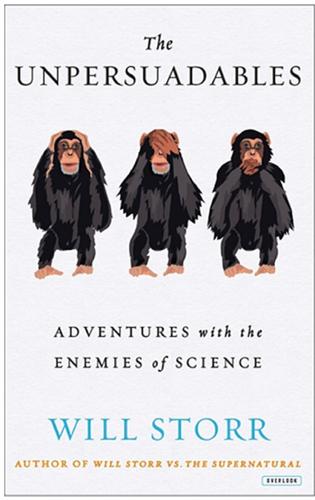
The Unpersuadables: Adventures With the Enemies of Science
by
Will Storr
Published 1 Jan 2013
Kirsch, ‘Mechanisms of Placebo Pain Reduction: An Empirical Investigation’, Psychological Science, May 1996. 42 the unspoken thoughts of your doctor: R. H. Gracely et al., ‘Clinicians’ Expectations Influence Placebo Analgesia’, Lancet, January 1985. 42 when we know that our medication is pharmacologically useless: Ted J. Kaptchuk et al., ‘Placebos without Deception: A Randomized Controlled Trial in Irritable Bowel Syndrome’, PLoS, 22 December 2010. 43 Professor Nicholas Humphrey … writes: ‘The Evolved Self-Management System’, Edge, 12 May 2011. 43 Because it did: Dylan Evans, Placebo, HarperCollins, 2004, pp. 38–41, in particular his analysis of: S. Fisher and R. P. Greenburg, ‘How sound is the double blind design for evaluating psychotropic drugs?’
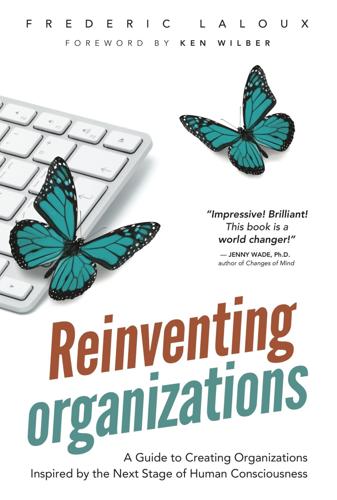
Reinventing Organizations: A Guide to Creating Organizations Inspired by the Next Stage of Human Consciousness
by
Frederic Laloux
and
Ken Wilber
Published 9 Feb 2014
. … ‘Empathy can’t be taught, but it can be caught,’ Gordon often says—and not just by children. ‘Programmatically my biggest surprise was that not only did empathy increase in children, but it increased in their teachers,’ she added. ‘And that, to me, was glorious, because teachers hold such sway over children.’ Scientific studies with randomized control trials have shown extraordinary reductions in ‘proactive aggression’?the deliberate and cold-blooded aggression of bullies who prey on vulnerable kids—as well as ‘relational aggression’?things like gossiping, excluding others, and backstabbing.” David Bornstein, “Fighting Bullying with Babies,” Opinionator, The New York Times, November 8, 2010.

The Patient Will See You Now: The Future of Medicine Is in Your Hands
by
Eric Topol
Published 6 Jan 2015
DiSanzo, “Op/Ed: Hospital of the Future Will Be a Health Delivery Network,” US News & World Report, January 14, 2014, http://health.usnews.com/health-news/hospital-of-tomorrow/articles/2014/01/14/oped-hospital-of-the-future-will-be-a-health-delivery-network. 3. J. Comstock, “Revisiting How Christensen’s ‘Disruption Innovation’ in Healthcare Means Decentralization,” MobiHealthNews, March 26, 2014, http://mobihealthnews.com/31470/revisiting-how-christensens-disruption-innovation-in-healthcare-means-decentralization/. 4. E. Topol et al., “A Randomized Controlled Trial of Hospital Discharge Three Days After Myocardial Infarction in the Era of Reperfusion,” New England Journal of Medicine 318 (1988): 1083–1088. 5. “American Hospital Association Annual Survey of Hospitals,” in Hospital Statistics, 1976, 1981, 1999–2011 editions (Chicago, IL: American Hospital Association). 6.

The Contrarian: Peter Thiel and Silicon Valley's Pursuit of Power
by
Max Chafkin
Published 14 Sep 2021
Keith Rabois, Thiel’s old friend from Stanford, tweeted endlessly about the prophylactic benefits of hydroxychloroquine, even as study after study showed it did not help prevent COVID cases or deaths. Rabois’s response to this was the line that Thiel’s FDA nominees had used: He blamed the bureaucracy of drug trials. “Randomized control trials are horrible ideas,” he tweeted. When Weinberg, the Roche executive, argued with him, Rabois shot back, “Obviously someone is jealous of my success.” Musk used his platform to minimize the severity of the disease, to tout hydroxychloroquine, and to call for a complete reopening of the economy—which he was particularly interested in because Tesla was facing a substantial order backlog.

Doppelganger: A Trip Into the Mirror World
by
Naomi Klein
Published 11 Sep 2023
He has an endgame, and what was becoming clear to me was that, within it, my doppelganger had an absolutely critical role to play. 7 MAGA’S PLUS-ONE When I was a kid, I learned more than I probably should have about the nitty-gritty of giving birth. My father, Michael Klein, was a family doctor and pediatrician, and, in addition to delivering hundreds of babies, he worked as a research scientist at McGill University, where he ran large randomized control trials across Montreal’s hospitals. The studies measured the impact of various kinds of interventions on health outcomes for mothers and babies—inductions, epidurals, forceps, episiotomies, cesareans. When data came in that was particularly striking, he could not keep the results to himself, which meant that I knew about postnatal incontinence and vaginal tearing before I hit puberty—and very much wished that I did not.

The Food Revolution: How Your Diet Can Help Save Your Life and Our World
by
John Robbins
Published 14 Sep 2010
Dietary intake of total, animal, and vegetable protein and risk of type 2 diabetes in the European Prospective Investigation into Cancer and Nutrition (EPIC)-NL study. Diabetes Care. 2010; 33:43-48. xiv. Shu XO, Zheng Y, Cai H, et al. Soy food intake and breast cancer survival. JAMA. 2009;302:2437-2443. xv. Beezhold BL, Johnston CS, Daigle DR. Restriction of flesh foods in omnivores improves mood: a pilot randomized controlled trial. Poster presented at: American Public Health Association's 137th Annual Meeting and Exposition; November 9, 2009: Philadelphia, PA. xvi. Brekke HK, Ludvigsson J. Daily vegetable intake during pregnancy negatively associated to islet autoimmunity in the offspring-The ABIS study. Pediatr Diabetes.
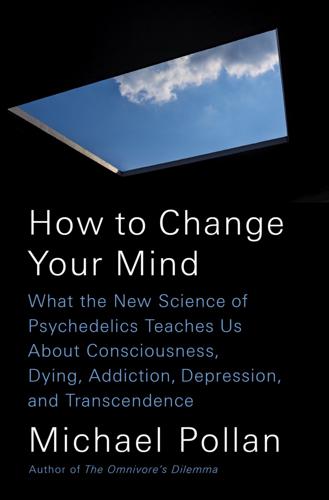
How to Change Your Mind: What the New Science of Psychedelics Teaches Us About Consciousness, Dying, Addiction, Depression, and Transcendence
by
Michael Pollan
Published 30 Apr 2018
“Commentary On: Psilocybin Can Occasion Mystical-Type Experiences Having Substantial and Sustained Personal Meaning and Spiritual Significance.” Psychopharmacology 187 (2006): 291–92. Krebs, Teri S., and Pål-Ørjan Johansen. “Lysergic Acid Diethylamide (LSD) for Alcoholism: Meta-analysis of Randomized Controlled Trials.” Journal of Psychopharmacology 26, no. 7 (2012): 994–1002. doi:10.1177/0269881112439253. Kupferschmidt, Kai. “High Hopes.” Science 345, no. 6192 (2014). Langlitz, Nicolas. Neuropsychedelia: The Revival of Hallucinogen Research Since the Decade of the Brain. Berkeley: University of California Press, 2013.

The Matter of the Heart: A History of the Heart in Eleven Operations
by
Thomas Morris
Published 31 May 2017
Lazar, ‘Should off-pump coronary artery bypass grafting be abandoned?’ Circulation 128, no. 4 (2013), 406–13 92. A. C. Deppe et al., ‘Current evidence of coronary artery bypass grafting off-pump versus on-pump: a systematic review with meta-analysis of over 16,900 patients investigated in randomized controlled trials’, European Journal of Cardio-Thoracic Surgery 49, no. 4 (2016), 1031–41 93. ‘Interview with René G. Favaloro’, in Stoney (ed.), op. cit., 367 94. ‘La última carta de Favaloro antes de morir: René Favaloro, Fernando de la Rúa, Cristina Kirchner – Infobae’, cited 10 April 2016: http://infobae.com/2013/10/09/1514794-la-ultima-carta-favaloro-antes-morir 8.

Lifespan: Why We Age—and Why We Don't Have To
by
David A. Sinclair
and
Matthew D. Laplante
Published 9 Sep 2019
Sui, et al., “Longitudinal Algorithms to Estimate Cardiorespiratory Fitness: Associations with Nonfatal Cardiovascular Disease and Disease-Specific Mortality,” Journal of the American College of Cardiology 63, no. 21 (June 3, 2014): 2289–96, https://www.sciencedirect.com/science/article/pii/S0735109714016301?via%3Dihub. 35. T. S. Church, C. P. Earnest, J. S. Skinner, and S. N. Blair, “Effects of Different Doses of Physical Activity on Cardiorespiratory Fitness Among Sedentary, Overweight or Obese Postmenopausal Women with Elevated Blood Pressure: A Randomized Controlled Trial,” Journal of the American Medical Association 297, no. 19 (May 16, 2007): 2081–91, https://jamanetwork.com/journals/jama/fullarticle/1108370. 36. M. M. Robinson, S. Dasari, A. R. Konopka, et al., “Enhanced Protein Translation Underlies Improved Metabolic and Physical Adaptations to Different Exercise Training Modes in Young and Old Humans,” Cell Metabolism 25, no. 3 (March 7, 2017): 581–92, https://www.cell.com/cell-metabolism/comments/S1550-4131(17)30099-2. 37.
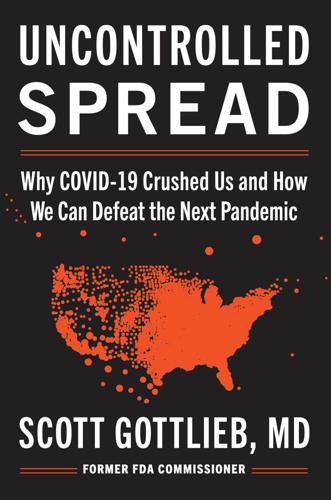
Uncontrolled Spread: Why COVID-19 Crushed Us and How We Can Defeat the Next Pandemic
by
Scott Gottlieb
Published 20 Sep 2021
Weinreich et al., “REGN-COV2, a Neutralizing Antibody Cocktail, in Outpatients with Covid-19,” New England Journal of Medicine 384, no. 3 (2020): 238–51; and Peter Chen et al., “SARS-CoV-2 Neutralizing Antibody LY-CoV555 in Outpatients with Covid-19,” New England Journal of Medicine 384, no. 3 (2020): 229–37. 10.Maggie Haberman (@MaggieNYT), “Potus doctor note on his treatment > [Sean Conley Statement],” Twitter, October 2, 2020, 4:15 p.m. 11.Yasmeen Abutaleb and Damian Paletta, Nightmare Scenario: Inside the Trump Administration’s Response to the Pandemic That Changed History (New York: HarperCollins, 2021). 12.Weiland et al., “Trump Was Sicker than Acknowledged with Covid-19.” 13.Kayleigh McEnany 45 Archived (@PressSec45), “A Wednesday update from President @realDonaldTrump’s physician: [Sean Conley Statement],” Twitter, October 7, 2020, 12:51 p.m. 14.Ritu Pasrijaa and Mohammad Naimeb, “The Deregulated Immune Reaction and Cytokines Release Storm (CRS) in COVID-19 Disease,” International Immunopharmacology 90 (2021). 15.Sonu Bhaskar et al., “Cytokine Storm in COVID-19-Immunopathological Mechanisms, Clinical Considerations, and Therapeutic Approaches: The REPROGRAM Consortium Position Paper,” Frontiers in Immunology 11 (2020): 1648. 16.Siddhartha Mukherjee, “Before Virus, after Virus: A Reckoning,” Cell 183, no. 2 (2020): 308–14. 17.Damian Paletta and Yasmeen Abutaleb, “Inside the Extraordinary Effort to Save Trump from Covid-19,” Washington Post, June 24, 2021; and Alistair Smout, “Regeneron’s Antibody Therapy Cuts Deaths Among some Hospitalised COVID–19 Patients—Study,” Reuters, June 16, 2021. 18.Jim Acosta and Caroline Kelly, “Donald and Melania Trump Received Covid Vaccine at the White House in January,” CNN, March 1, 2021. 19.Carl O’Donnell and Michael Erman, “Eli Lilly’s Combo Therapy for COVID-19 Cuts Serious Illness and Death in Large Study,” Reuters, March 10, 2021. 20.Steve Usdin, “Christie’s COVID-19 Treatment Raises Fairness, Safety Questions,” BioCentury, October 16, 2020. 21.Paul LeBlanc, “Christie Reveals He Spent 7 Days in ICU and Admits He Was ‘Wrong’ to Not Wear a Mask,” CNN, October 16, 2020. 22.Zachary Brennan, “Regeneron’s Covid mAb As a Prophylactic Injection: Reduced Risk of Symptomatic Inection,” Endpoints, April 12, 2021. 23.Sabue Mulangu et al., “A Randomized, Controlled Trial of Ebola Virus Disease Therapeutics,” New England Journal of Medicine 381 (2019): 2293–303. 24.Johanna Hansen et al., “Studies in Humanized Mice and Convalescent Humans Yield a SARS-CoV-2 Antibody Cocktail,” Science 369, no. 6506 (2020): 1010–4. 25.Robert Langreth and Susan Berfield, “Antibody Treatments May Be the Best Hope against the Virus until a Vaccine,” Bloomberg, April 20, 2020. 26.Stacy Lawrence, “Regeneron, BARDA Partner to Develop MERS Virus Treatment,” Fierce Biotech, August 22, 2016; and “Antibody Treatment for MERS Coronavirus Safe in People,” US National Institutes of Health press release, March 2, 2021. 27.George D.
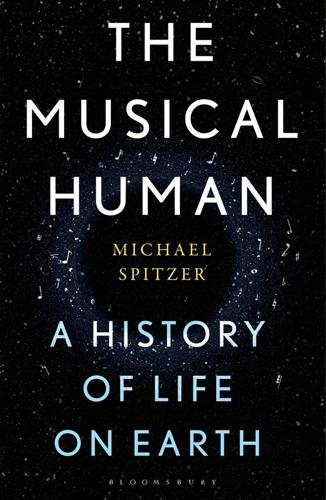
The Musical Human: A History of Life on Earth
by
Michael Spitzer
Published 31 Mar 2021
(Cham: Palgrave Macmillan, 2017), pp. 107–8. 82Arielle Bonneville-Roussy and Jeff Potter, ‘Music through the Ages: Trends in Musical Engagement and Preferences from Adolescence through Middle Adulthood’, Journal of Personality and Social Psychology 105/4 (2013), pp. 703–17 (p. 715). 83Herbert Bruhn, ‘Musical Development of Elderly People’, Psychomusicology 18 (2002), pp. 59–75 (p. 68). 84M. Cooke, W. Shum, D. Harrison and J. E. Murfield, ‘A randomized controlled trial exploring the effect of music on quality of life and depression in older people with dementia’, Journal of Health Psychology 15/5 (2010), pp. 765–76. 85Teppo Särkämö, ‘Music for the ageing brain: Cognitive, emotional, social, and neural benefits of musical leisure activities in stroke and dementia’, Dementia 16/6 (2018), pp. 670–85. 86http://www.livemusicnow.org.uk/ 87Sandra Garrido, ‘Music and dementia: Hitting the right note’, Australian Ageing Agenda (Dec. 2016), pp. 46–7. 88Särkämö, ‘Music for the ageing brain’, p. 677. 89Joseph Straus, Extraordinary Measures: Disability in Music (New York: Oxford University Press, 2011), p. 82. 90Gerhard von Breuning, Memories of Beethoven: From the House of the Black-Robed Spaniards (Cambridge: Cambridge University Press, 1995), p. 98. 91Kinderman, Beethoven, p. 153. 92Amit Dias and Vikram Patel, ‘Closing the treatment gap for dementia in India’, Indian Journal of Psychiatry 51 (2009), pp. 93–7. 93Edward Said, On Late Style: Music and Literature Against the Grain (London: Bloomsbury, 2006); Orientalism: Western Conceptions of the Orient (New York: Pantheon Books, 1978). 94https://www.sputnikmusic.com/review/40918/Buena-Vista-Social- Club-Buena-Vista-Social-Club/ 95Malcolm Gillies, ‘Bartók in America’, in Amanda Bayley (ed.), The Cambridge Companion to Bartók (Cambridge: Cambridge University Press, 2001), pp. 190–201 (p. 197). 96David Cooper, Béla Bartók (New Haven: Yale University Press, 2015), p. 257. 97David Cooper, Bartók: Concerto for Orchestra (Cambridge: Cambridge University Press, 2004), p. 20. 98Donald Maurice, Bartók’s Viola Concerto: The Remarkable Story of his Swansong (New York: Oxford University Press, 2004), p. 27. 99Gillies, ‘Bartók in America’, p. 195. 100http://seenandheard-international.com/2017/09/alain-altinoglus- auspicious-debut-with-the-berliner-philharmoniker/ Chapter 3 1The Sound of the Next Generation: A Comprehensive Review of Children and Young People’s Relationship with Music, https://www.youthmusic.org.uk/sound-of-the-next-generation 2Cited in Andy Hamilton, Aesthetics and Music (London: Continuum, 2008), p. 11. 3Cited in Marek Korczynski, Michael Pickering and Emma Robertson, Rhythms of Labour: Music at Work in Britain (Cambridge: Cambridge University Press, 2013), p. 115. 4Ibid., p. 116. 5Ibid., p. 117. 6Ibid., p. 78. 7Mary-Ann Constantine and Gerald Porter, Fragments and Meaning in Traditional Song: From the Blues to the Baltic (Oxford: Oxford University Press, 2003), p. 150. 8Marek Korczynski, Songs of the Factory: Pop, Music, Culture, & Resistance (Ithaca: ILR Press, 2014), p. 28. 9Mark Smith, Listening to Nineteenth-century America (Chapel Hill: The University of North Carolina Press, 2001). 10Ibid., p. 23. 11Cited in Peter van der Merwe, Origins of the Popular Style: The Antecedents of Twentieth-Century Popular Music (Oxford: Clarendon Press, 1992), p. 69. 12Korczynski, Songs of the Factory, p. 28. 13Stan Hugill, Shanties from the Seven Seas (Stonington, Connecticut: Mystic Seaport, 1961), p. 1. 14Nicola Dibben and Anneli Haake, ‘Music and the construction of space in office-based work settings’, in Georgina Born (ed.), Music, Sound and Space (Cambridge: Cambridge University Press, 2013), pp. 151–68. 15Tia DeNora, Music in Everyday Life (Cambridge: Cambridge University Press, 2000), p. 46. 16Adam Krims, Music and Urban Geography (London: Routledge, 2007), pp. 127–62. 17DeNora, Music in Everyday Life, p. 118. 18https://www.theguardian.com/technology/2015/feb/13/spotify-knows- what-music-youre-having-sex-to 19https://moz.com/blog/google-told-me-im-pregnant-from-strings-to-diagnosis 20John Sloboda, Exploring the Musical Mind: Cognition, Emotion, Ability, Function (Oxford: Oxford University Press, 2005), p. 348. 21http://www.classicfm.com/discover-music/mood/relaxing/ 22Krims, Music and Urban Geography, p. 144. 23https://www.visitliverpool.com/information/product-catch-all/bold-street-p16794 24Michael Bull, Sound Moves: iPod Culture and Urban Experience (London: Routledge, 2008), p. 6. 25Brandon LaBelle, Acoustic Territories: Sound Culture and Everyday Life (London: Bloomsbury, 2014), p. 99. 26Krims, Music and Urban Geography, p. 80. 27Ibid., pp. 1–3. 28DeNora, Music in Everyday Life, p. 136. 29Ibid., p. 137. 30Adrian North and David Hargreaves, The Social and Applied Psychology of Music (New York: Oxford University Press, 2008), p. 280. 31LaBelle, Acoustic Territories, p. 174. 32Sara Cohen, Decline, Renewal and the City in Popular Music Culture: Beyond the Beatles (Aldershot: Ashgate, 2007), pp. 56–62. 33Michael Brocken, Other Voices: Hidden Histories of Liverpool’s Popular Music Scenes, 1930s–1970s (London: Routledge, 2016), p. 112. 34Hugill, Shanties, p. 53. 35Jeremy Price, ‘ “From Nelly Ray to Maggie May”: Re-enacting the Past on the Streets of Liverpool’, in Logie Barrow and François Poirier (eds), Keeping the Lid on: Urban Eruptions and Social Control since the 19th Century (Newcastle: Cambridge Scholars Publishing, 2010), pp. 77–92. 36https://www.youtube.com/watch?

Artificial Intelligence: A Modern Approach
by
Stuart Russell
and
Peter Norvig
Published 14 Jul 2019
In more technical language, we want a set Z such that Xi is conditionally independent of Parents(Xj) given Xj and Z. This is a straightforward application of d-separation (see page 437). The back-door criterion is a basic building block for a theory of causal reasoning that has emerged in the past two decades. It provides a way to argue against a century of statistical dogma asserting that only a randomized controlled trial can provide causal information. The theory has provided conceptual tools and algorithms for causal analysis in a wide range of non-experimental and quasi-experimental settings; for computing probabilities on counterfactual statements (“if this had happened instead, what would the probability have been?”)
…
The implication of these observations is if loopy BP is both fast and accurate on the very large and very highly connected networks used for decoding, it might therefore be useful more generally. Theoretical support for these findings, including convergence proofs for some special cases, was provided by Weiss (2000b), Weiss and Freeman (2001), and Yedidia et al. (2005), drawing on connections to ideas from statistical physics. Theories of causal inference going beyond randomized controlled trials were proposed by Rubin (1974) and Robins (1986), but these ideas remained both obscure and controversial until Judea Pearl developed and presented a fully articulated theory of causality based on causal networks (Pearl, 2000). Peters et al. (2017) further develop the theory, with an emphasis on learning.
…
D., 1046, 1106 Rajpurkar, P., 931, 1110 Raju, B., 137, 161, 1106 Ramage, D., 1043, 1088 Ramamurthy, K. N., 1046, 1047, 1060, 1061, 1087, 1098 Ramsey, F. P., 28, 427, 548, 1110 Ramsundar, B., 517, 738, 1094, 1110 RAND Corporation, 550, 586 random-restart hill climbing, 131 random forest, 715, 736 randomForest (machine learning software), 716 randomization, 55, 69 randomized controlled trial, 471 randomized weighted majority algorithm, 721 random restart, 252 random search, 690 random variable, 408, 435 basic, 644 continuous, 409, 440, 473 indexed, 666 random walk, 156, 498 range (of a random variable), 408 range finder, 934 laser, 935 range sensor array, 940 Ranzato, M., 837, 1100 Rao, A., 80, 1117 Rao, B., 516, 1099 Rao, D.

Adaptive Markets: Financial Evolution at the Speed of Thought
by
Andrew W. Lo
Published 3 Apr 2017
In a virtuous cycle, Shaw used his profits to fund further research. Newer strategies were built on previous findings and funded the next cycle of innovation, neatly paralleling the modern growth of information technologies. As Shaw explained, “We were taking profit and paying for experimentation. We were able to run randomized controlled trials, for example, in which we could compare two models or parameter values to see which one performed better in actual trading. Analyzing the results of live trading taught us things that couldn’t be learned by studying historical data. We were doing a lot of trading, and the data we accumulated during one round of trading was helping us to increase our returns in the next round.”

How Emotions Are Made: The New Science of the Mind and Brain
by
Lisa Feldman Barrett
Published 6 Mar 2017
Psychosomatic Medicine 72 (4): 365–369. Kiecolt-Glaser, Janice K., Jeanette M. Bennett, Rebecca Andridge, Juan Peng, Charles L. Shapiro, William B. Malarkey, Charles F. Emery, Rachel Layman, Ewa E. Mrozek, and Ronald Glaser. 2014. “Yoga’s Impact on Inflammation, Mood, and Fatigue in Breast Cancer Survivors: A Randomized Controlled Trial.” Journal of Clinical Oncology 32 (10): 1040–1051. Kiecolt-Glaser, Janice K., Lisa Christian, Heather Preston, Carrie R. Houts, William B. Malarkey, Charles F. Emery, and Ronald Glaser. 2010. “Stress, Inflammation, and Yoga Practice.” Psychosomatic Medicine 72 (2): 113–134. Kiecolt-Glaser, Janice K., Jean-Philippe Gouin, Nan-ping Weng, William B.
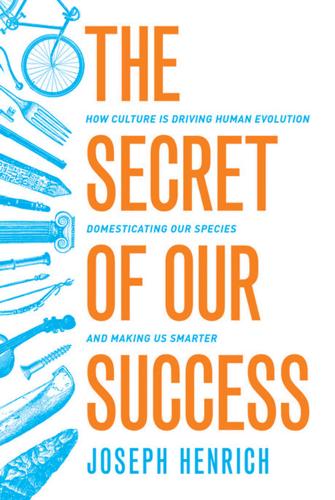
The Secret of Our Success: How Culture Is Driving Human Evolution, Domesticating Our Species, and Making Us Smarter
by
Joseph Henrich
Published 27 Oct 2015
This culturally constructed biological reaction leads to higher rates of certain specific types of violent crimes in the Deep South. It’s a biological difference, but not a genetic difference. Chemically Inert but Biologically Active Placebos open a window on culture and biology. Most people have heard about placebos in the context of testing new medicines. In a randomized control trial, one randomly assigned group gets the drug under testing and the other group gets a sugar pill or other inert substance. Both groups are told they will get either the drug or the placebo (sugar pill) based on a coin flip, but they don’t know which. The common assumption is that this addresses any response bias, which might cause people to inaccurately report getting better or worse based on their opinions about the drug in question.
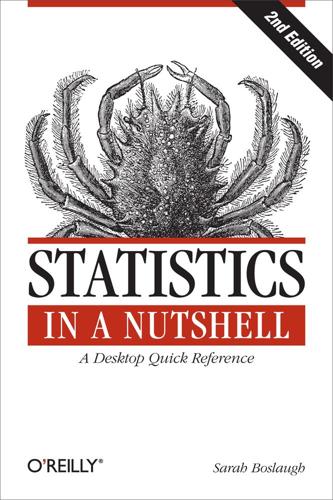
Statistics in a Nutshell
by
Sarah Boslaugh
Published 10 Nov 2012
Practical and ethical considerations also come into play—some research designs can simply be impossible to execute, prohibitively expensive, or considered unethical—and the researcher must be aware of community as well as scientific standards concerning the ethical conduct of research. Basic Vocabulary Research designs can be divided into three types: experimental, quasi-experimental, and observational. For a design to be experimental, subjects must be randomly assigned to groups or categories. The classic experimental design is the randomized controlled trial used in medicine, in which subjects are randomly assigned to experimental and control groups, administered some treatment, and the outcomes collected for both groups. The controlled experiment is considered the strongest type of research design as far as drawing conclusions from the results of research (in fact, some refer to the results from experimental controlled trials as the gold standard of evidence), but it is not always possible or practical to conduct this type of research.
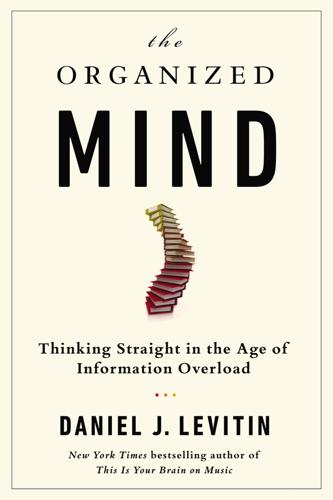
The Organized Mind: Thinking Straight in the Age of Information Overload
by
Daniel J. Levitin
Published 18 Aug 2014
Randall, D. K. (2012). Dreamland: Decoding the science of sleep. New York, NY: W. W. Norton & Company. more effective than the prescription drug Ambien Jacobs, G. D., Pace-Schott, E. F., Stickgold, R., & Otto, M. W. (2004). Cognitive behavior therapy and pharmacotherapy for insomnia: A randomized controlled trial and direct comparison. Archives of Internal Medicine, 164(17), 1888–1896. groggy we were upon waking up Randall, D. K. (2012). Dreamland: Decoding the science of sleep. New York, NY: W. W. Norton & Company. and, Randall, D. K. (2012, August 3). Decoding the science of sleep. The Wall Street Journal.
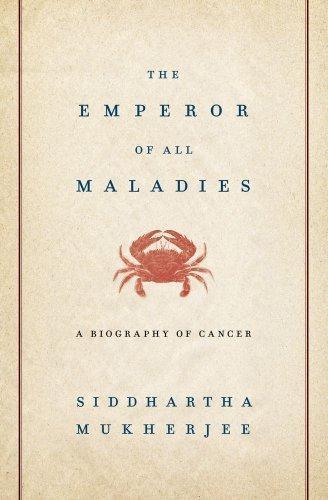
The Emperor of All Maladies: A Biography of Cancer
by
Siddhartha Mukherjee
Published 16 Nov 2010
Cunningham, “The Breast Cancer Detection Demonstration Project 25 Years Later,” CA: A Cancer Journal for Clinicians 47, no. 3 (1997): 131–33. 298 Between 1976 and 1992, enormous parallel trials: See below for particular studies. Also see Madelon Finkel, ed., Understanding the Mammography Controversy (Westport, CT: Praeger, 2005), 101–5. 298 In Canada, meanwhile, researchers lurched: A. B. Miller, G. R. Howe, and C. Wall, “The National Study of Breast Cancer Screening Protocol for a Canadian Randomized Controlled Trial of Screening for Breast Cancer in Women,” Clinical Investigative Medicine 4, nos. 3–4 (1981): 227–58. 298 Edinburgh was a disaster: A. Huggins et al., “Edinburgh Trial of Screening for Breast Cancer: Mortality at Seven Years,” Lancet 335, no. 8684 (1990): 241–46; Denise Donovan et al., “Edinburgh Trial of Screening for Breast Cancer,” Lancet 335, no. 8695 (1990): 968–69. 298 The Canadian trial, meanwhile: Miller, Howe, and Wall, “National Study of Breast Cancer Screening Protocol.” 298 For a critical evaluation of the CNBSS, HIP, and Swedish studies, see David Freedman et al., “On the Efficacy of Screening for Breast Cancer,” International Journal of Epidemiology 33, no. 1 (2004): 43–5. 298 Randomization problems in the Canadian National Breast Screening Study: Curtis J.

The Singularity Is Near: When Humans Transcend Biology
by
Ray Kurzweil
Published 14 Jul 2005
Shah et al., "High-Dose Recombinant Apolipoprotein A-I(Milano) Mobilizes Tissue Cholesterol and Rapidly Reduces Plaque Lipid and Macrophage Content in Apolipoprotein e-Deficient Mice," Circulation 103.25 (June 26, 2001): 3047–50. 39. S. E. Nissen et al., "Effect of Recombinant Apo A-I Milano on Coronary Atherosclerosis in Patients with Acute Coronary Syndromes: A Randomized Controlled Trial," JAMA 290.17 (November 5, 2003): 2292–2300. 40. A recent phase 2 study reported "markedly increased HDL cholesterol levels and also decreased LDL cholesterol levels," M. E. Brousseau et al., "Effects of an Inhibitor of Cholesteryl Ester Transfer Protein on HDL Cholesterol," New England Journal of Medicine 350.15 (April 8, 2004): 1505–15, http://content.nejm.org/cgi/content/abstract/350/15/1505.
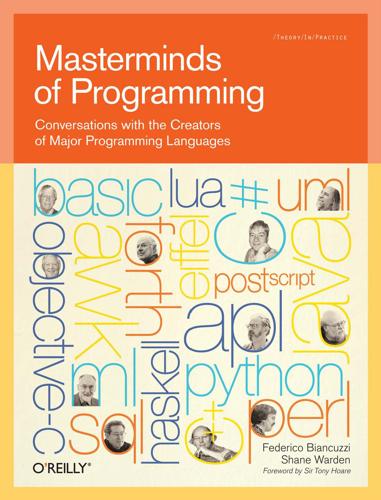
Masterminds of Programming: Conversations With the Creators of Major Programming Languages
by
Federico Biancuzzi
and
Shane Warden
Published 21 Mar 2009
Any single-assignment language is easier to reason about, but that doesn’t make the programs easier to write, nor is there persuasive evidence that programs are easier to write. In fact, most comparative questions about languages, coding techniques, development methodologies, and software engineering in general, are appallingly unscientific. Here’s a quote from R. Bausell’s Snake Oil Science [Oxford University Press]: Carefully controlled research (such as randomized, controlled trials) involving numerical data has proved more dependable for showing us what works and what does not than has reliance upon expert opinions, experience, hunches, or the teachings of those we revere. Software is still a craft, rather like furniture making. There are Chippendales, there are craftsmen, and there are lesser practitioners.
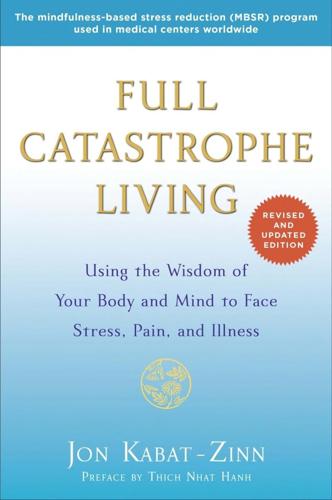
Full Catastrophe Living (Revised Edition): Using the Wisdom of Your Body and Mind to Face Stress, Pain, and Illness
by
Jon Kabat-Zinn
Published 23 Sep 2013
Alterations in brain and immune function produced by mindfulness meditation, Psychosomatic Medicine. 2003;65:564–570. f Creswell JD, Irwin MR, Burklund LJ, Lieberman MD, Arevalo JMG, Ma J, Breen EC, Cole SW. Mindfulness-Based Stress Reduction training reduces loneliness and pro-inflammatory gene expression in older adults: A small randomized controlled trial. Brain, Behavior, and Immunity. 2012;26:1095–1101. INTRODUCTION Stress, Pain, and Illness: Facing the Full Catastrophe This book is an invitation to the reader to embark upon a journey of self-development, self-discovery, learning, and healing. It is based on thirty-four years of clinical experience with more than twenty thousand people who have begun this lifelong journey via their participation in an eight-week course known as Mindfulness-Based Stress Reduction (MBSR) offered through the Stress Reduction Clinic at the University of Massachusetts Medical Center in Worcester, Massachusetts.

On the Edge: The Art of Risking Everything
by
Nate Silver
Published 12 Aug 2024
Skinner, the devices that are used to condition rats or other small animals—press the lever, and you’ll get a tiny sliver of cheese. Traditionally, these strategies might be arrived at by trial and error. But as River attitudes are taking over, gambling companies are becoming more sophisticated about optimizing them; at Caesars, Loveman even had a slot analytics team that would run randomized control trials. But that makes slot machines sound more miserable than they are. In fact, modern slot machines are immersive—they’re a lot of fun. They are full of mini-games, sounds, and animations—howling wolves or stampeding buffalo or a virtual Vanna White telling you to spin the Wheel of Fortune.

Enlightenment Now: The Case for Reason, Science, Humanism, and Progress
by
Steven Pinker
Published 13 Feb 2018
Meehl’s work inspired Tversky and Kahneman’s discoveries on cognitive biases and Tetlock’s forecasting tournaments, and his conclusion about the superiority of statistical to intuitive judgment is now recognized as one of the most robust findings in the history of psychology.47 Like all good things, data are not a panacea, a silver bullet, a magic bullet, or a one-size-fits-all solution. All the money in the world could not pay for randomized controlled trials to settle every question that occurs to us. Human beings will always be in the loop to decide which data to gather and how to analyze and interpret them. The first attempts to quantify a concept are always crude, and even the best ones allow probabilistic rather than perfect understanding.
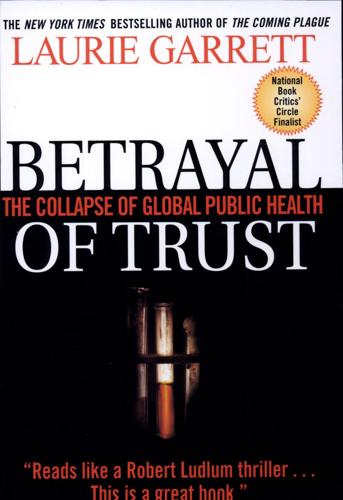
Betrayal of Trust: The Collapse of Global Public Health
by
Laurie Garrett
Published 15 Feb 2000
J., Mocroft, A., Ledergerber, B., et al., “Discontinuation of Pneumocystis carinii pneumonia prophylaxis after start of highly active antiretroviral therapy in HIV-1 infection.” Lancet 353 (1999): 1293–1298. 731. Condra, J. H., “Resisting resistance: Maximizing the durability of antiretroviral therapy.” Annals of Internal Medicine 128 (1998): 951–954; Durant, J., Clevenbergh, P., Halfon, P., et al., “Drug-resistance genotyping in HIV-1 therapy: The VIRADAPT randomized controlled trial.” Lancet 353 (1999): 2195–2199; Hirsch, M. S., Conway, B., D’Aguilla, R. T., et al., “Antiretroviral drug resistance testing in adults with HIV infection.” Journal of the American Medical Association 279 (1998): 1984–1991; Kalb, D., “Now, a scary strain of drug-resistant HIV.” Newsweek (July 13, 1998): 63; Levy, J.
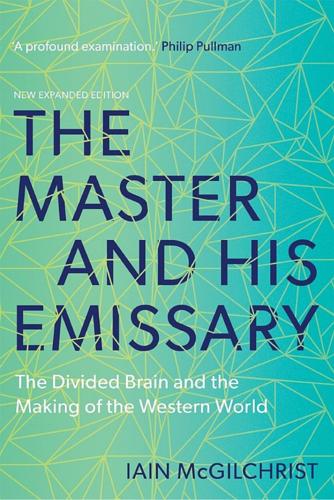
The Master and His Emissary: The Divided Brain and the Making of the Western World
by
Iain McGilchrist
Published 8 Oct 2012
M., Botvinick, M. et al., ‘Parsing executive processes: strategic vs. evaluative functions of the anterior cingulate cortex’, Proceedings of the National Academy of Sciences of the USA, 2000, 97(4), pp. 1944–8 Cassileth, B. R., Vickers, A. J. & Magill, L. A., ‘Music therapy for mood disturbance during hospitalization for autologous stem cell transplantation: a randomized controlled trial’, Cancer, 2003, 98(12), pp. 2723–9 Cassirer, E., An Essay on Man, Yale University Press, New Haven CT, 1948 ——, The Problem of Knowledge, trans. W. H. Woglom & C. W. Hendel, Yale University Press, New Haven CT, 1950 Castle, T., The Female Thermometer: Eighteenth-Century Culture and the Invention of the Uncanny, Oxford University Press, Oxford, 1995 Cavanna, A.